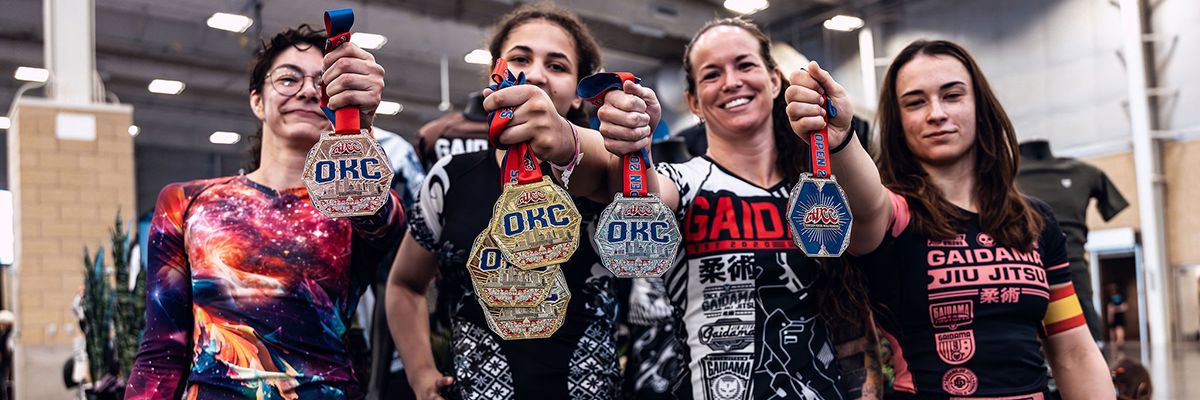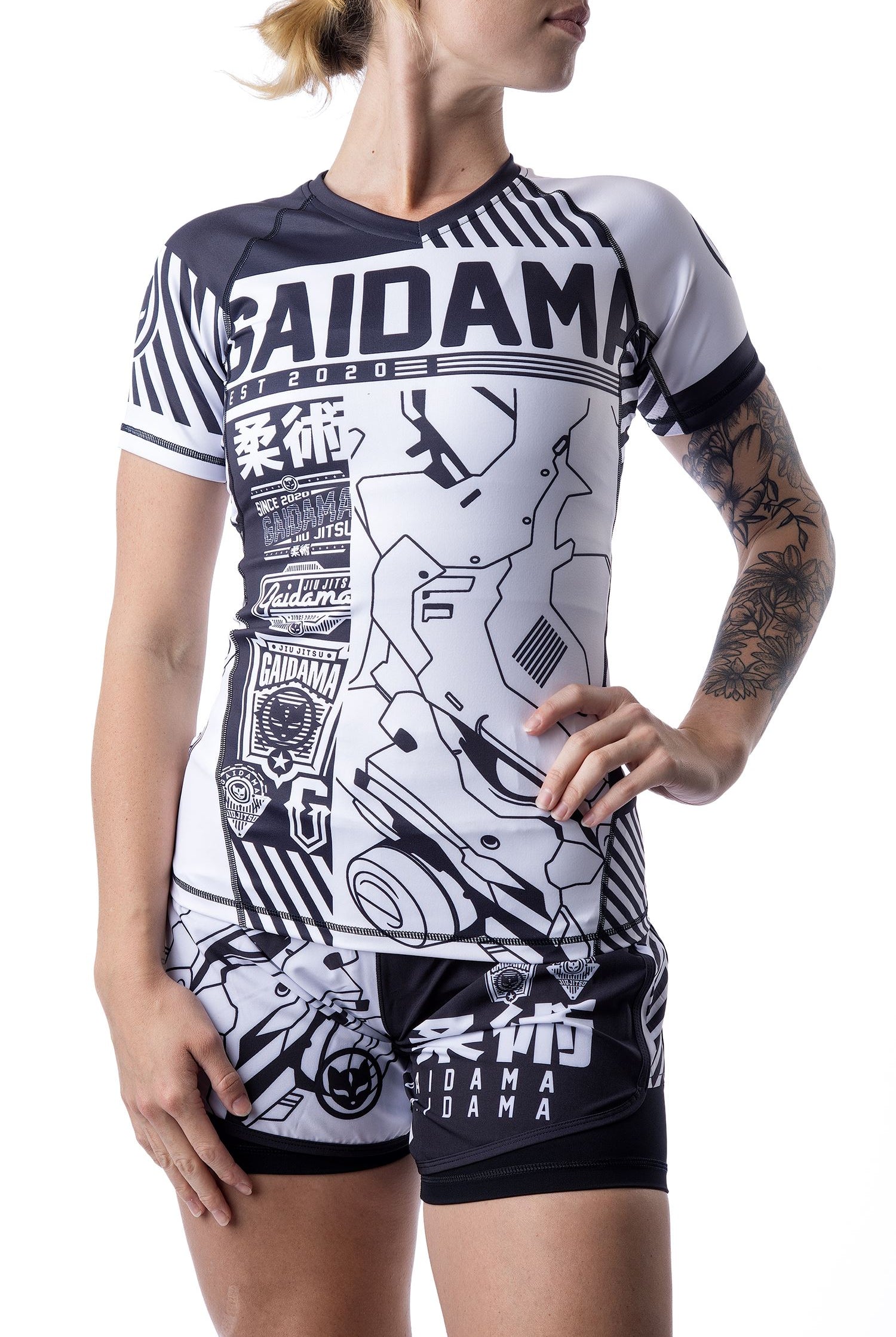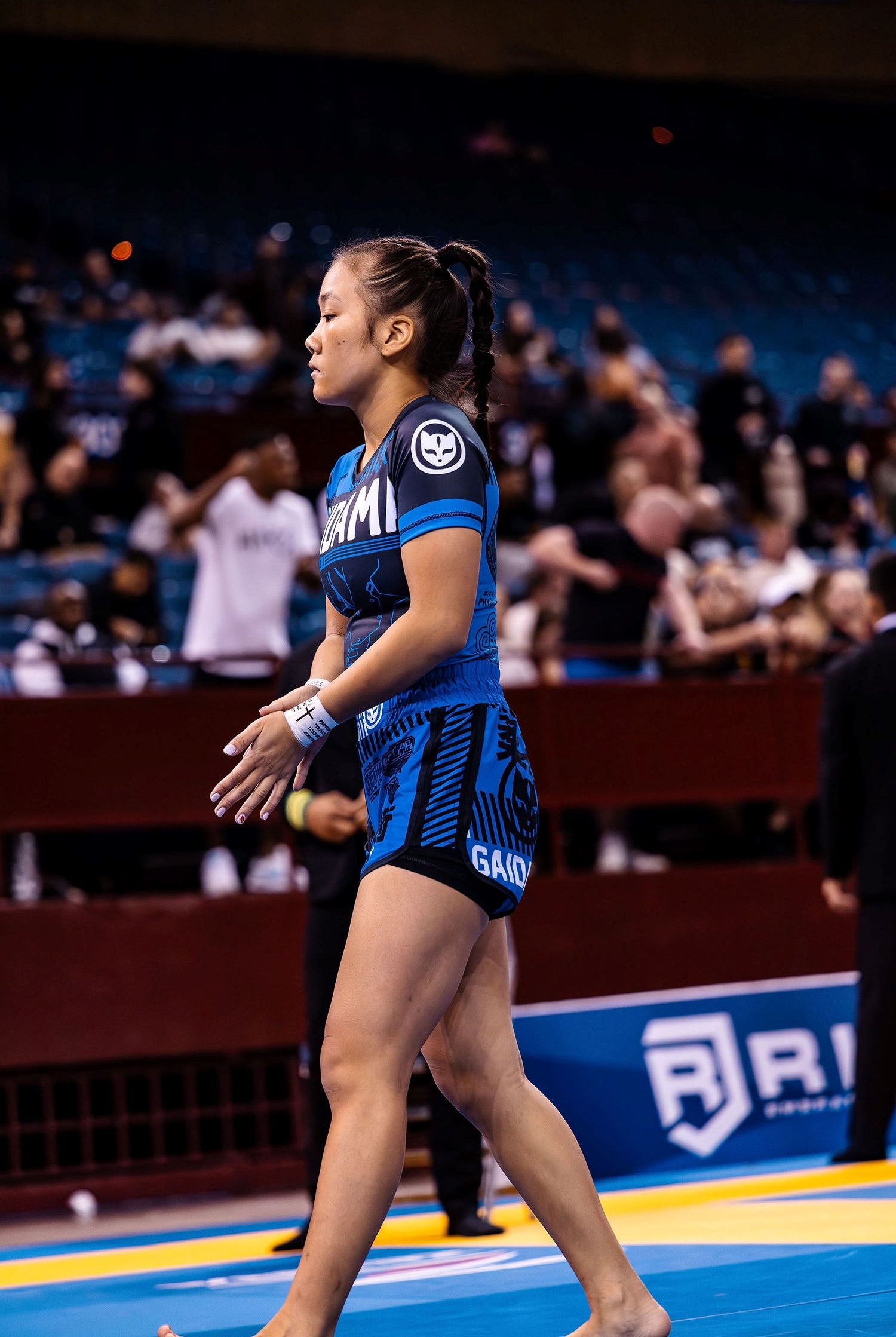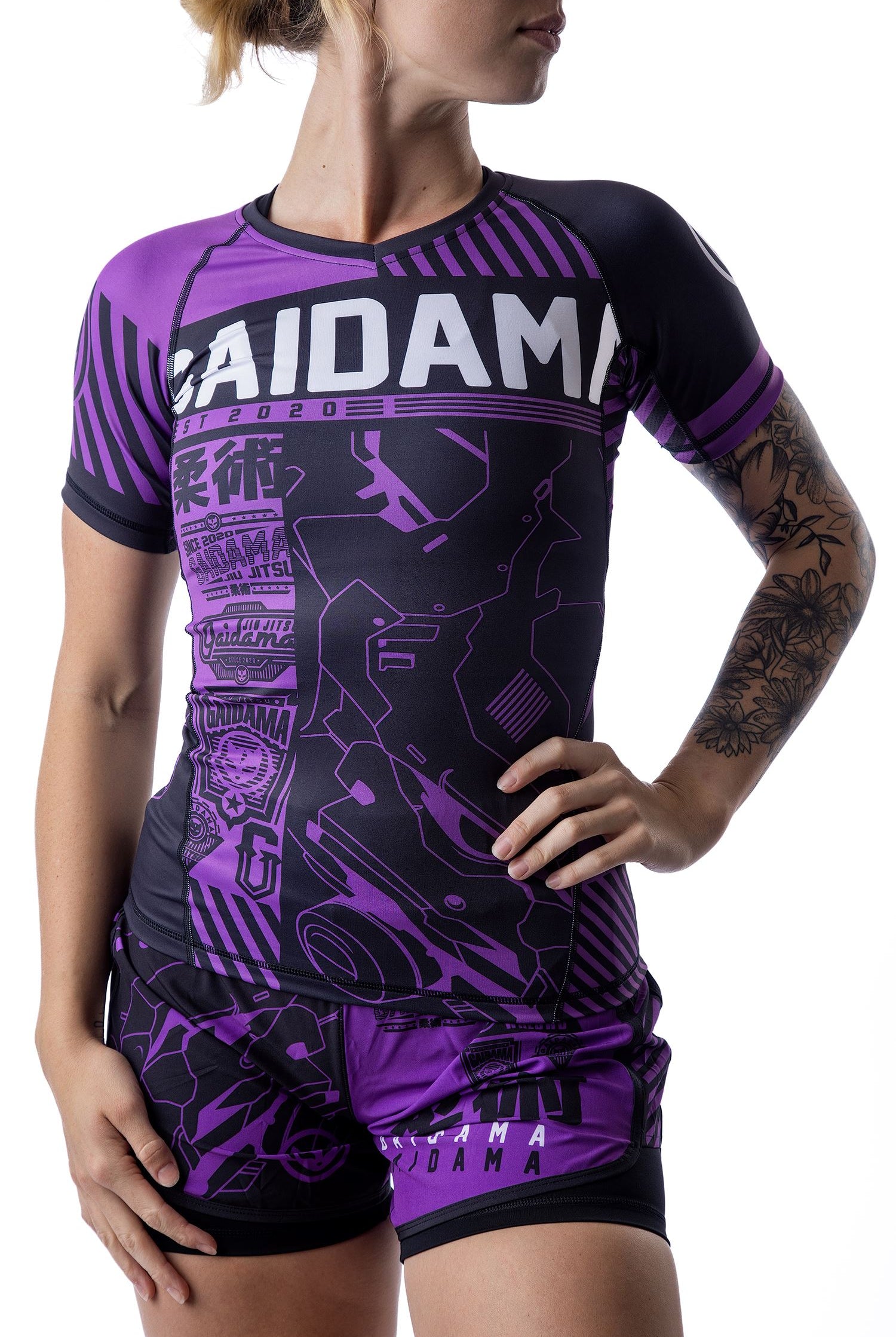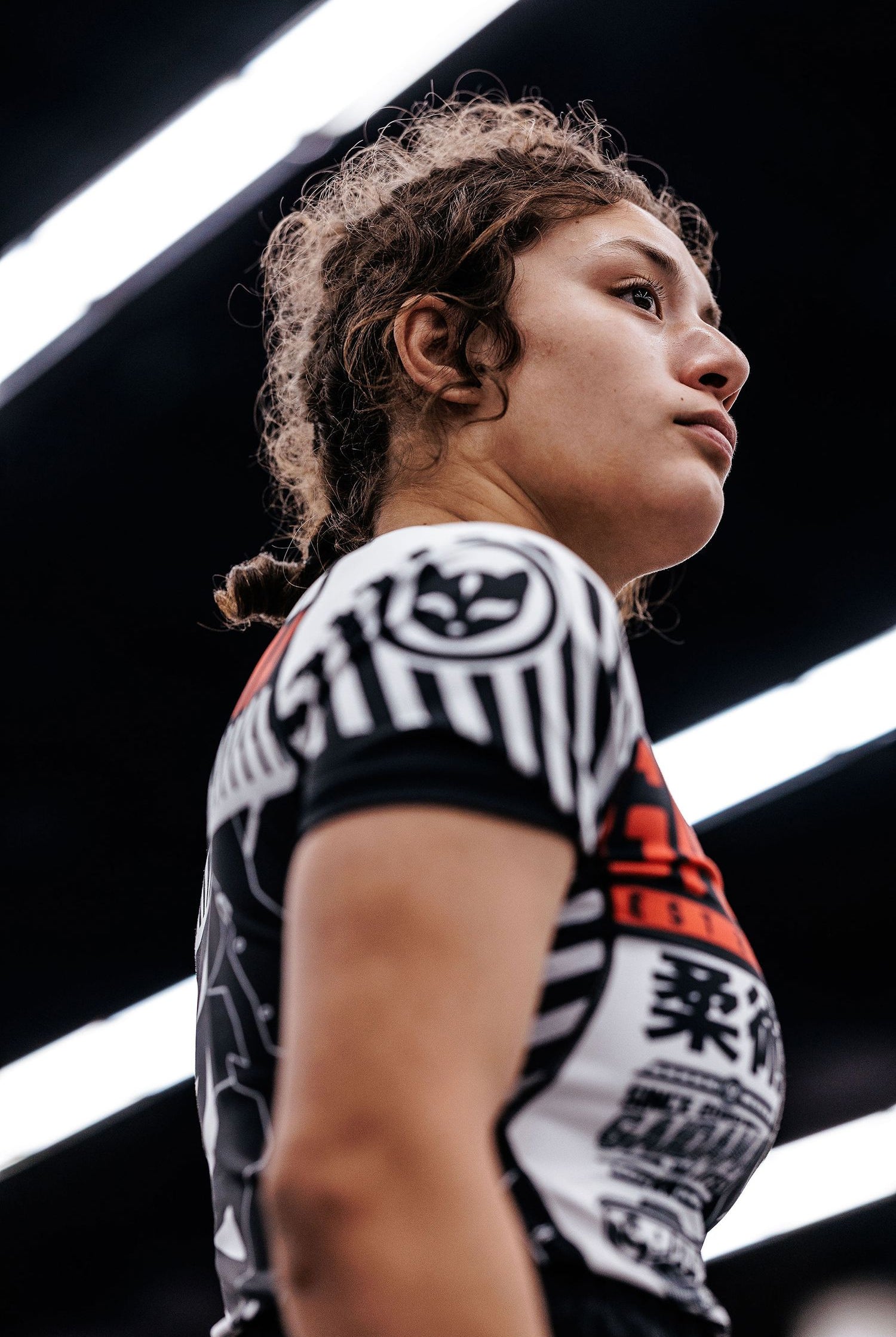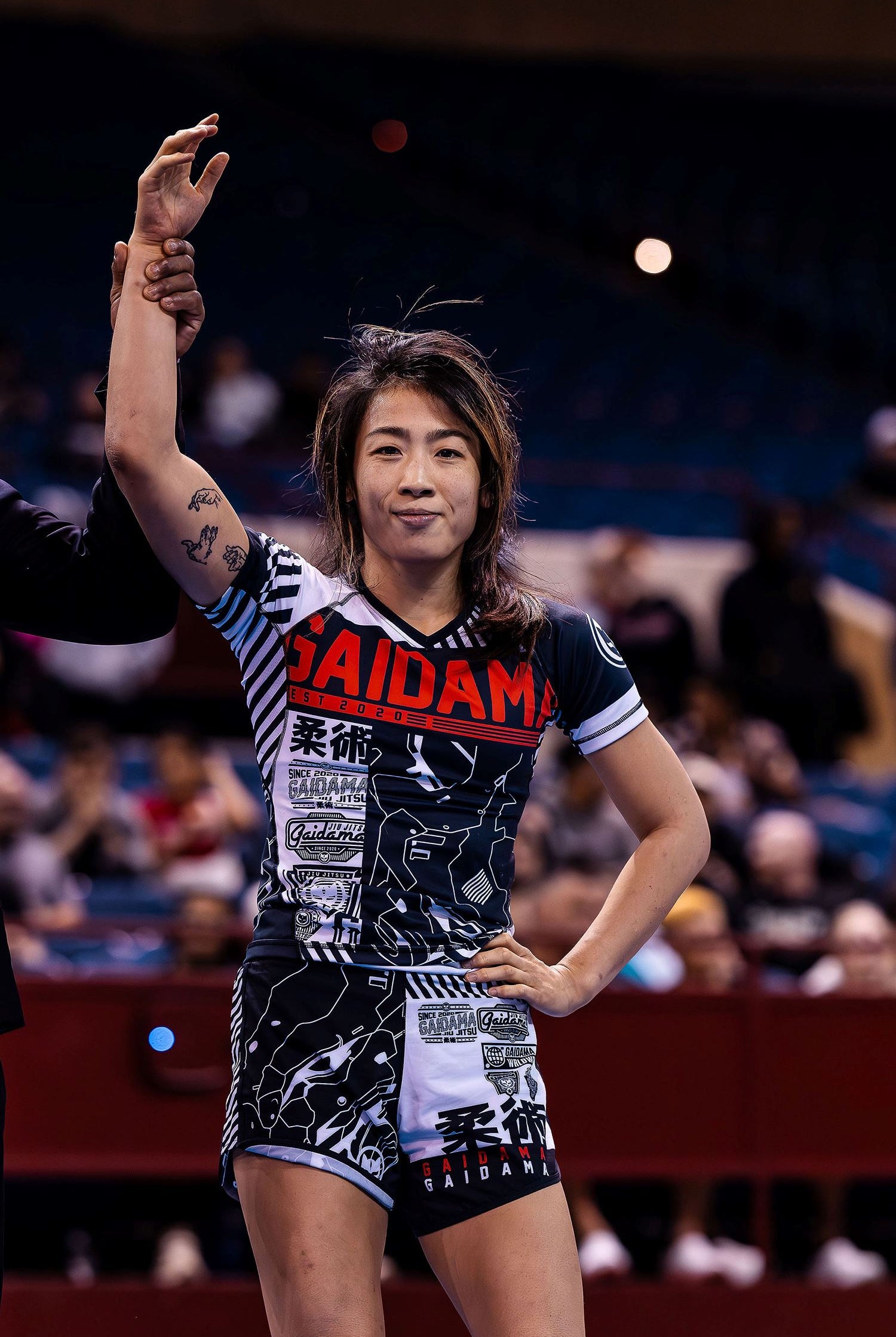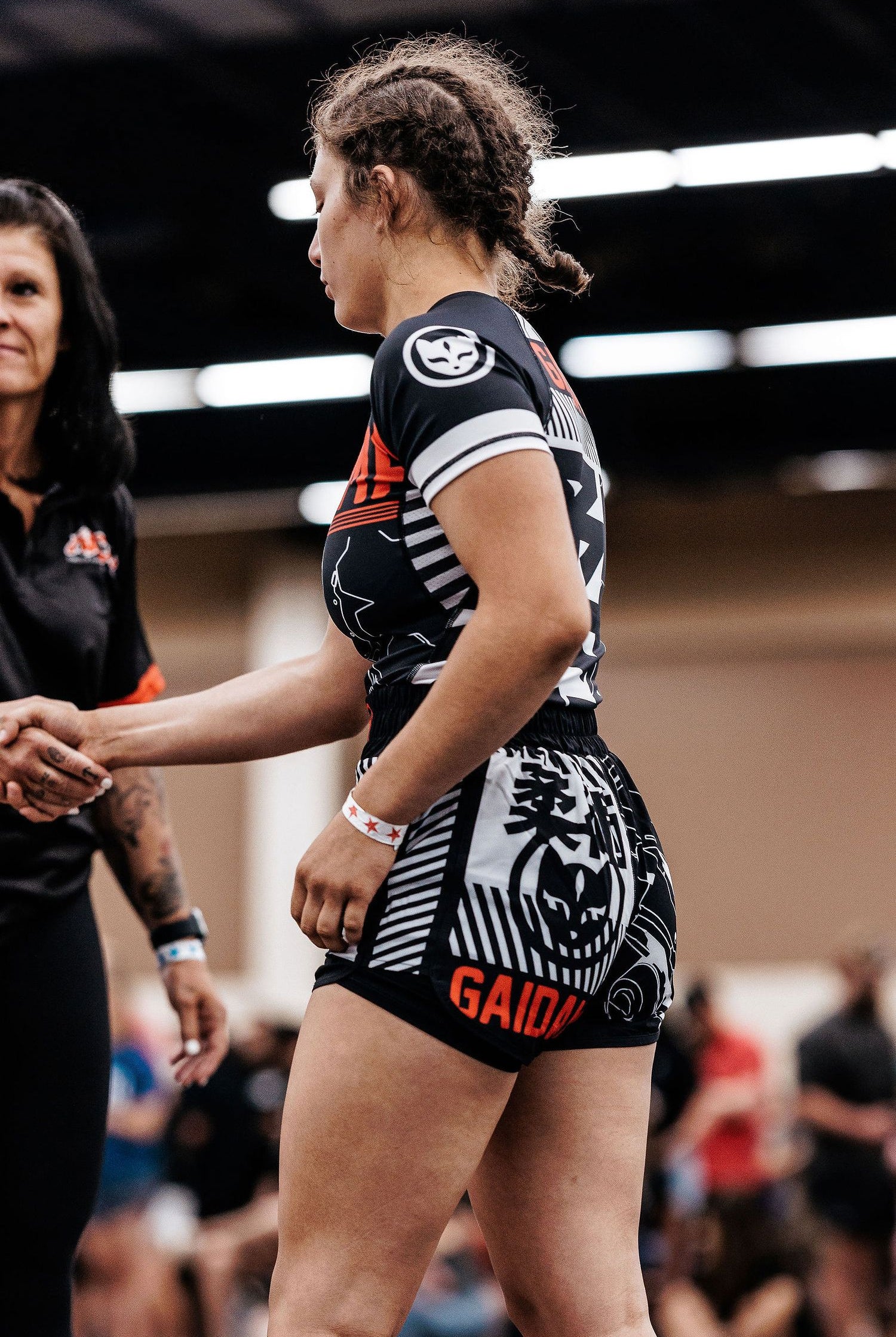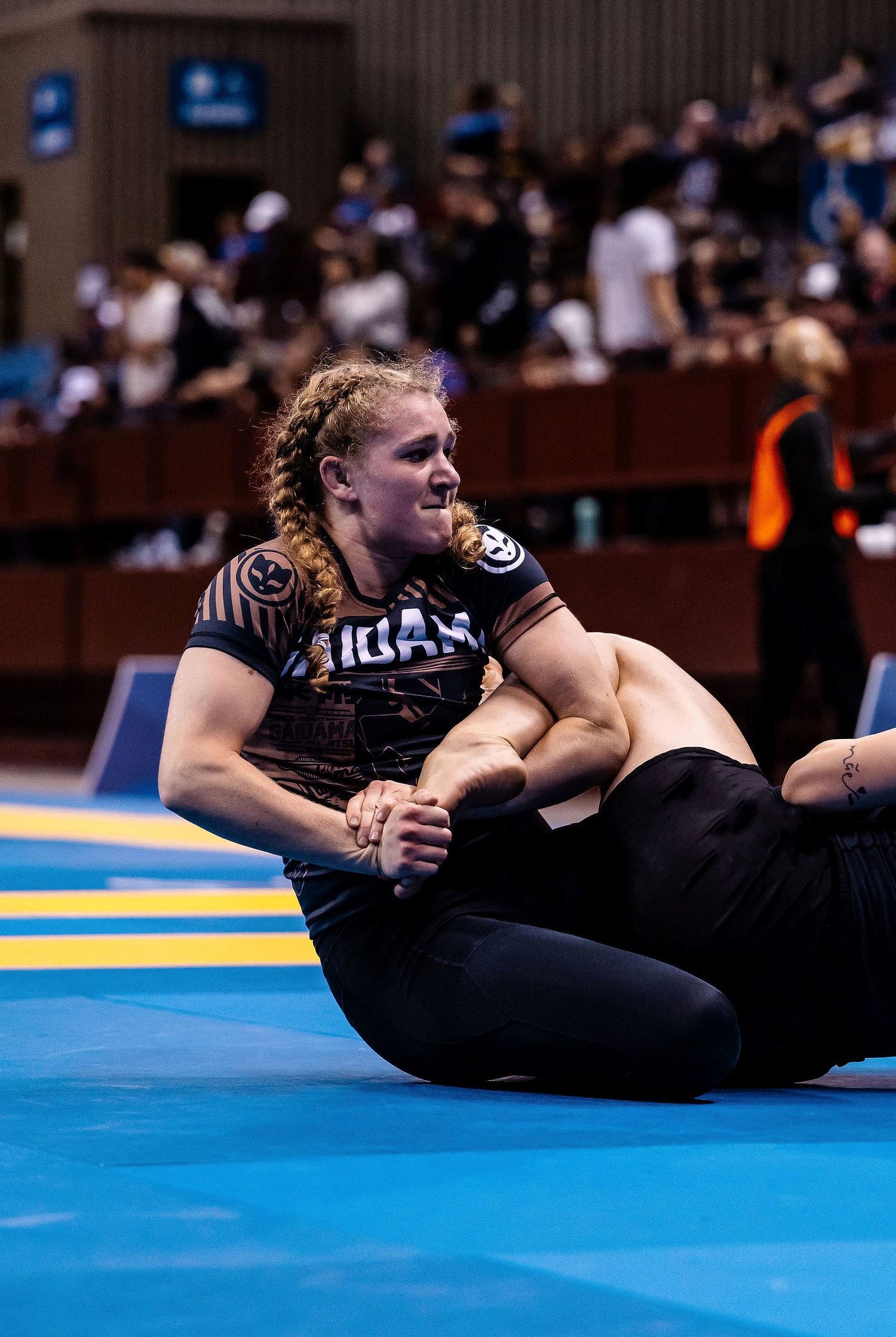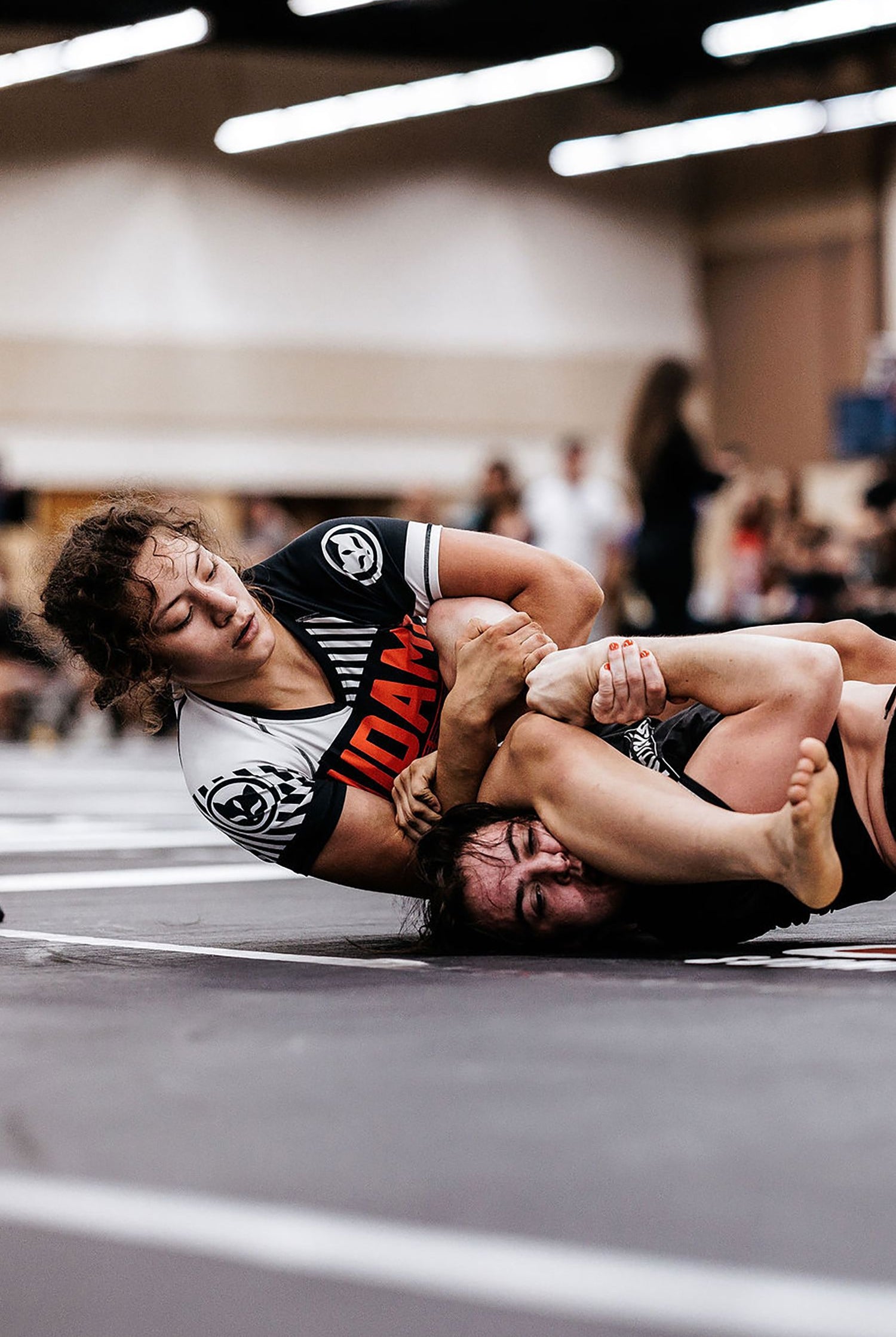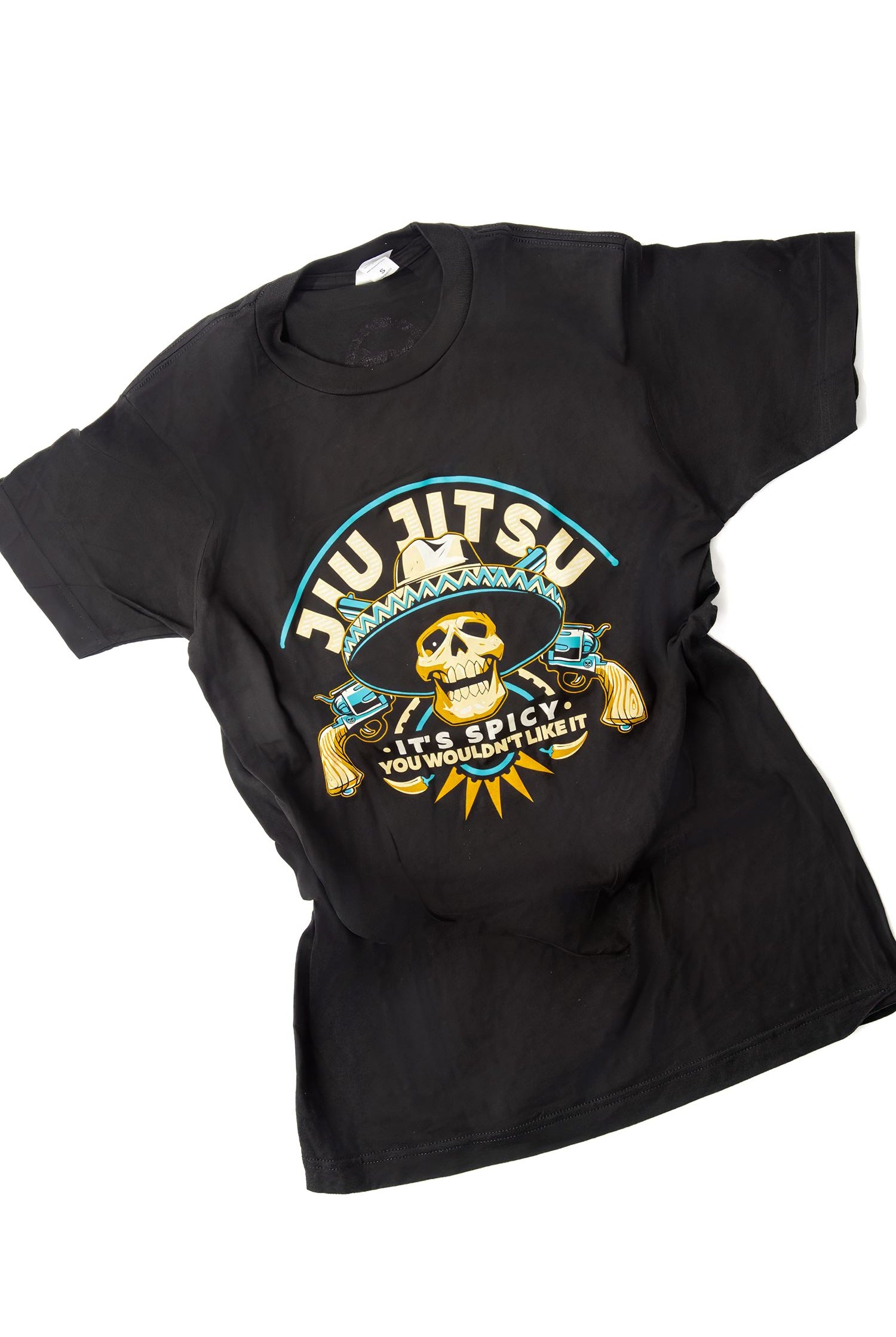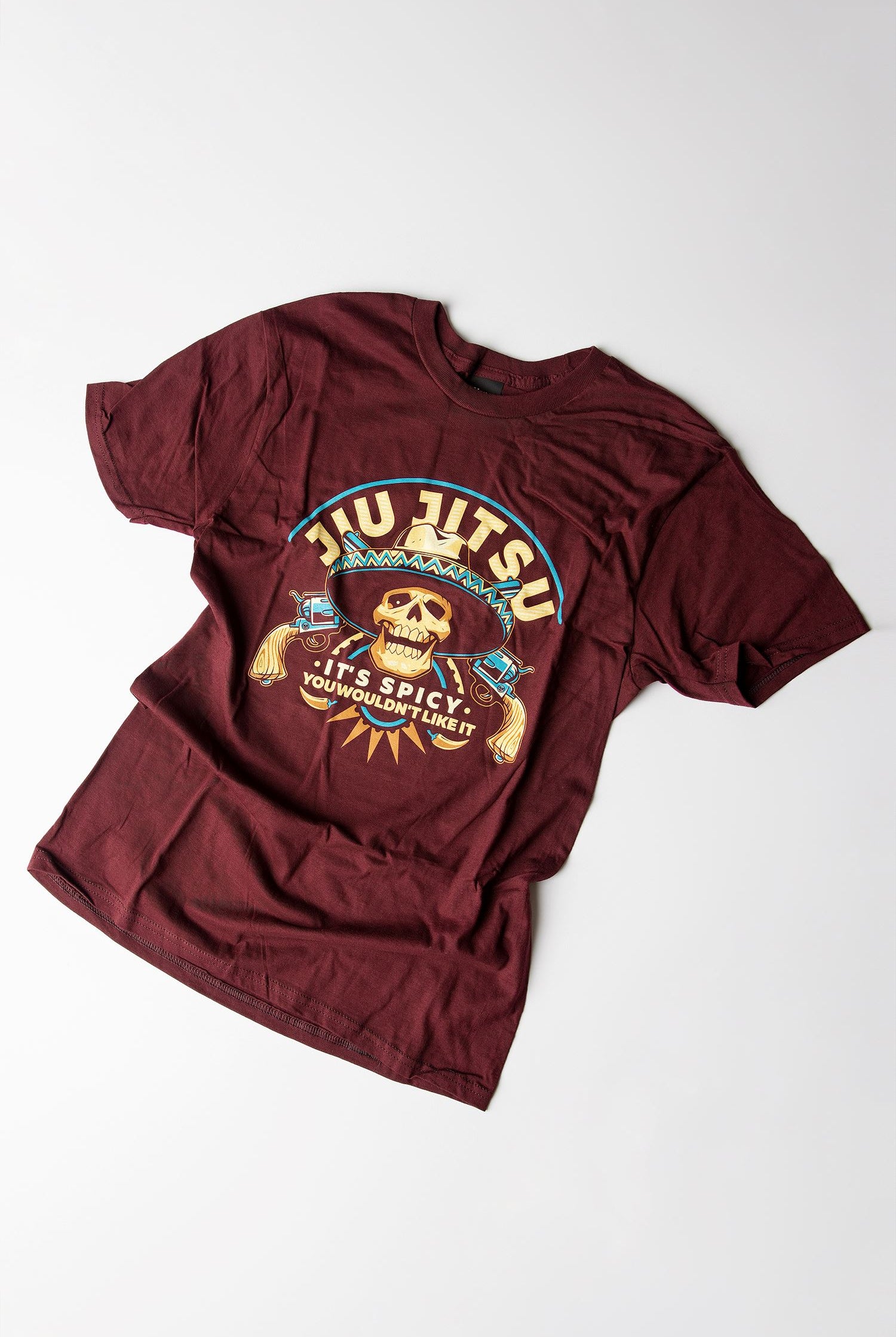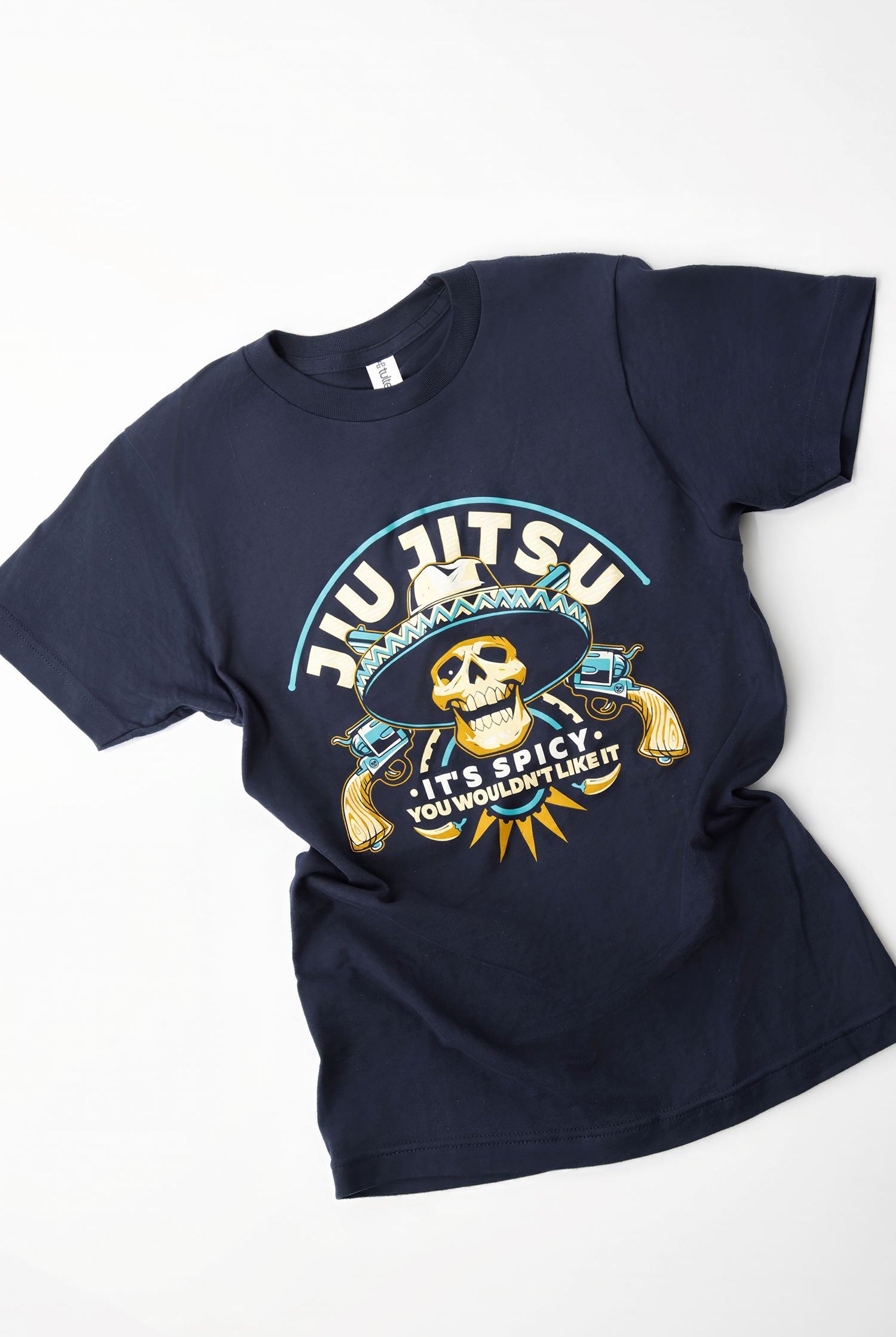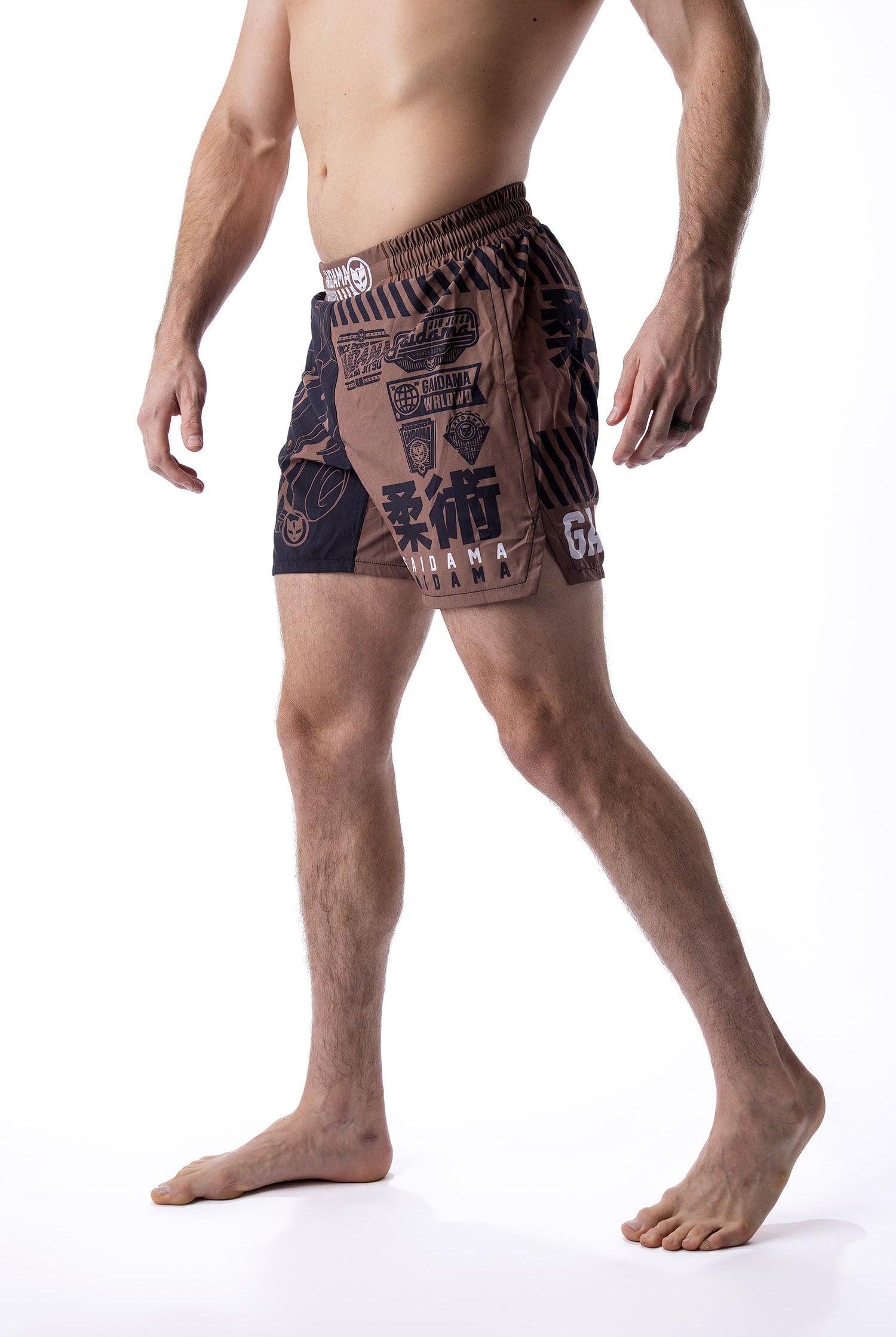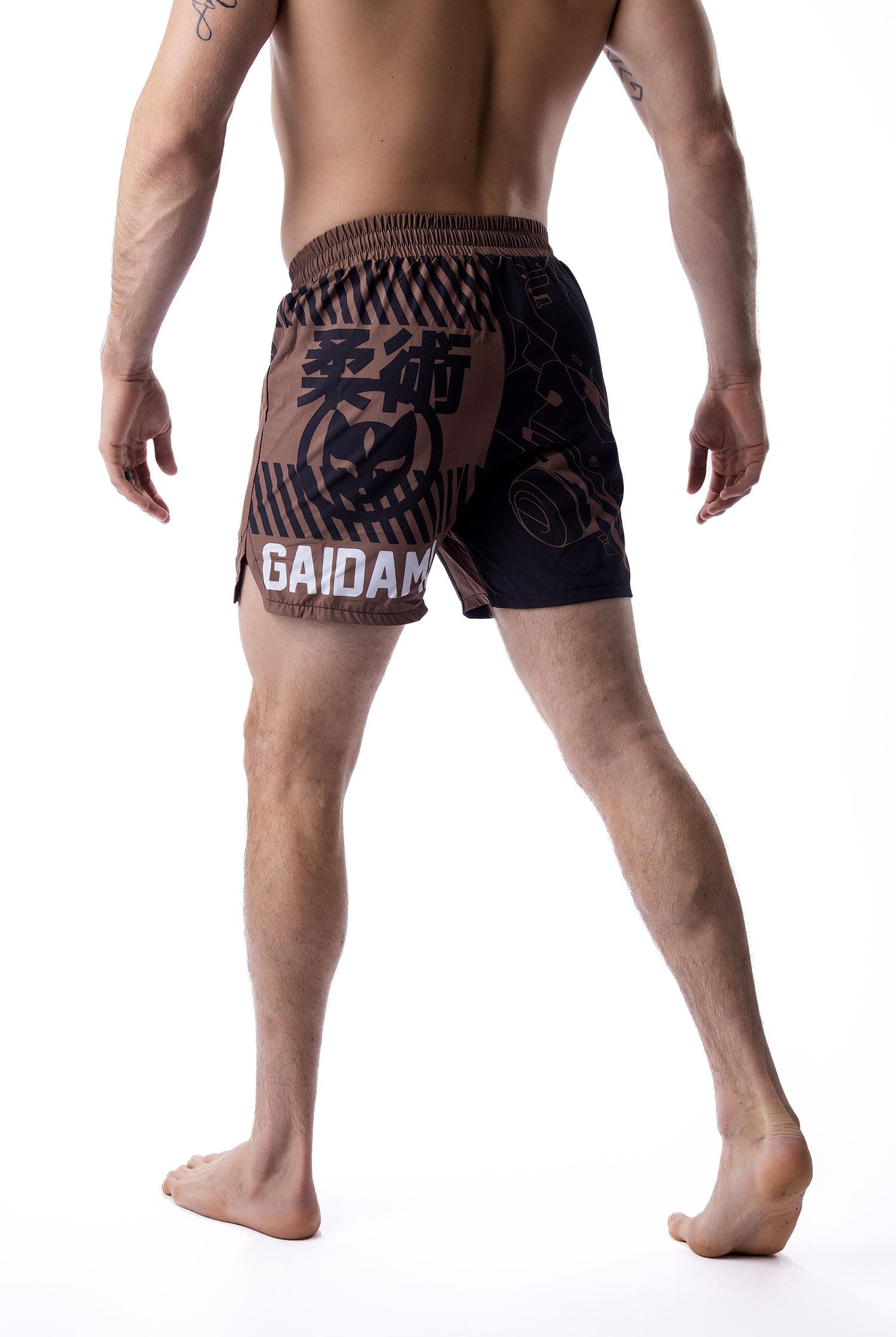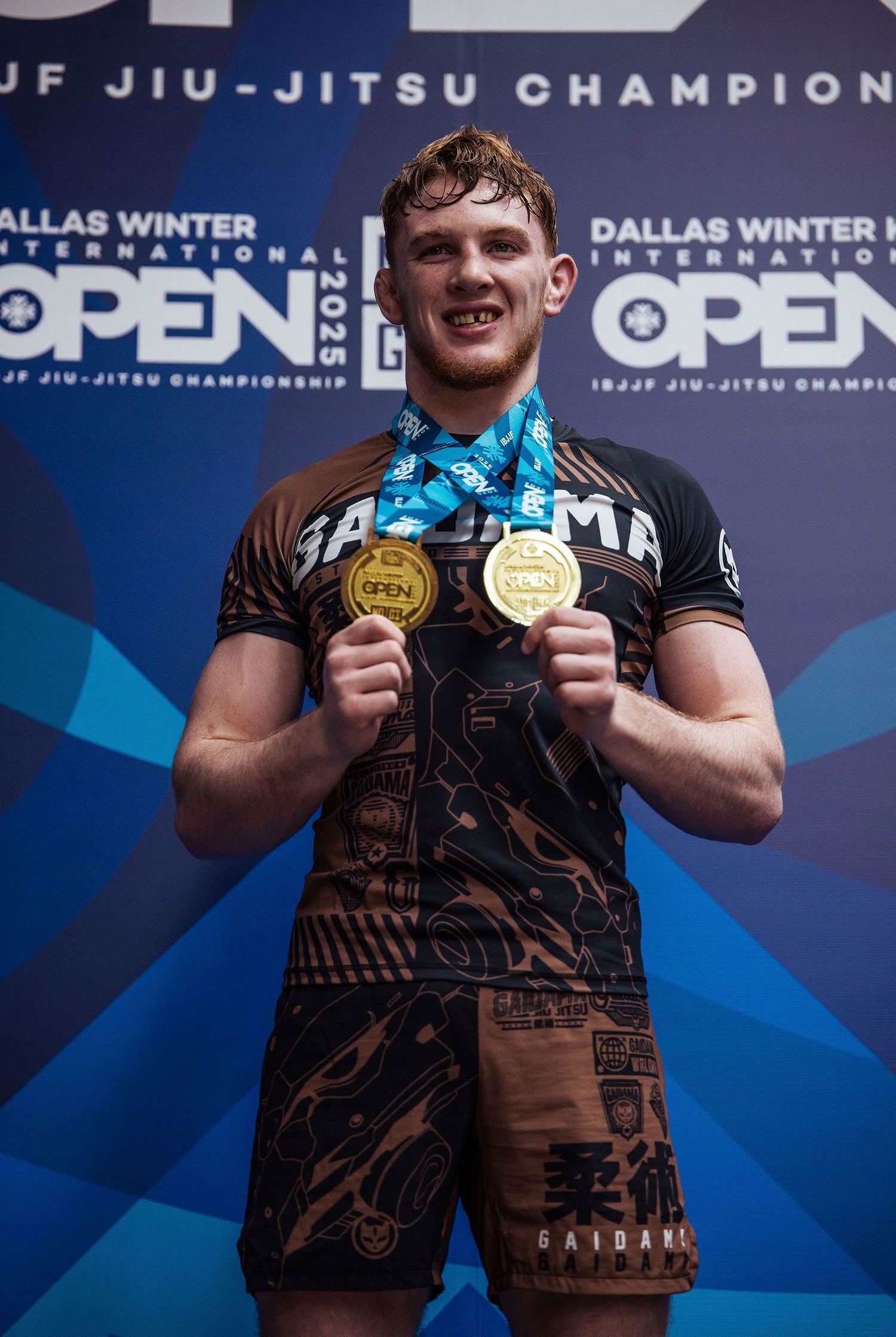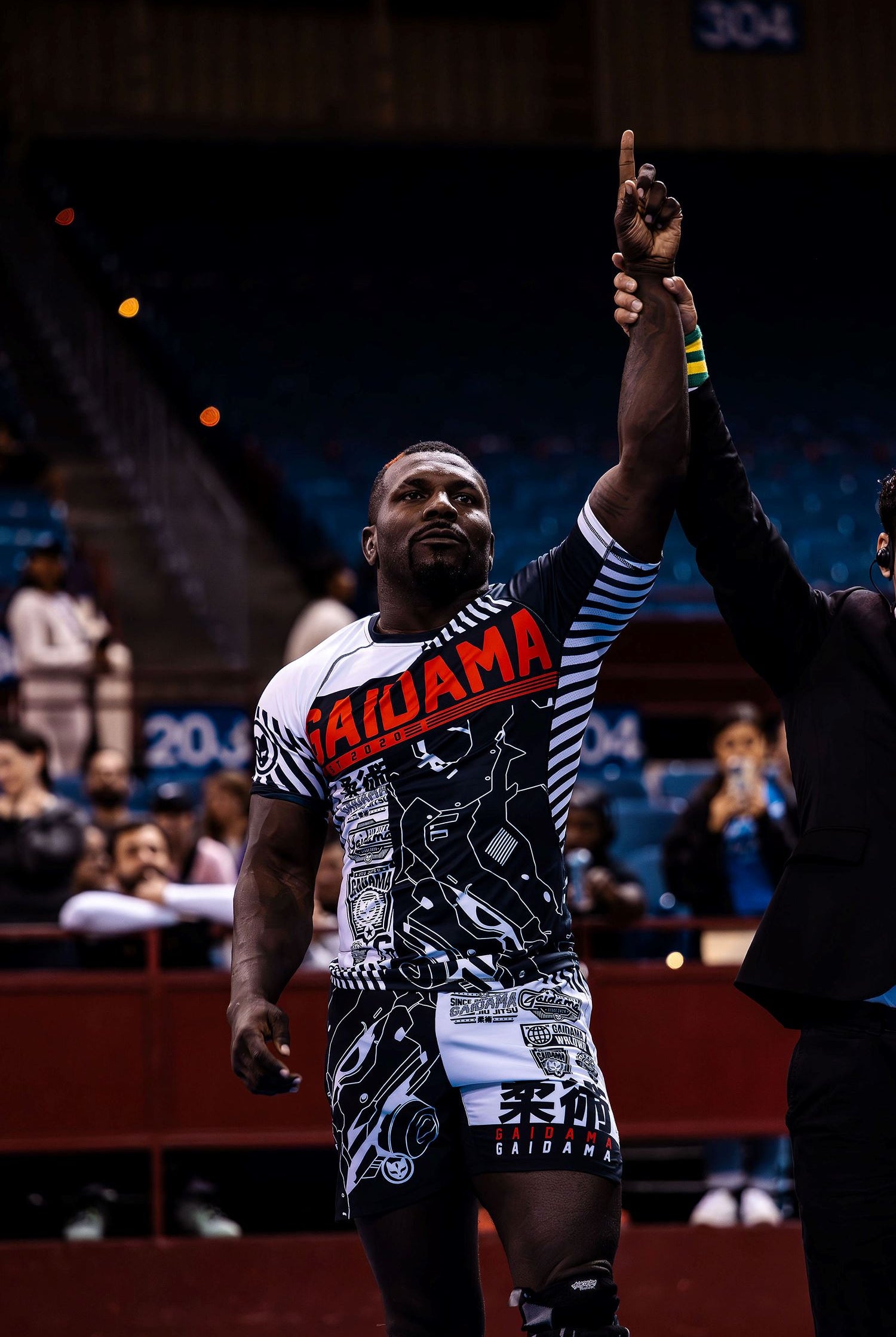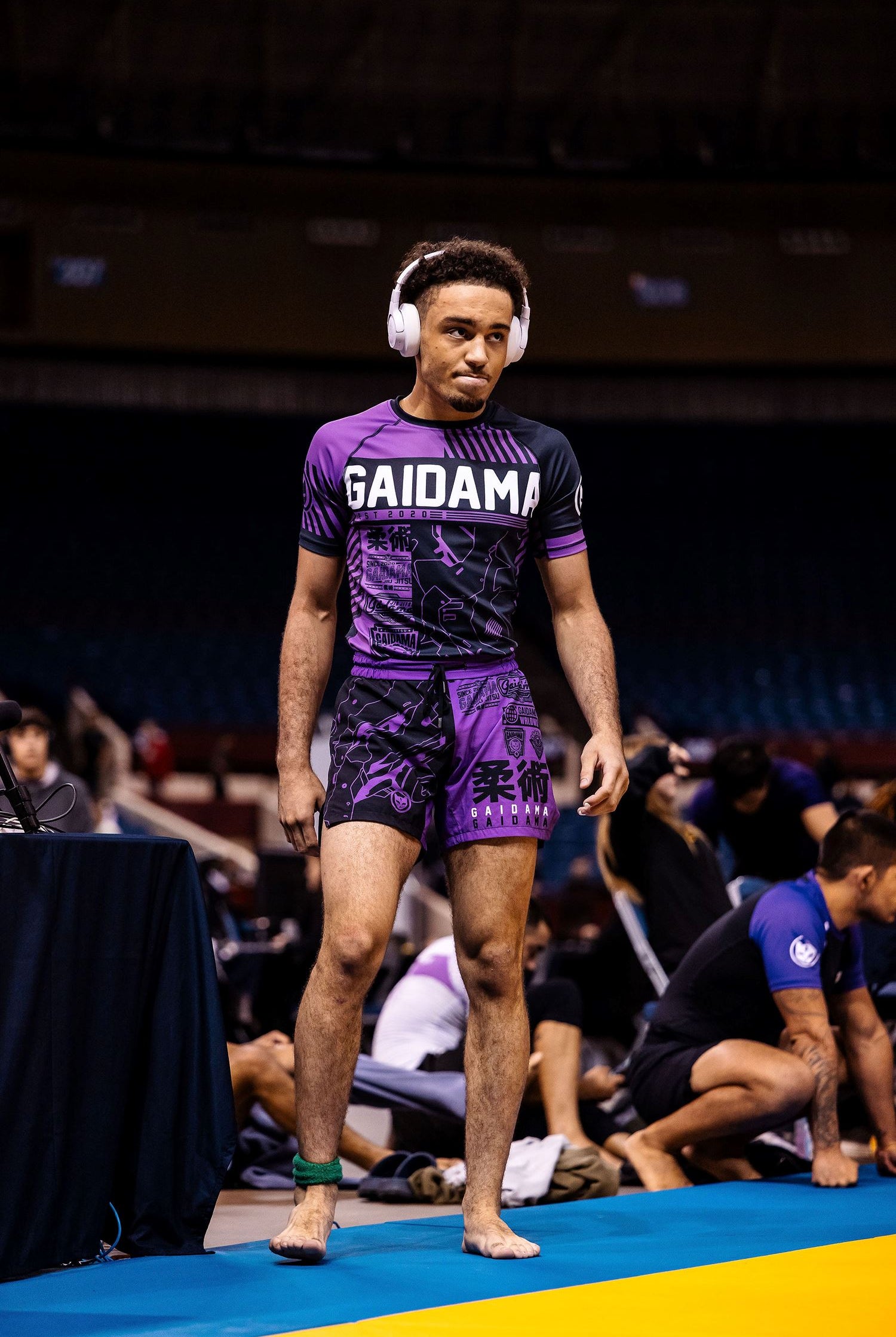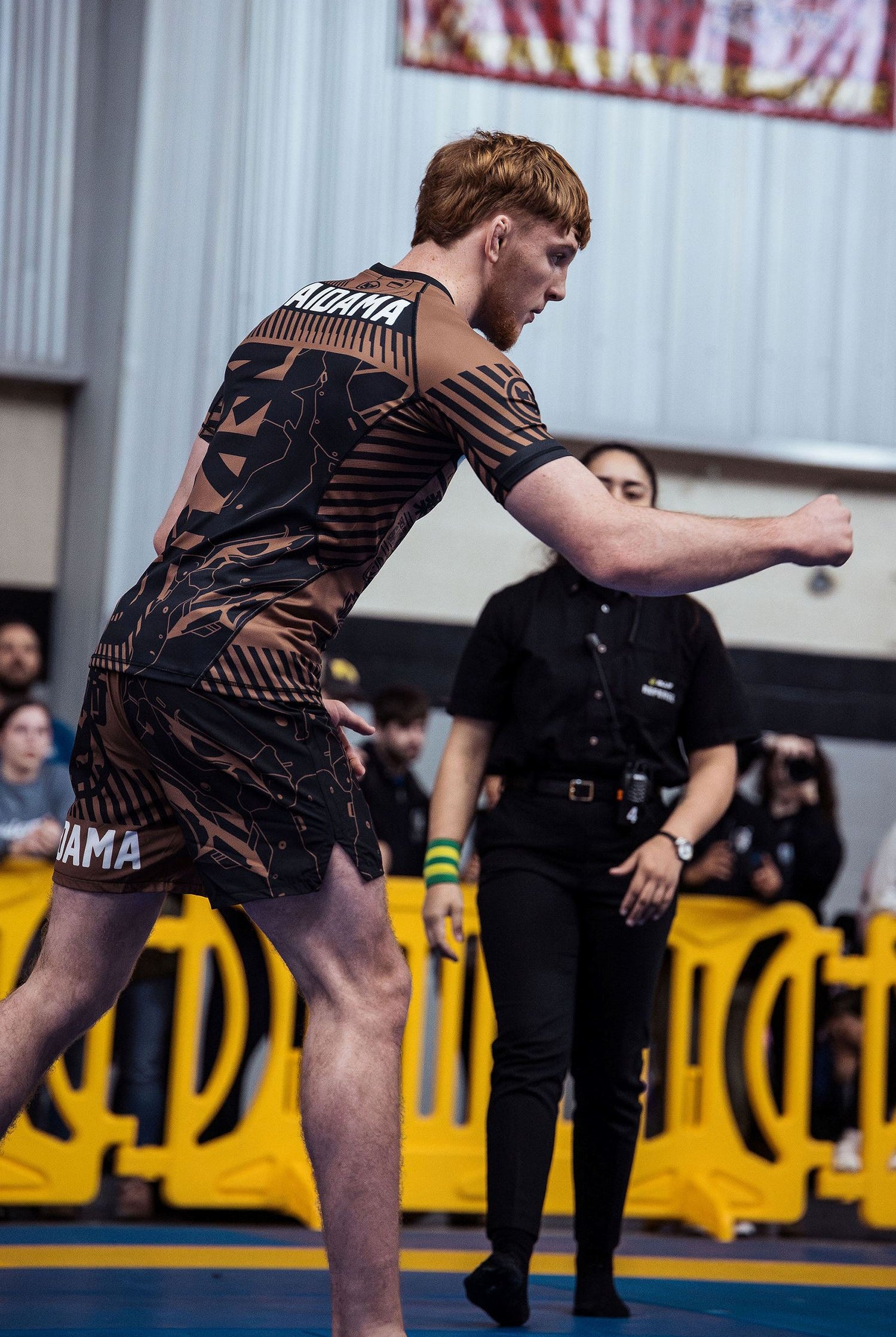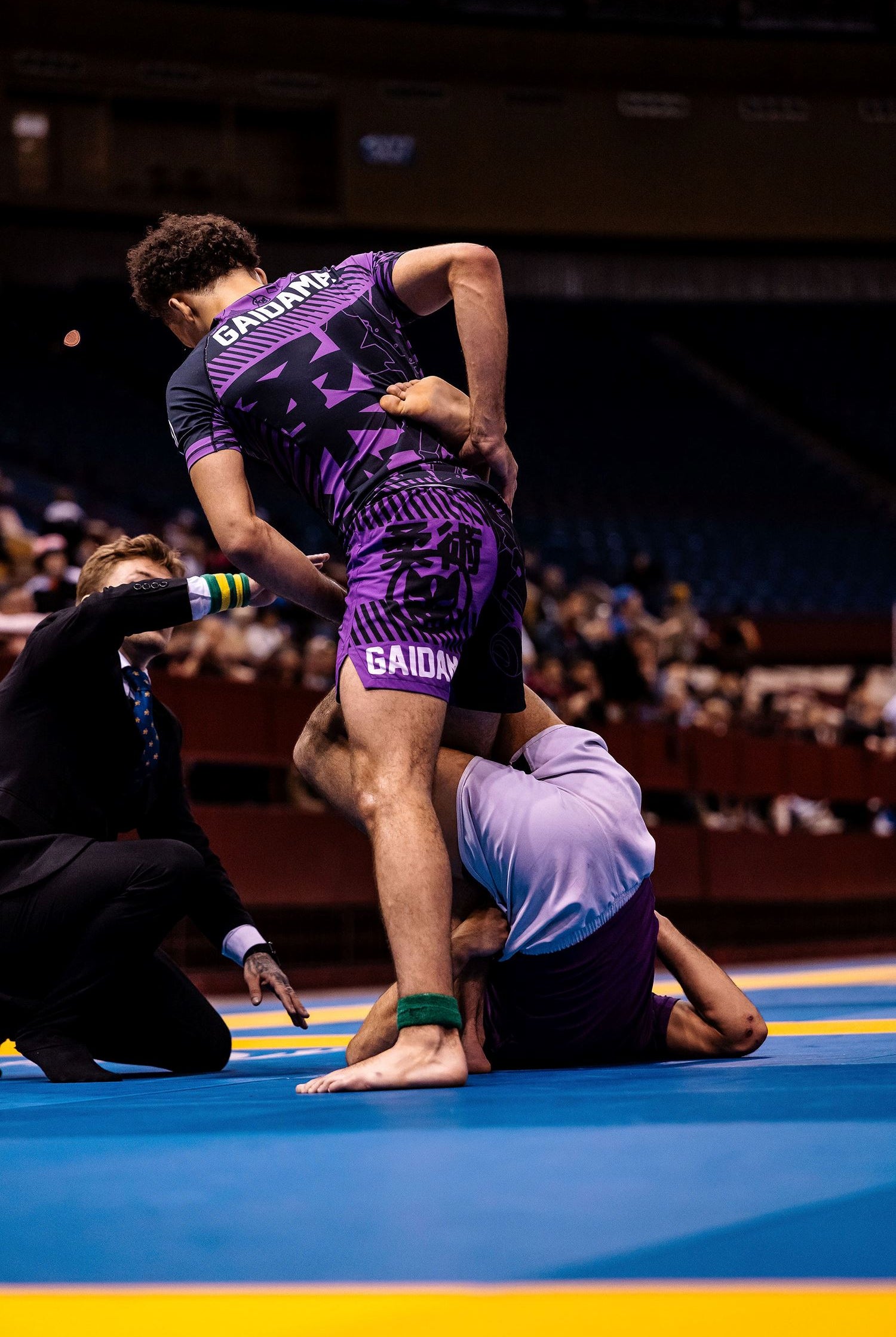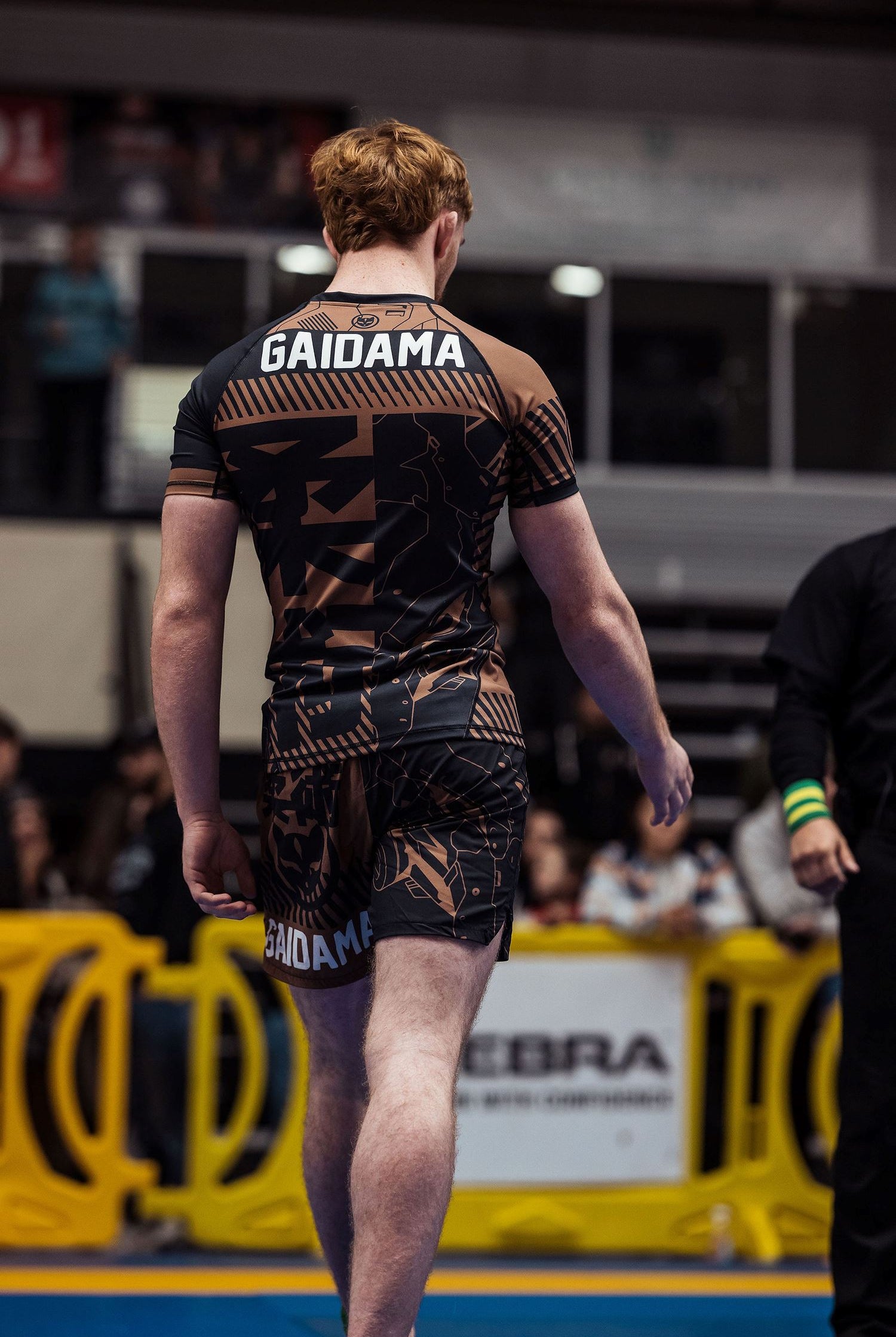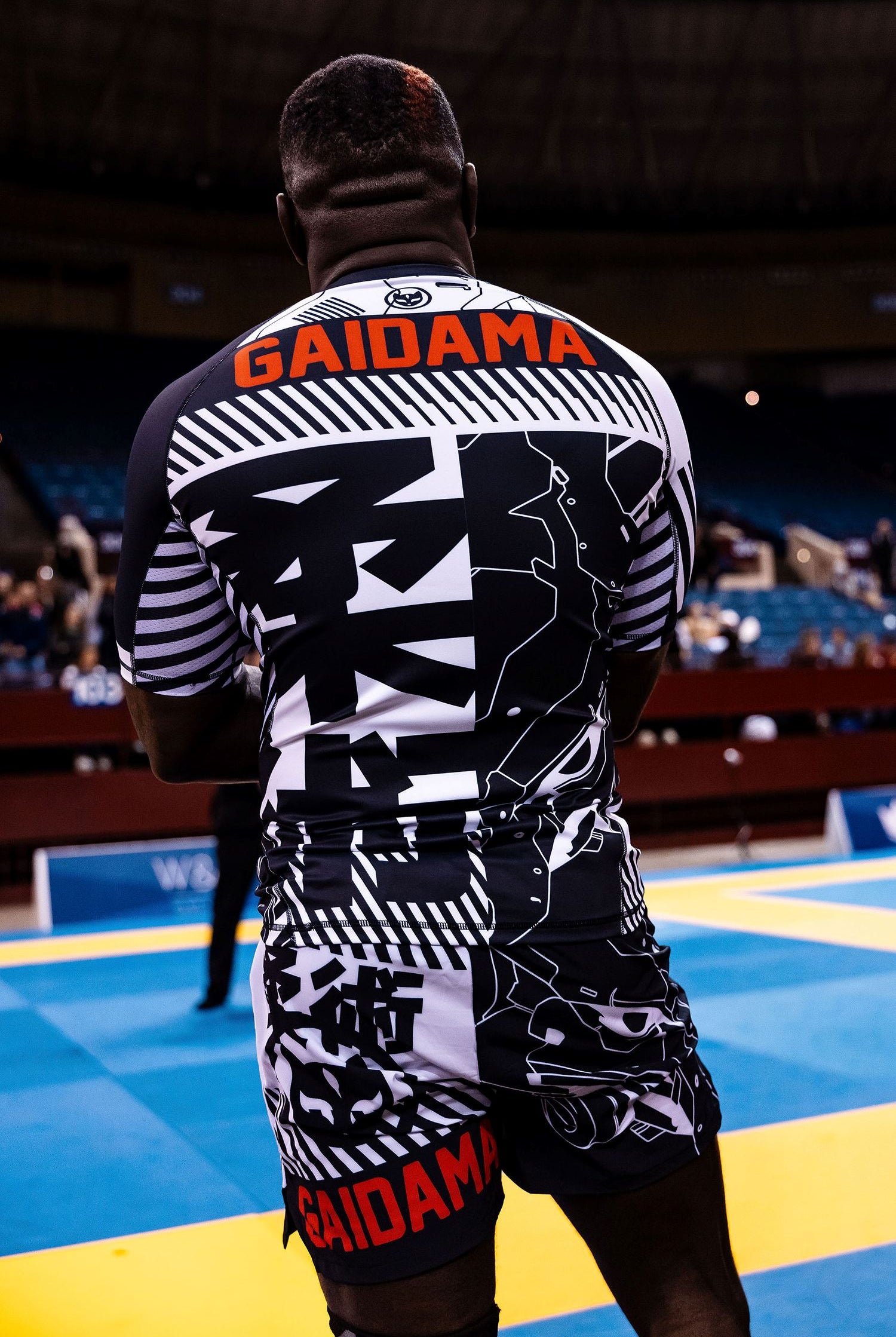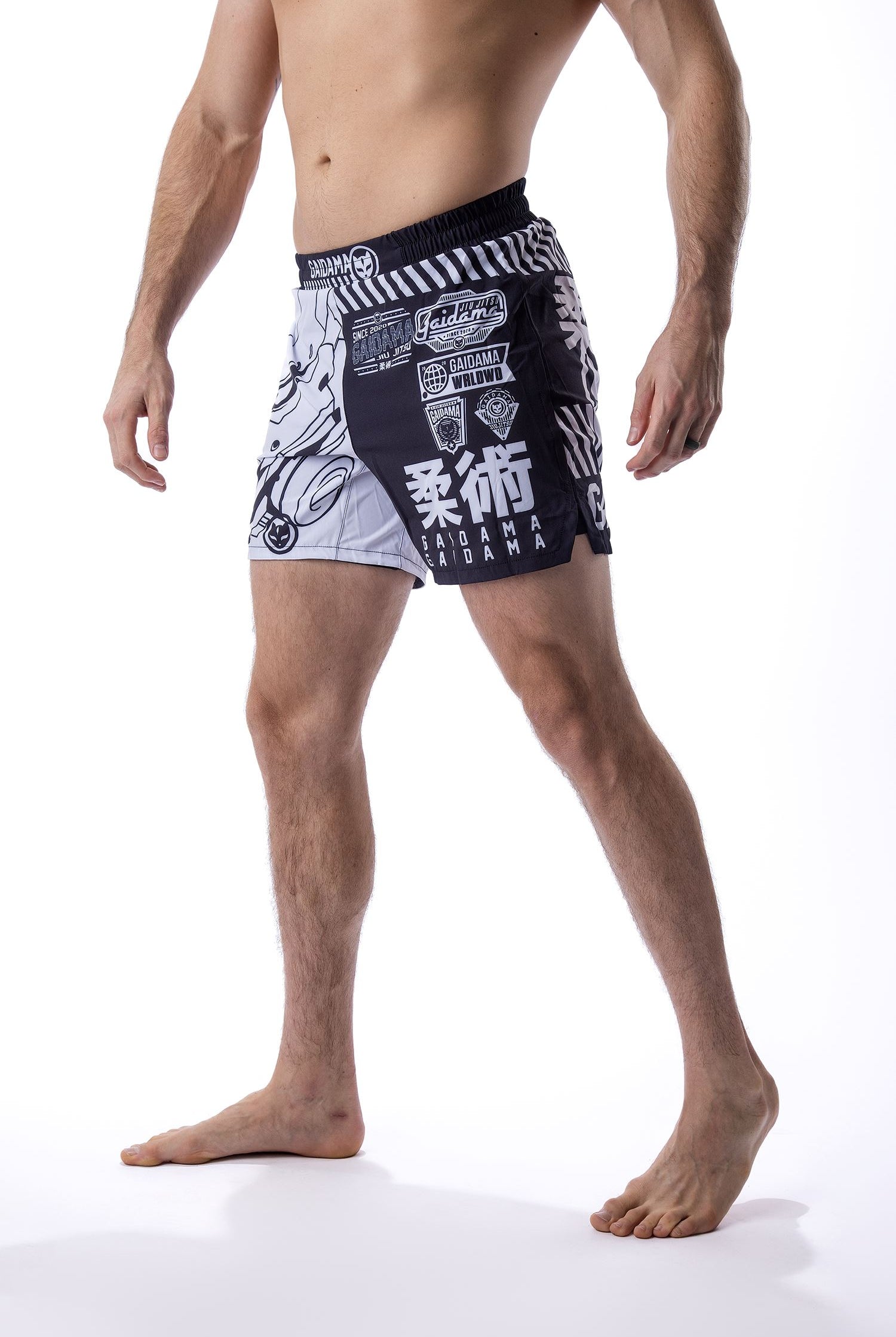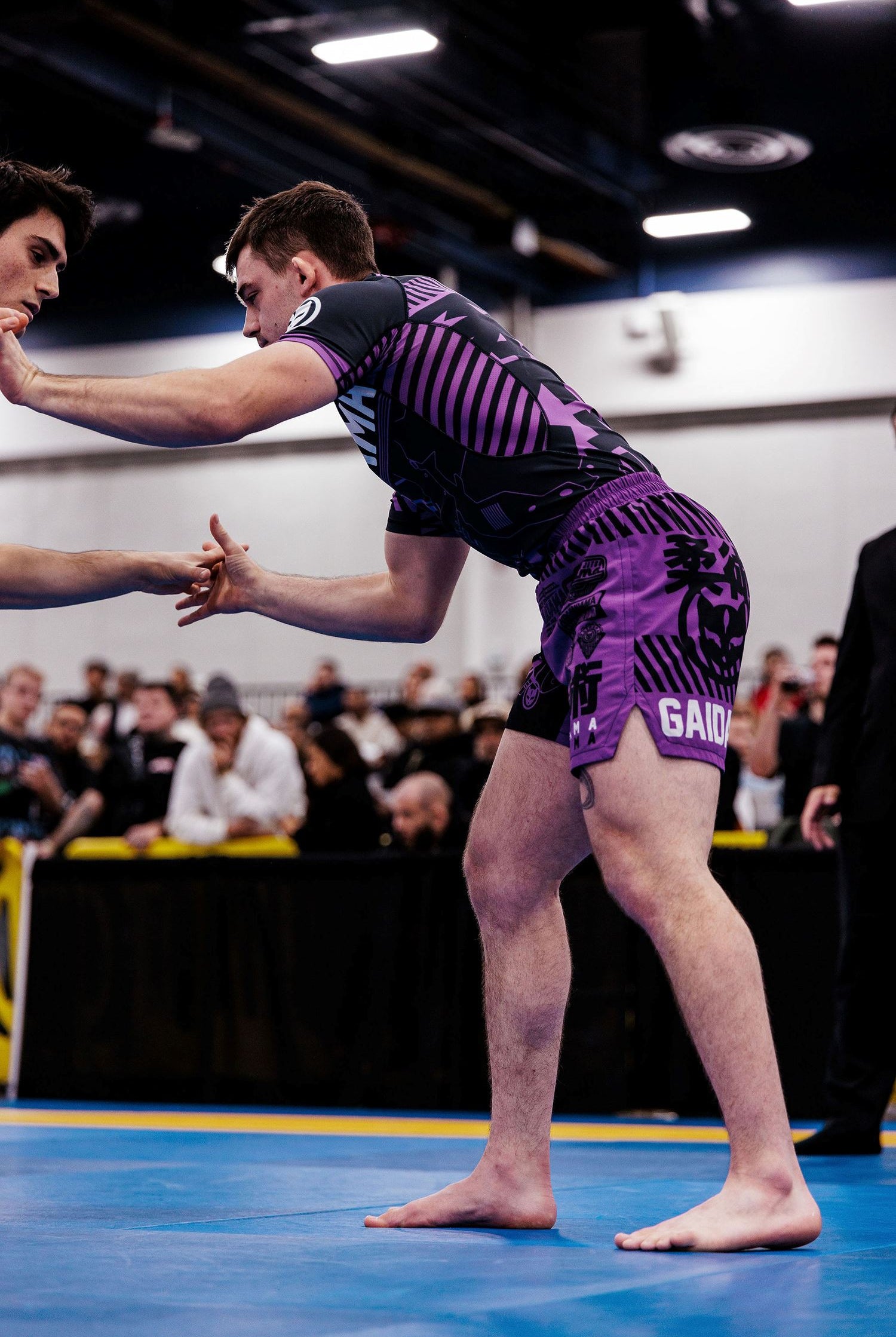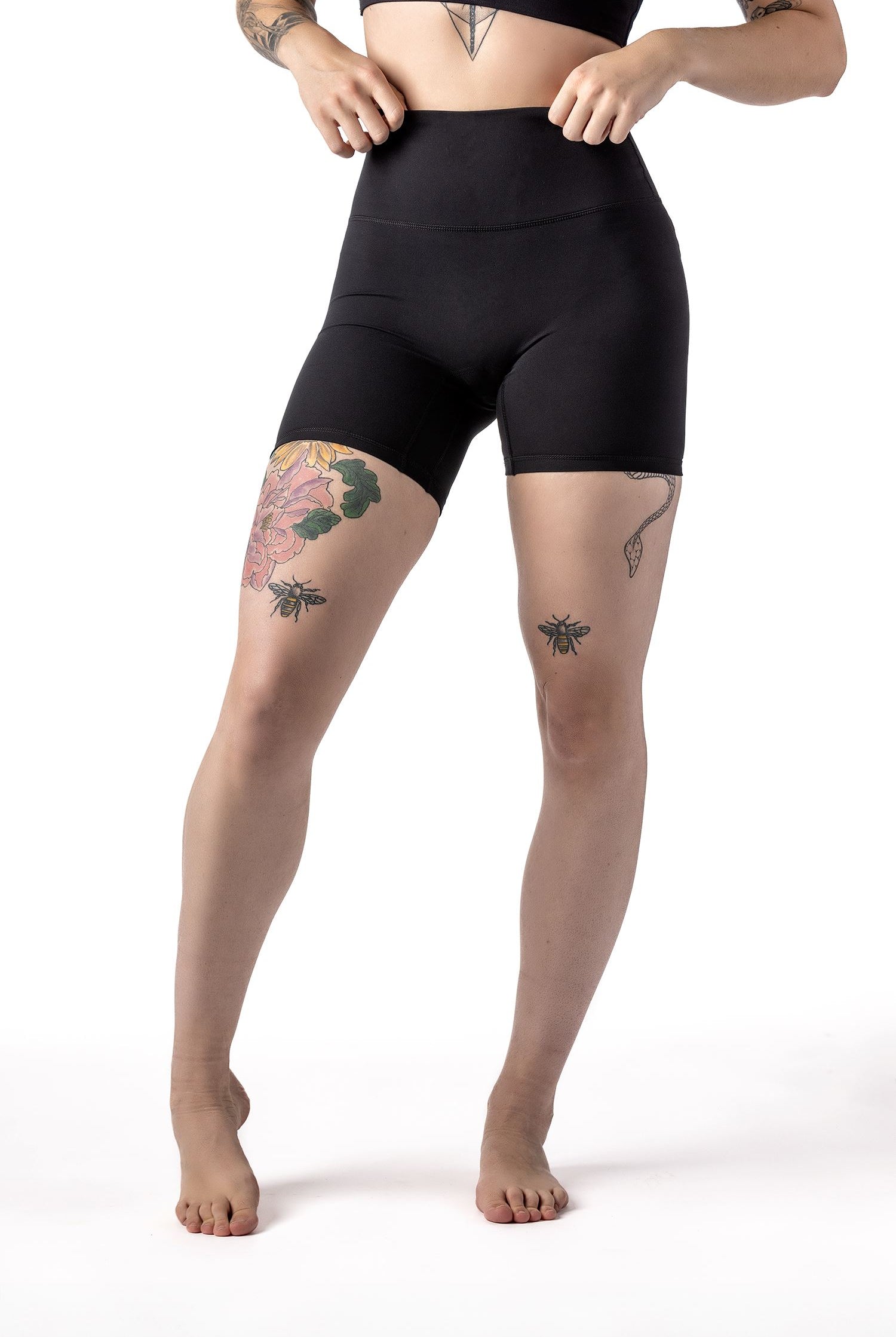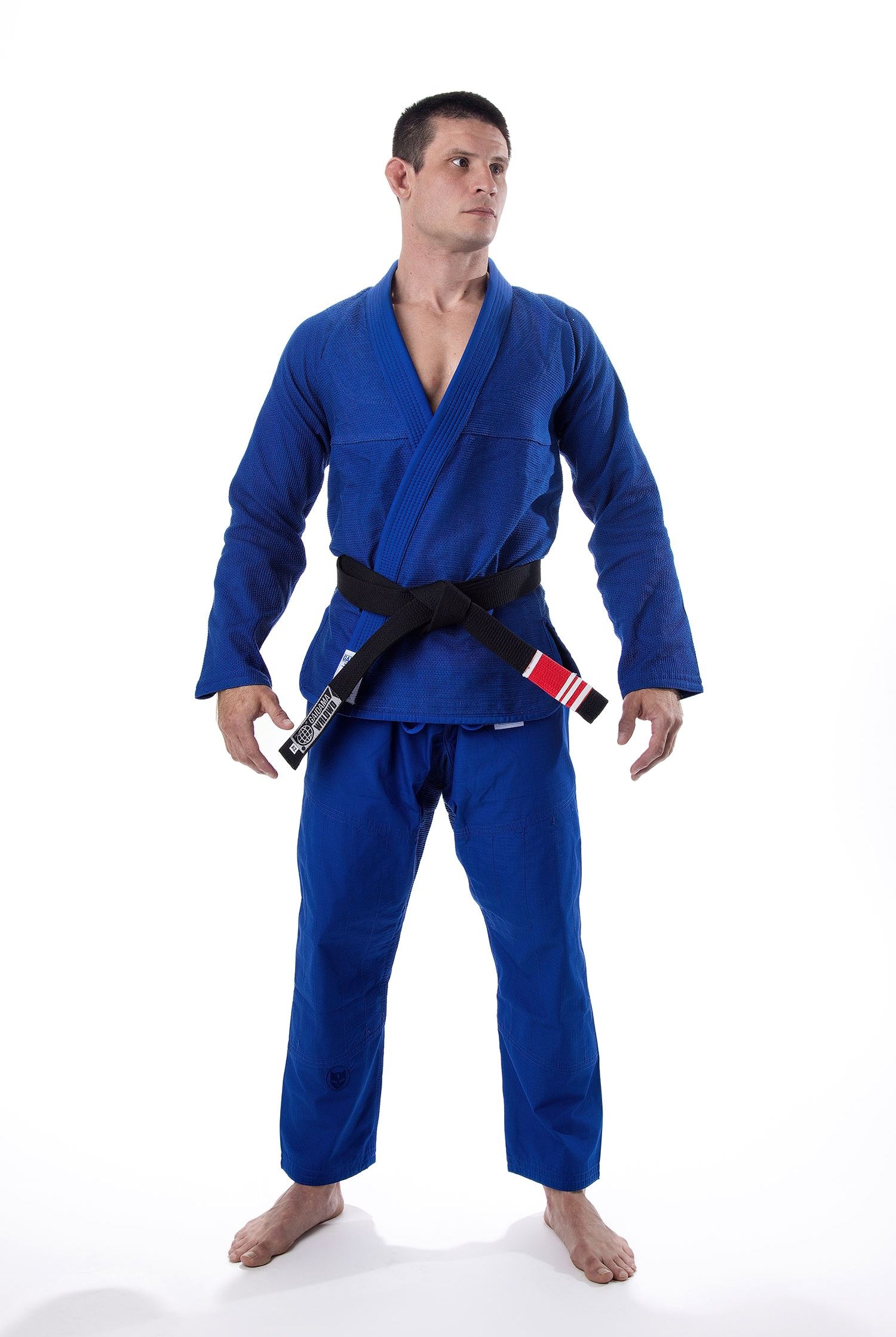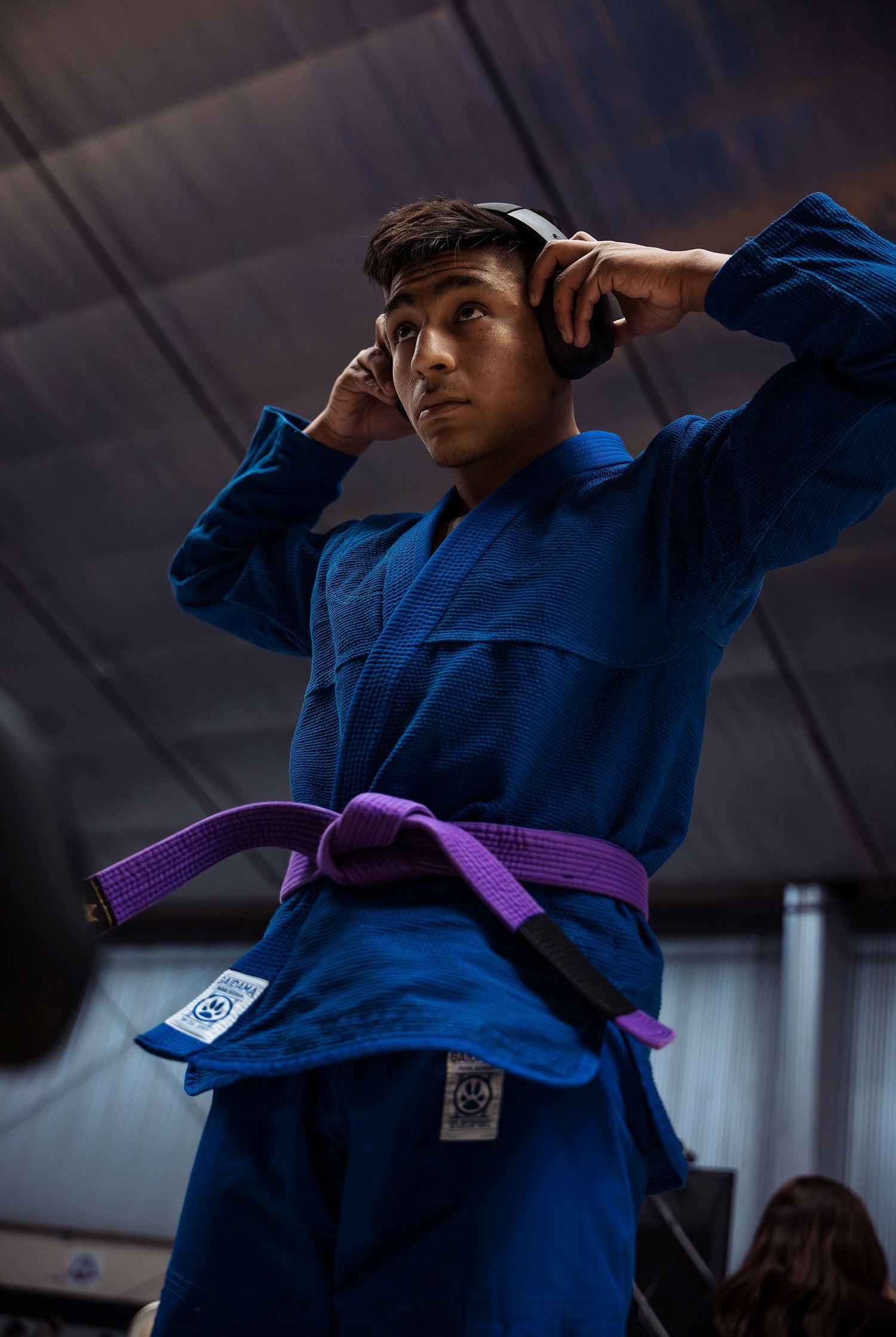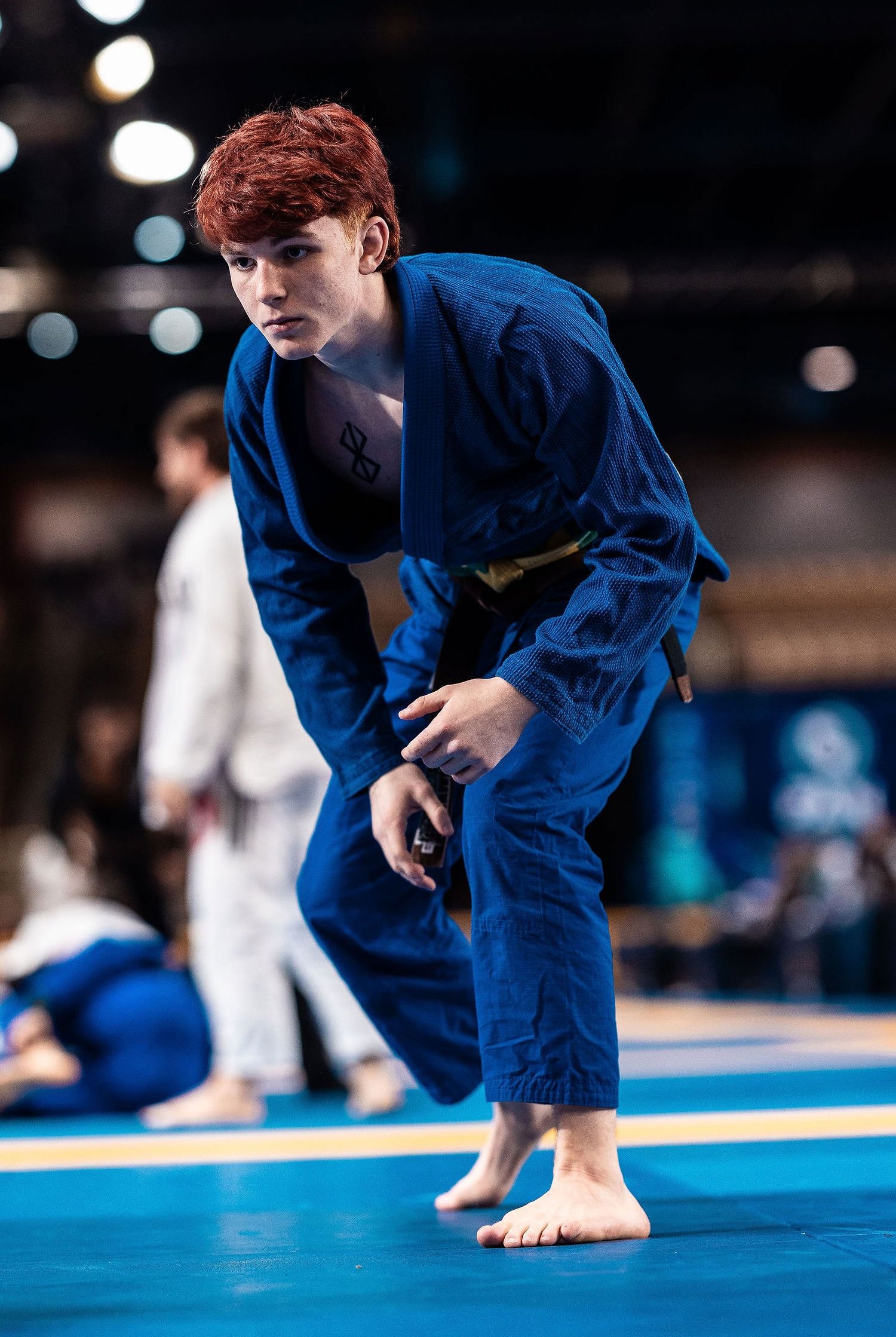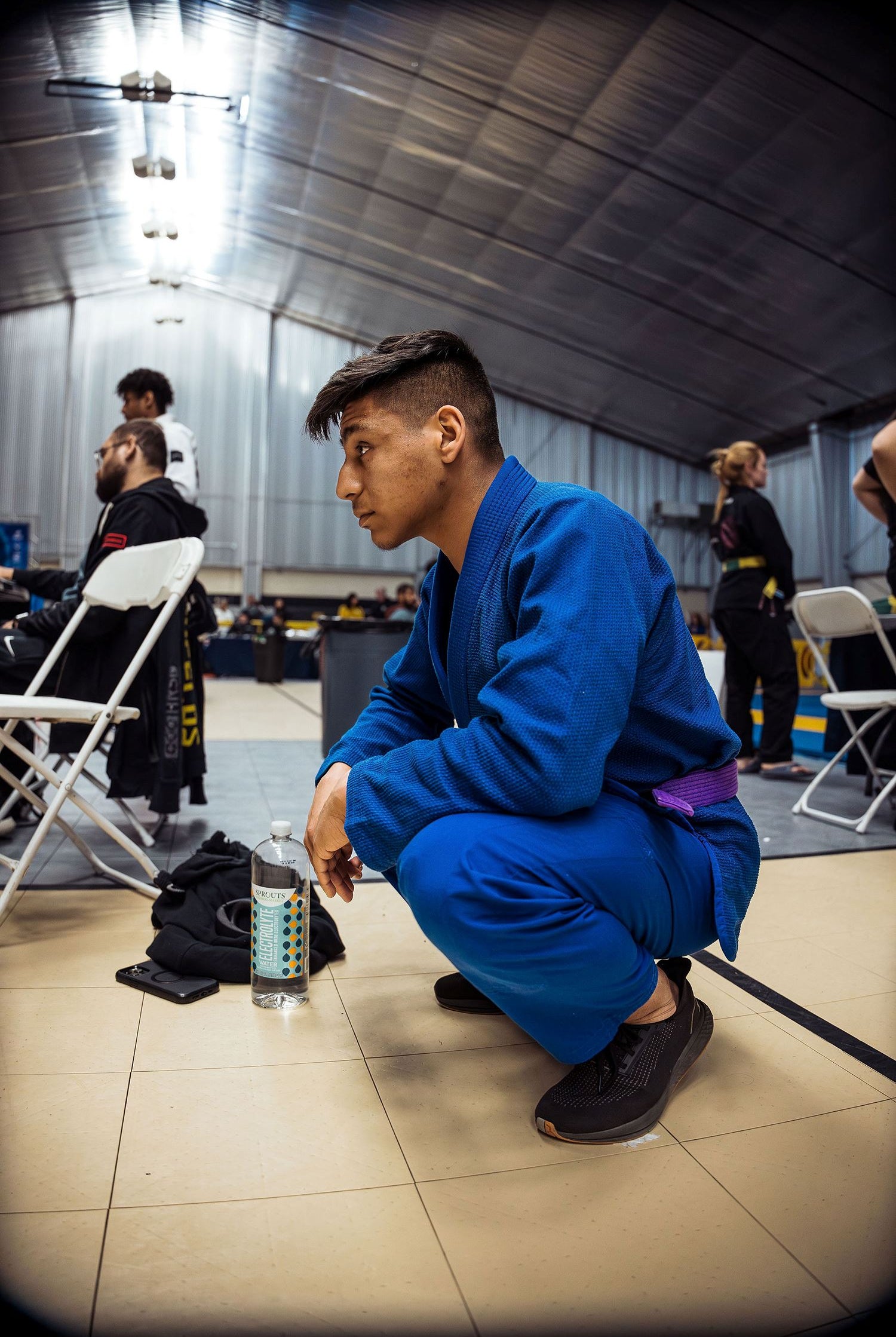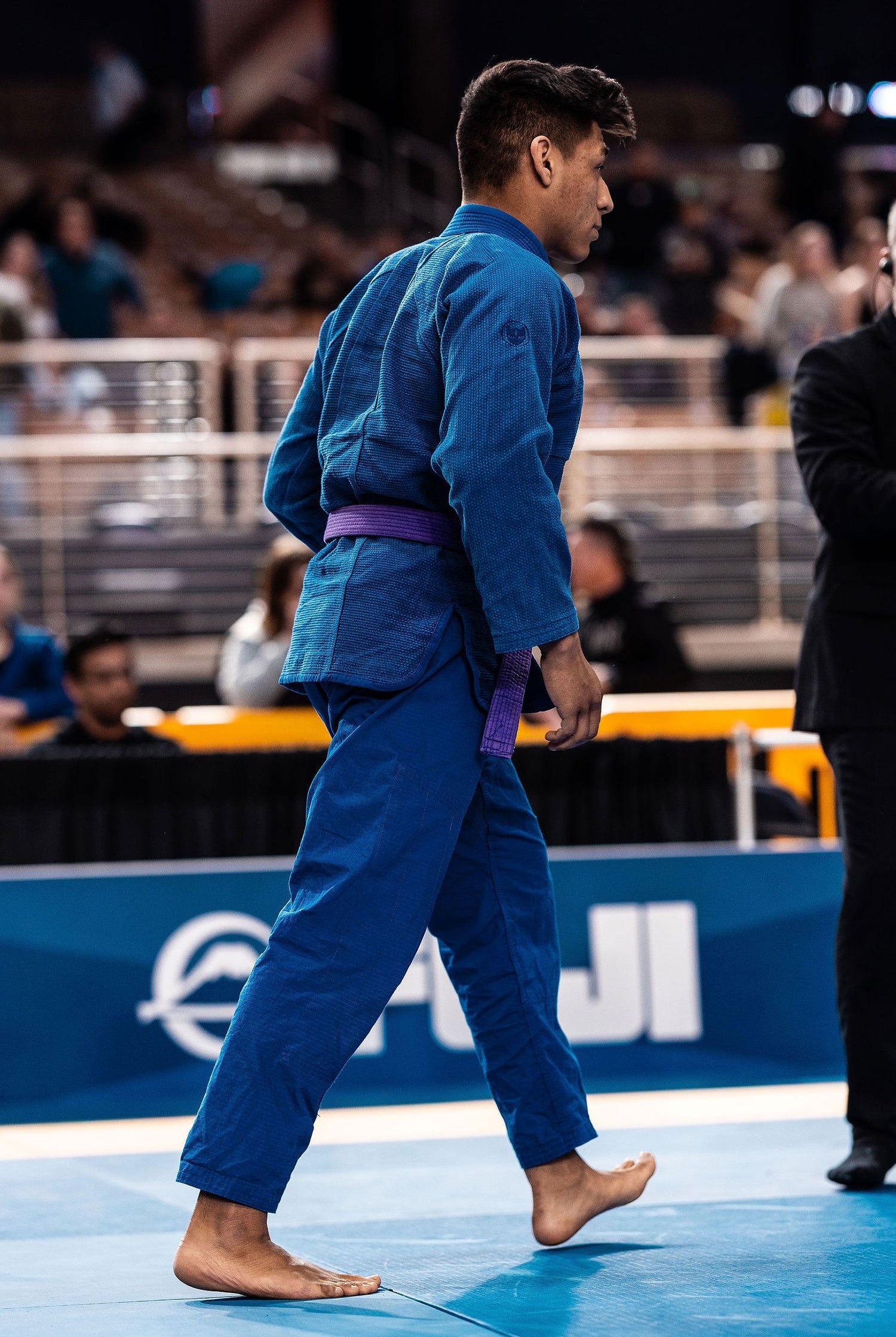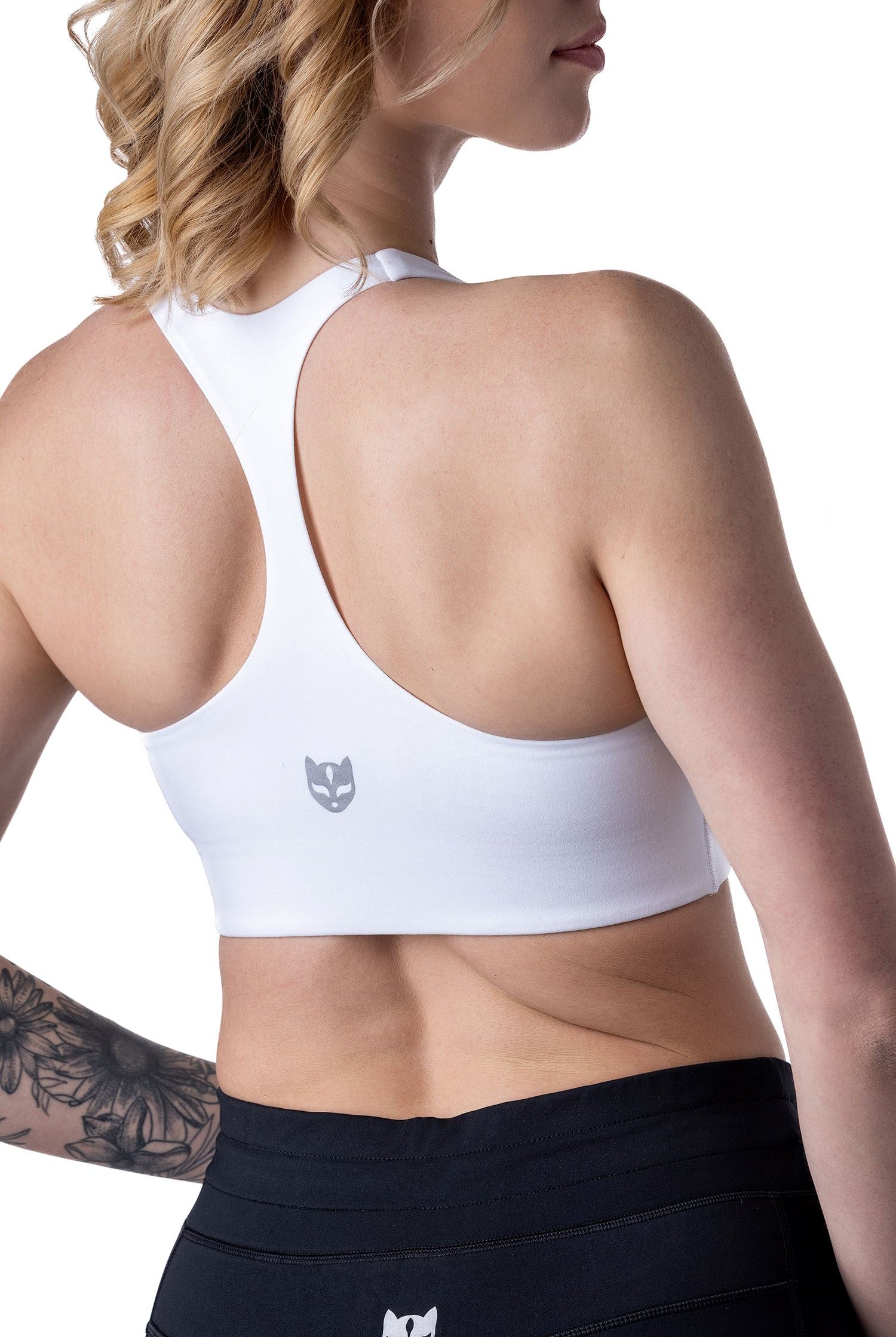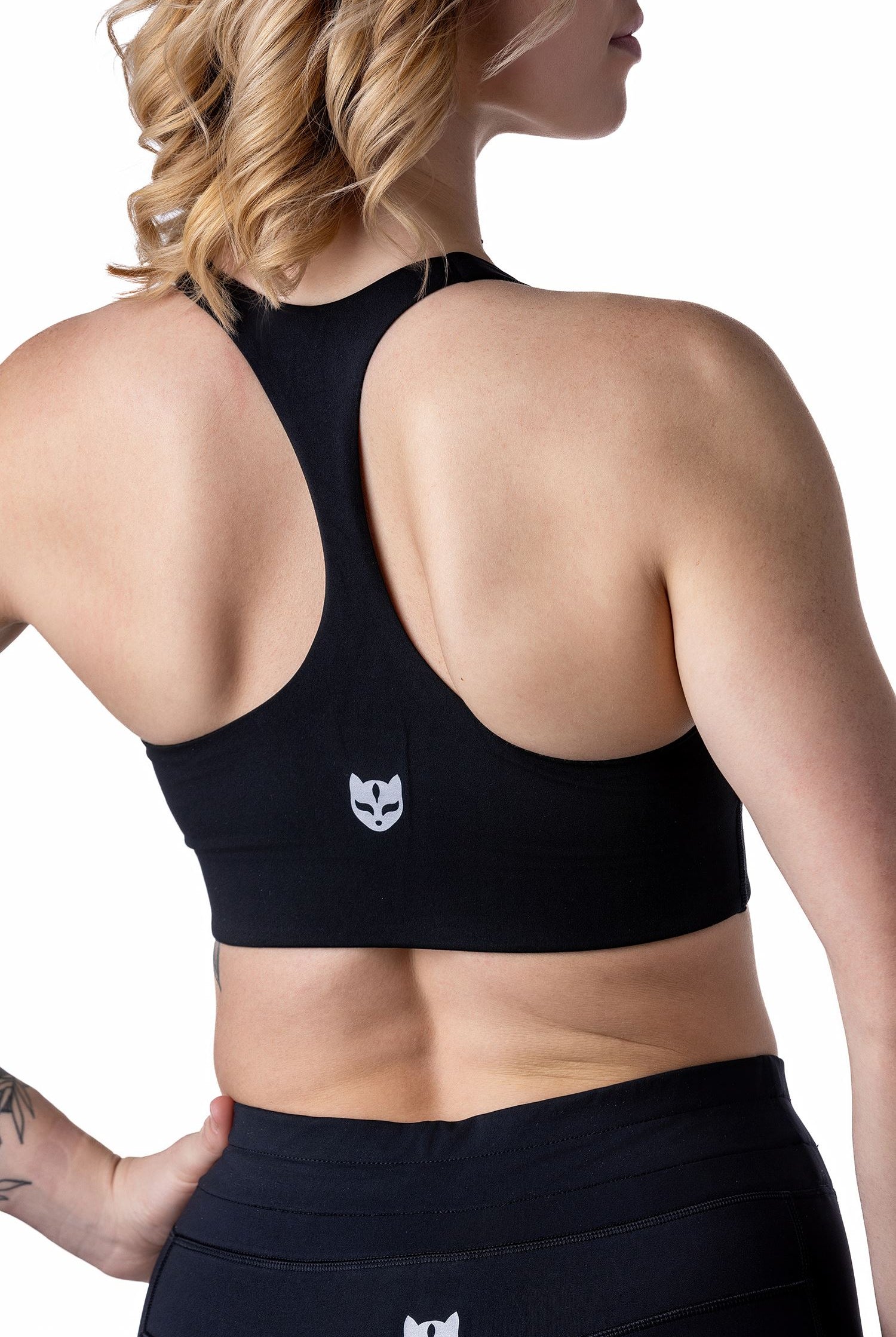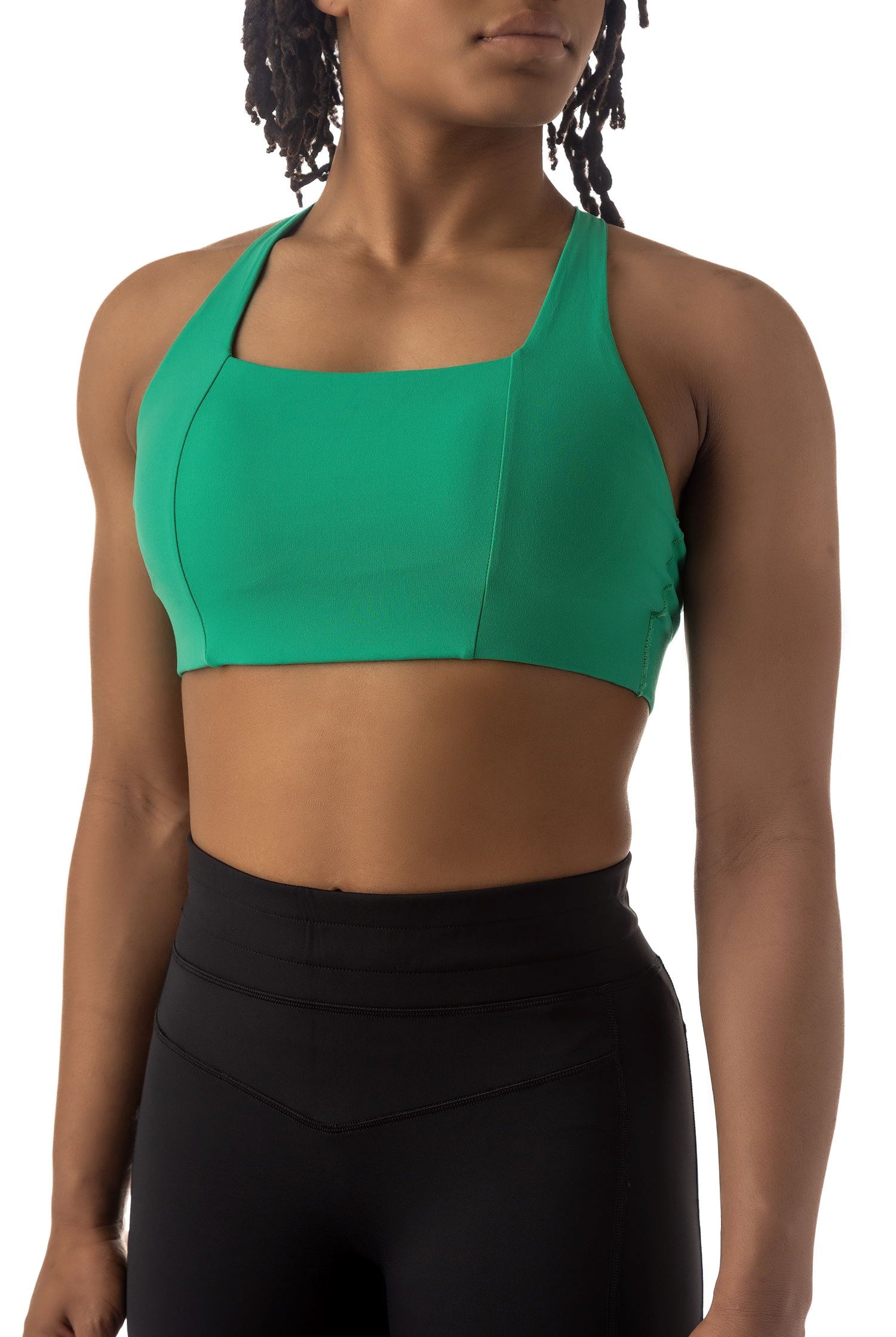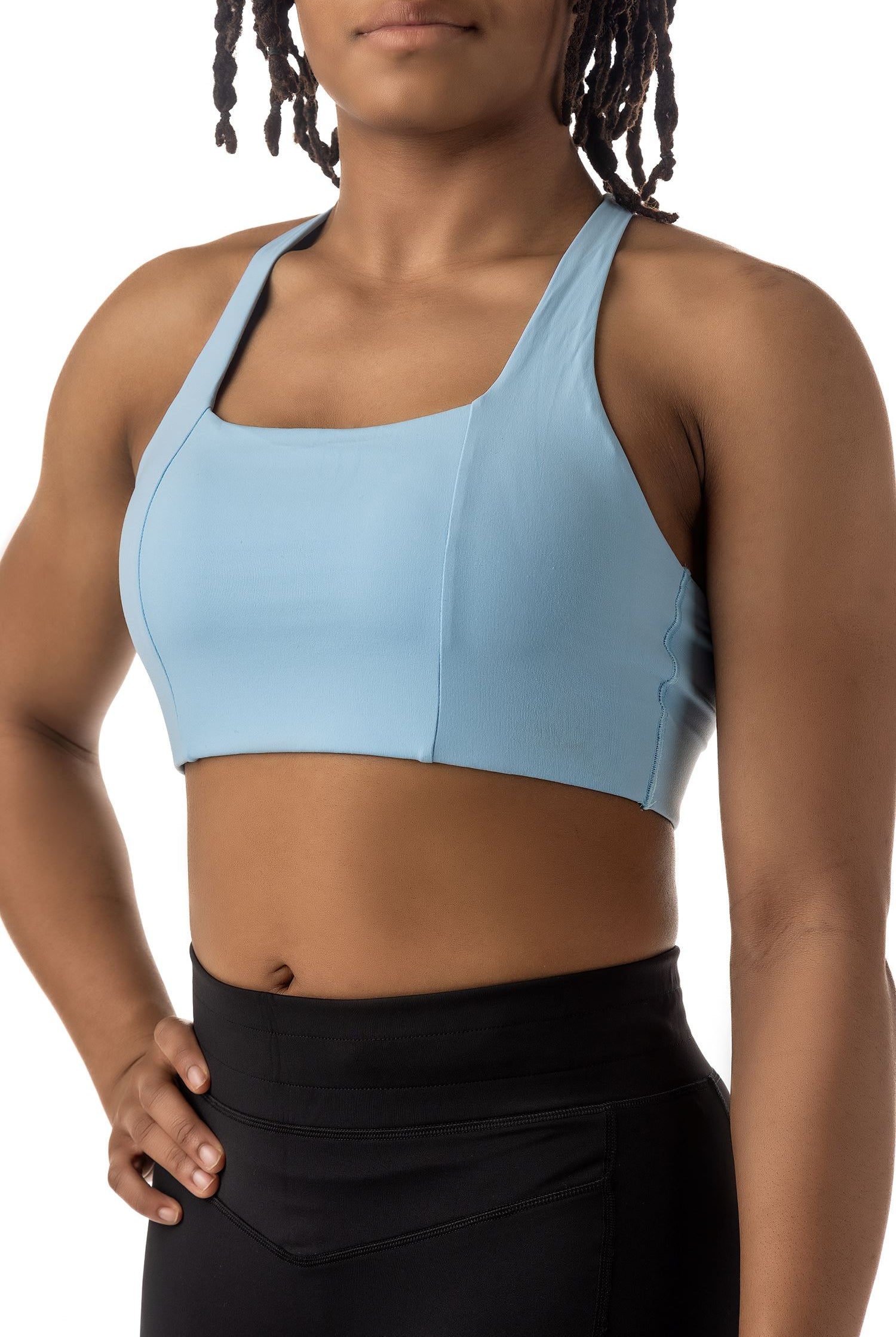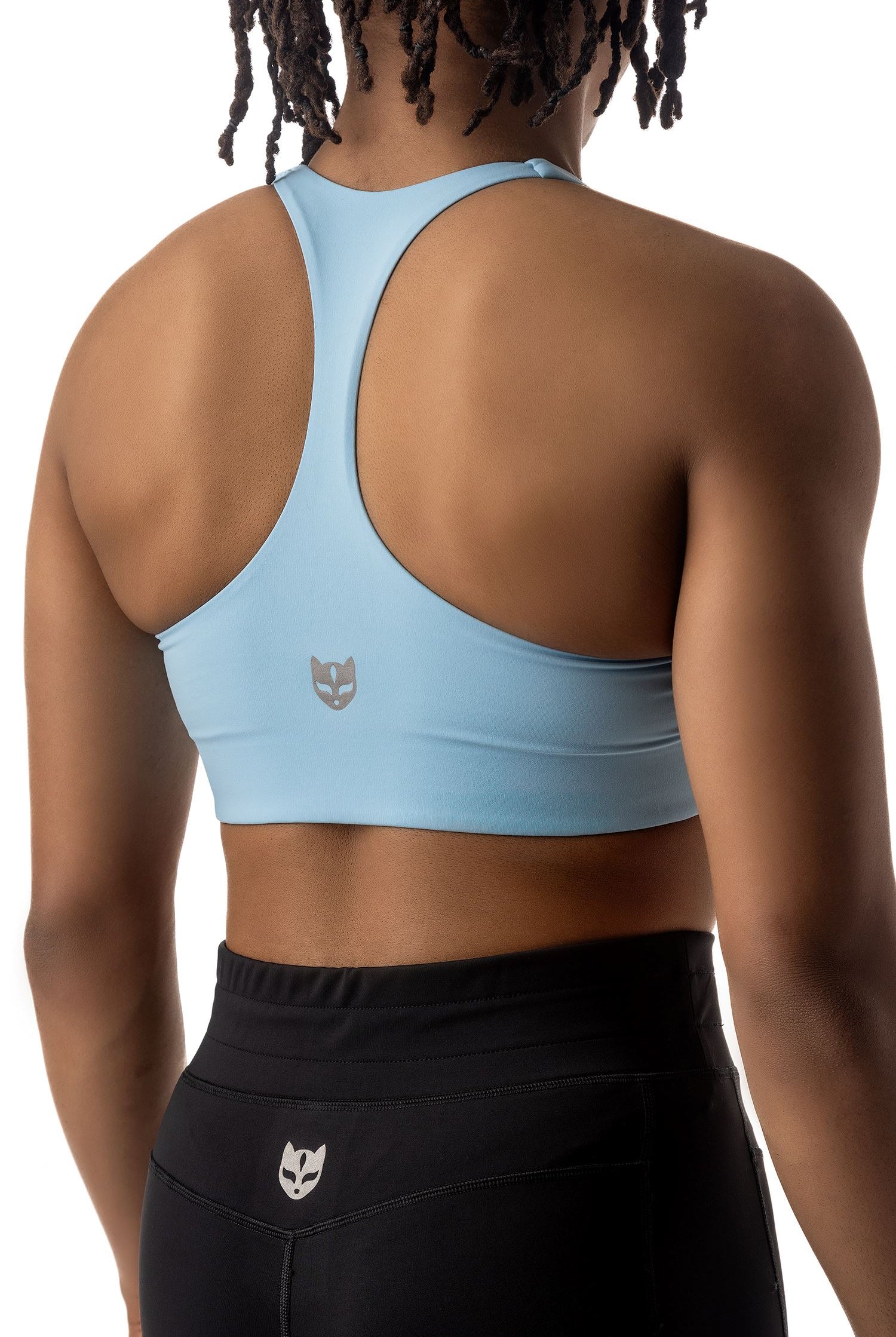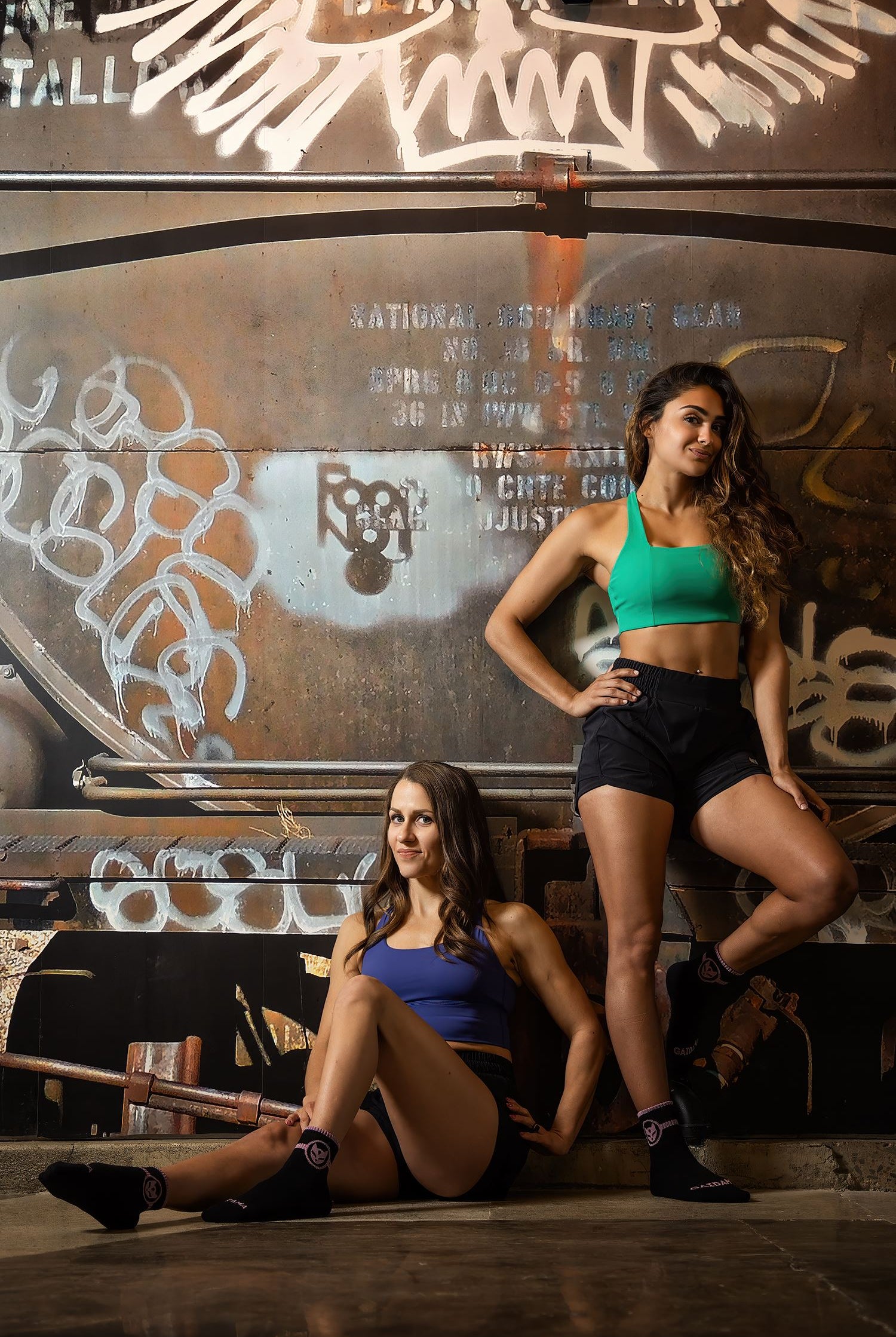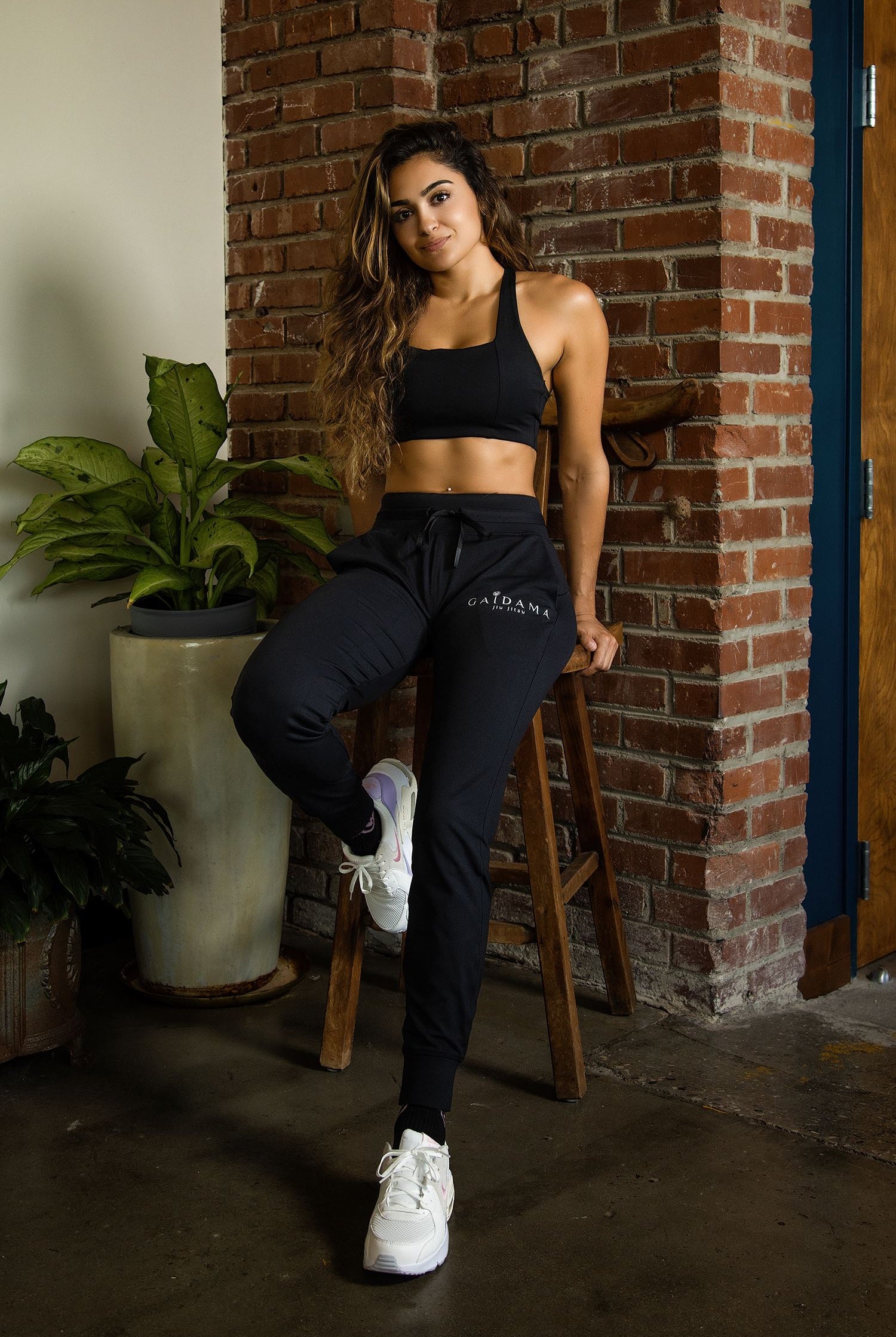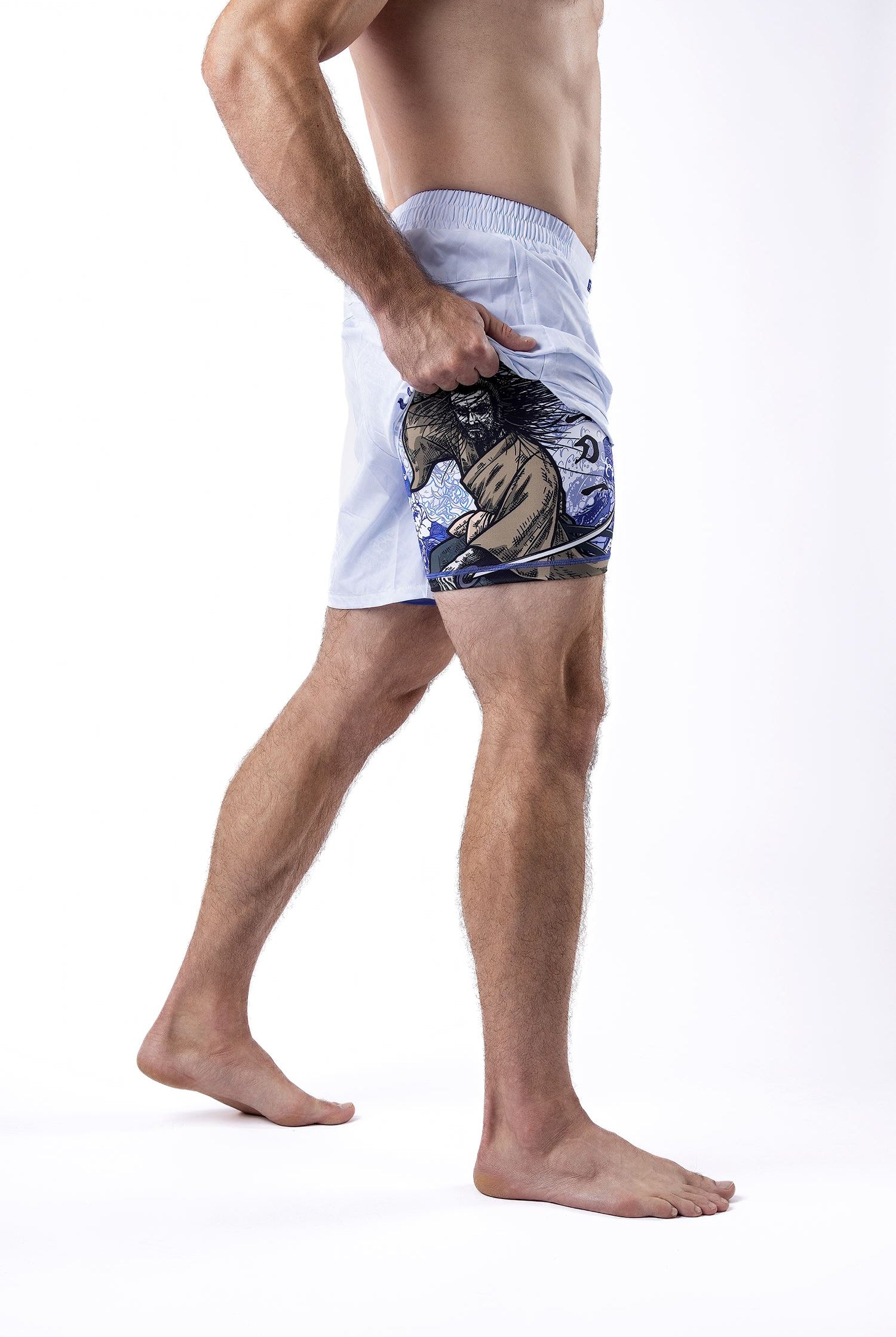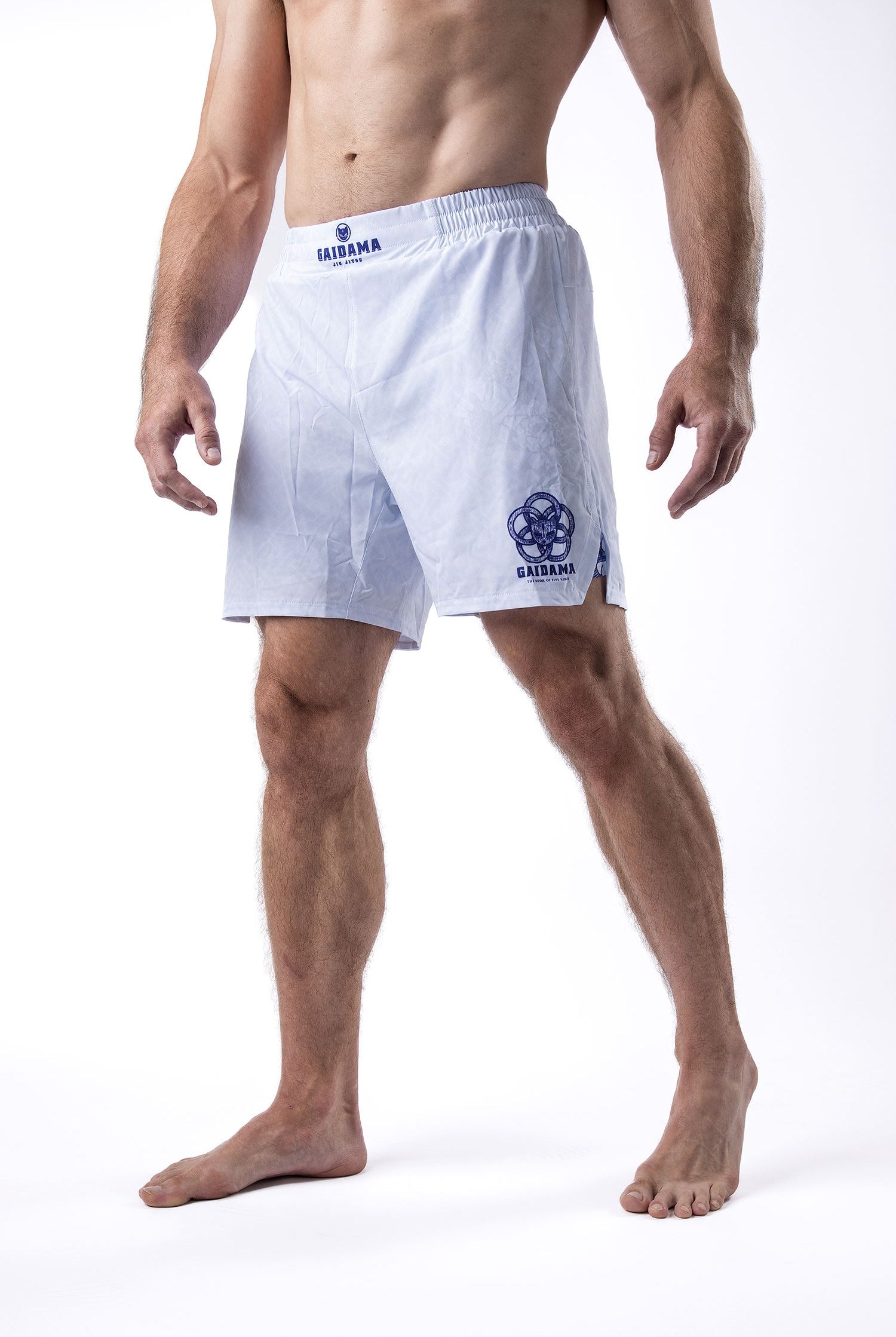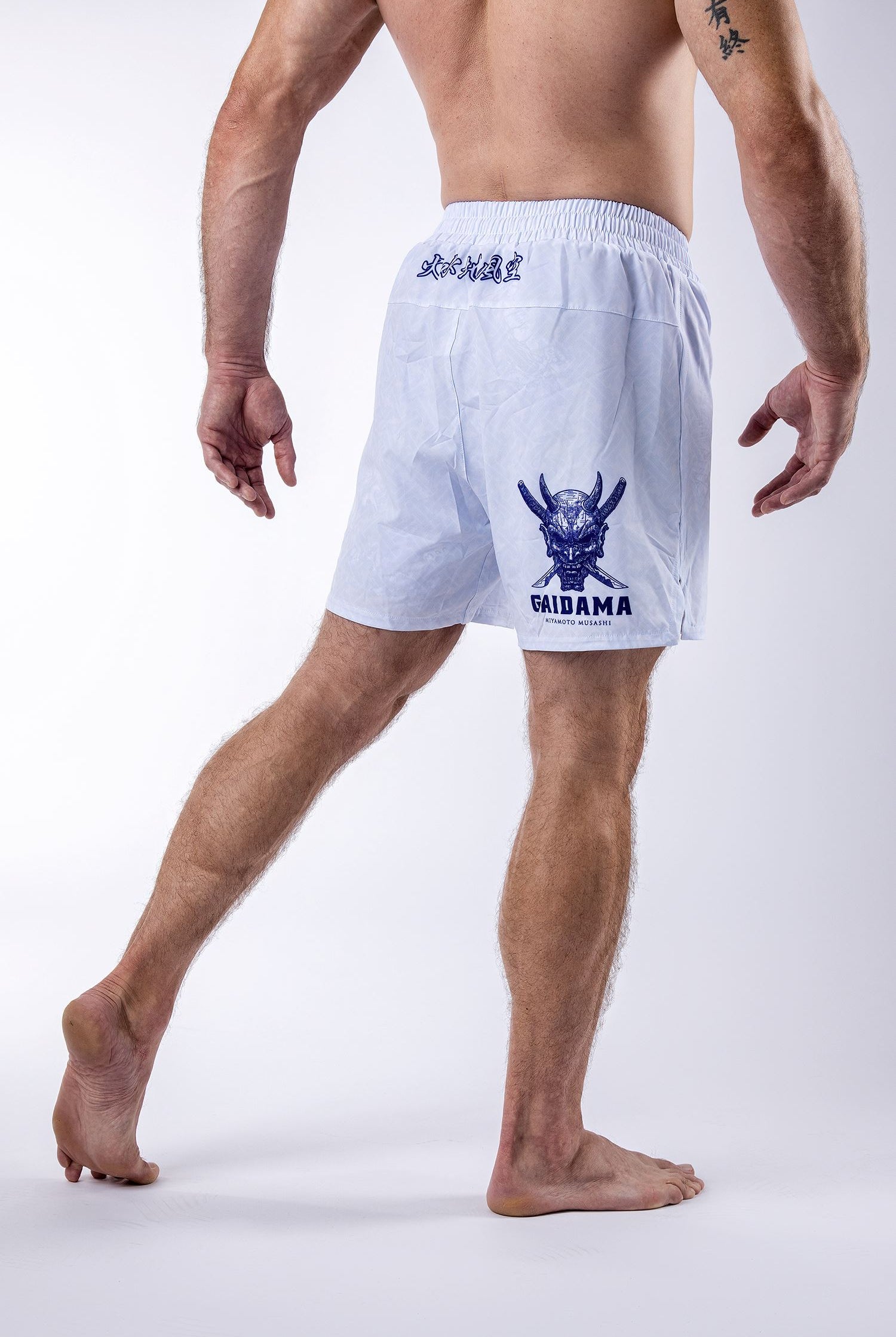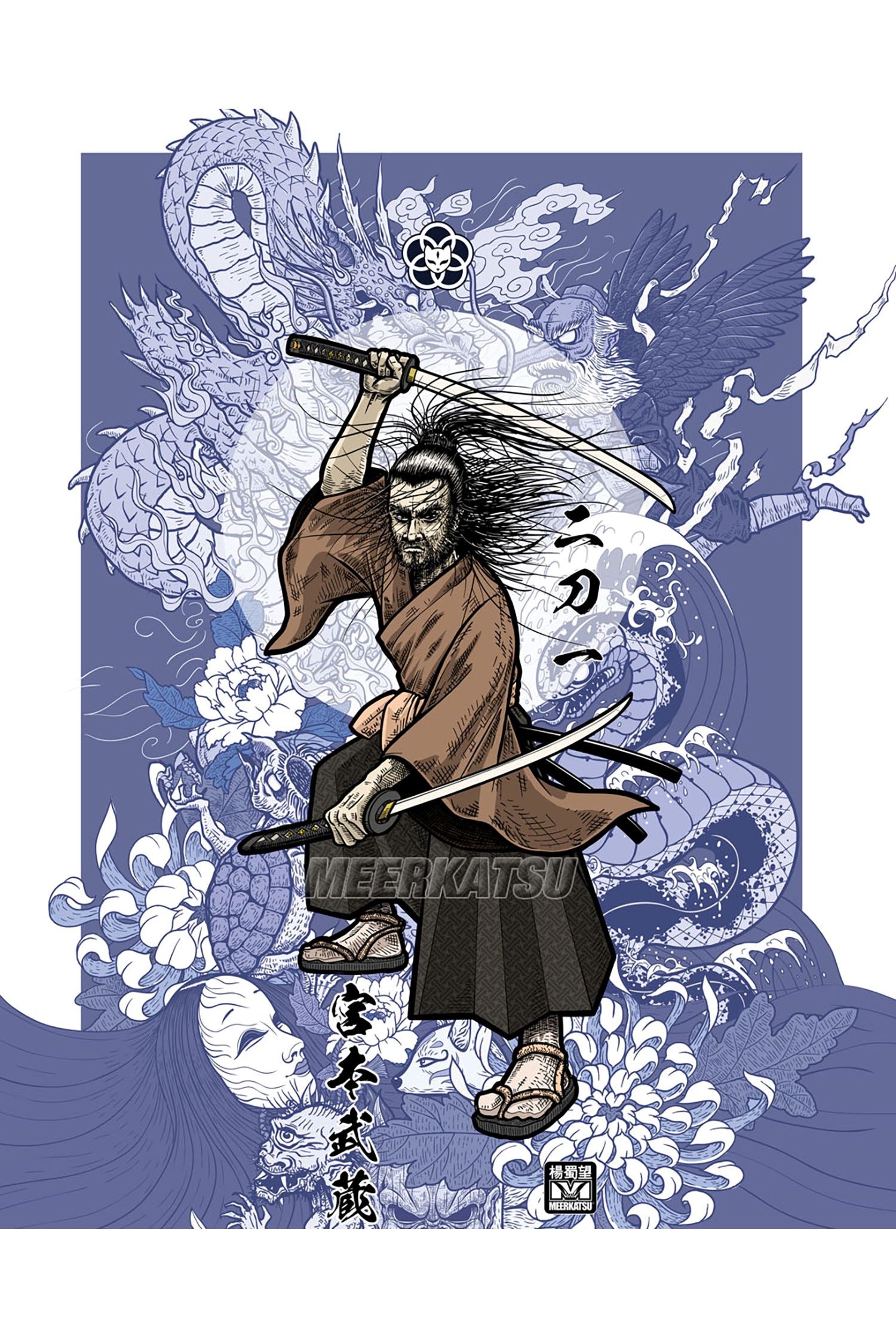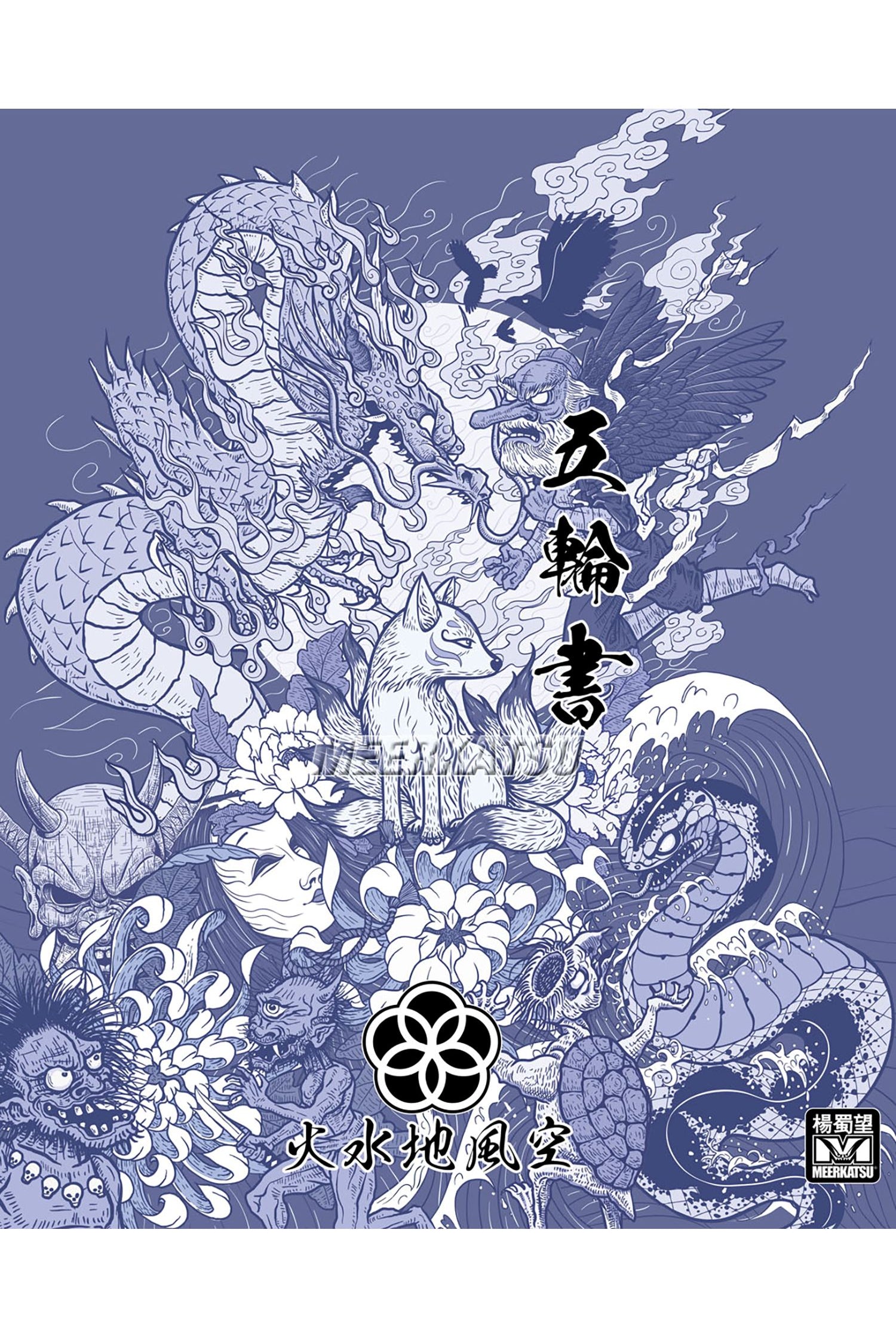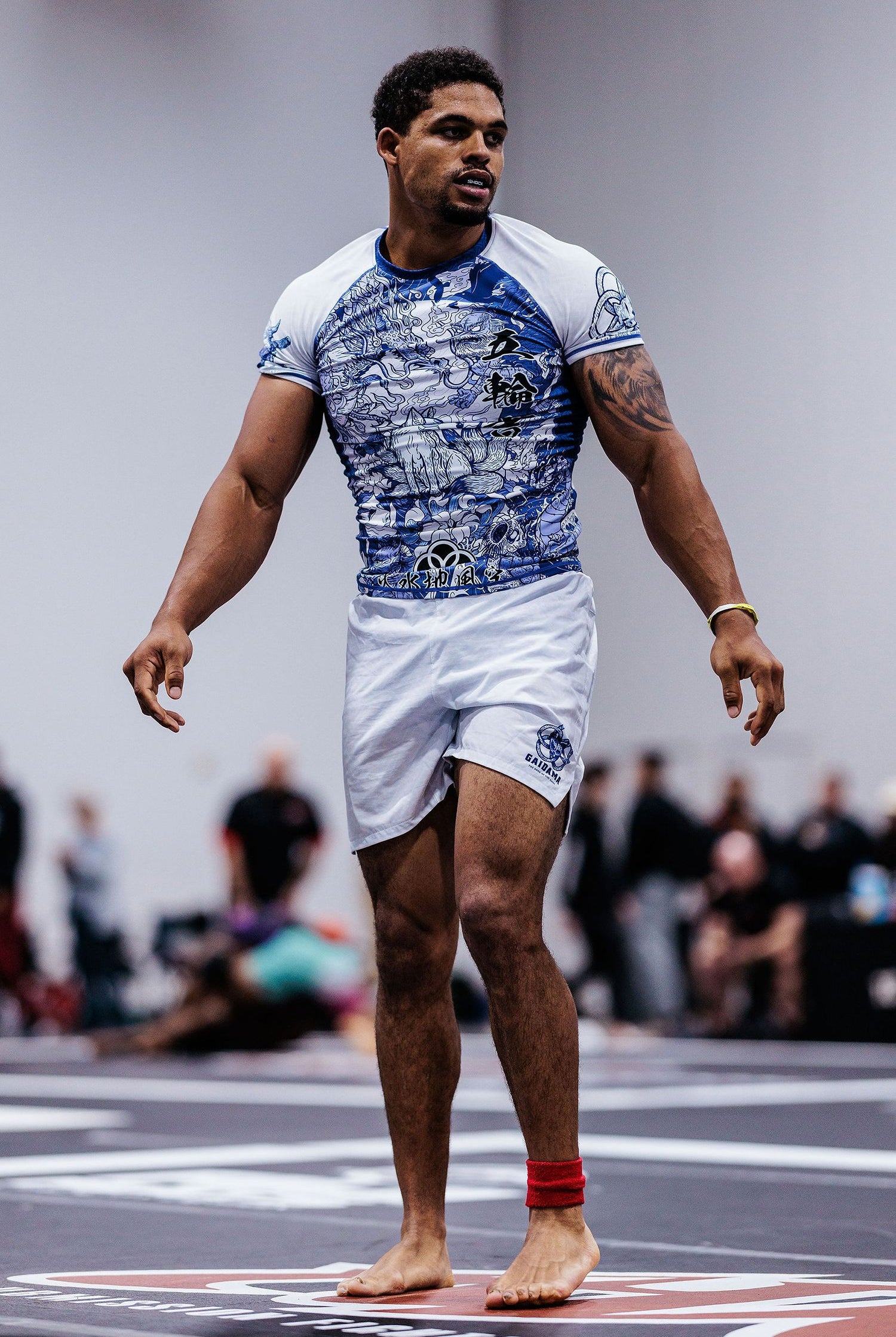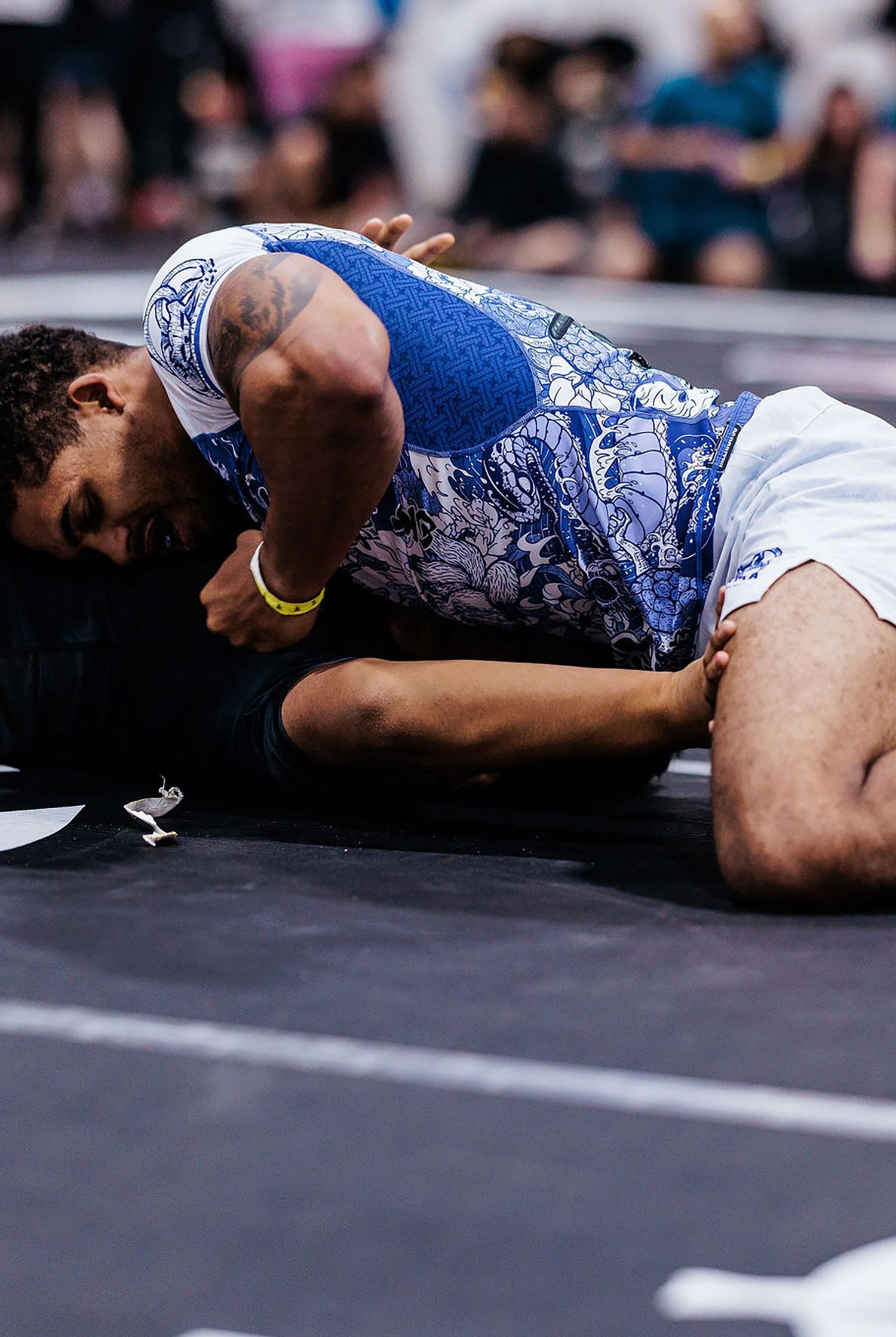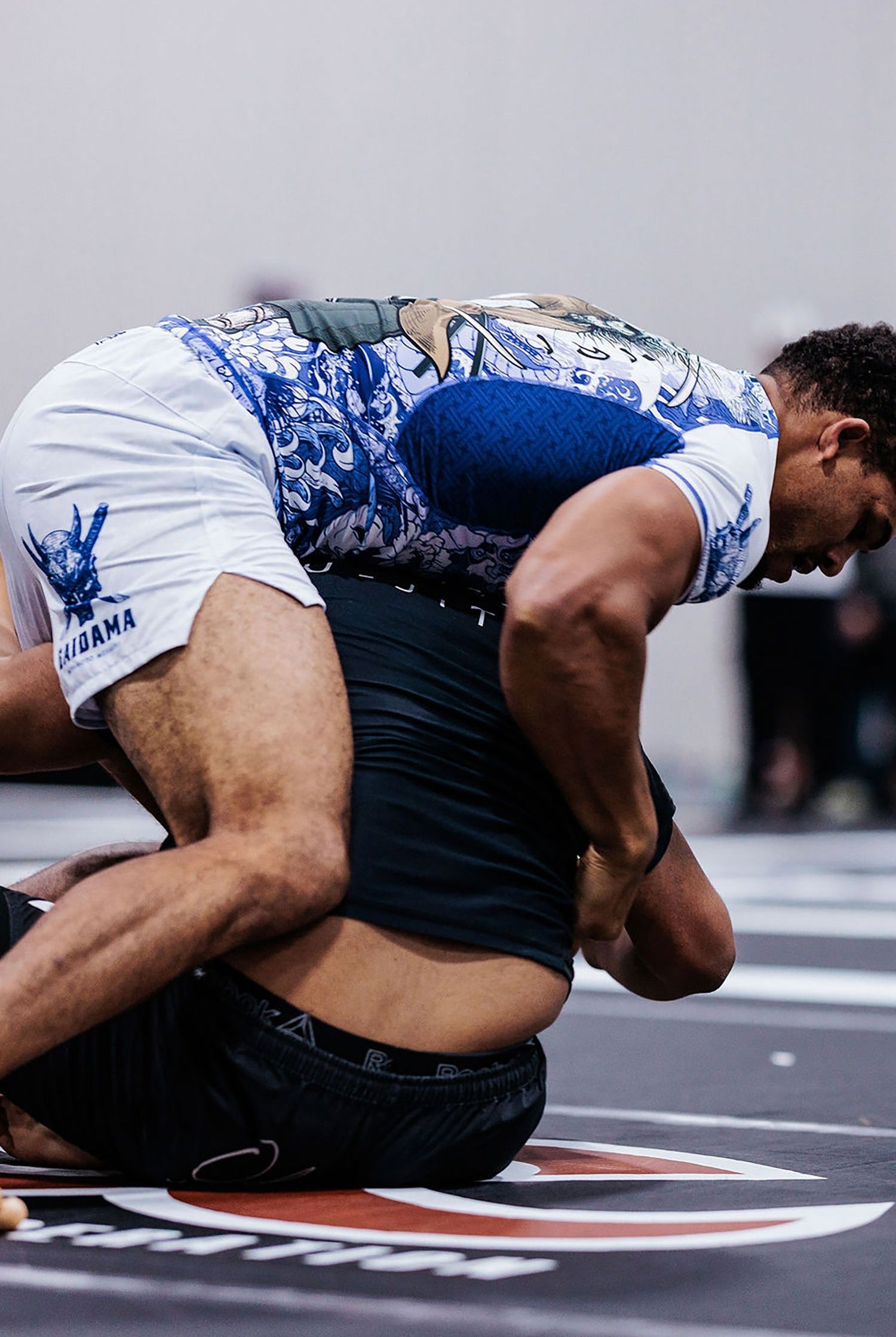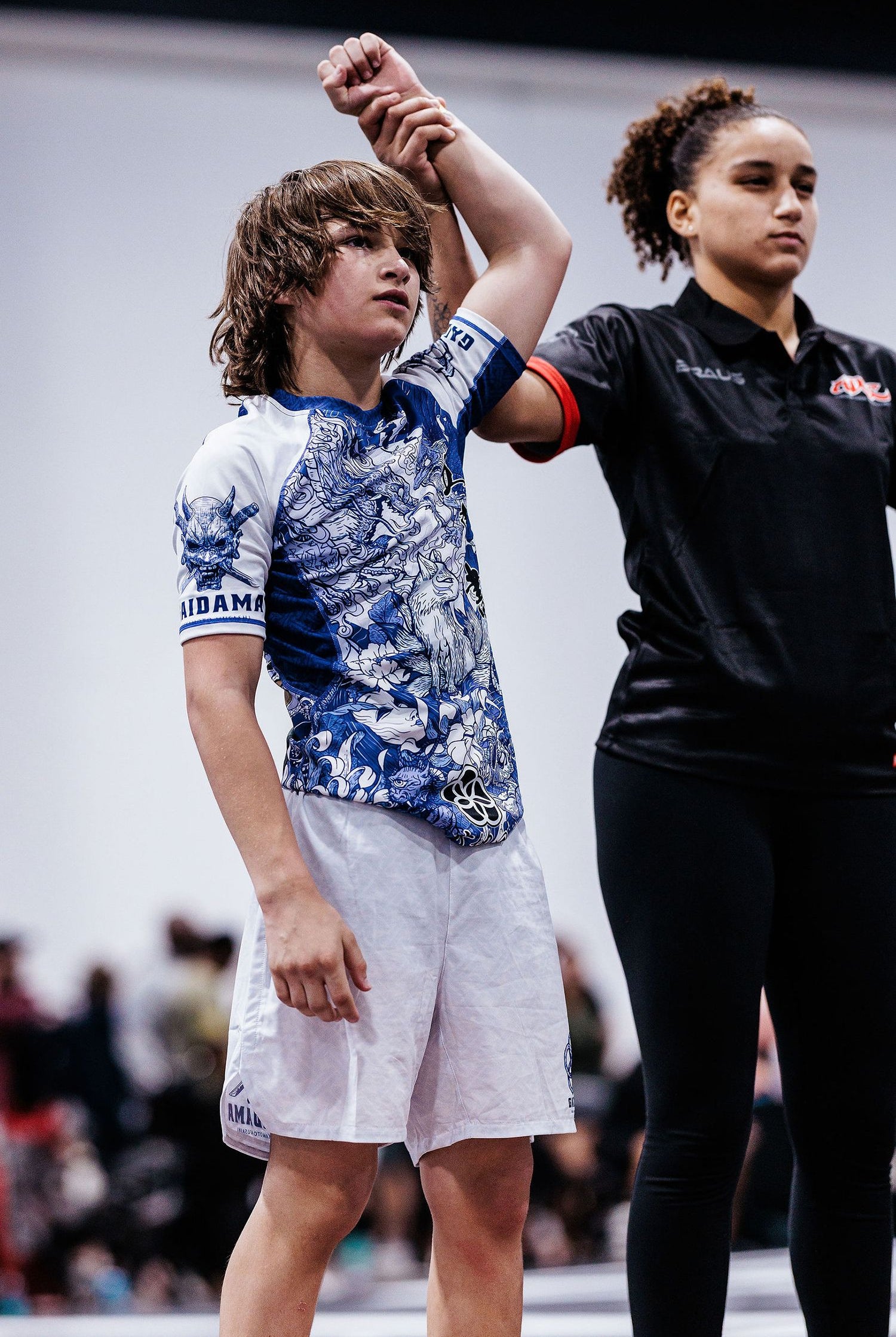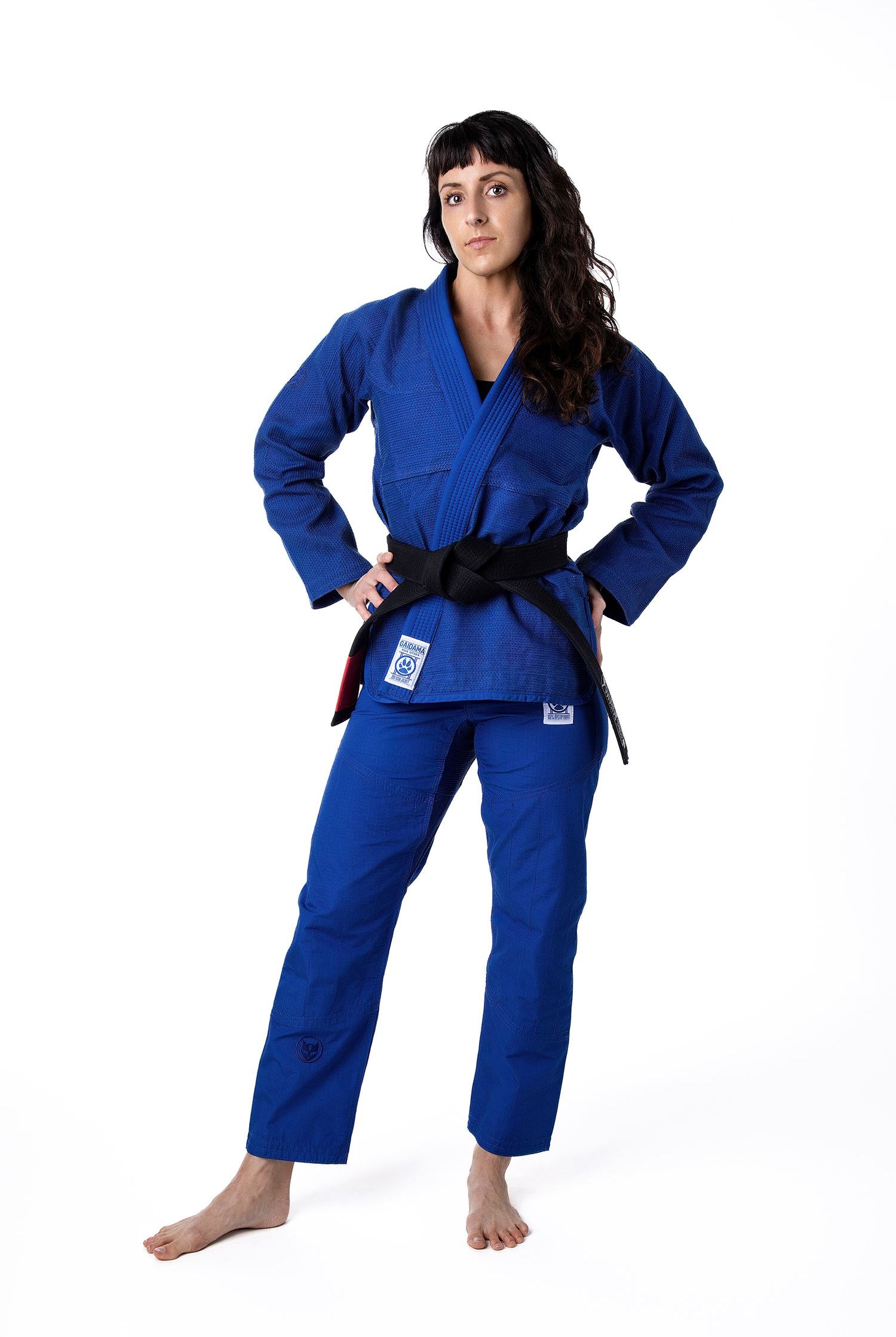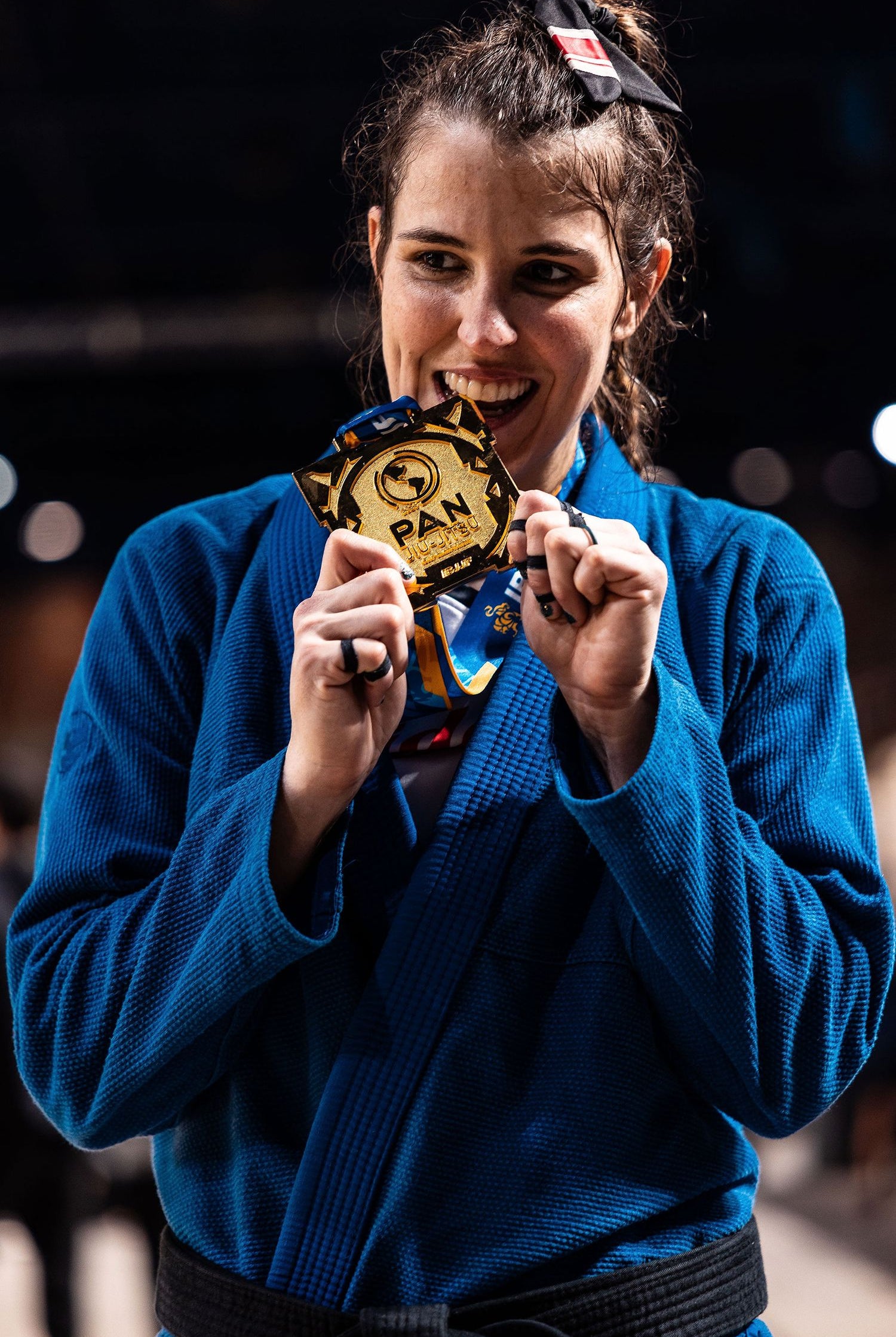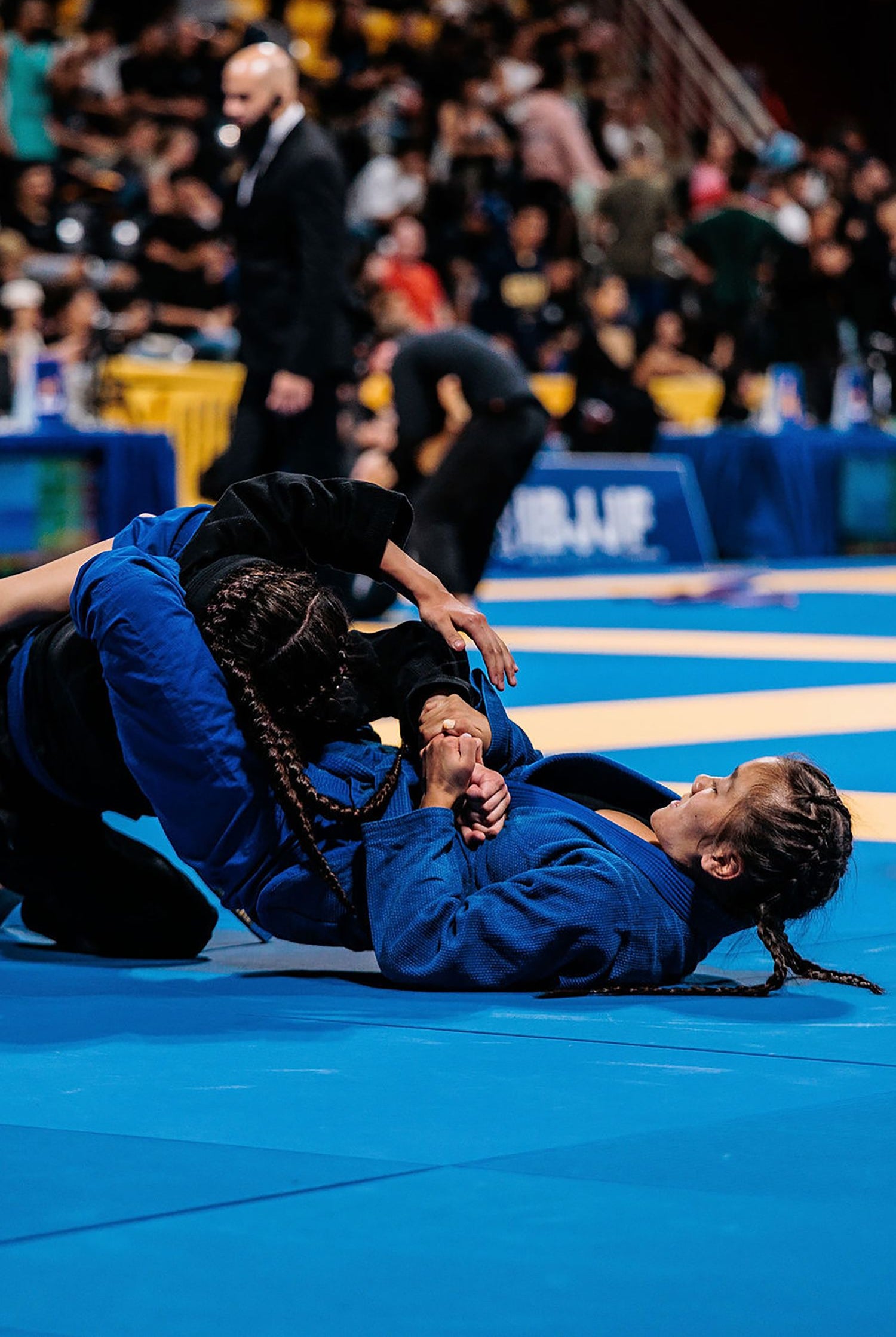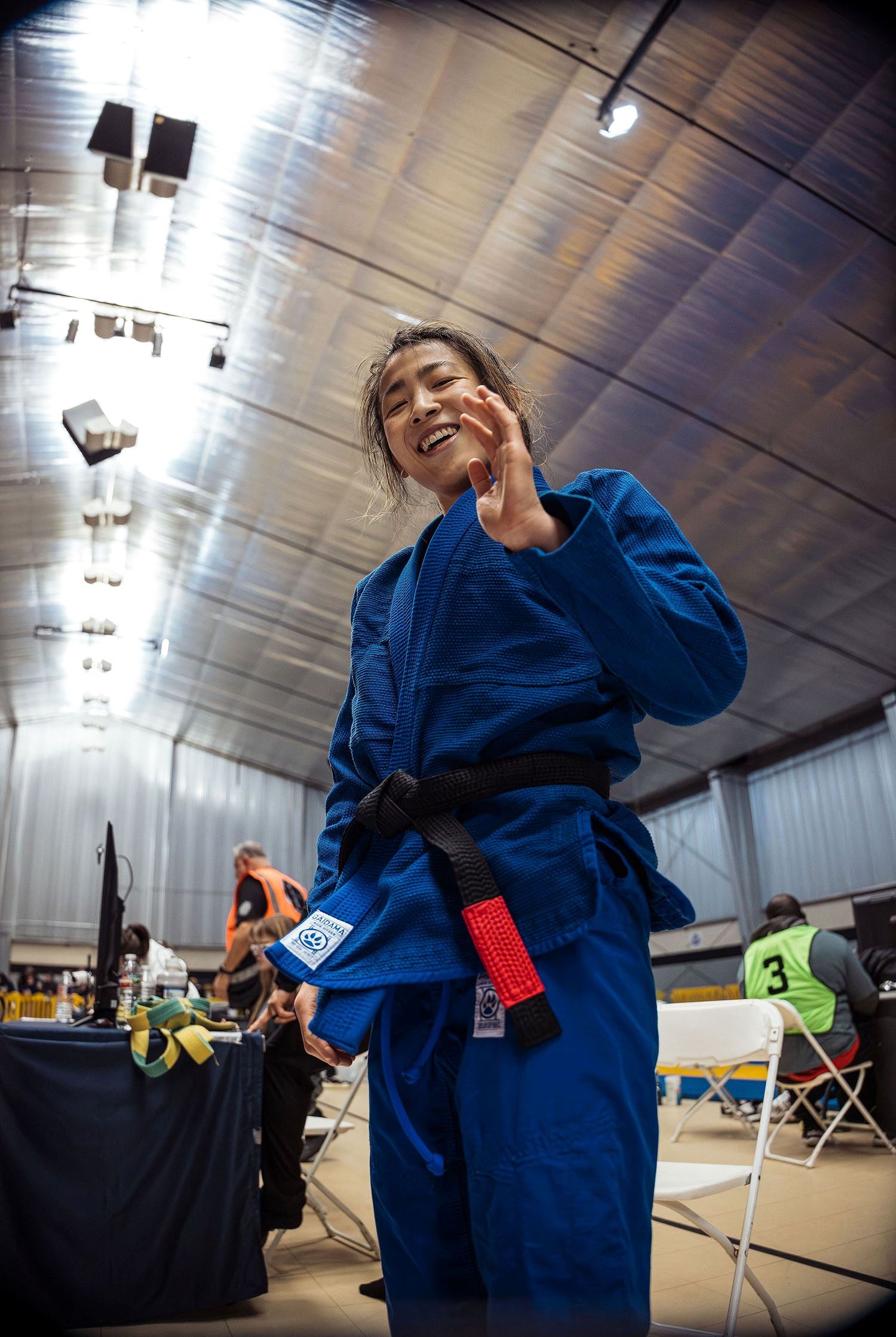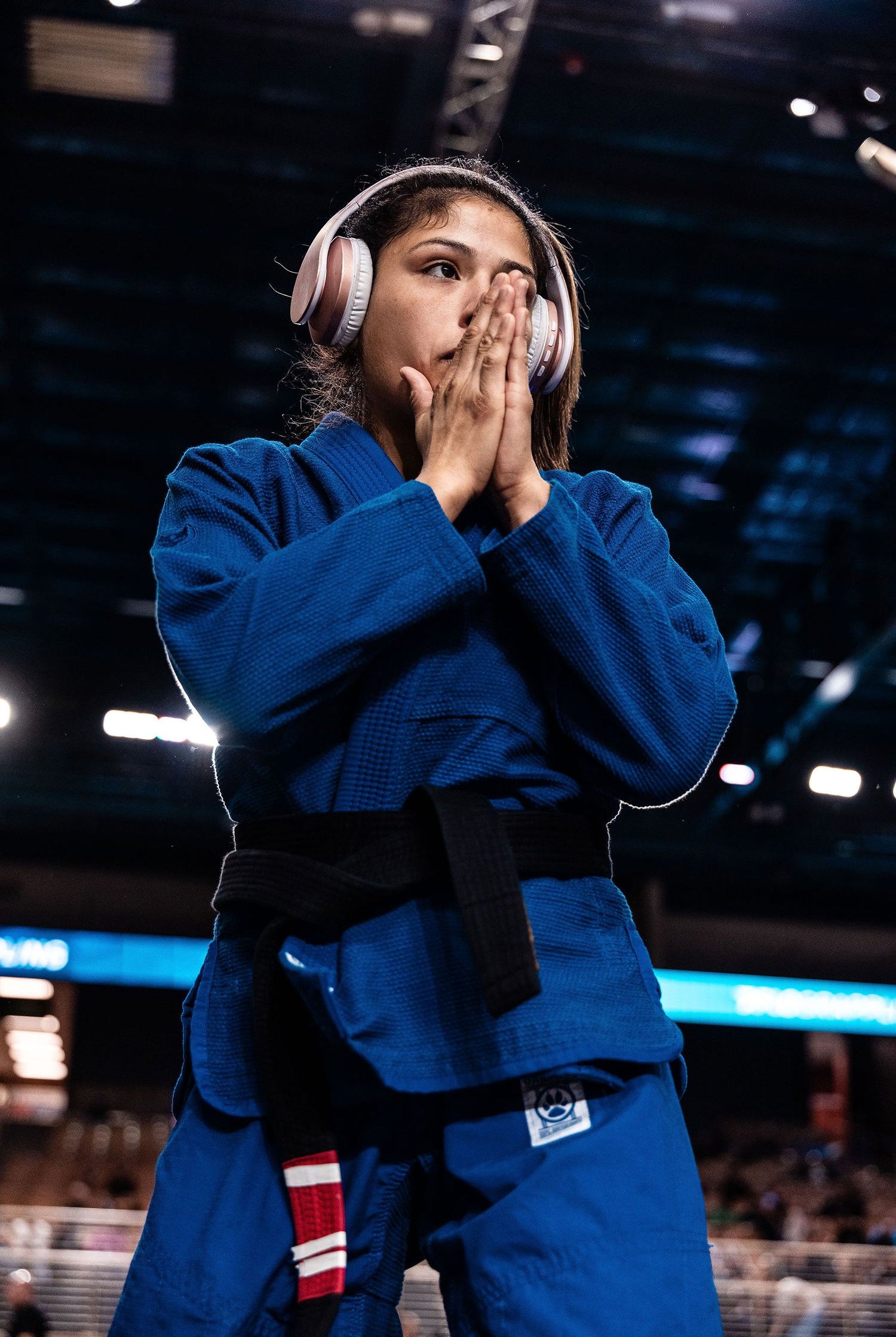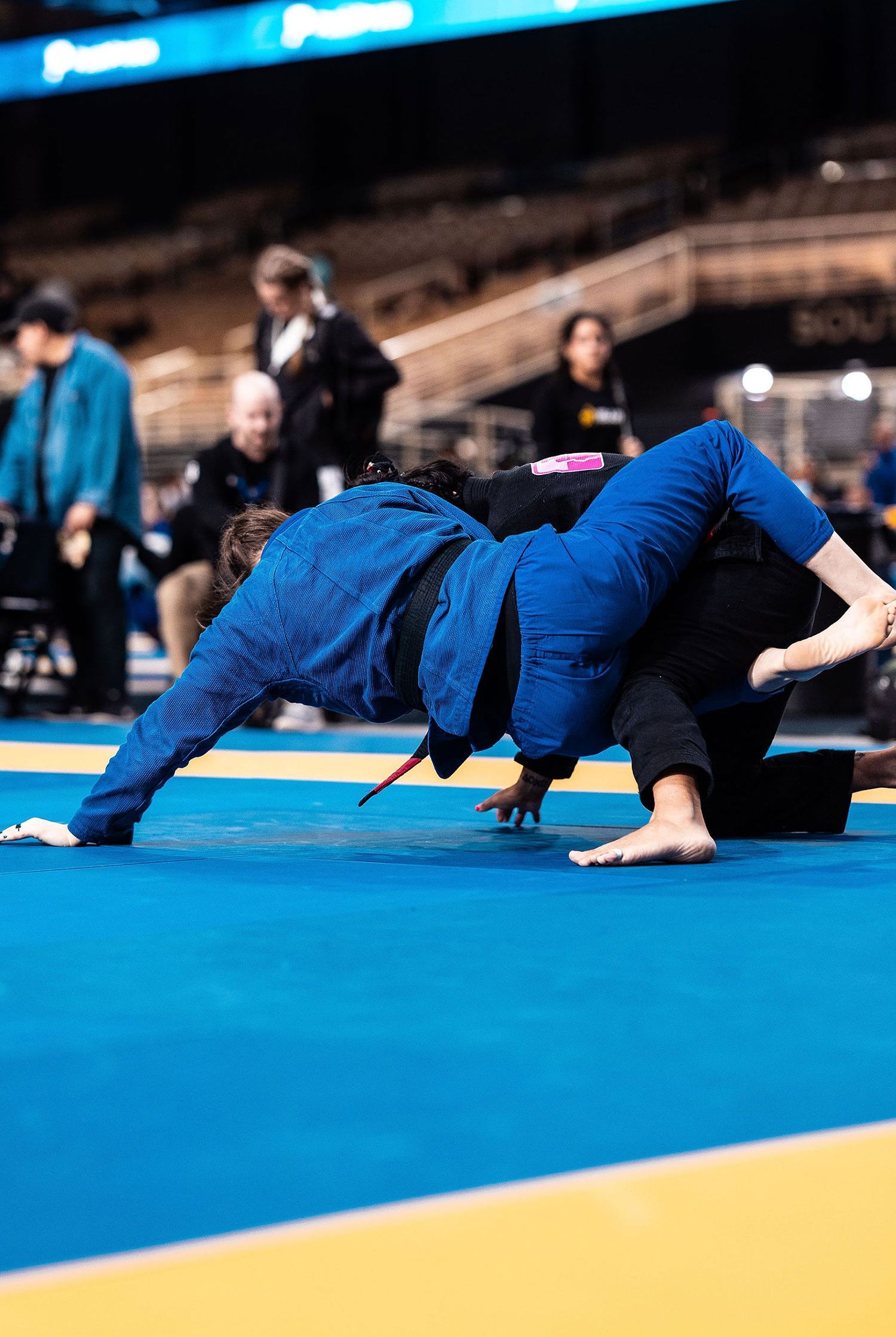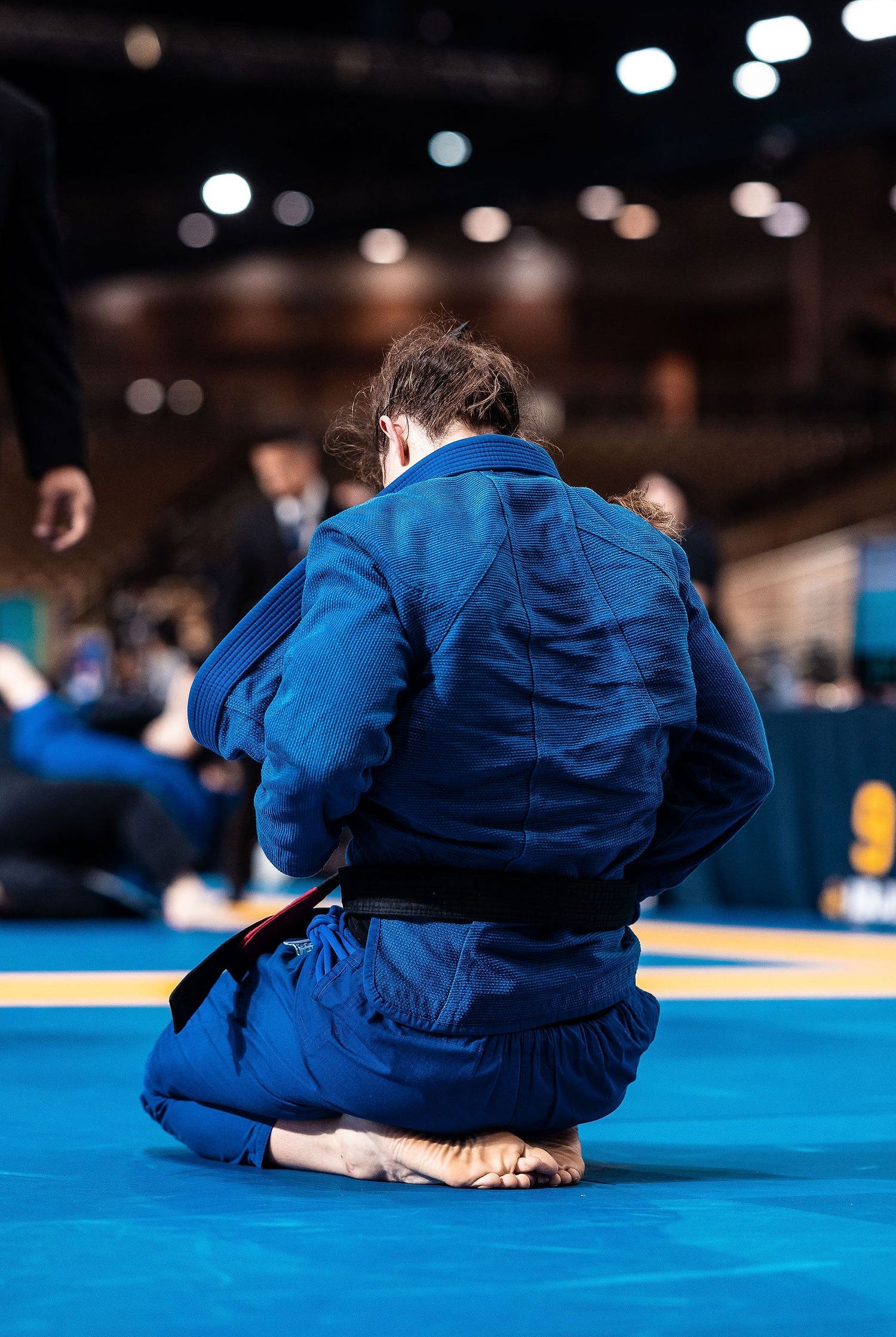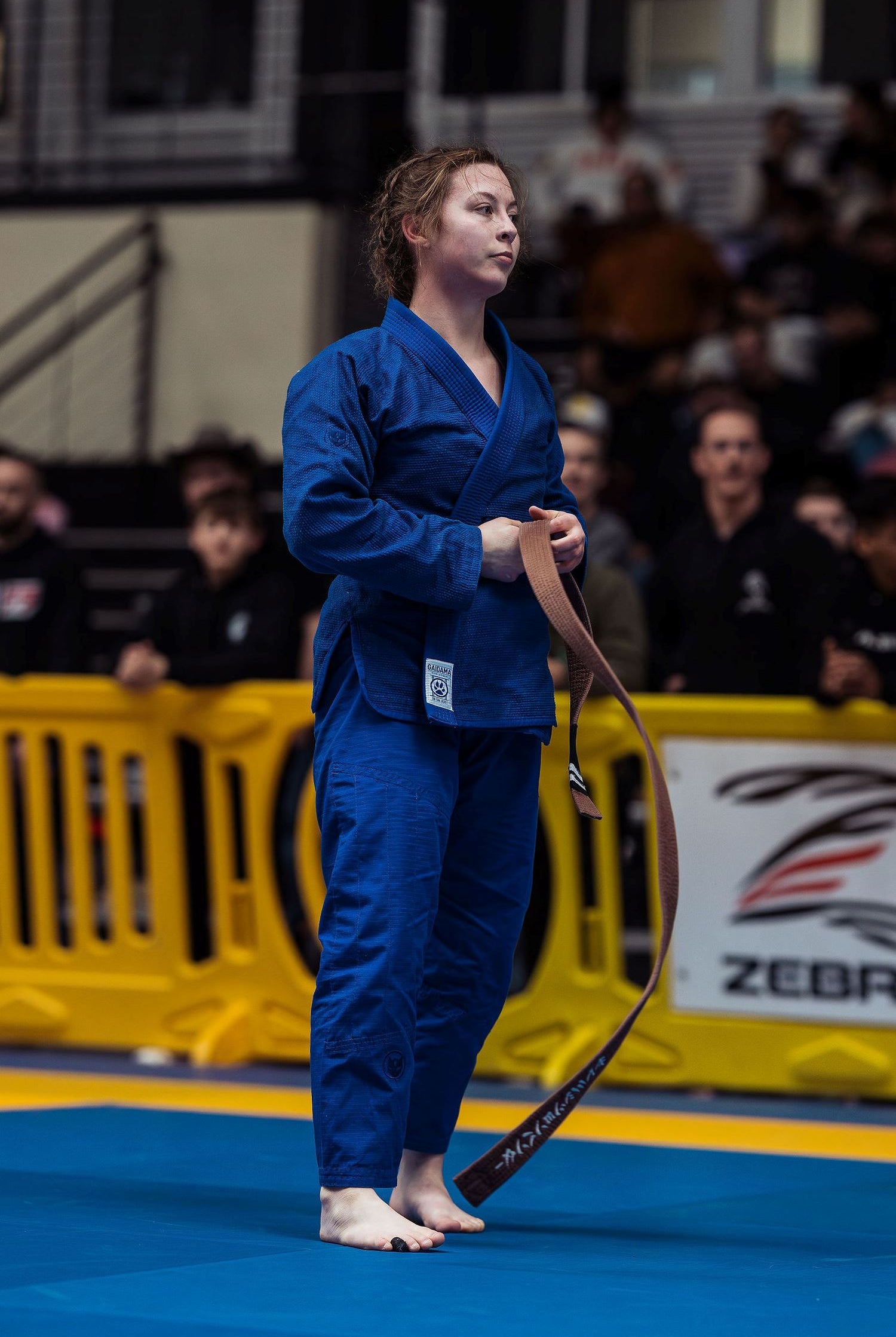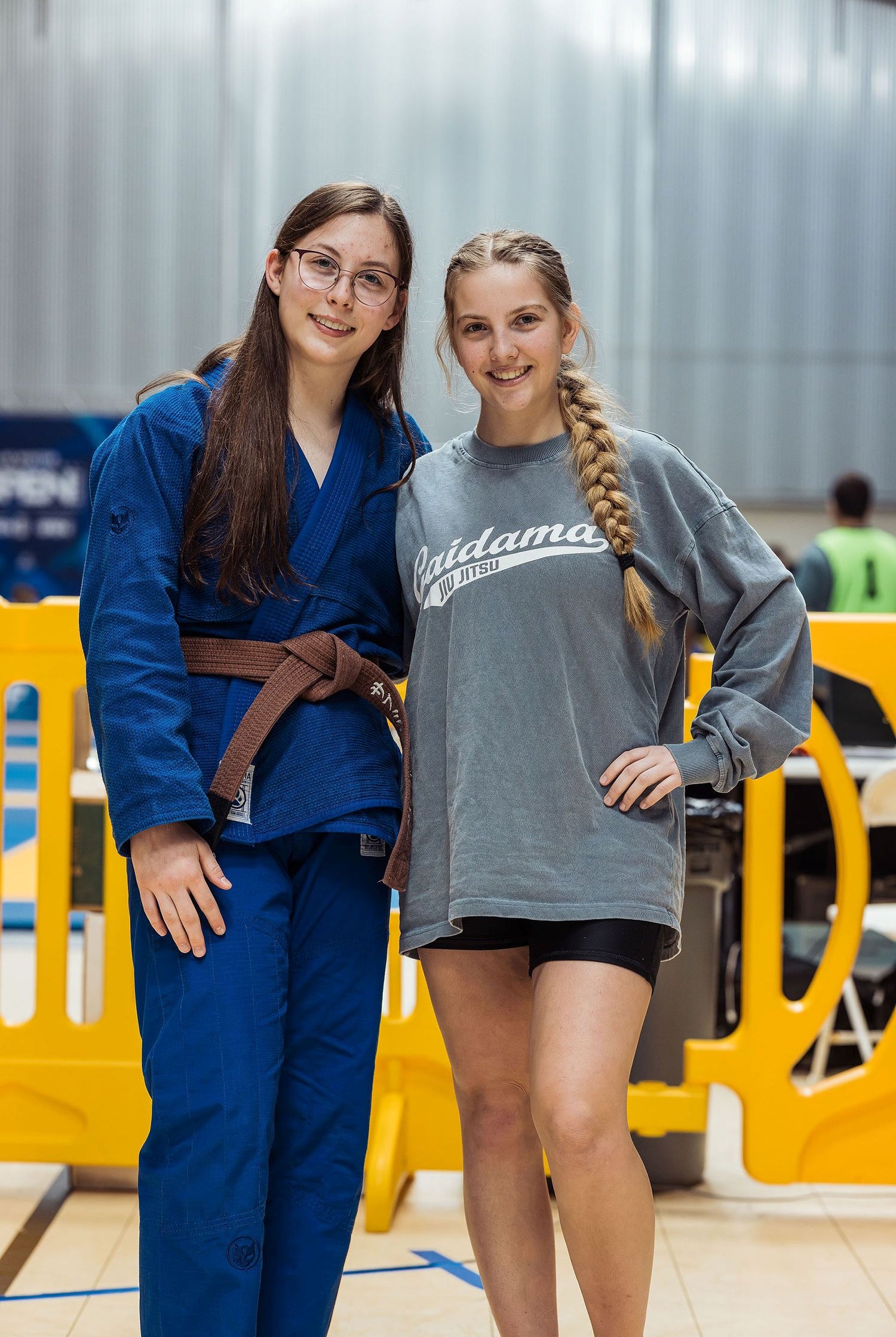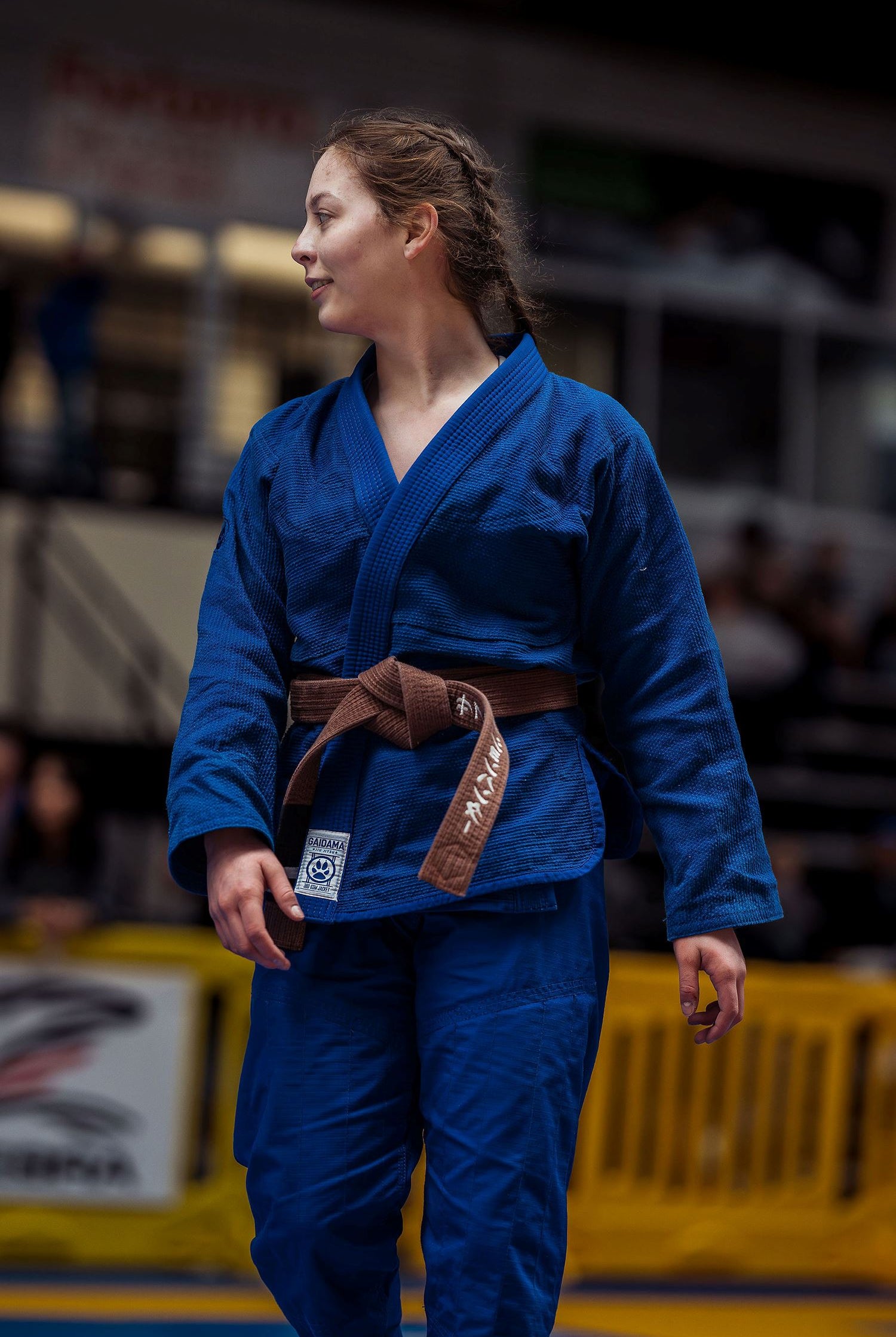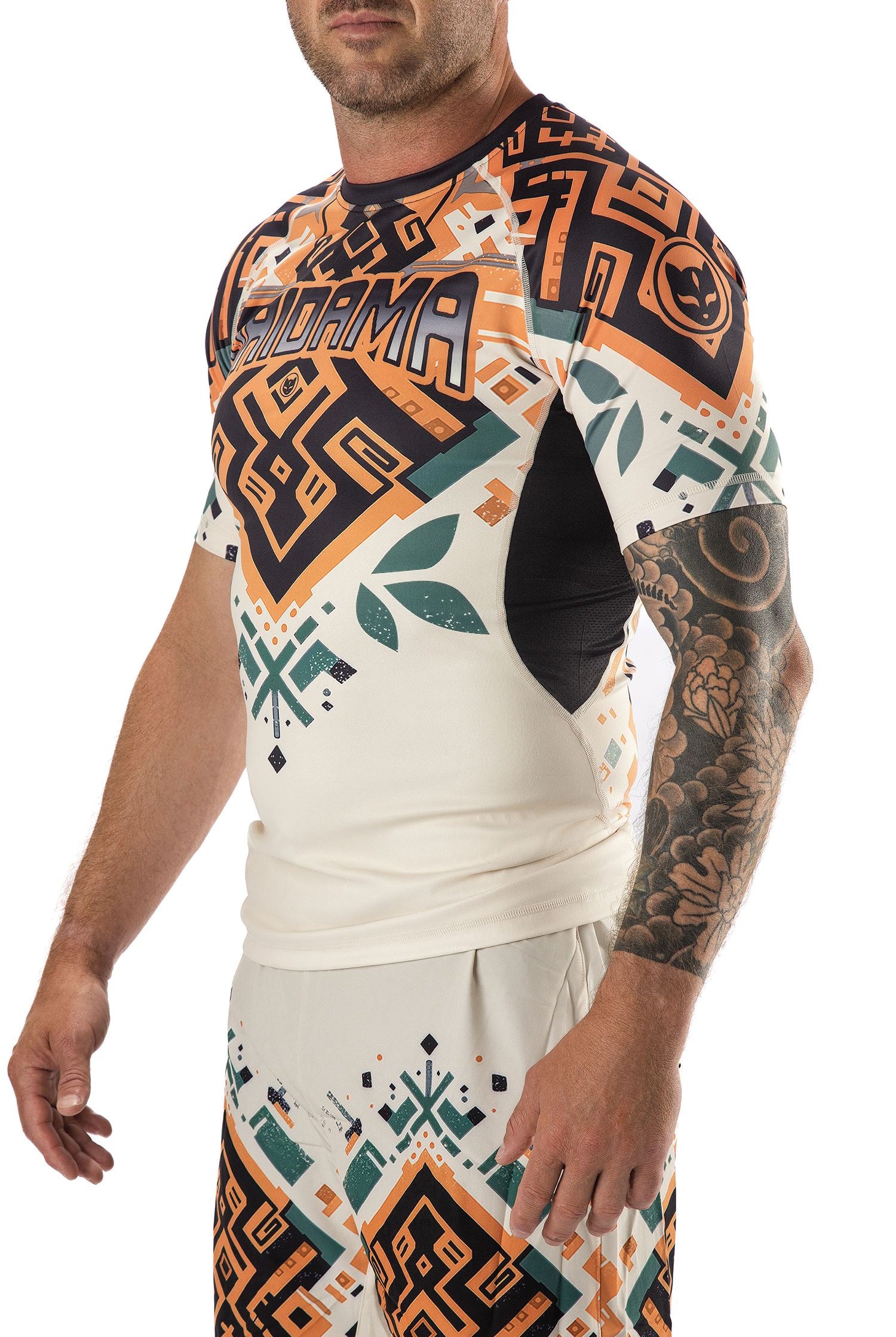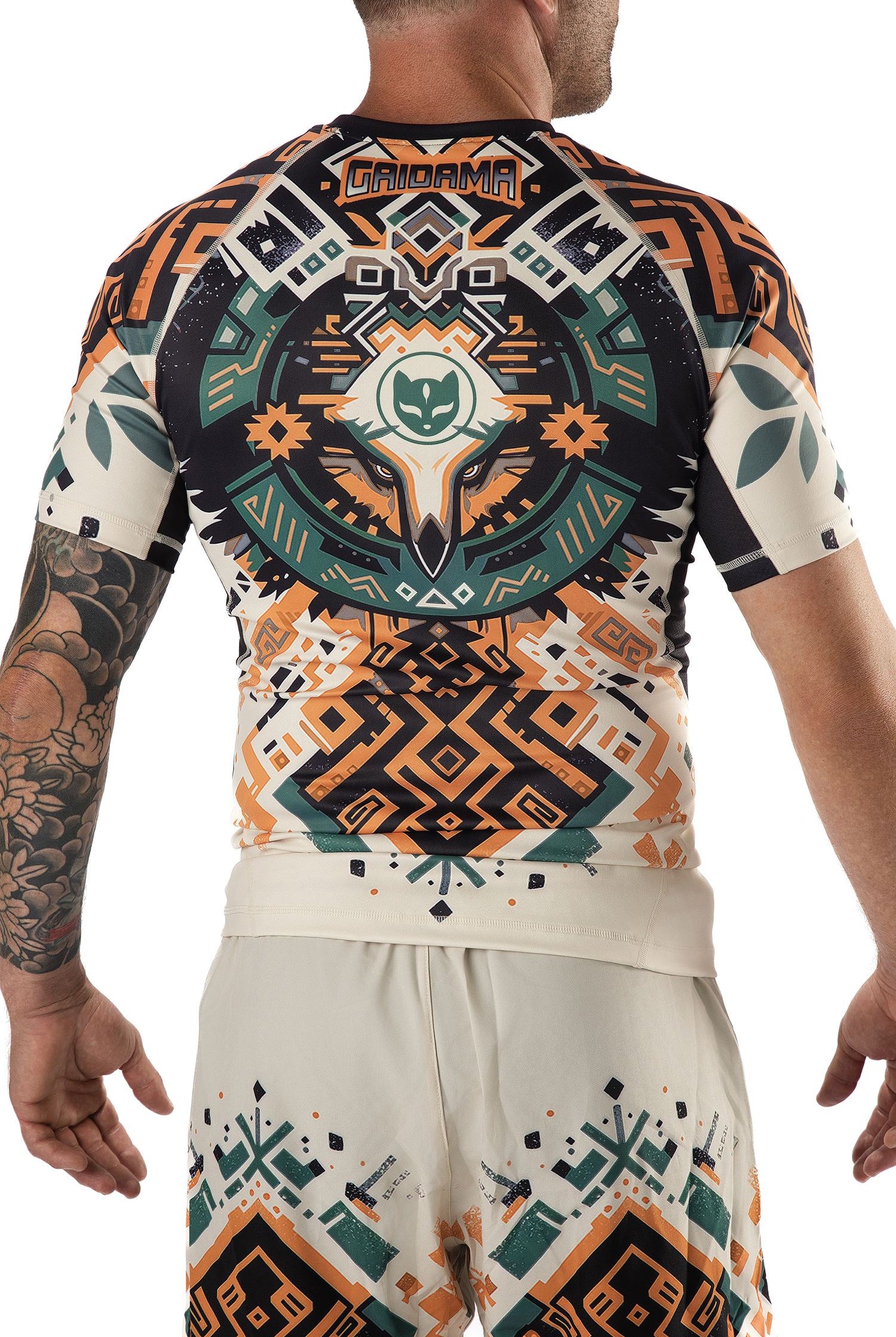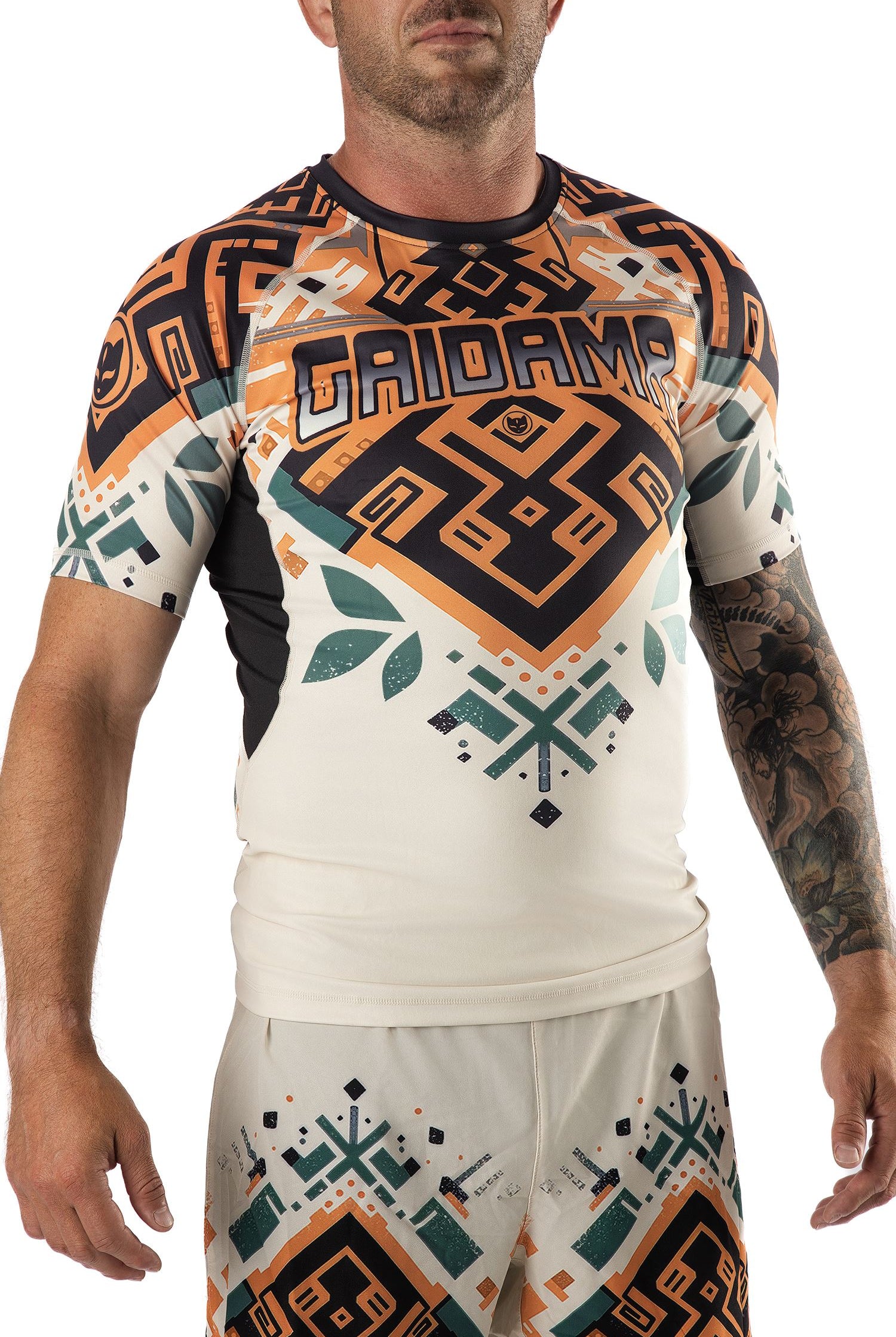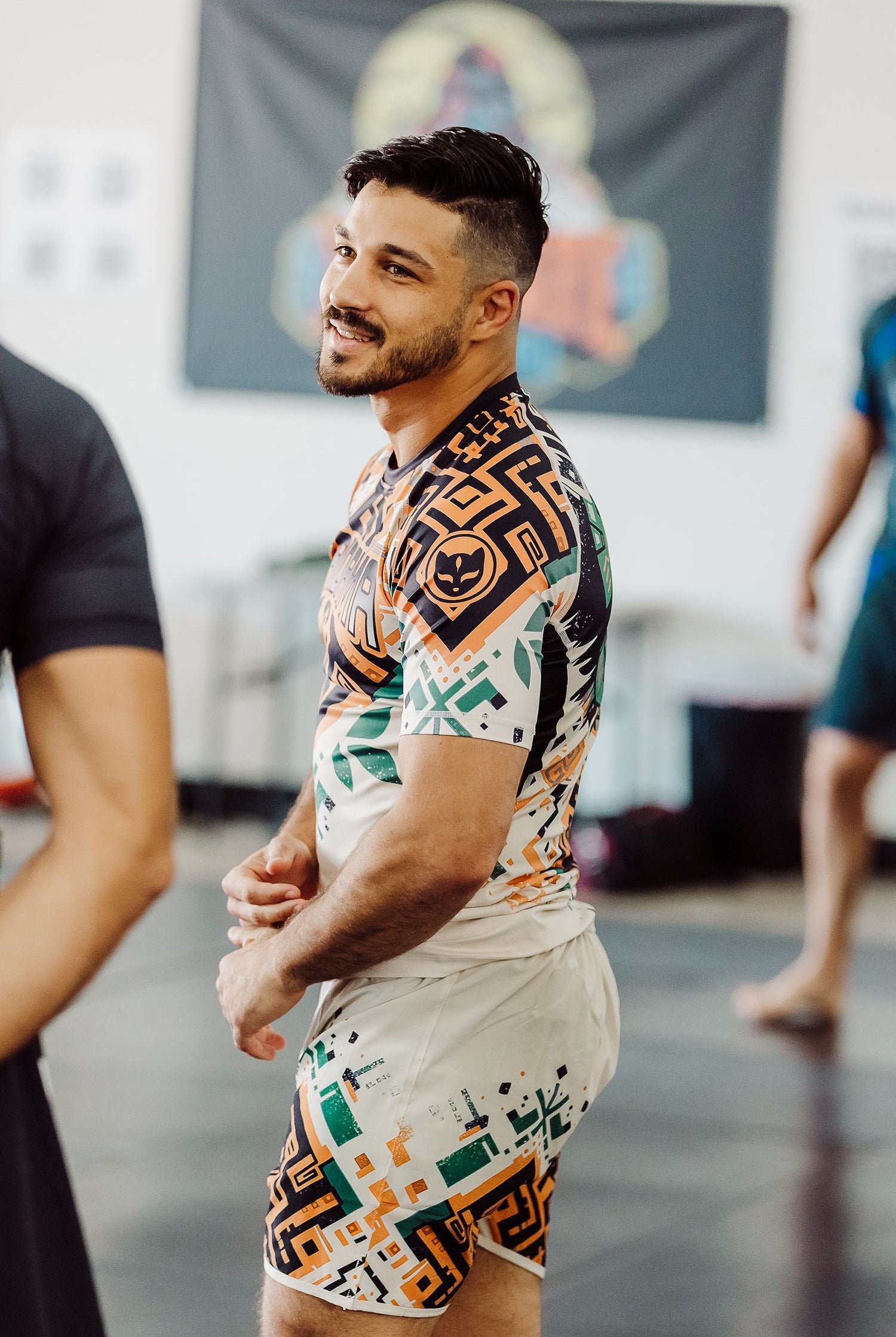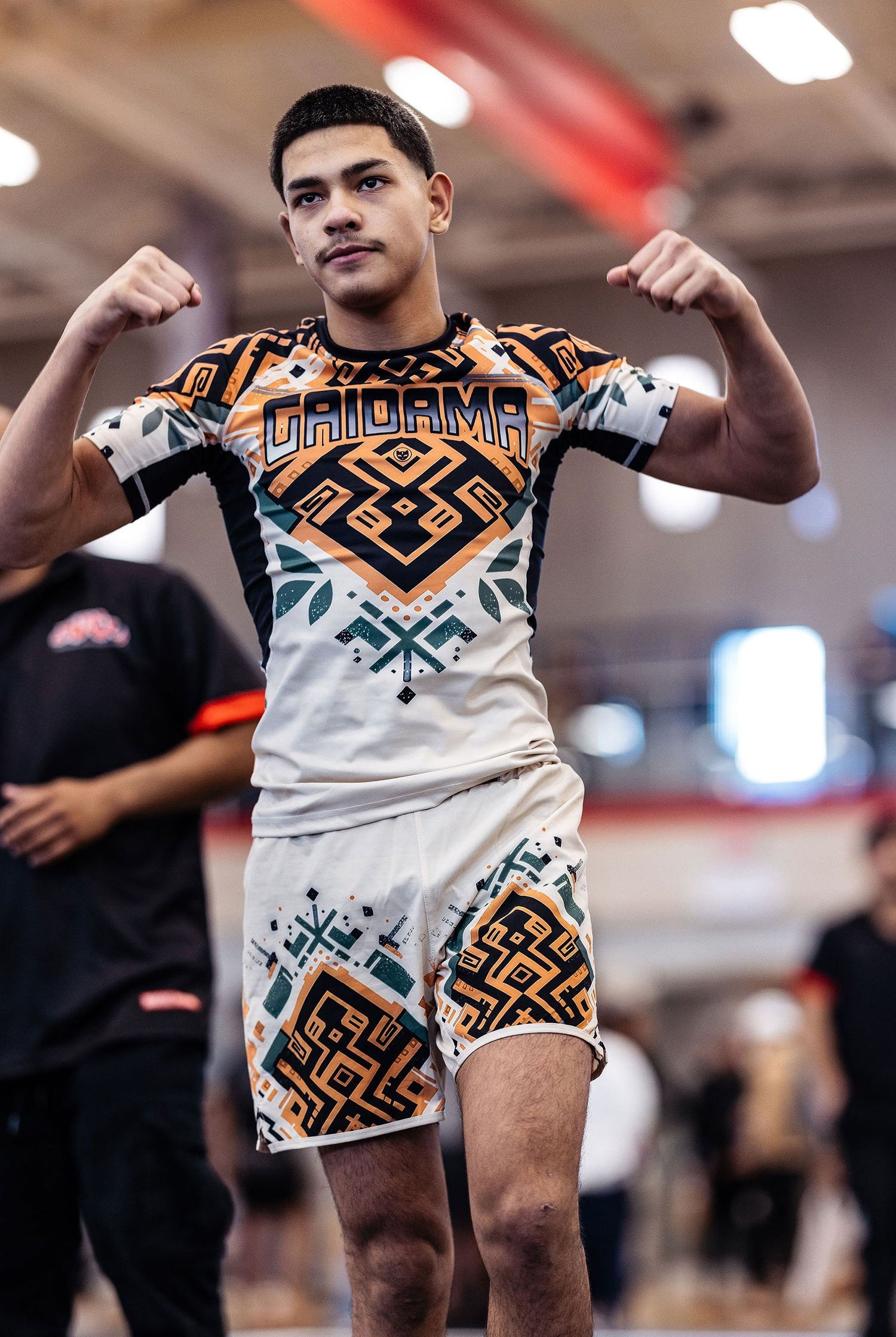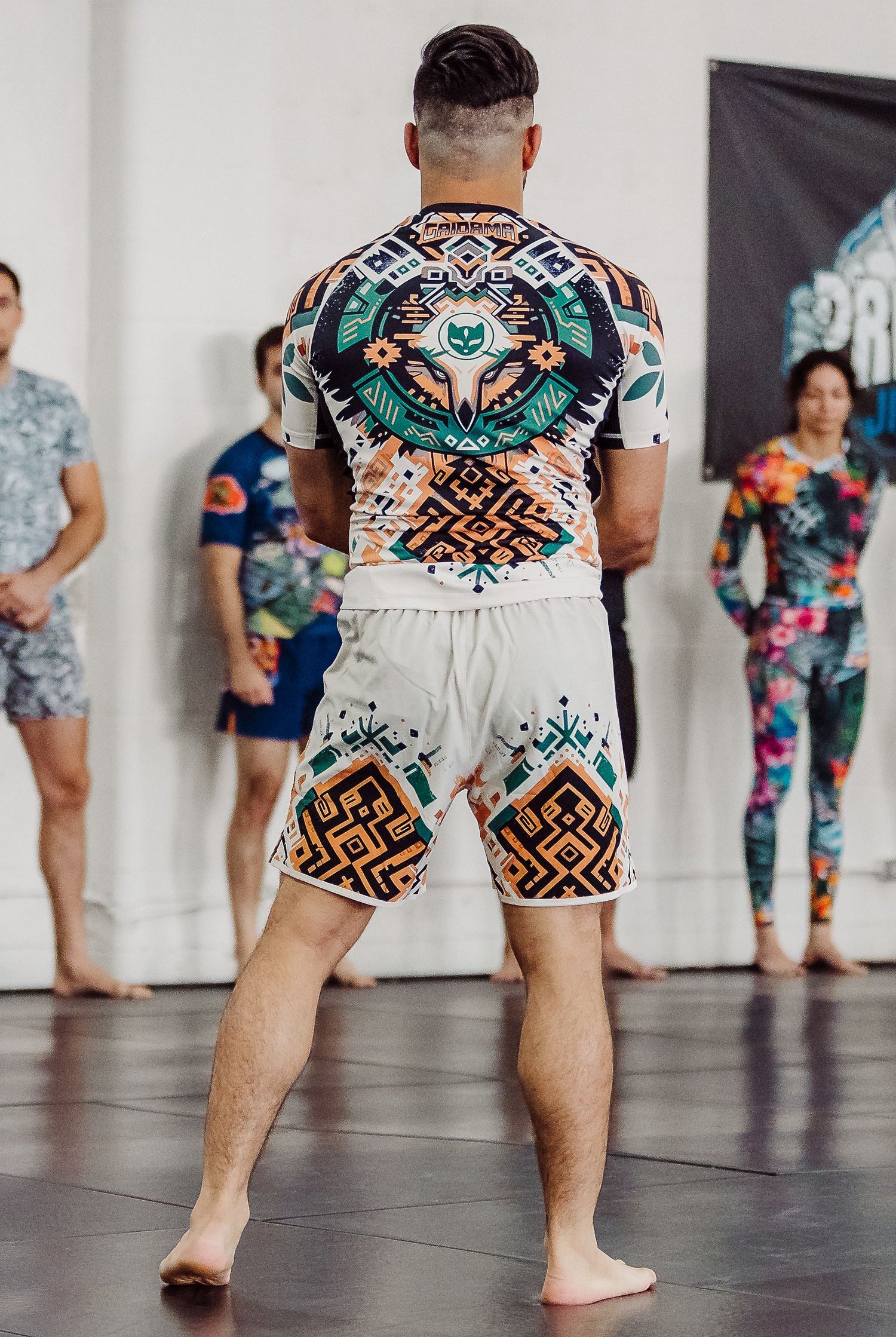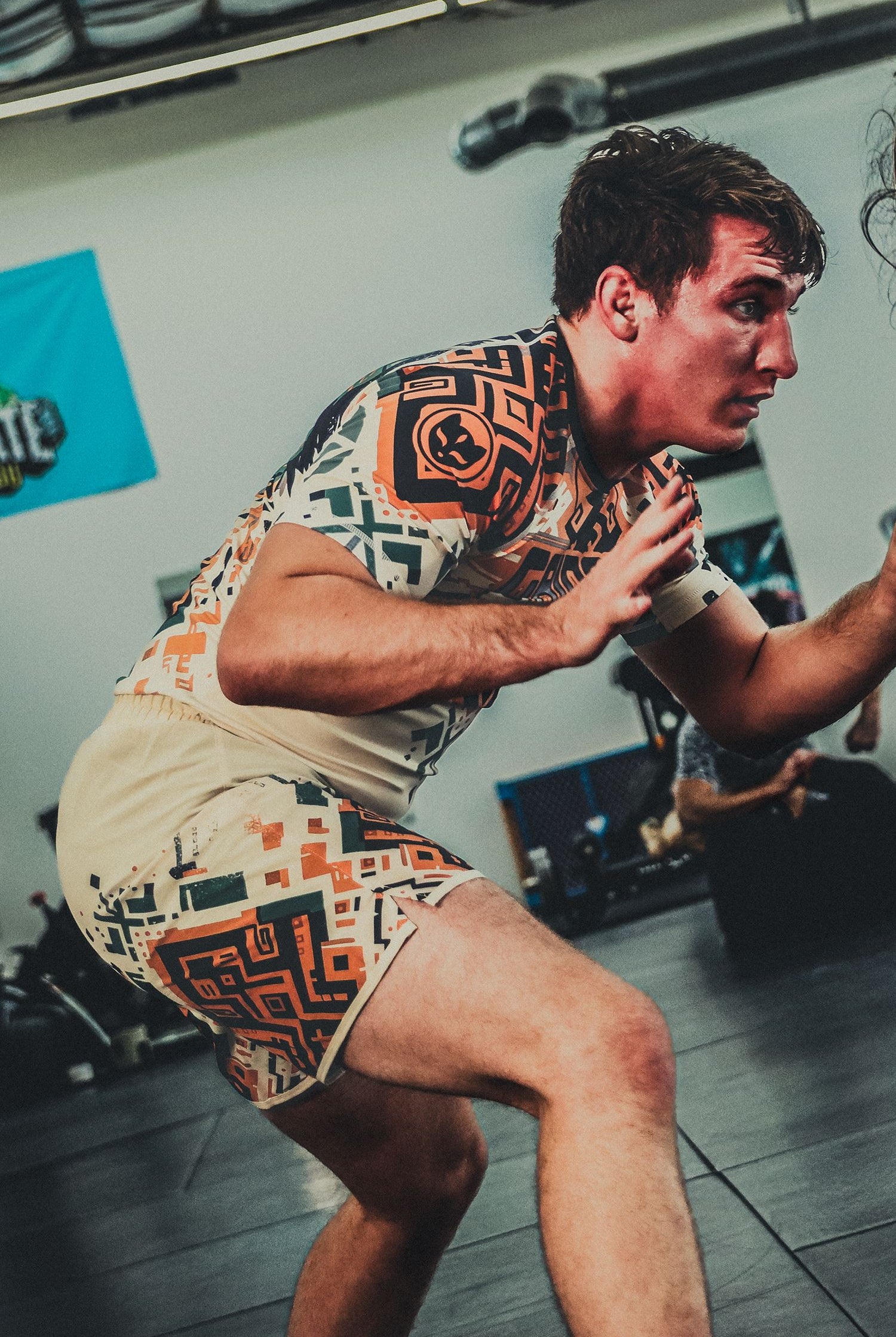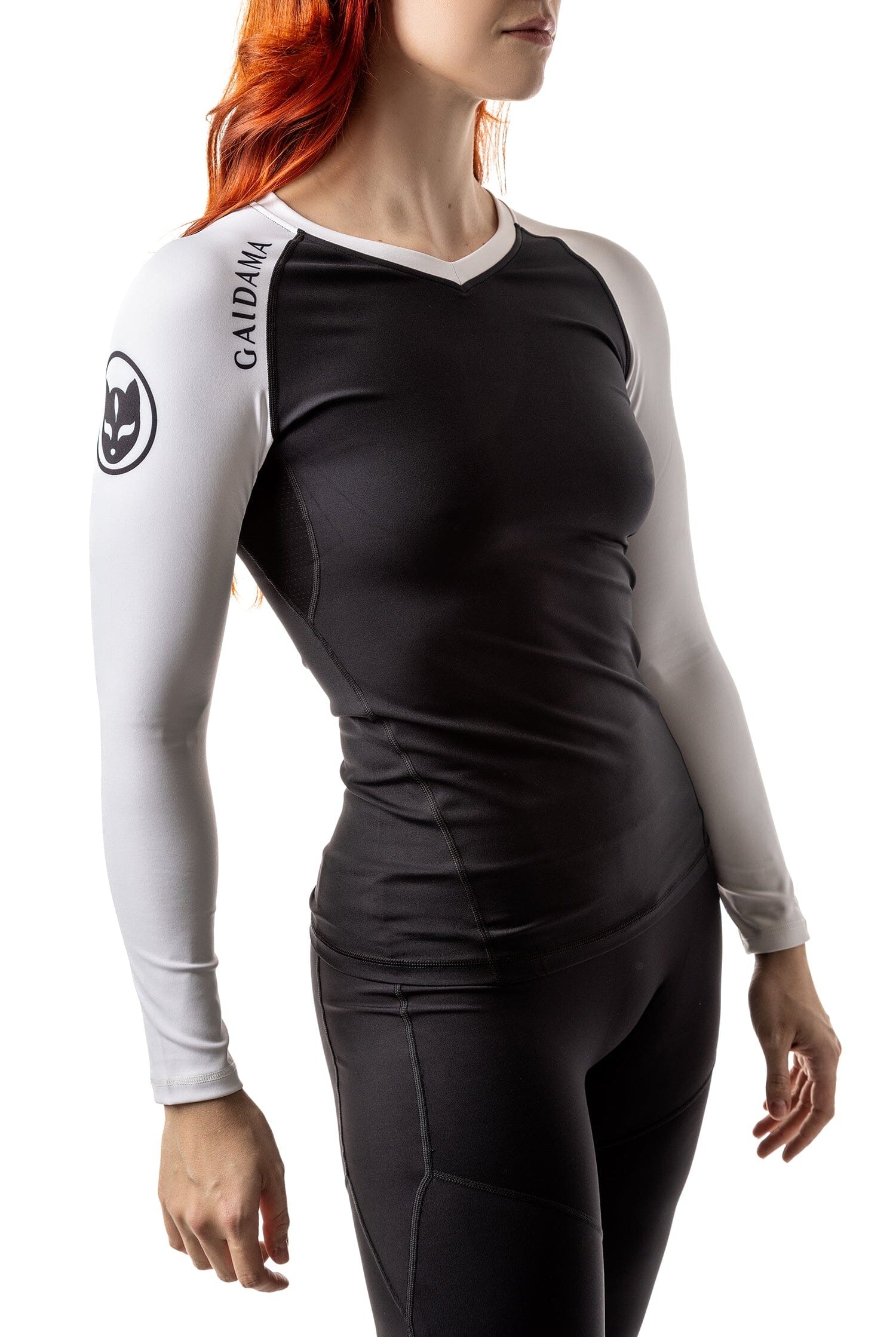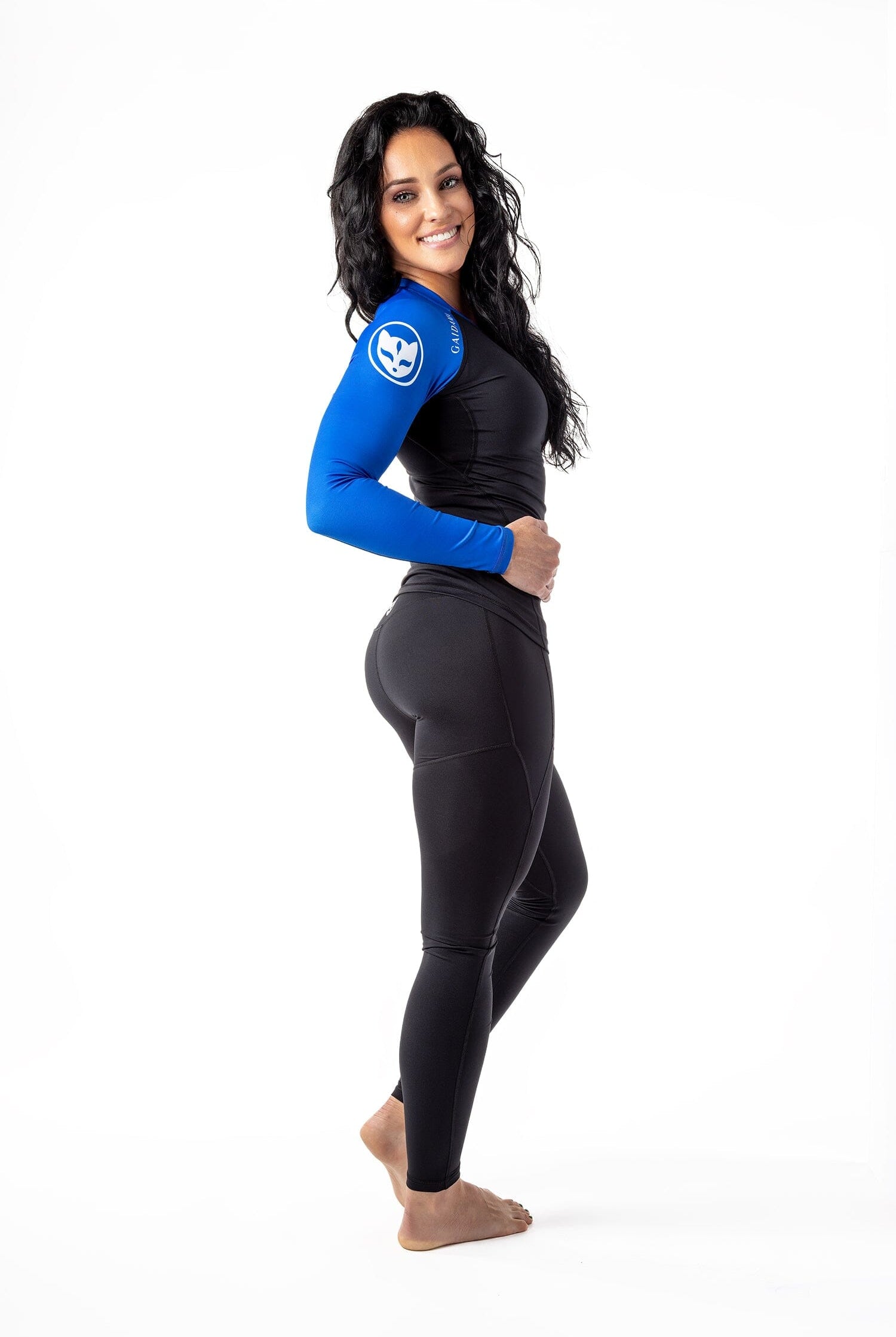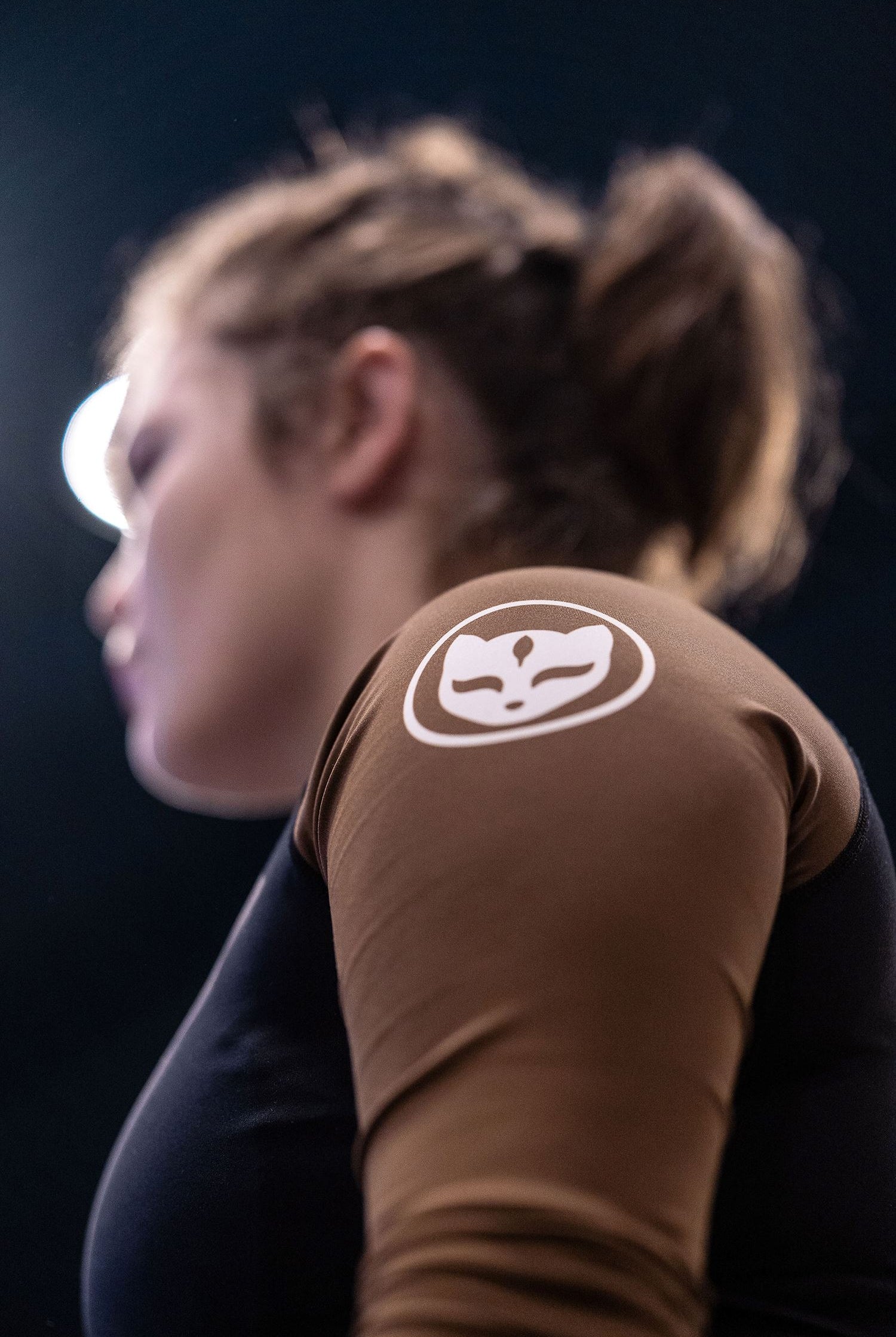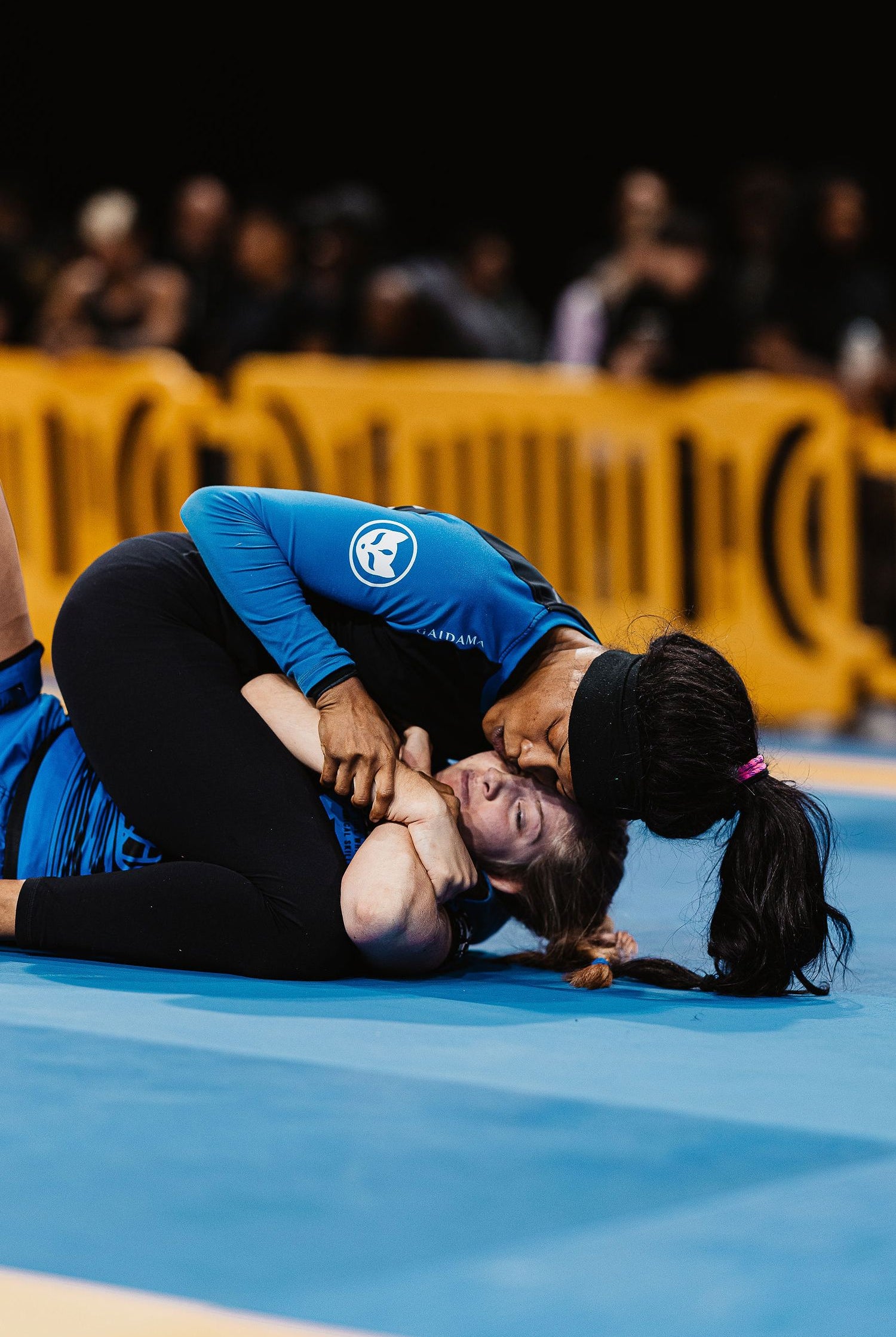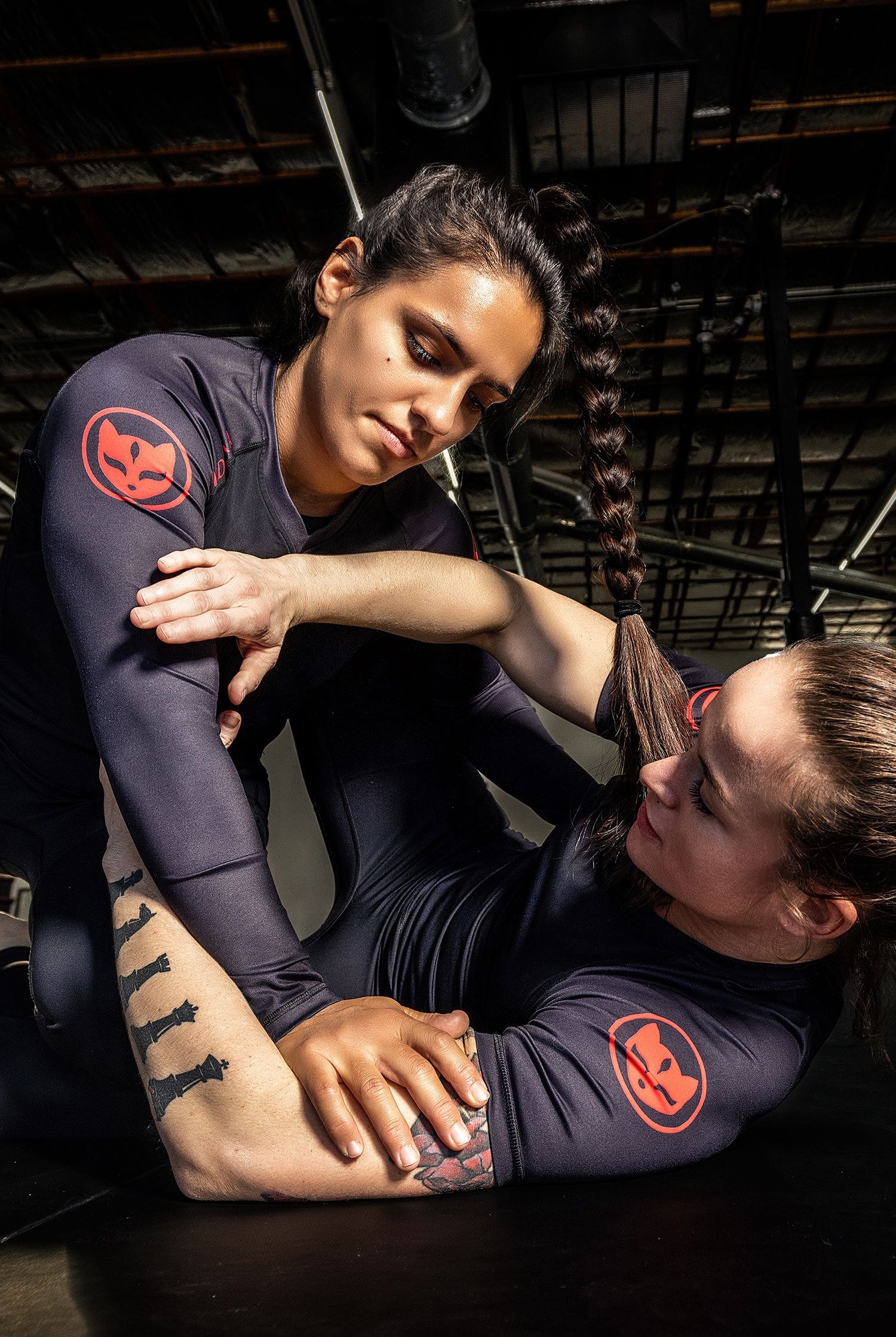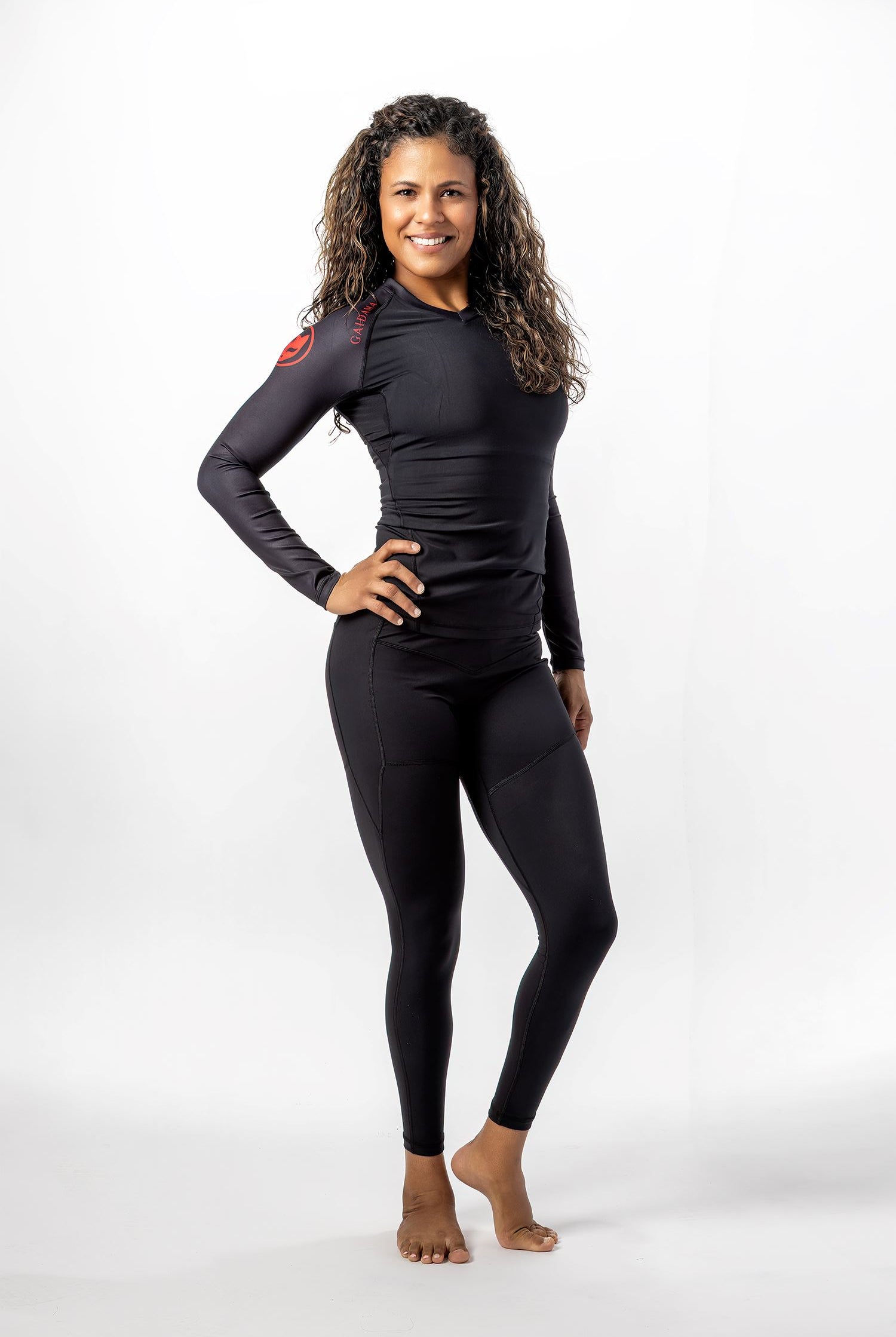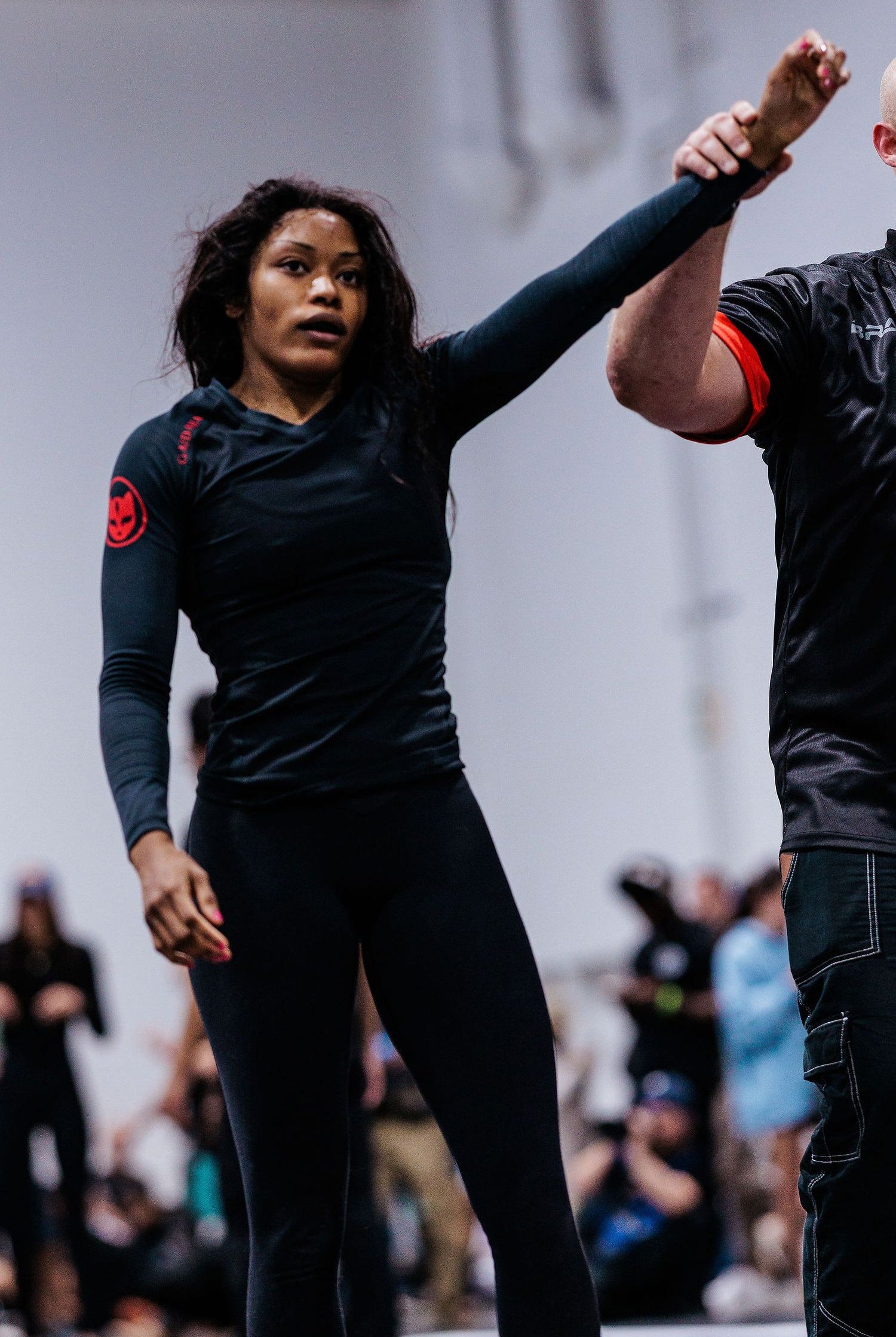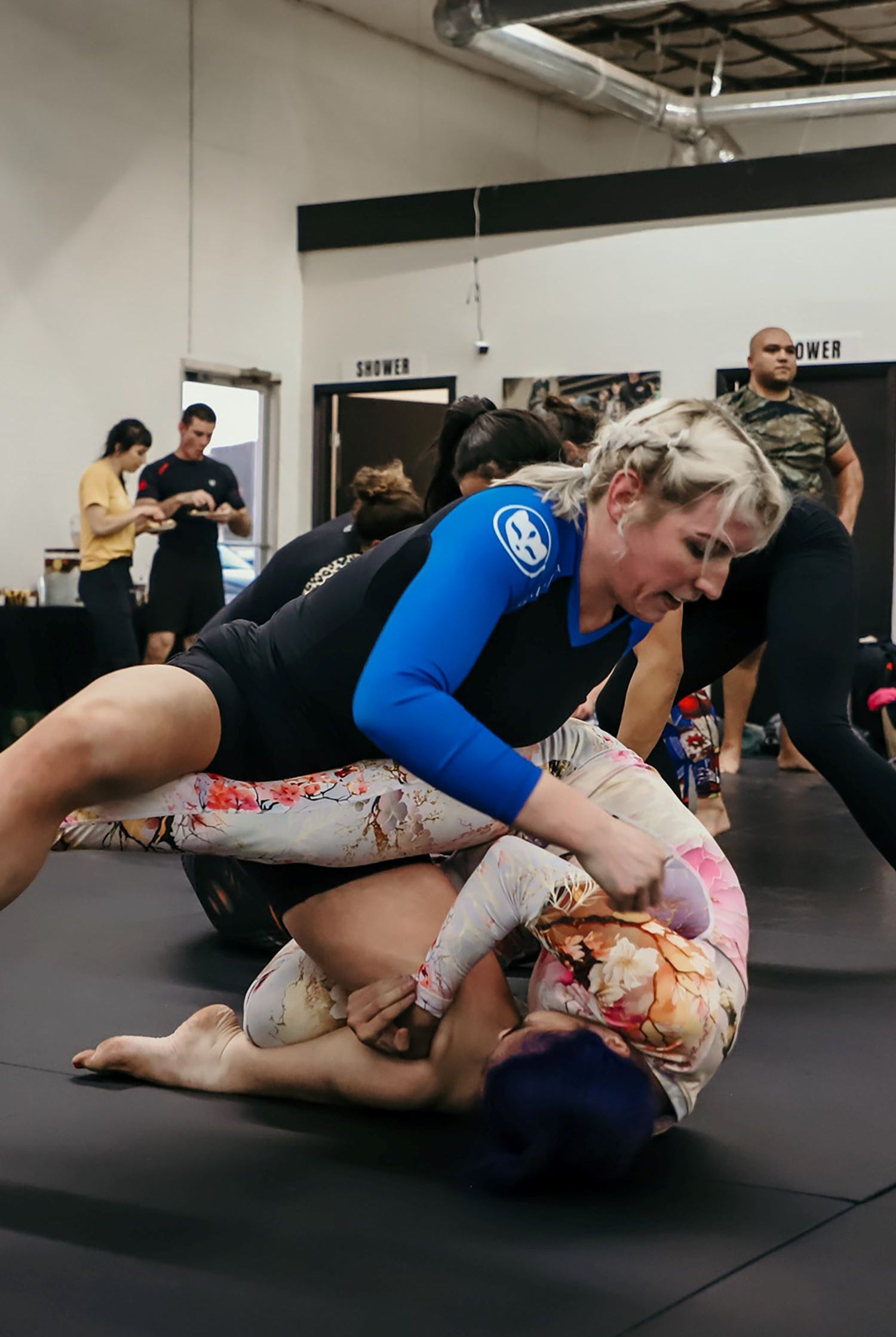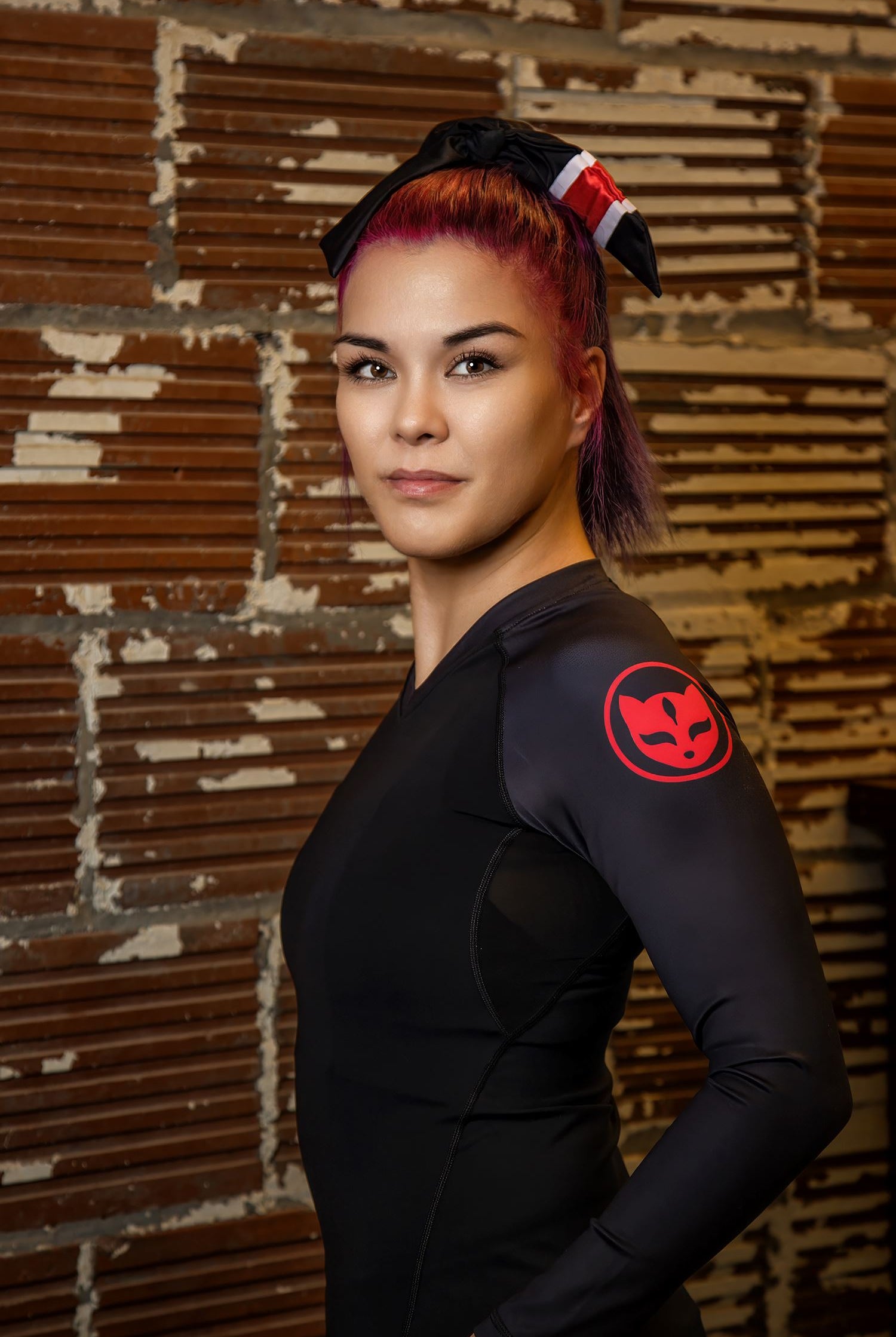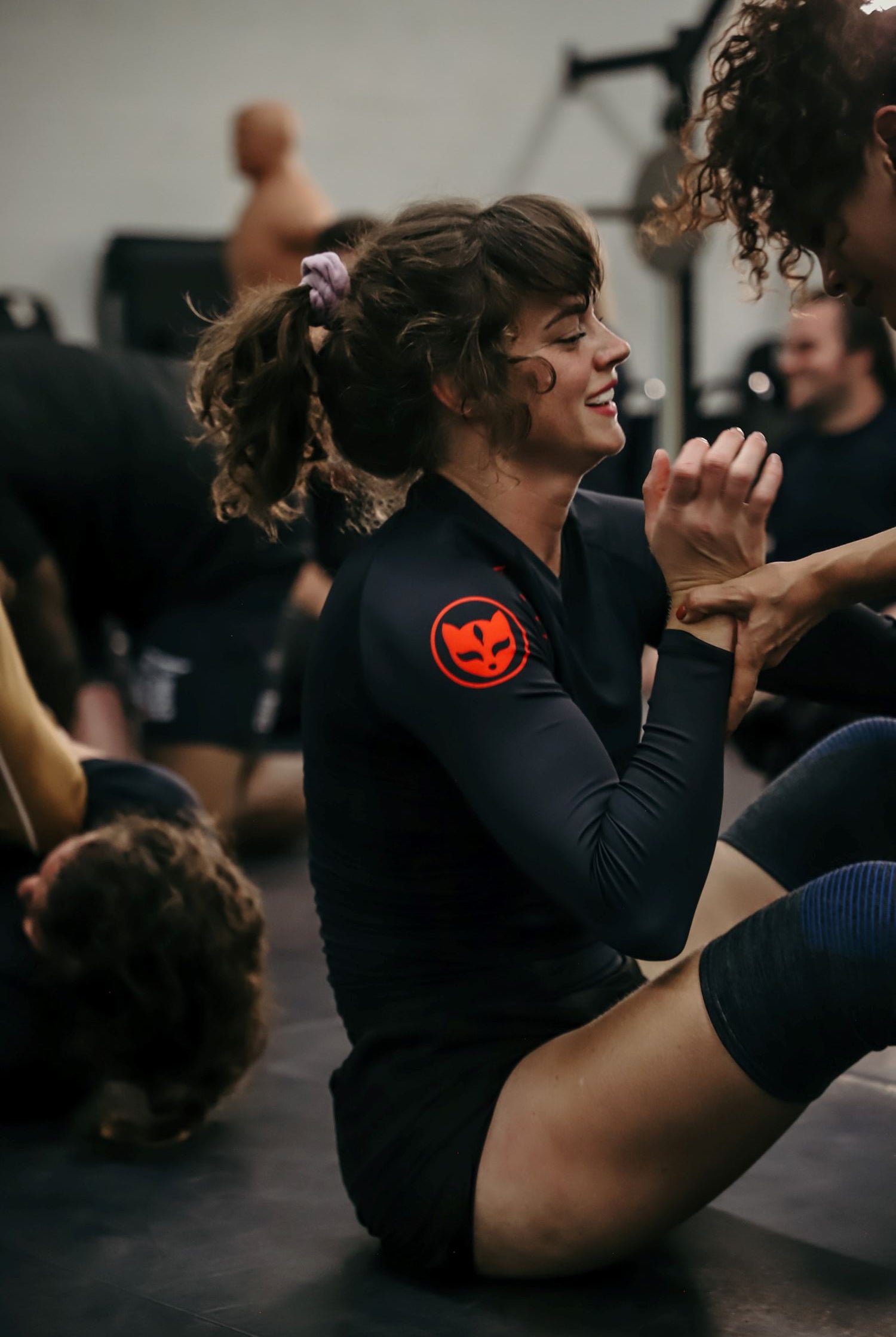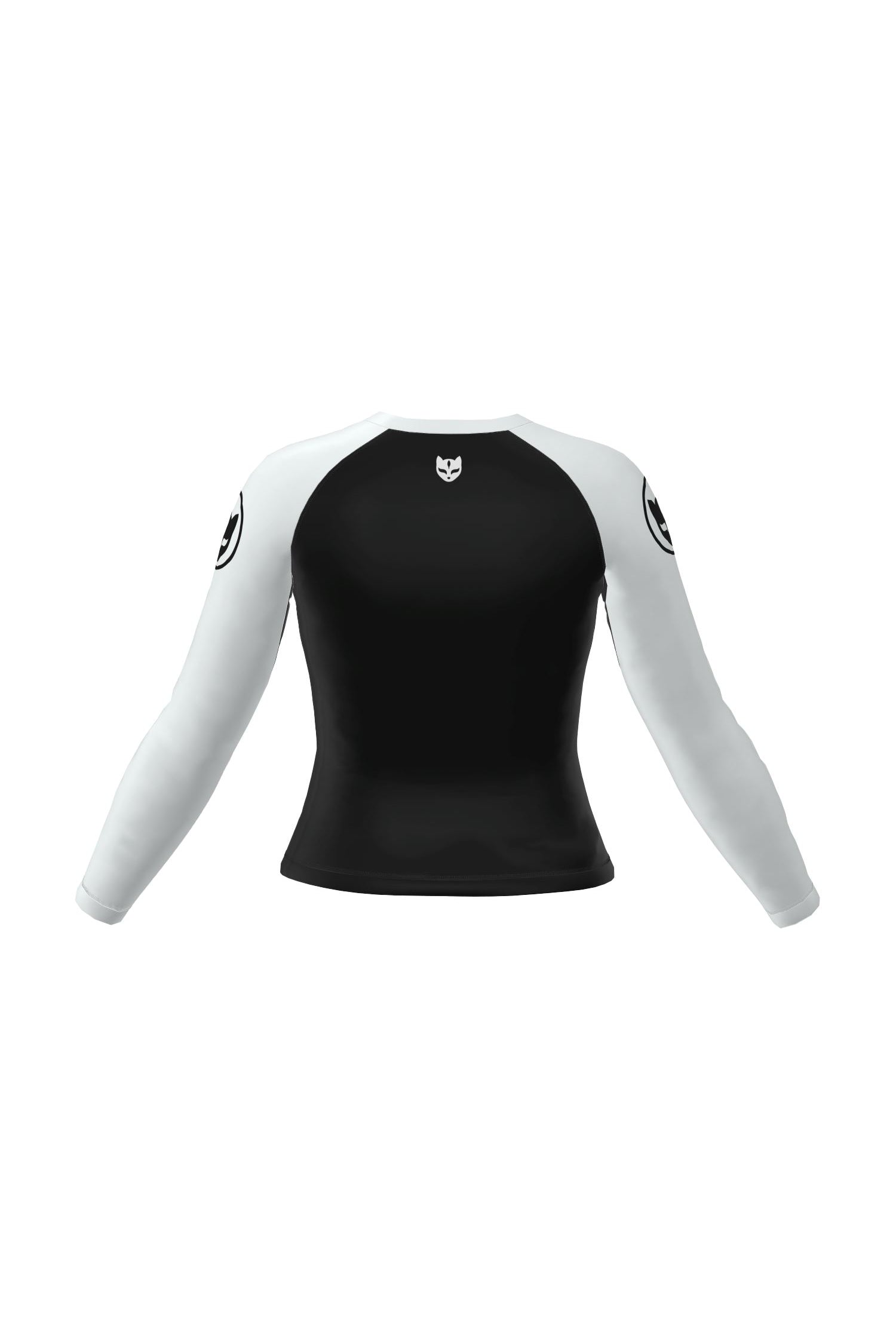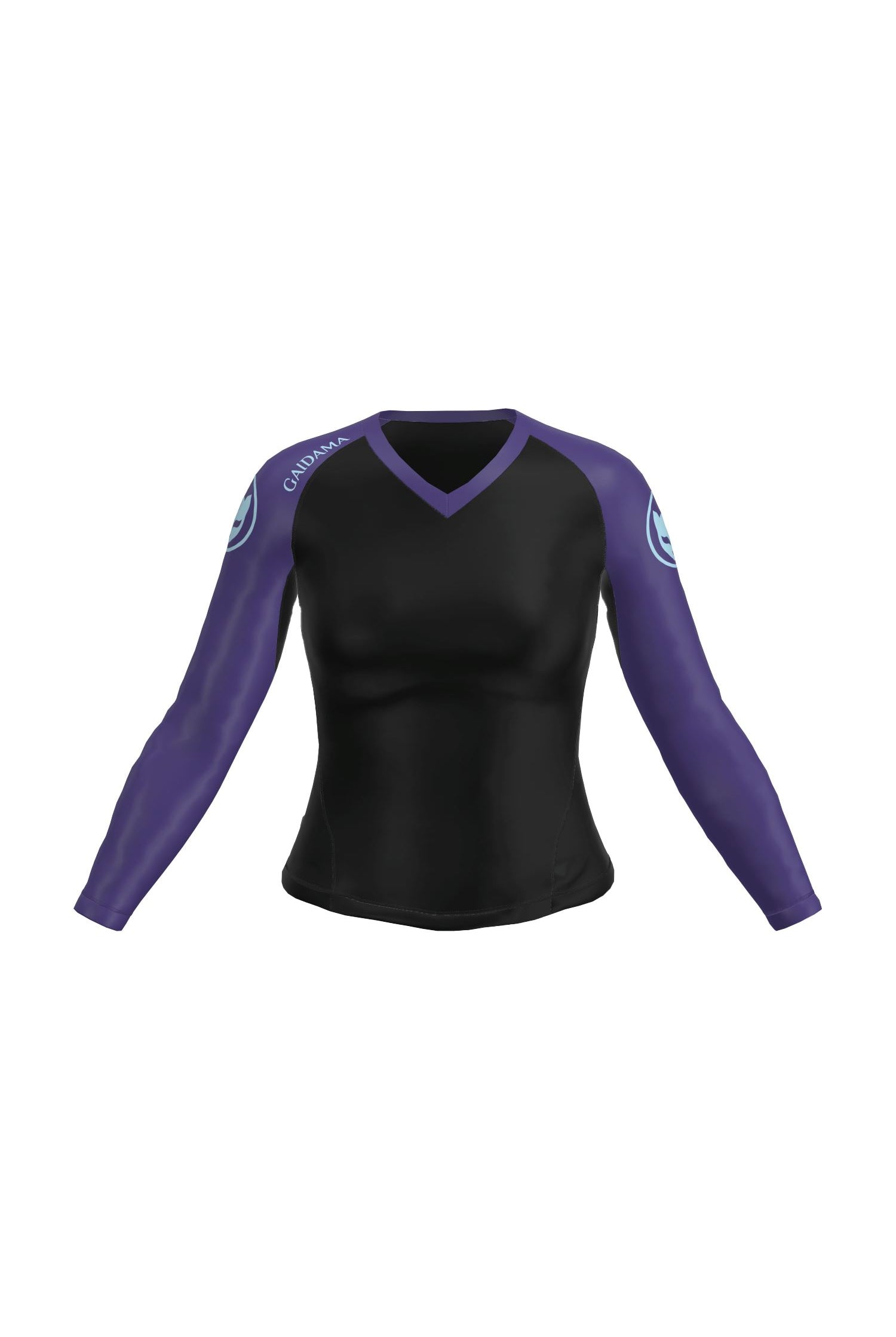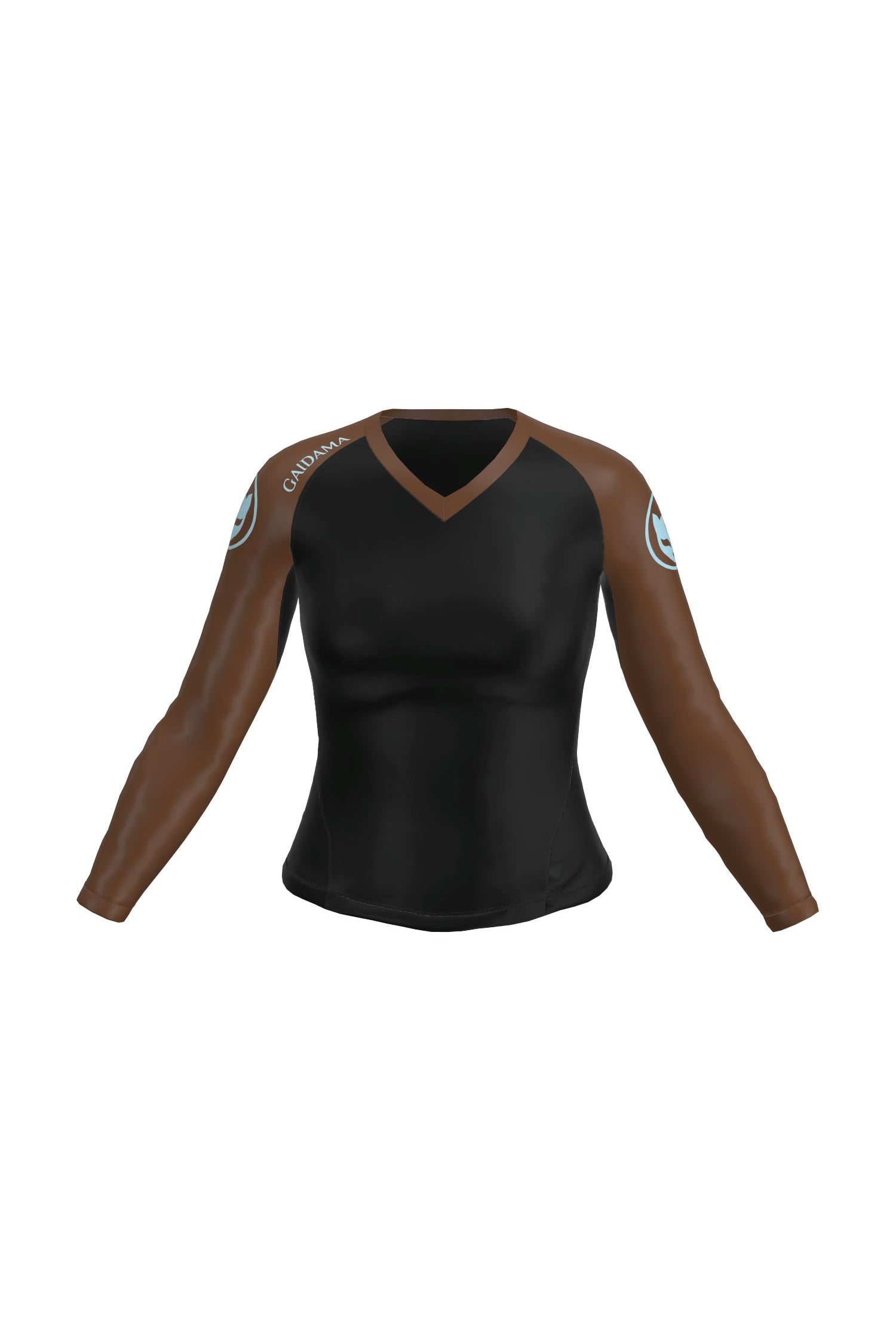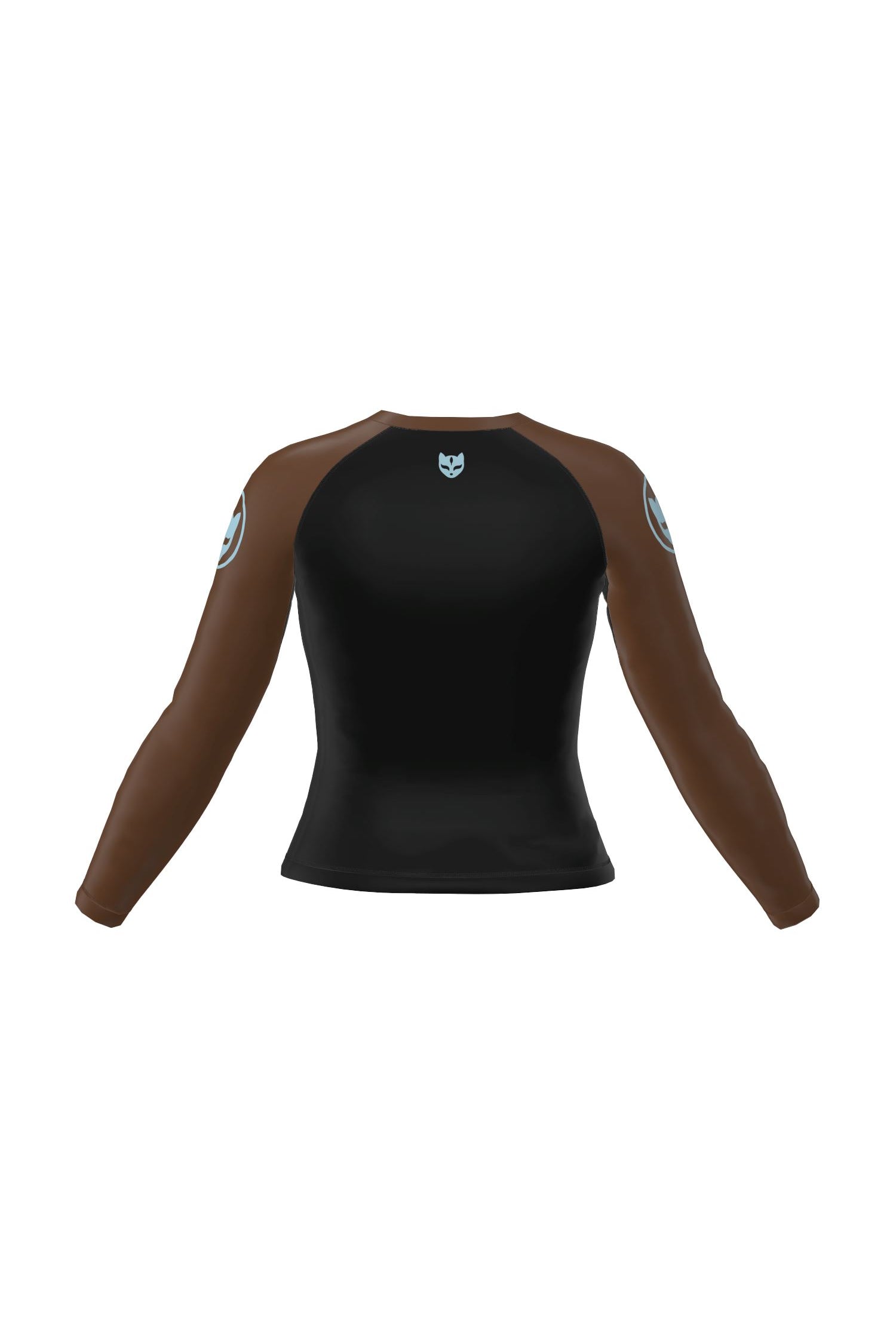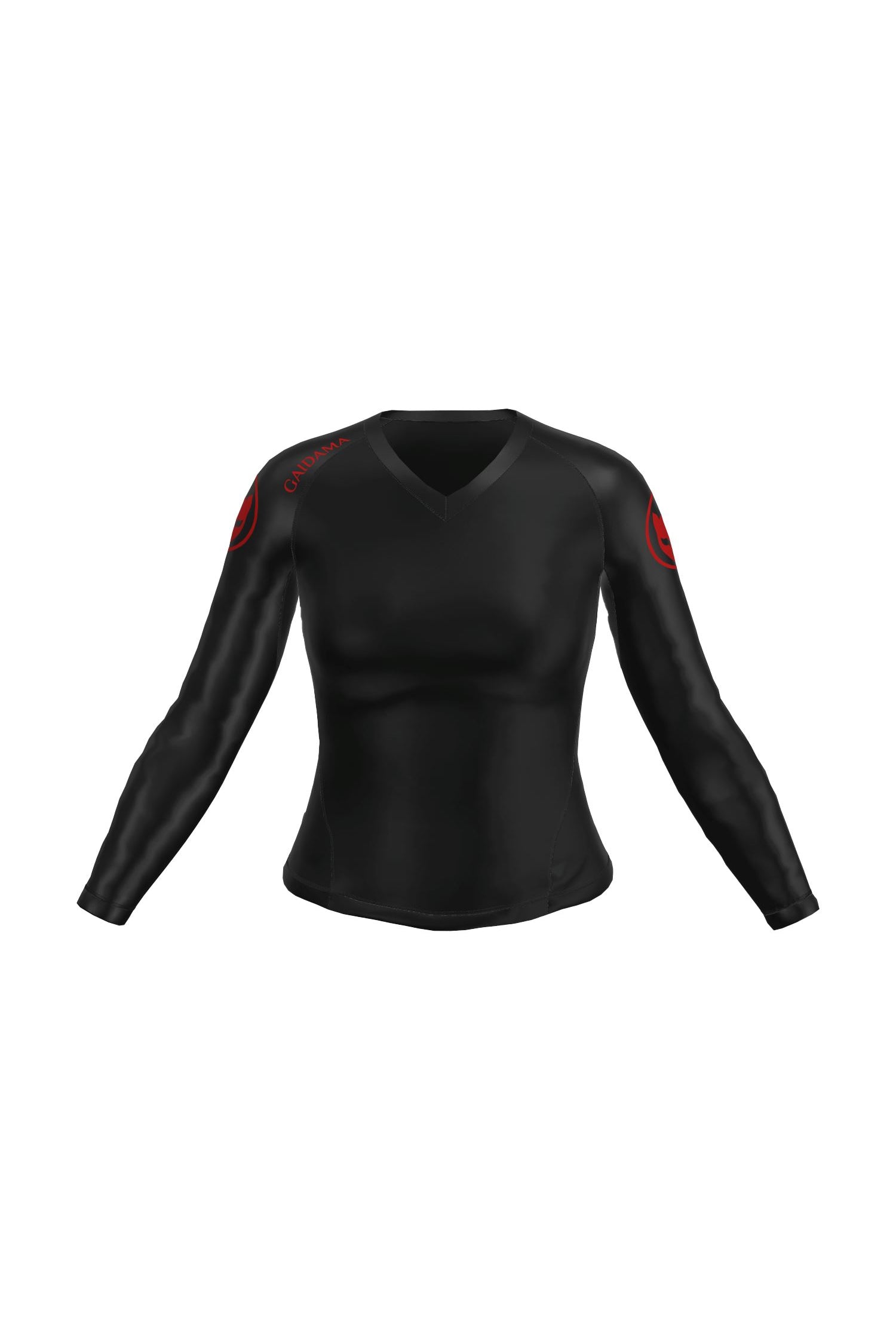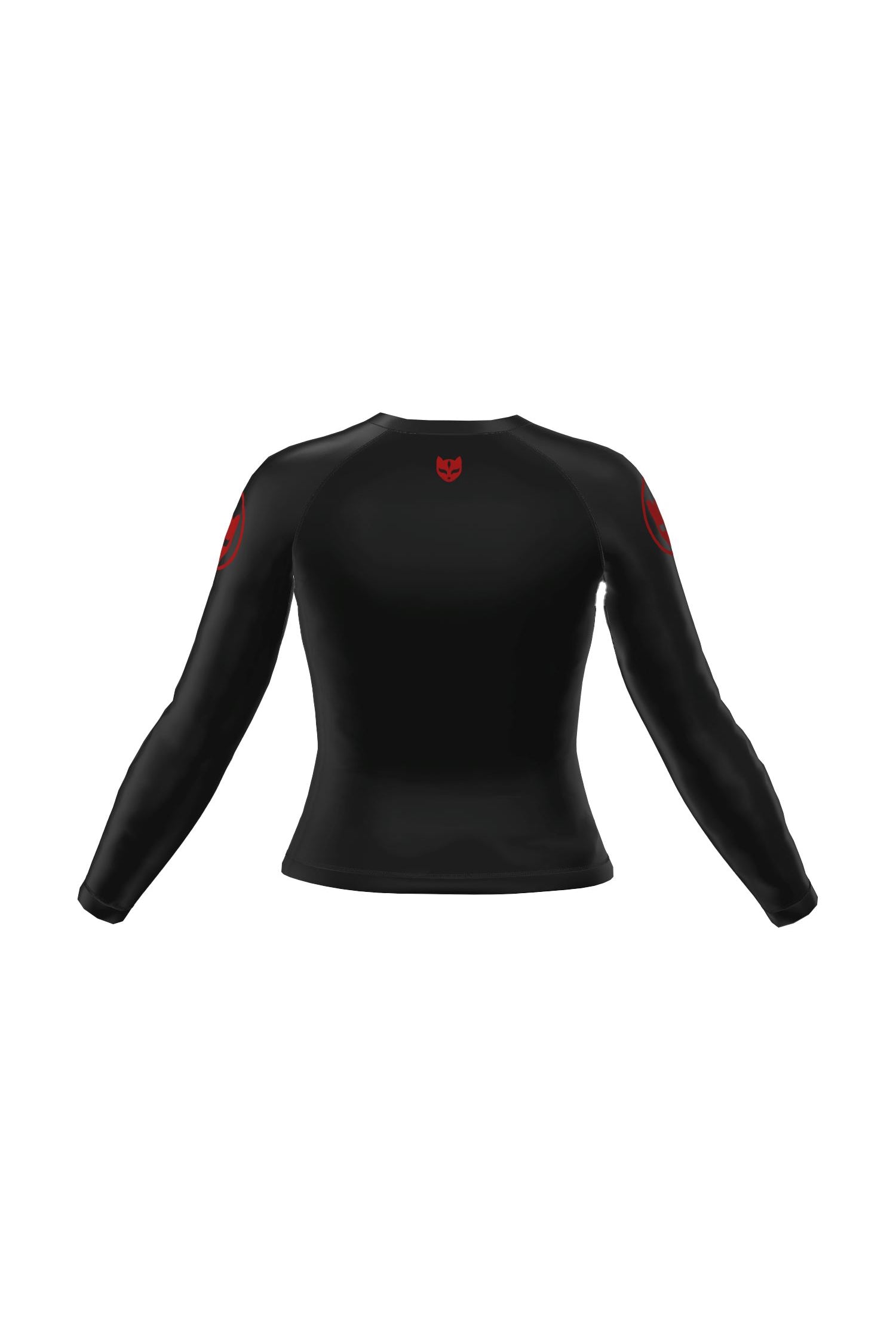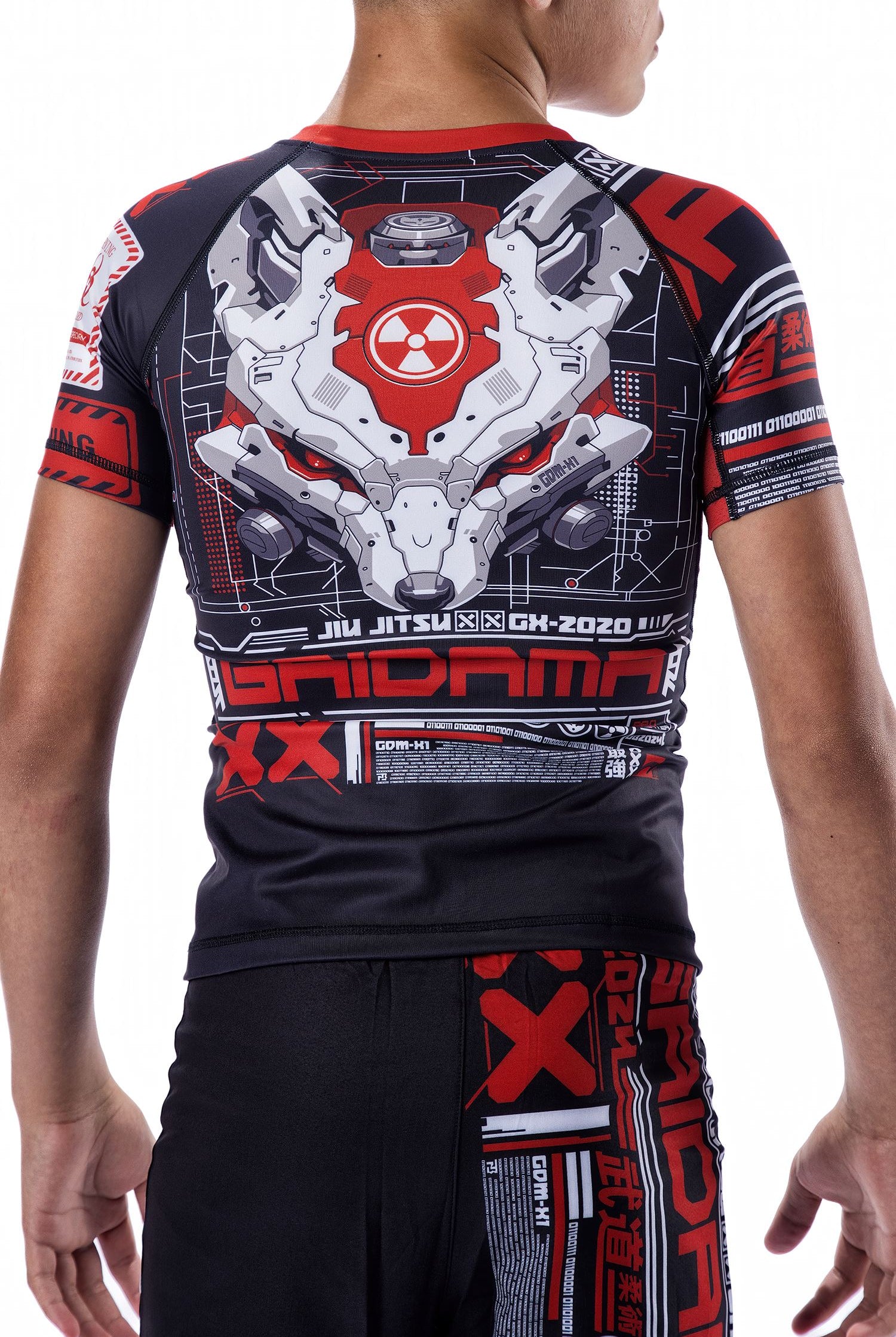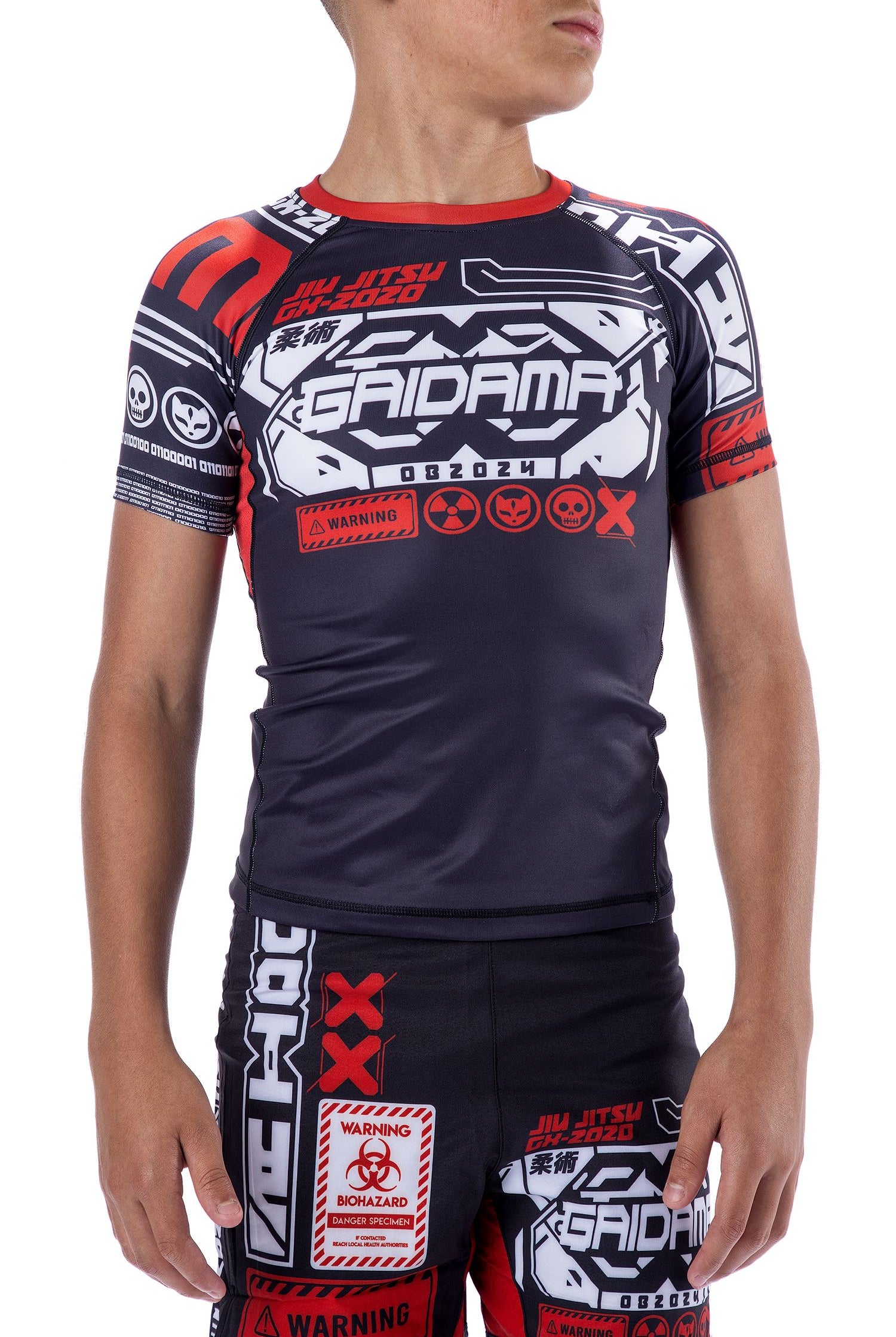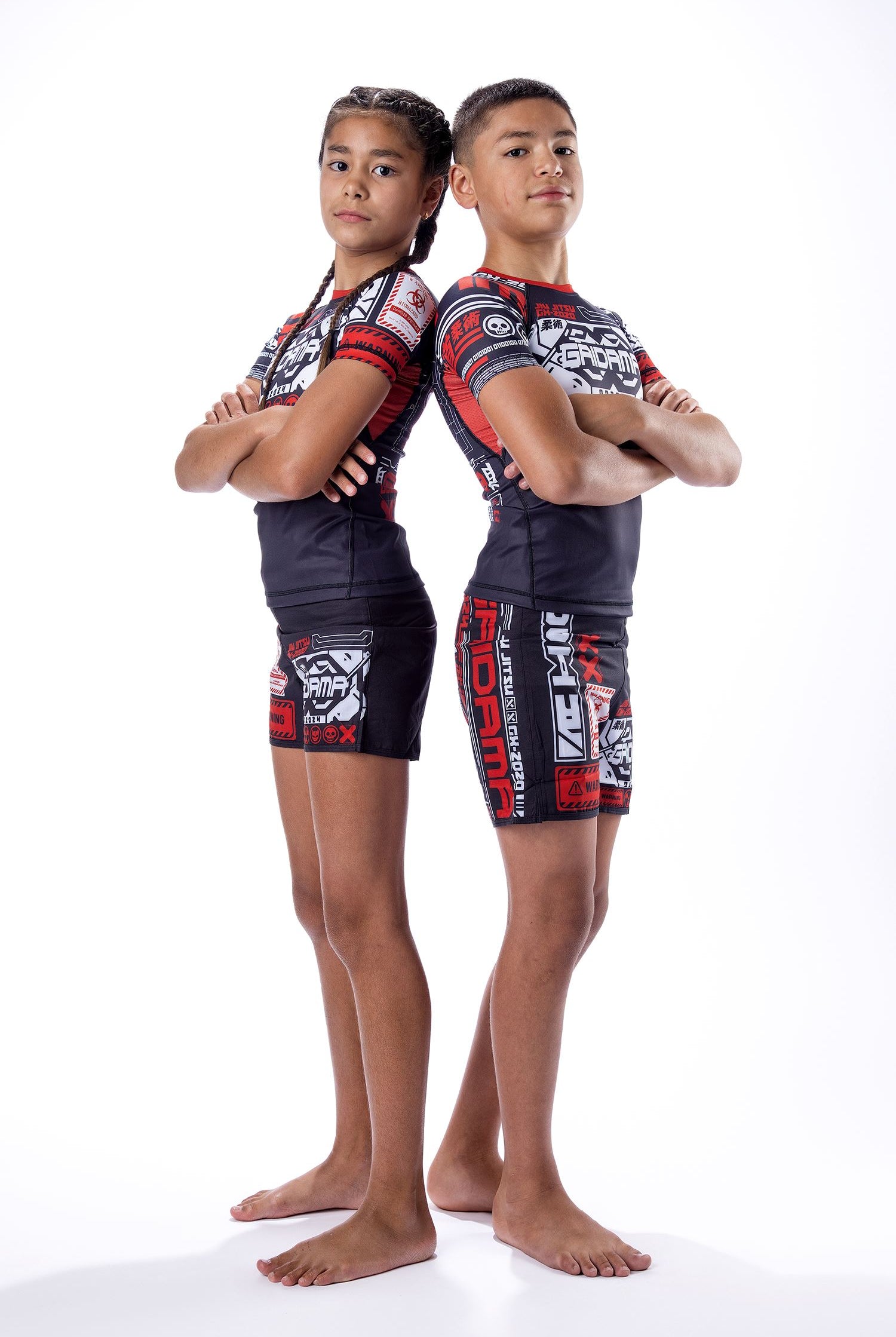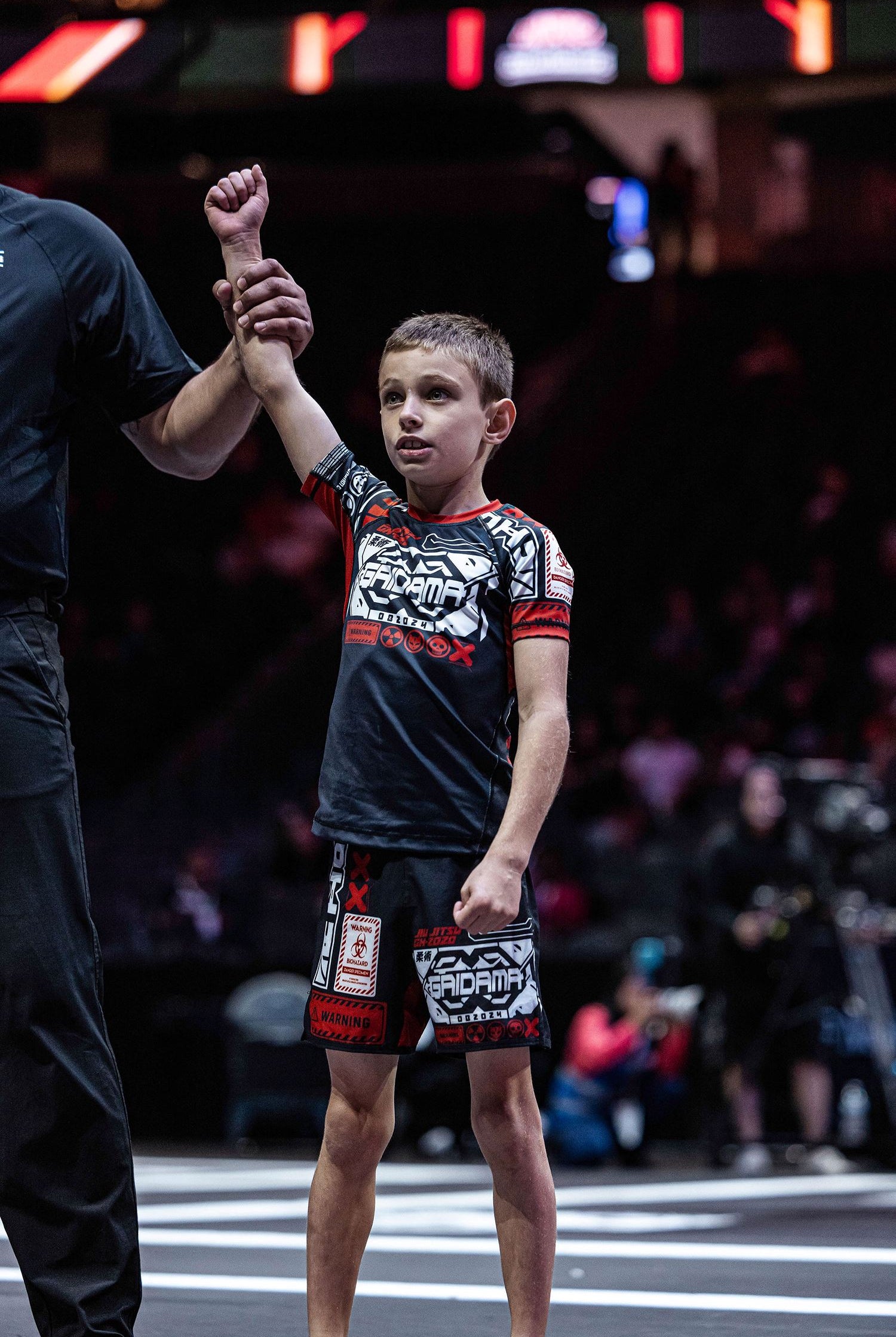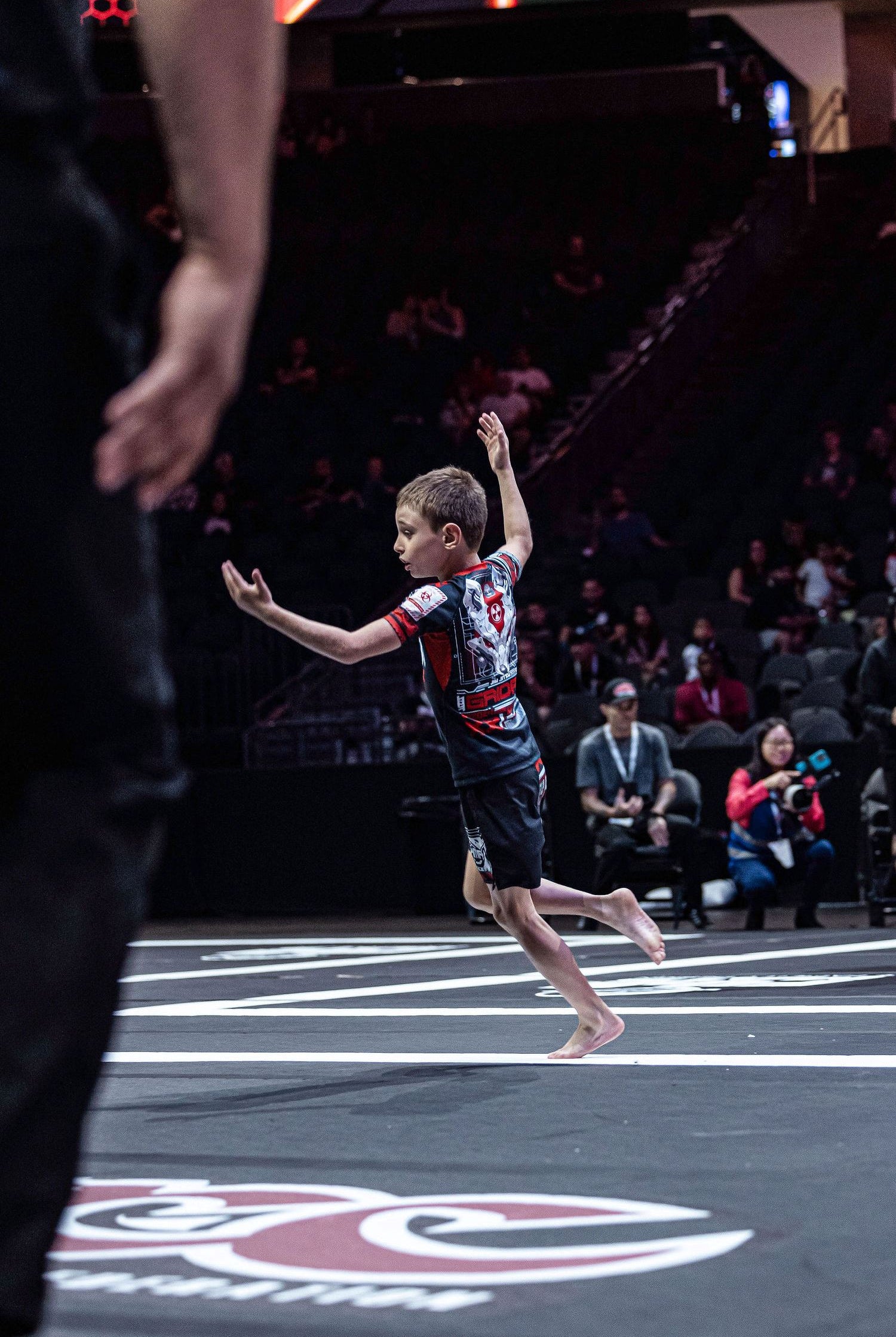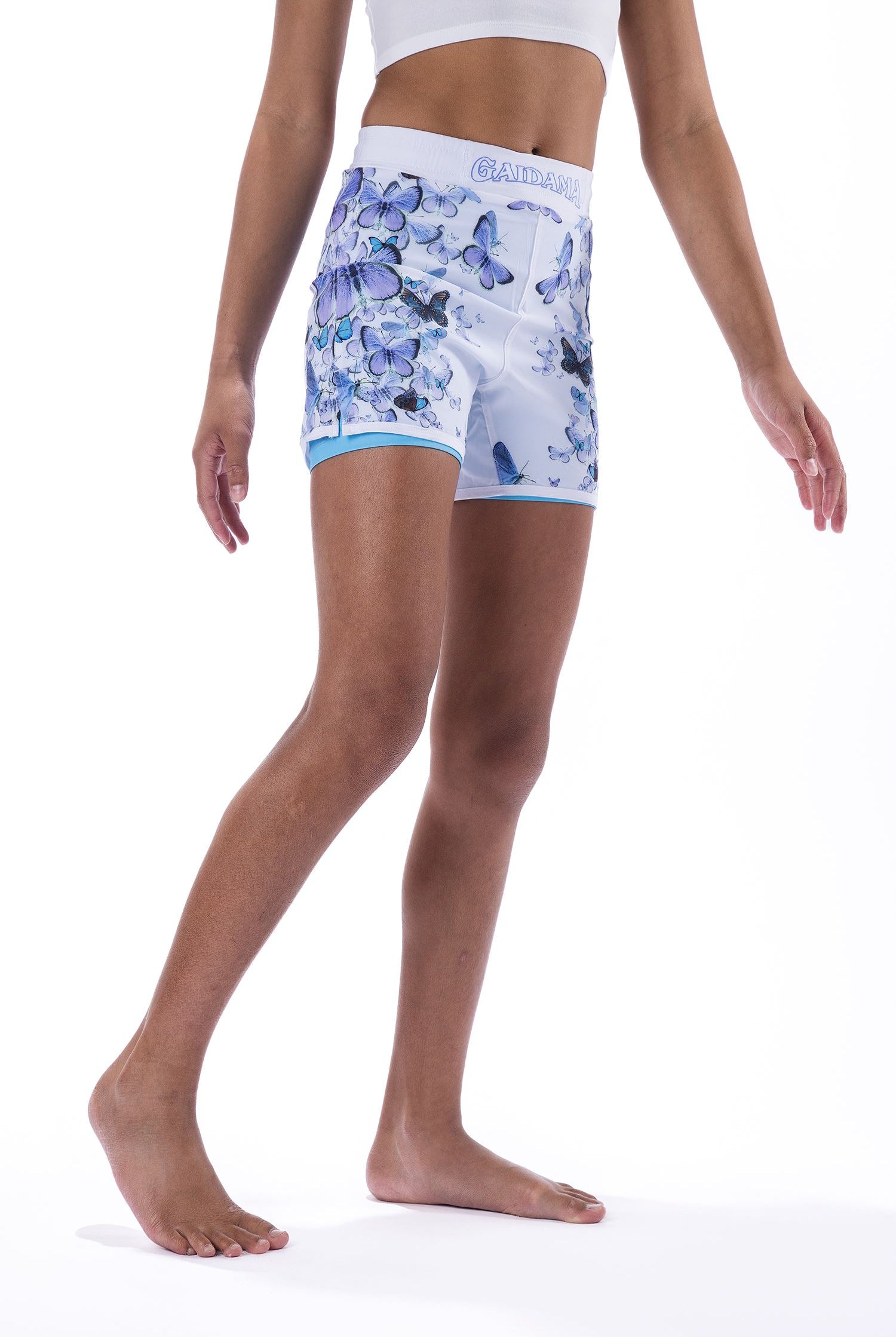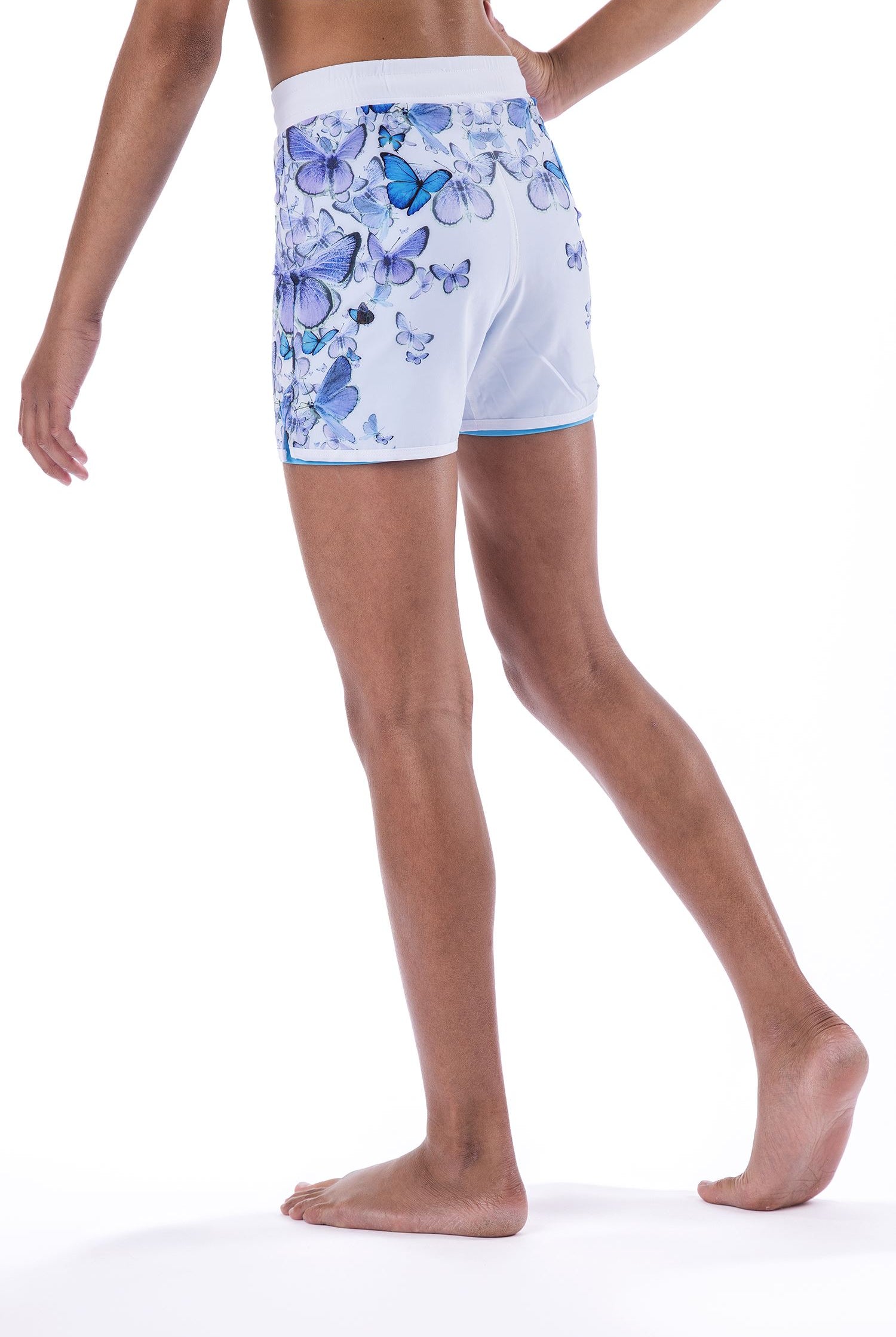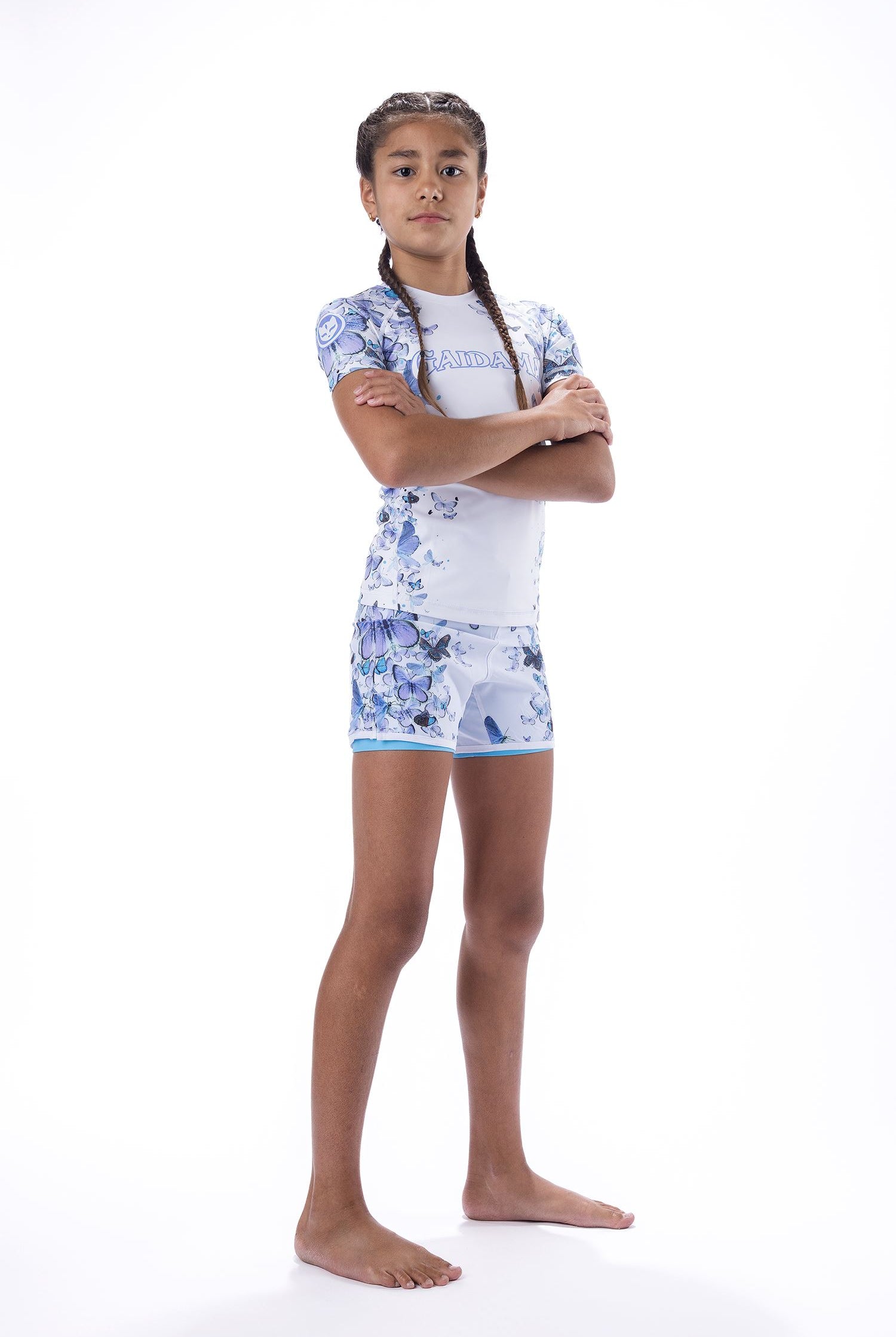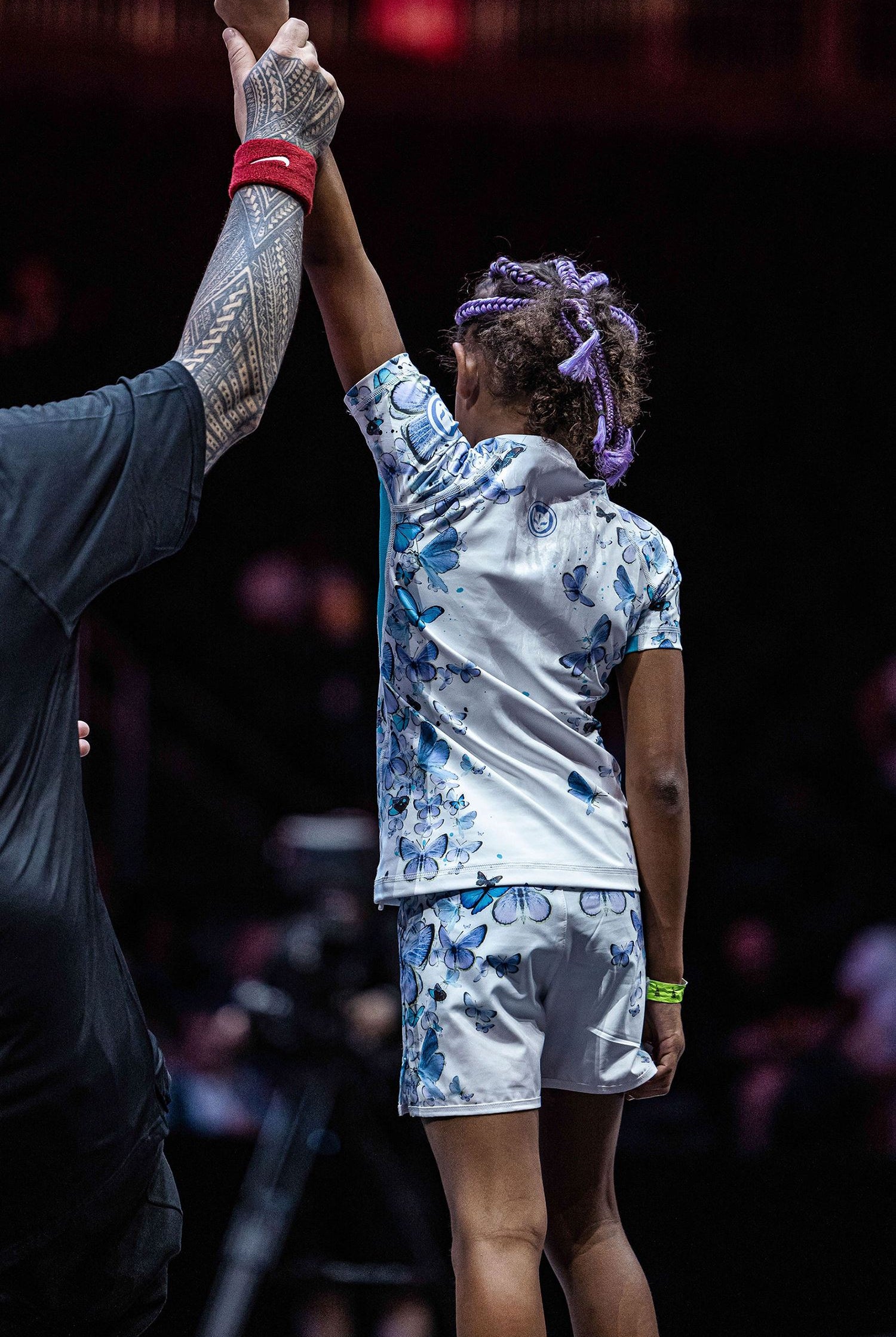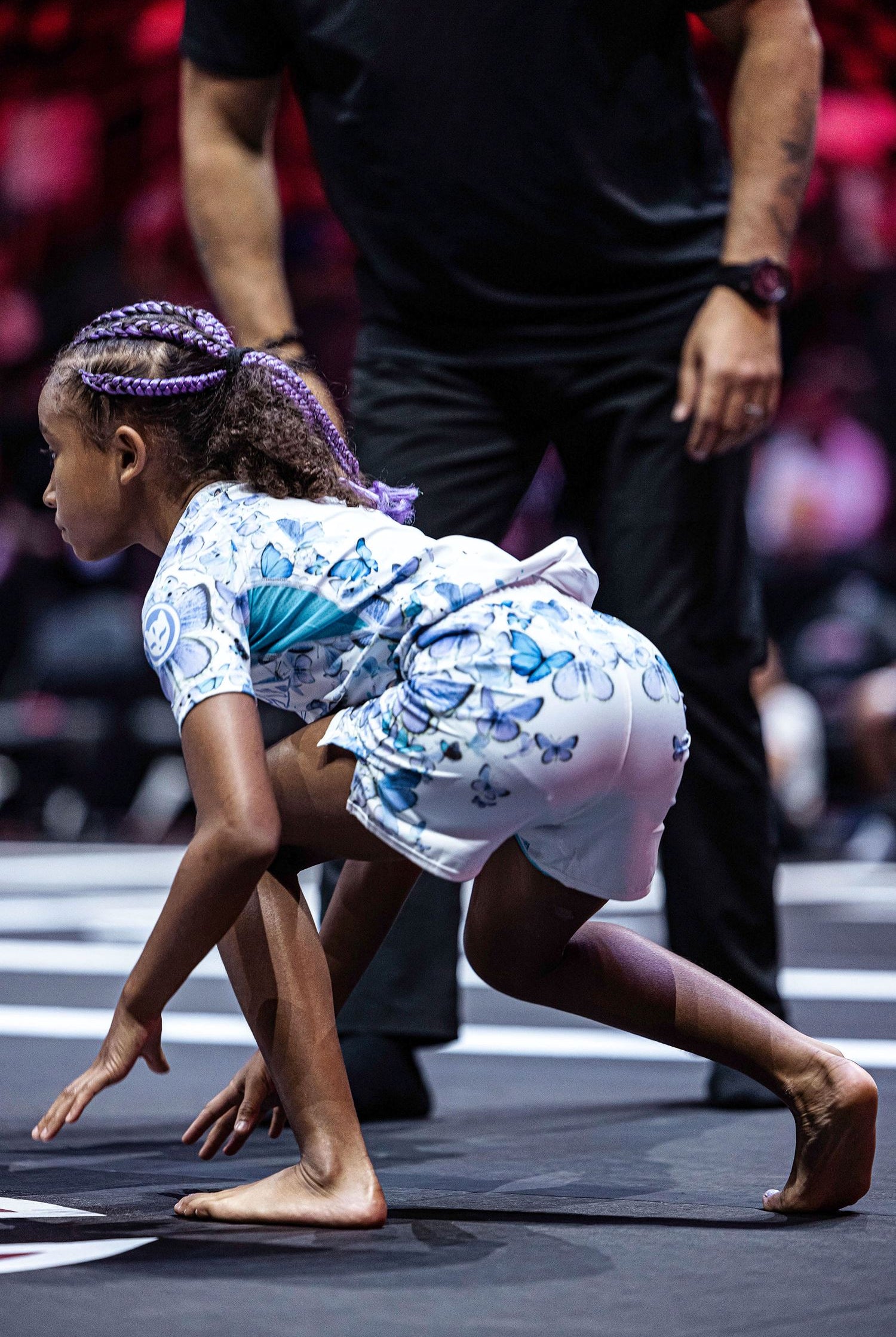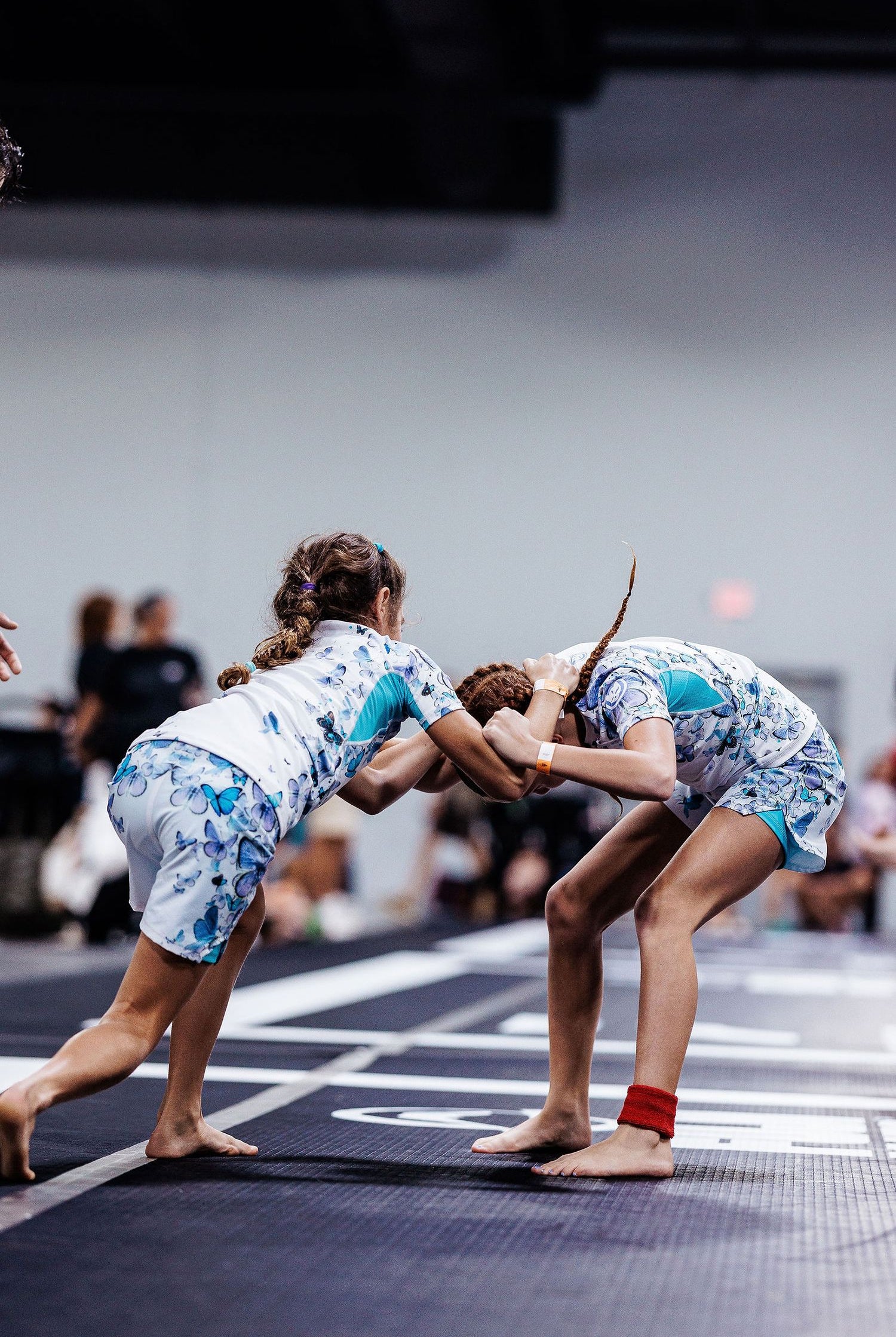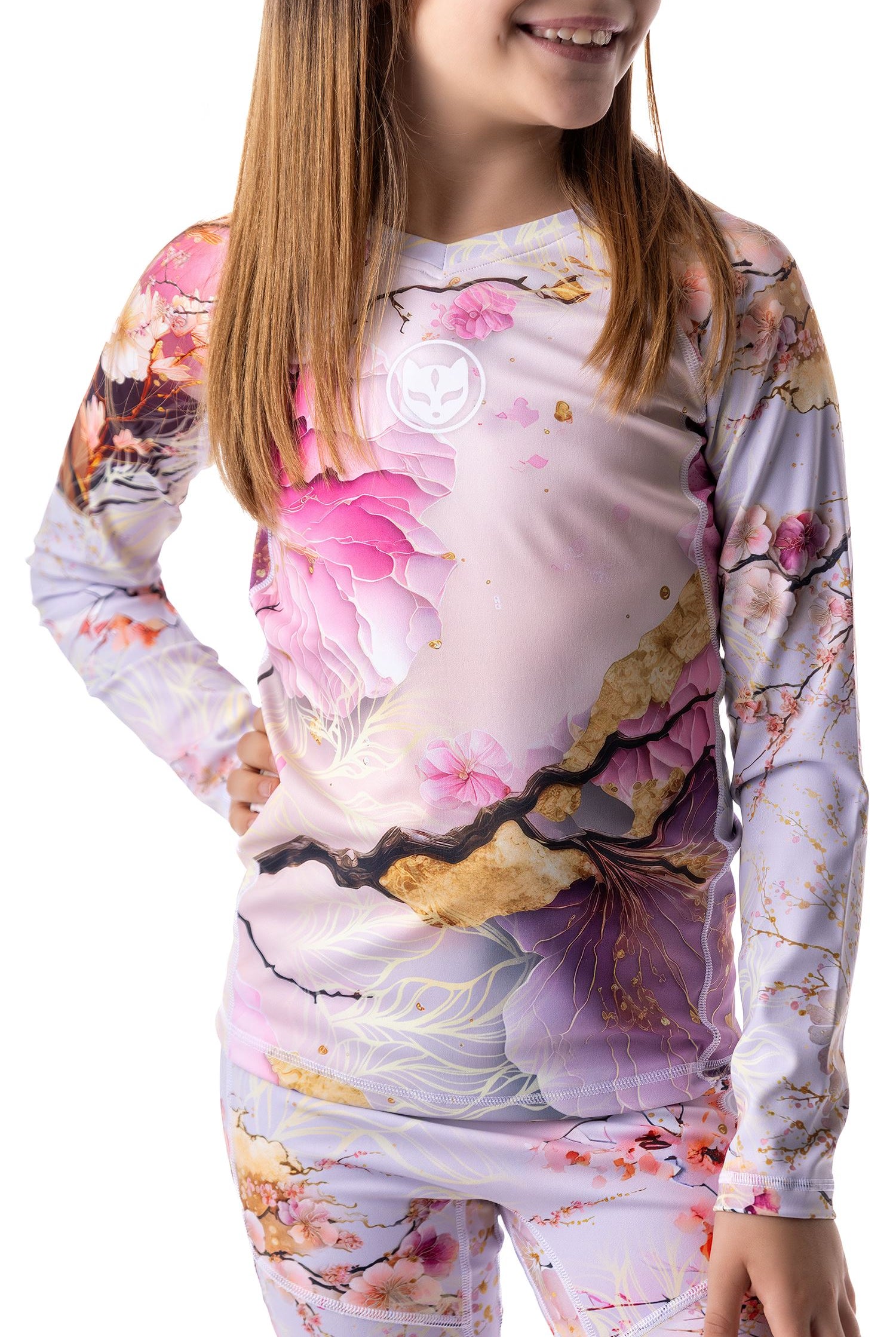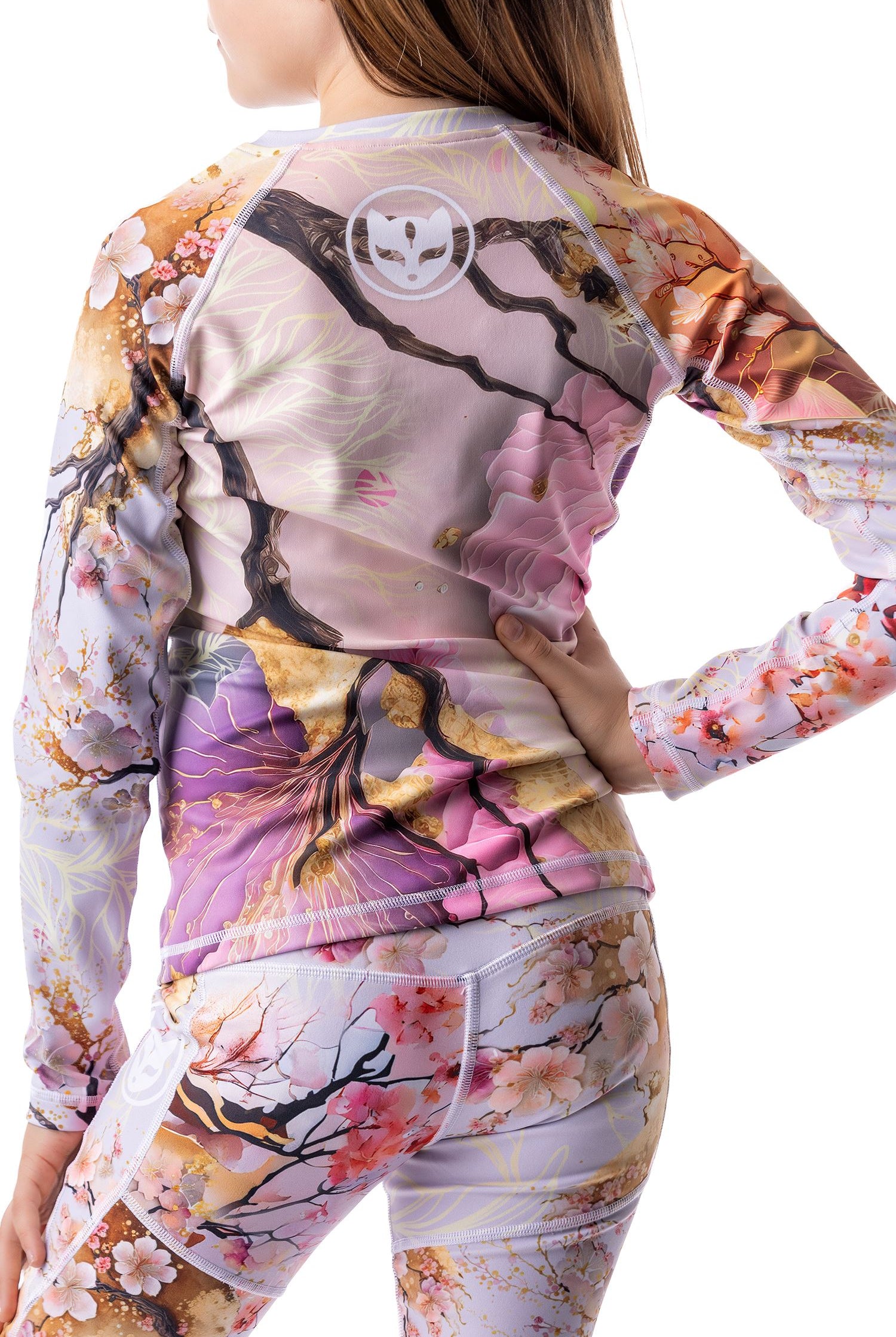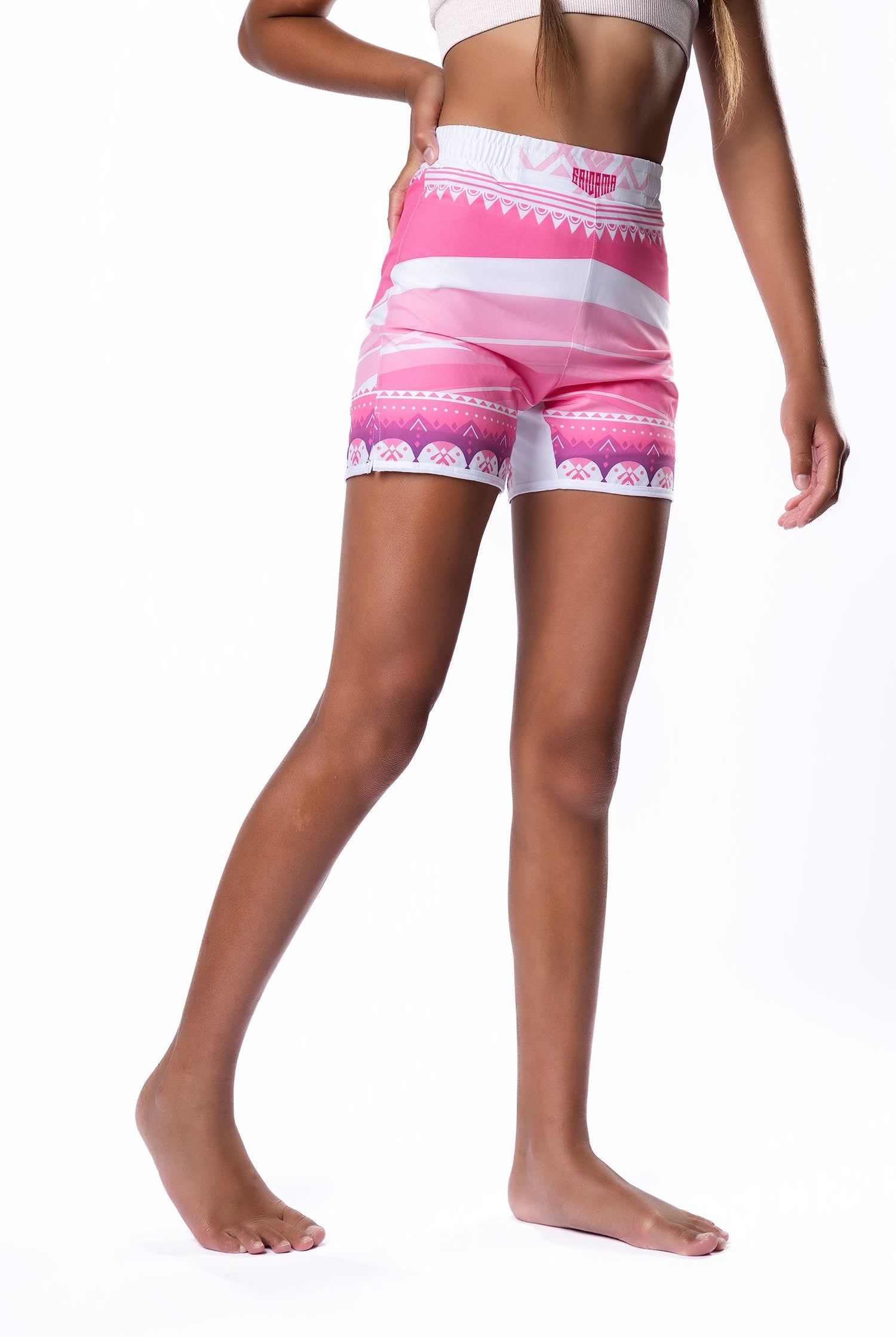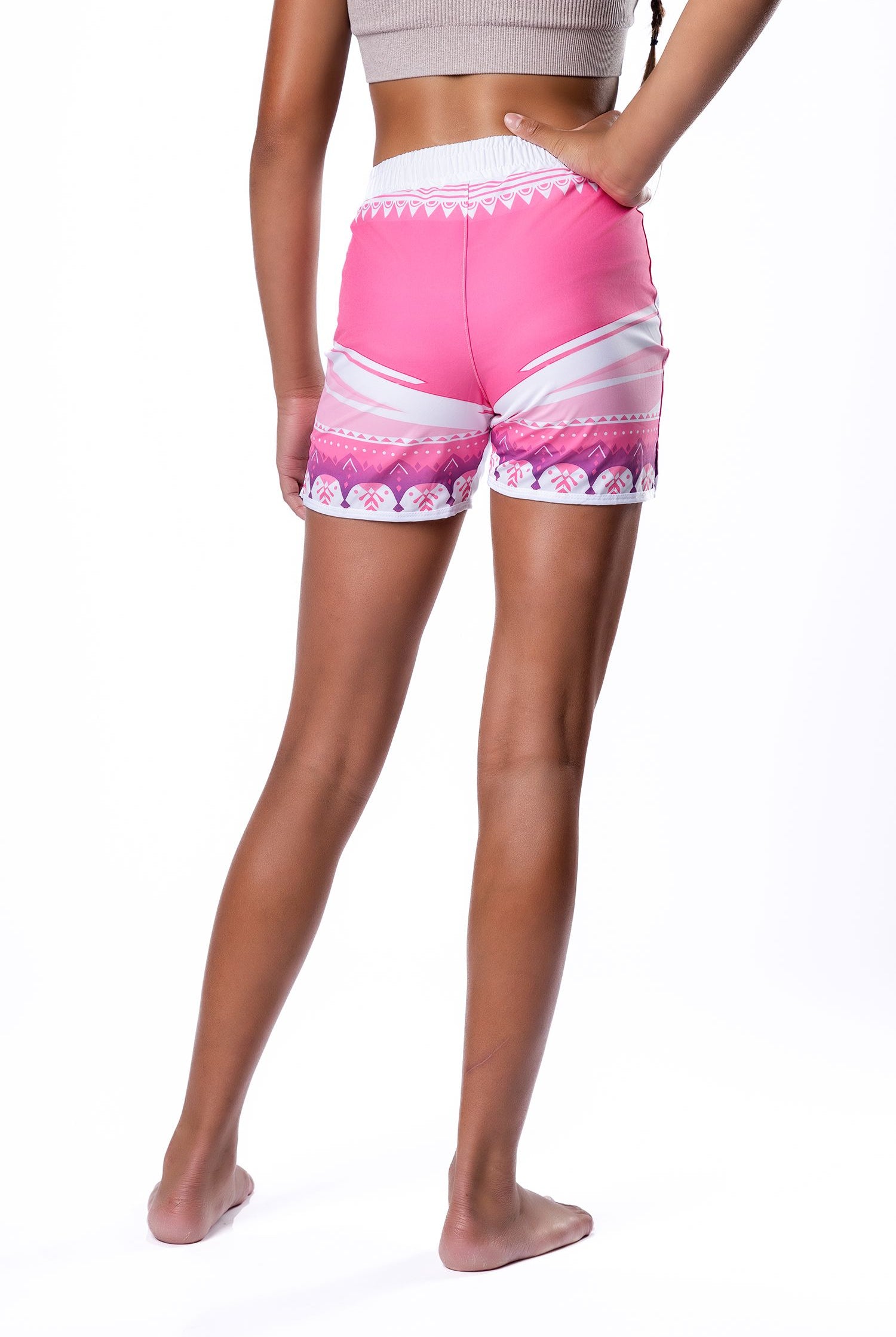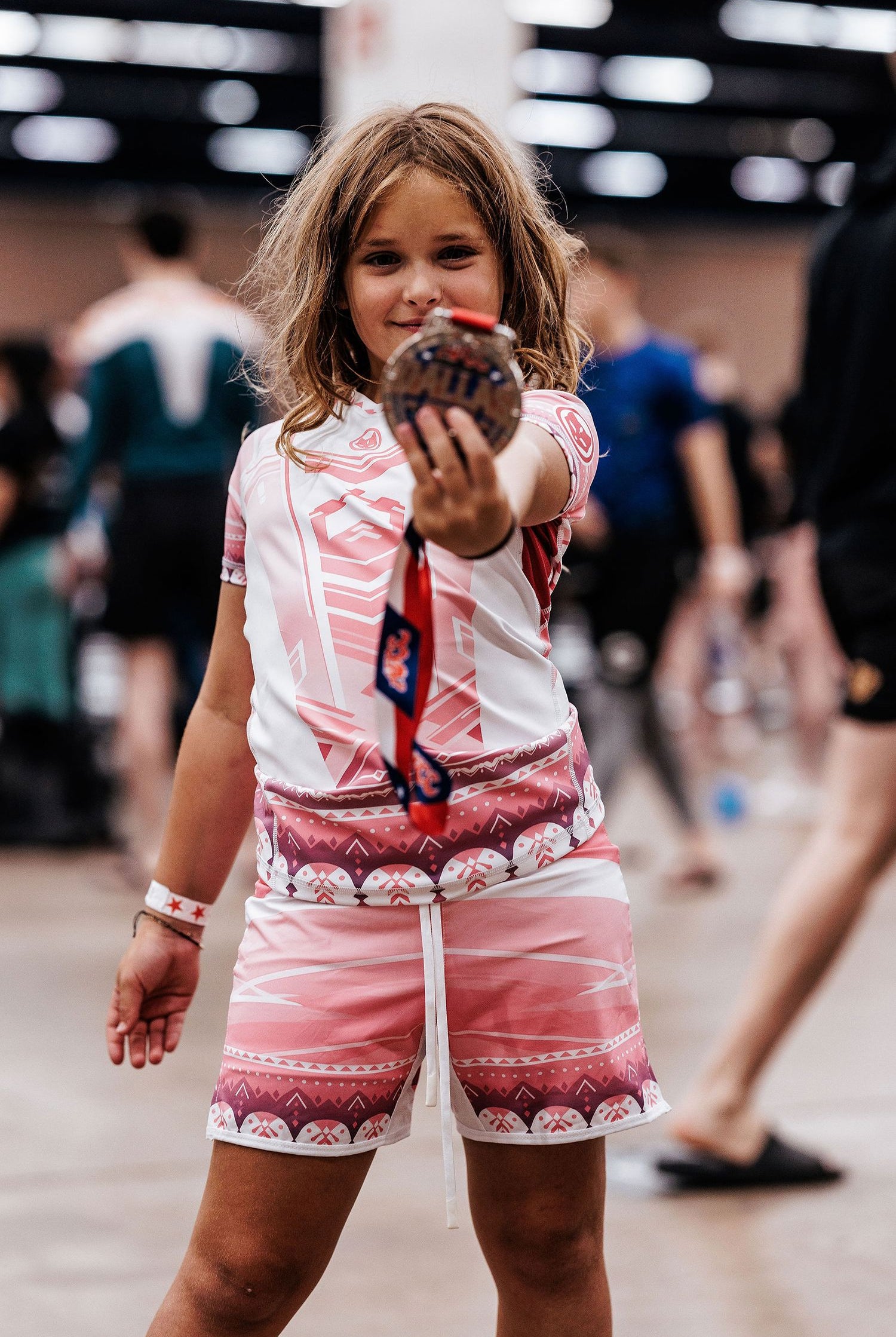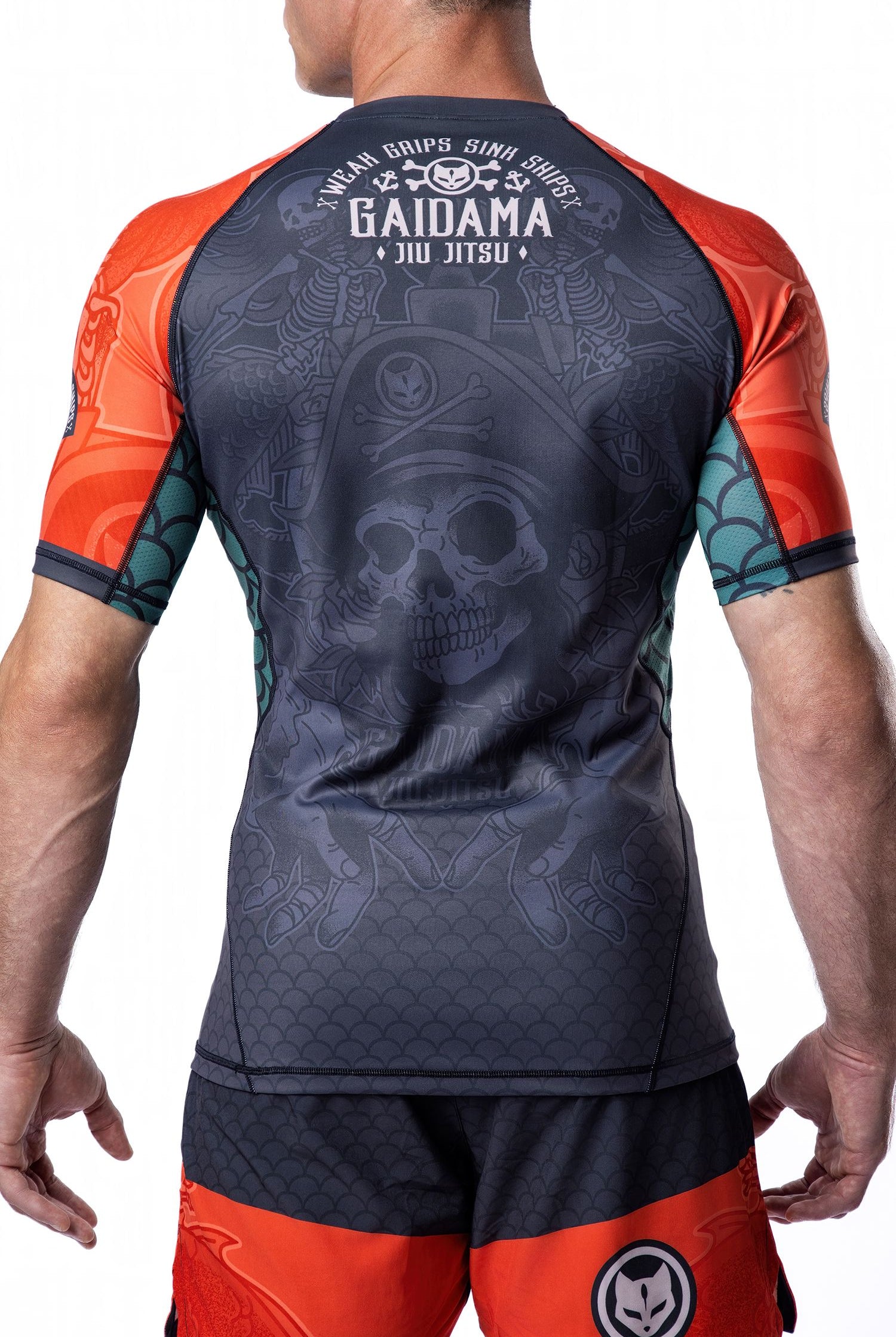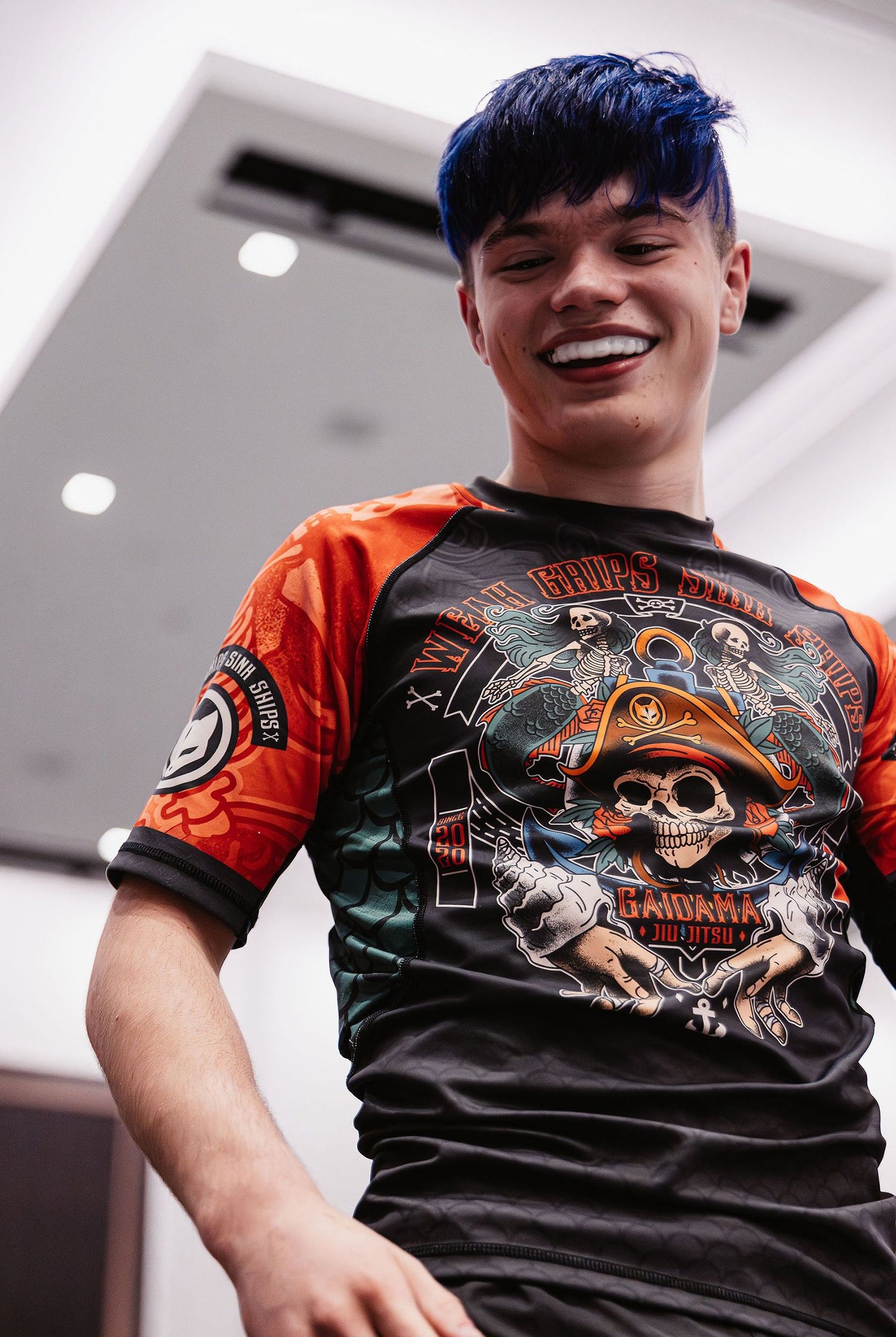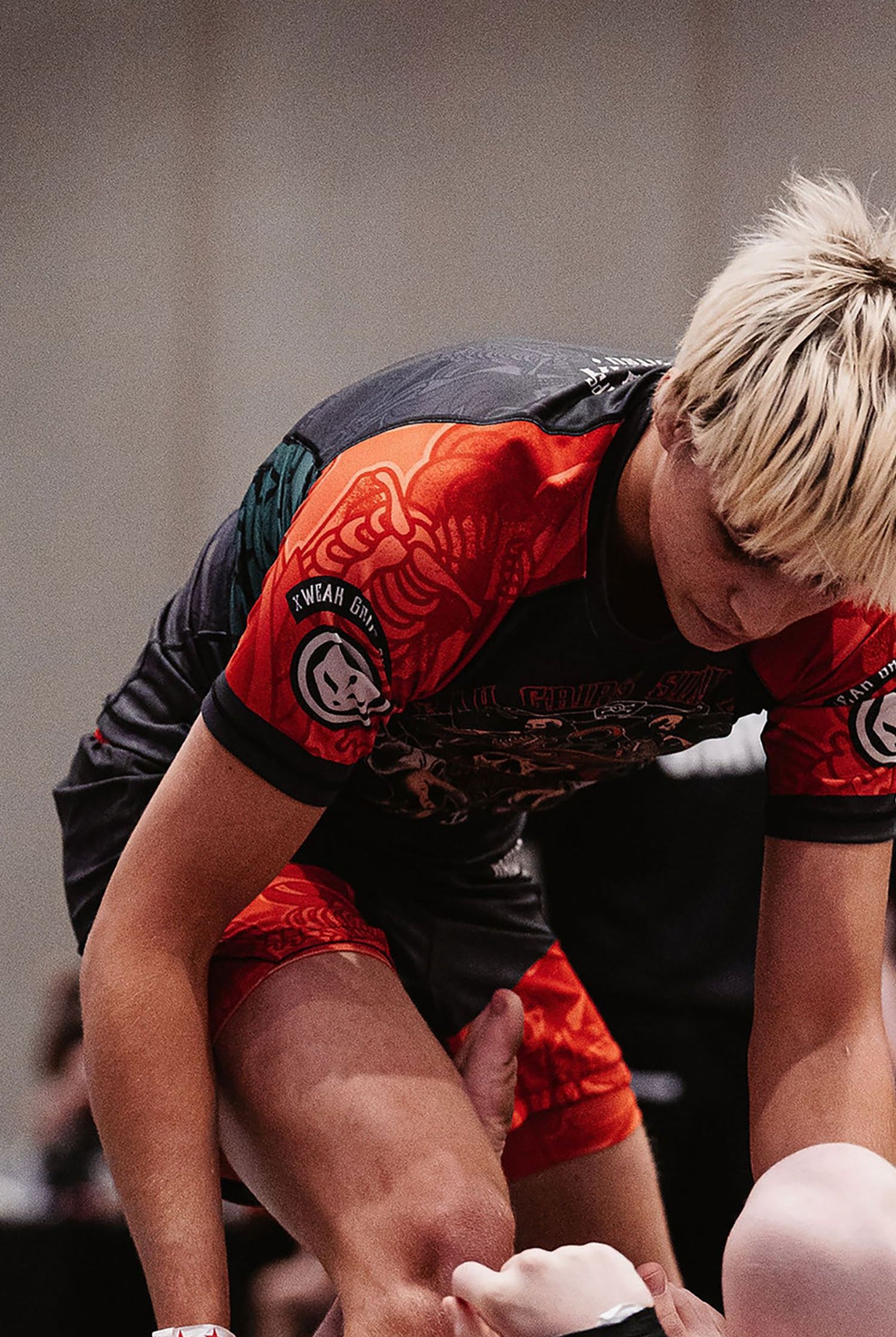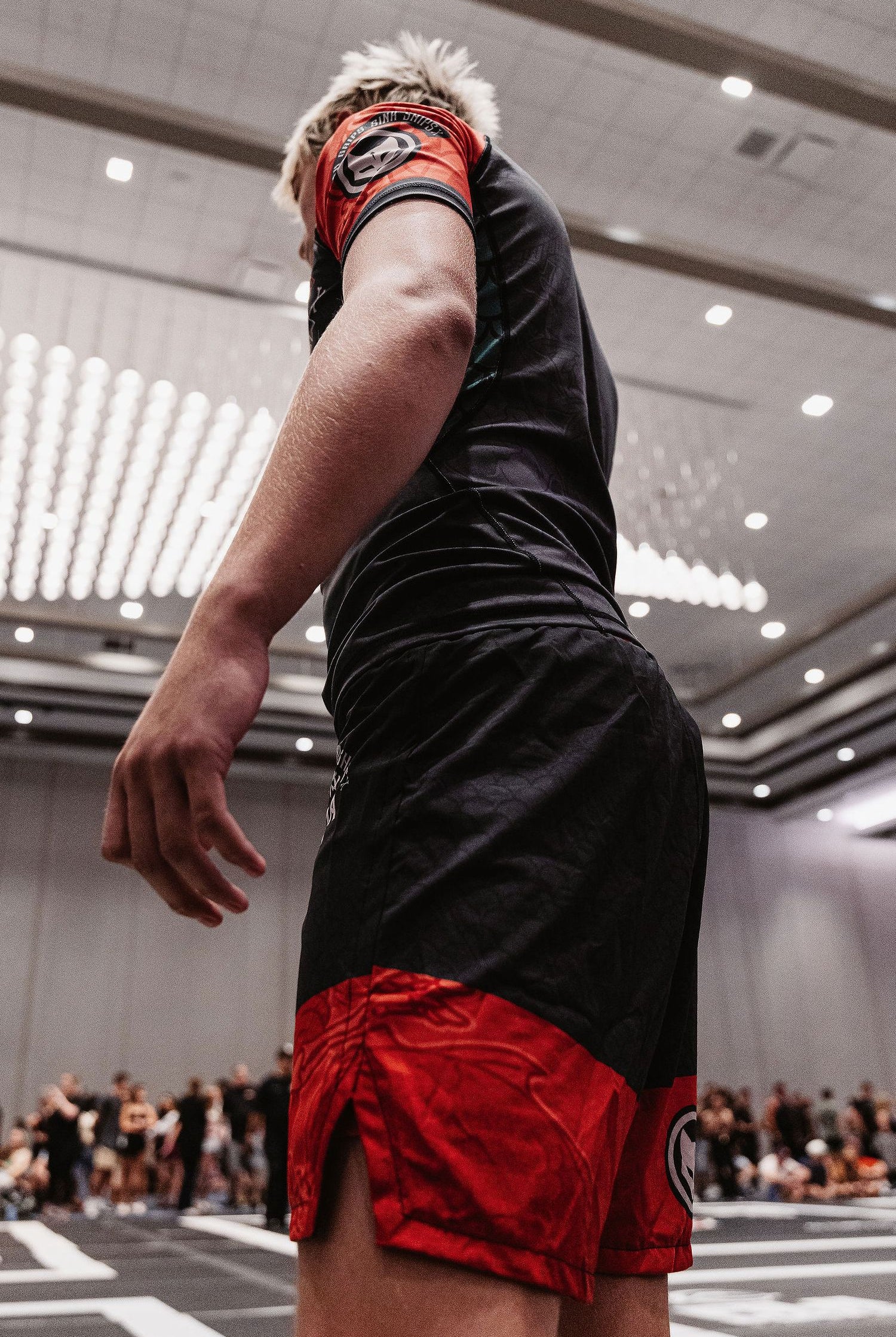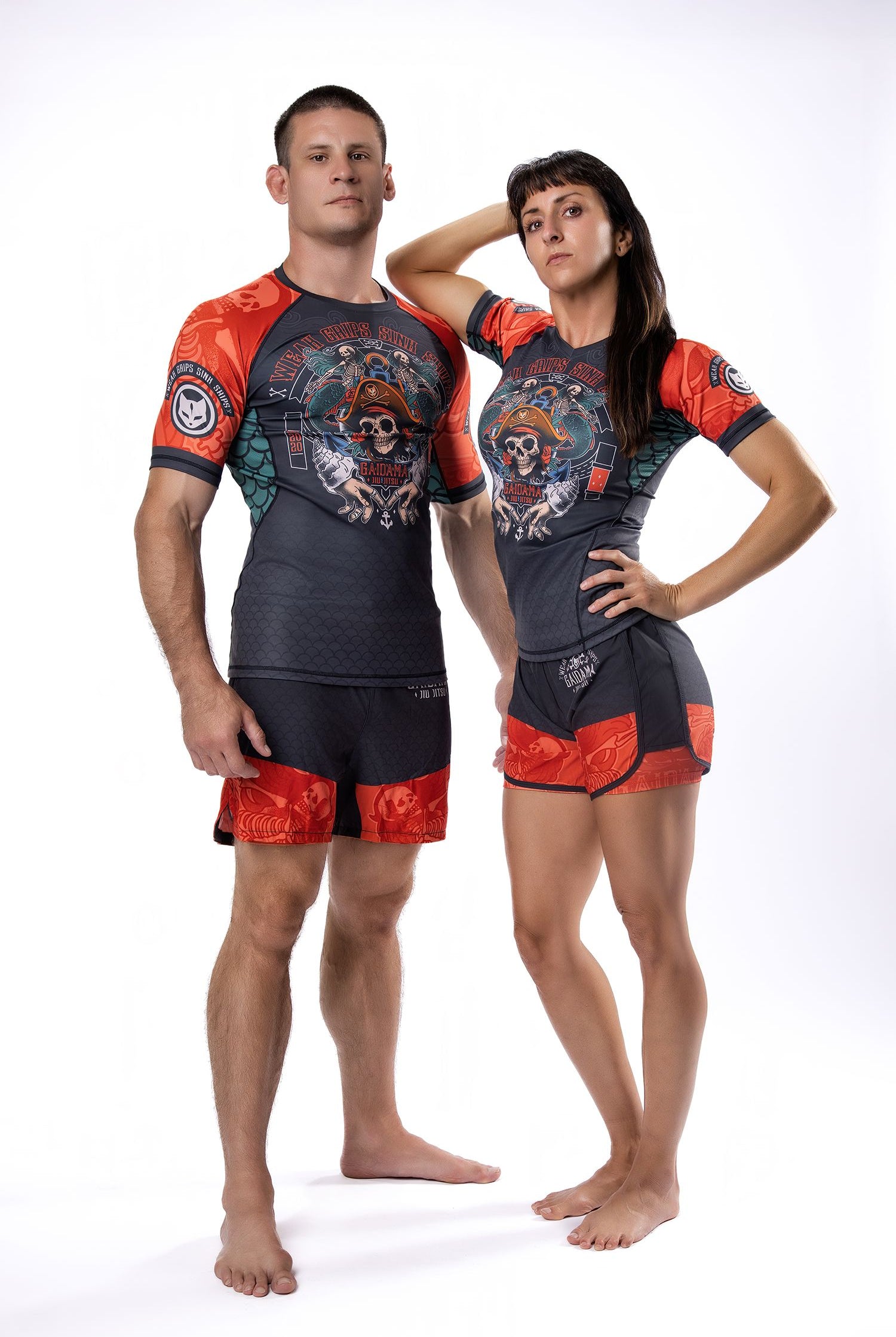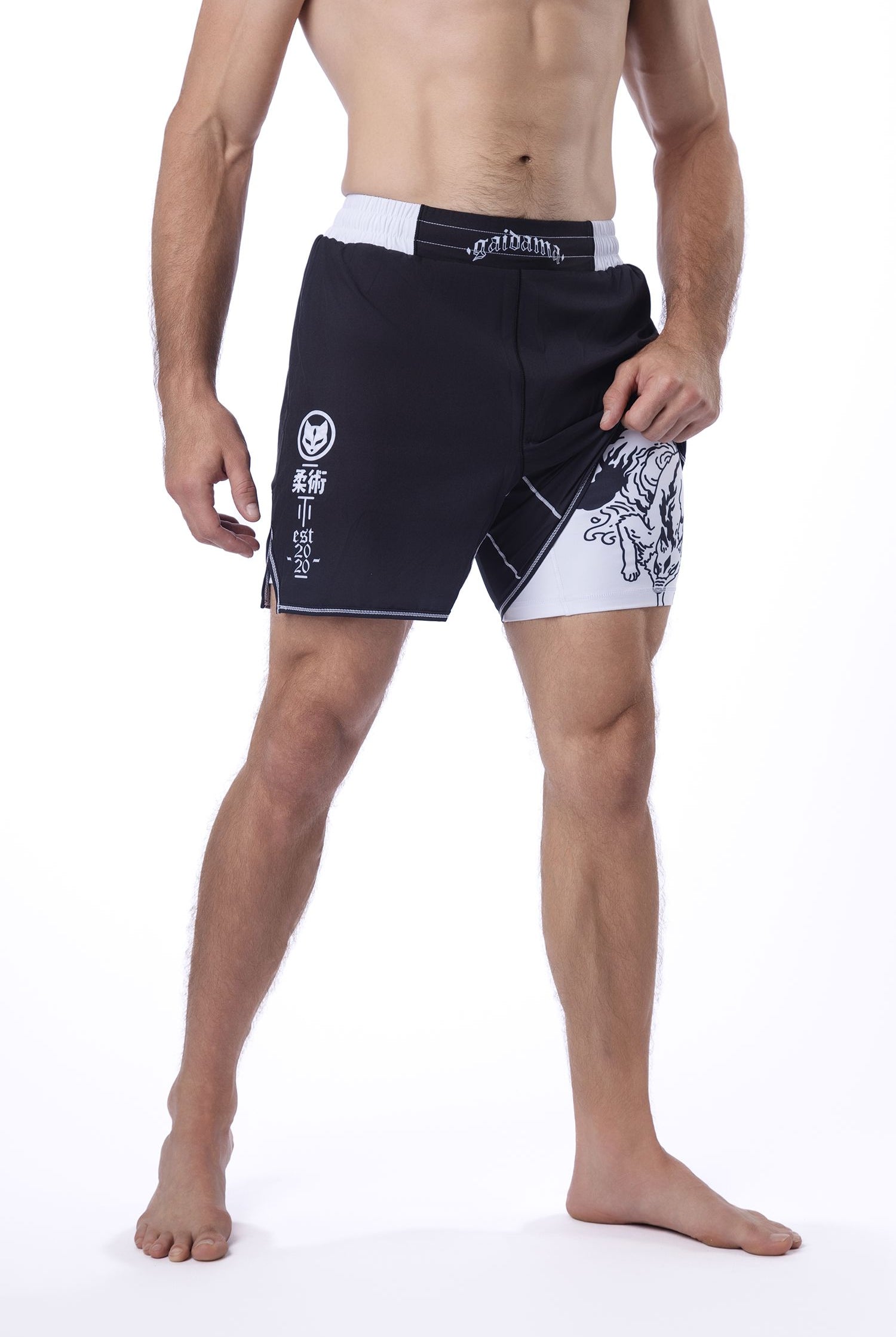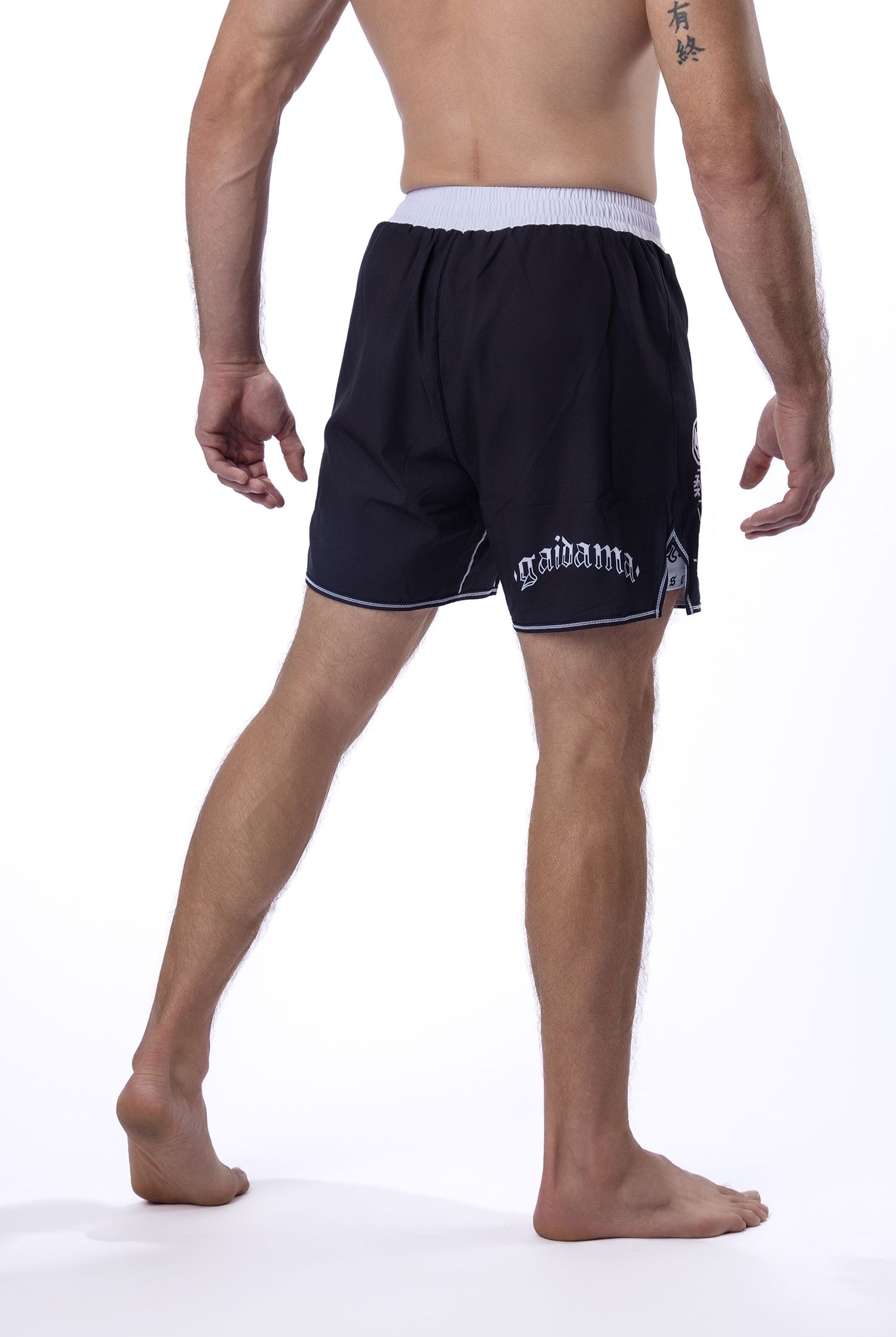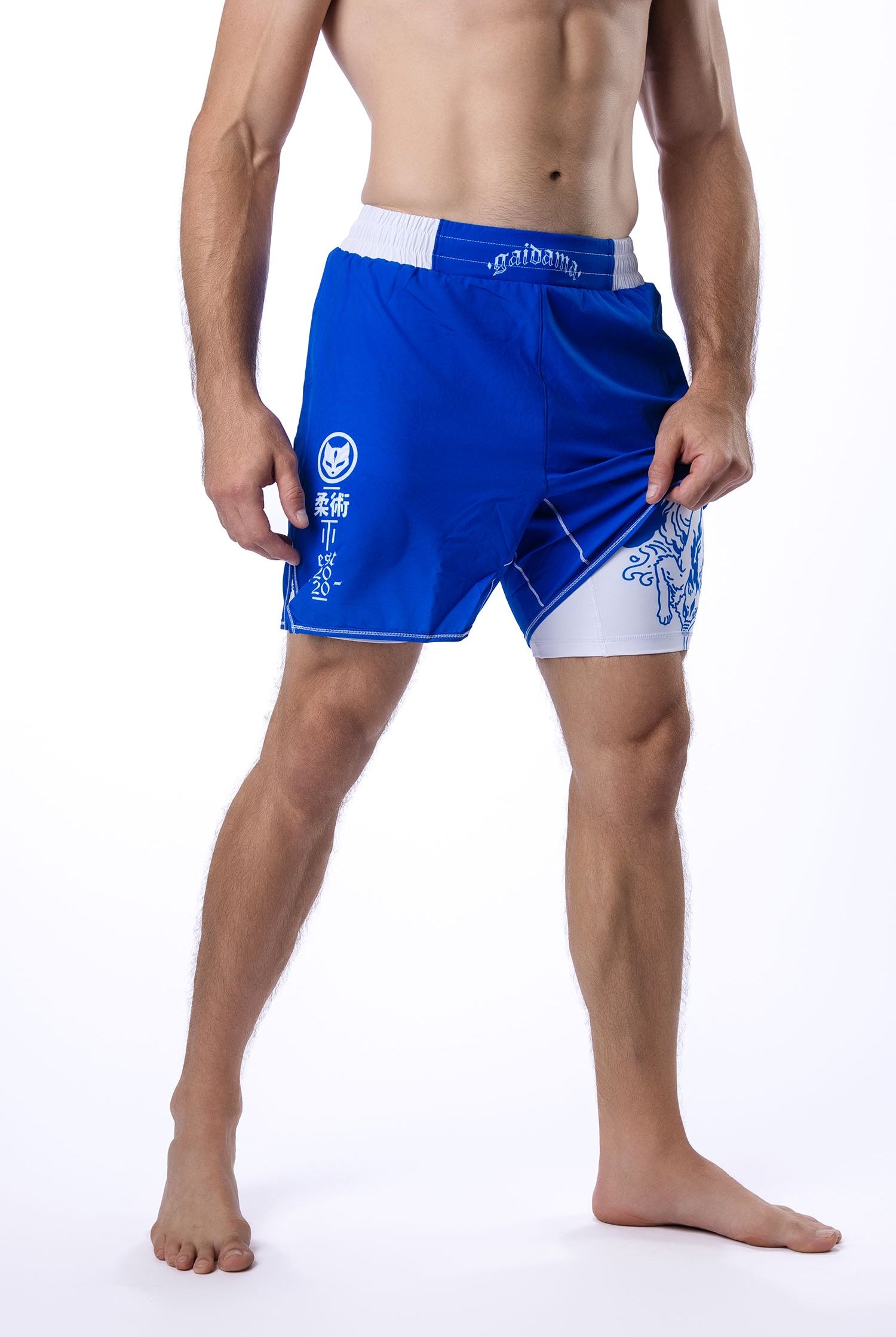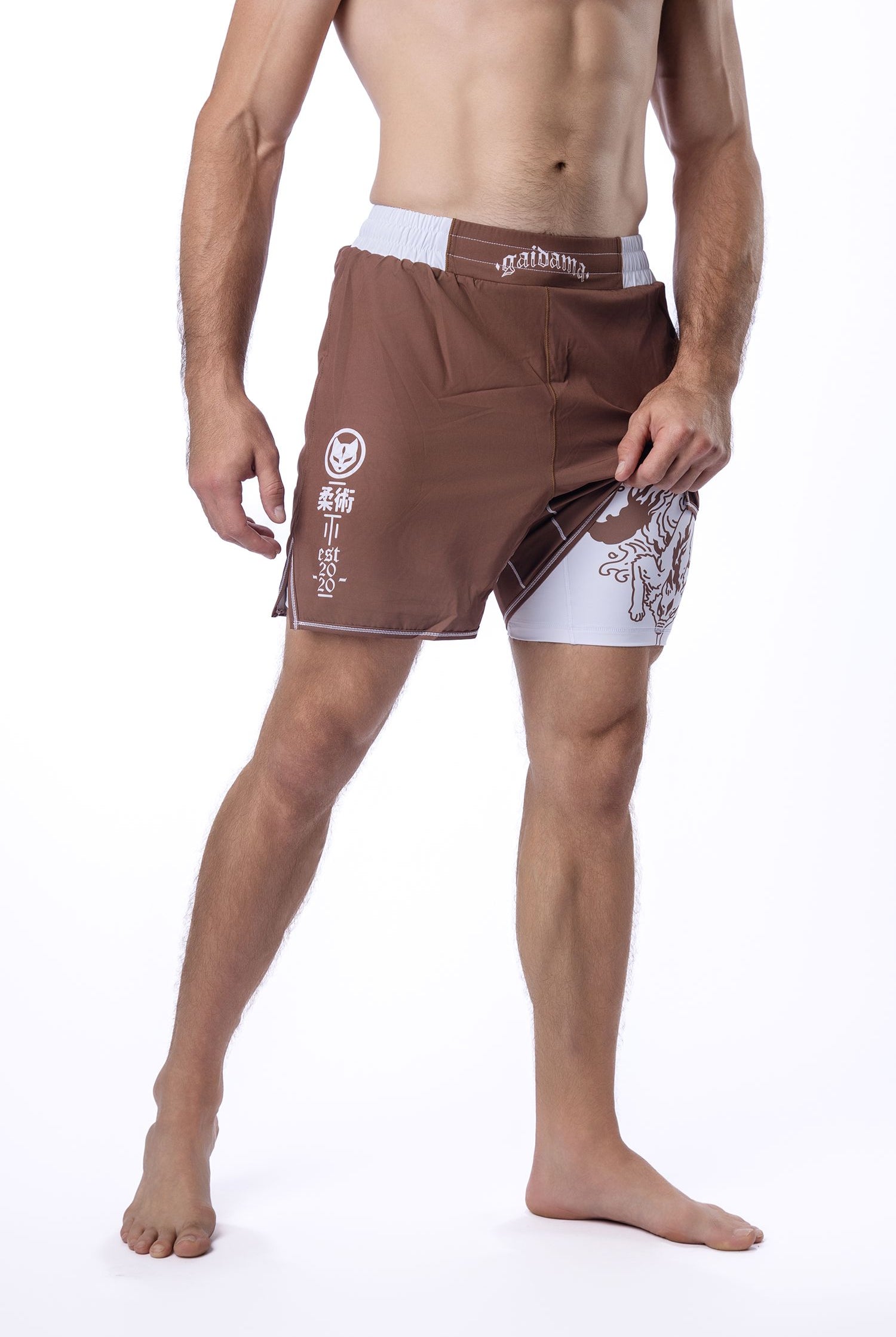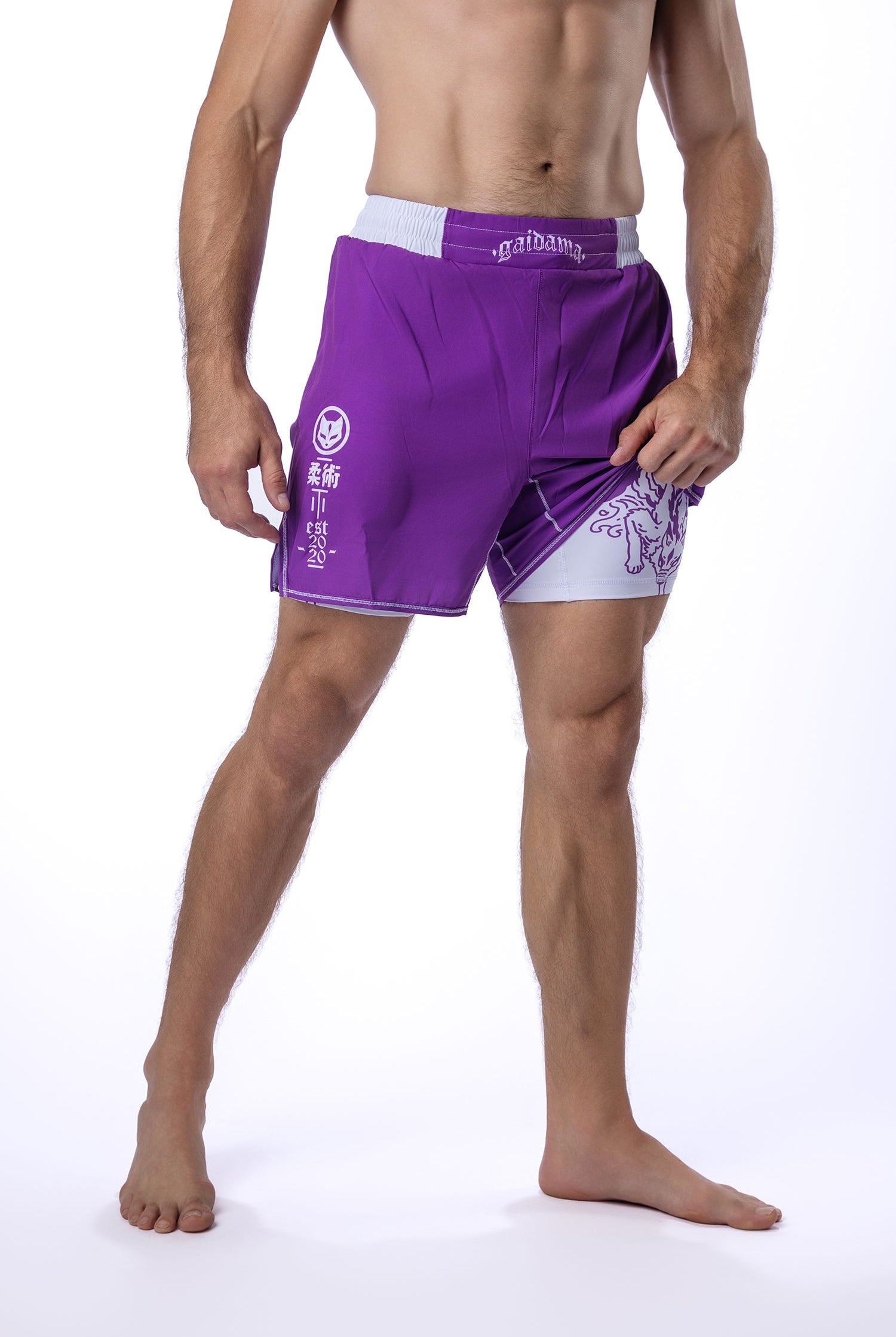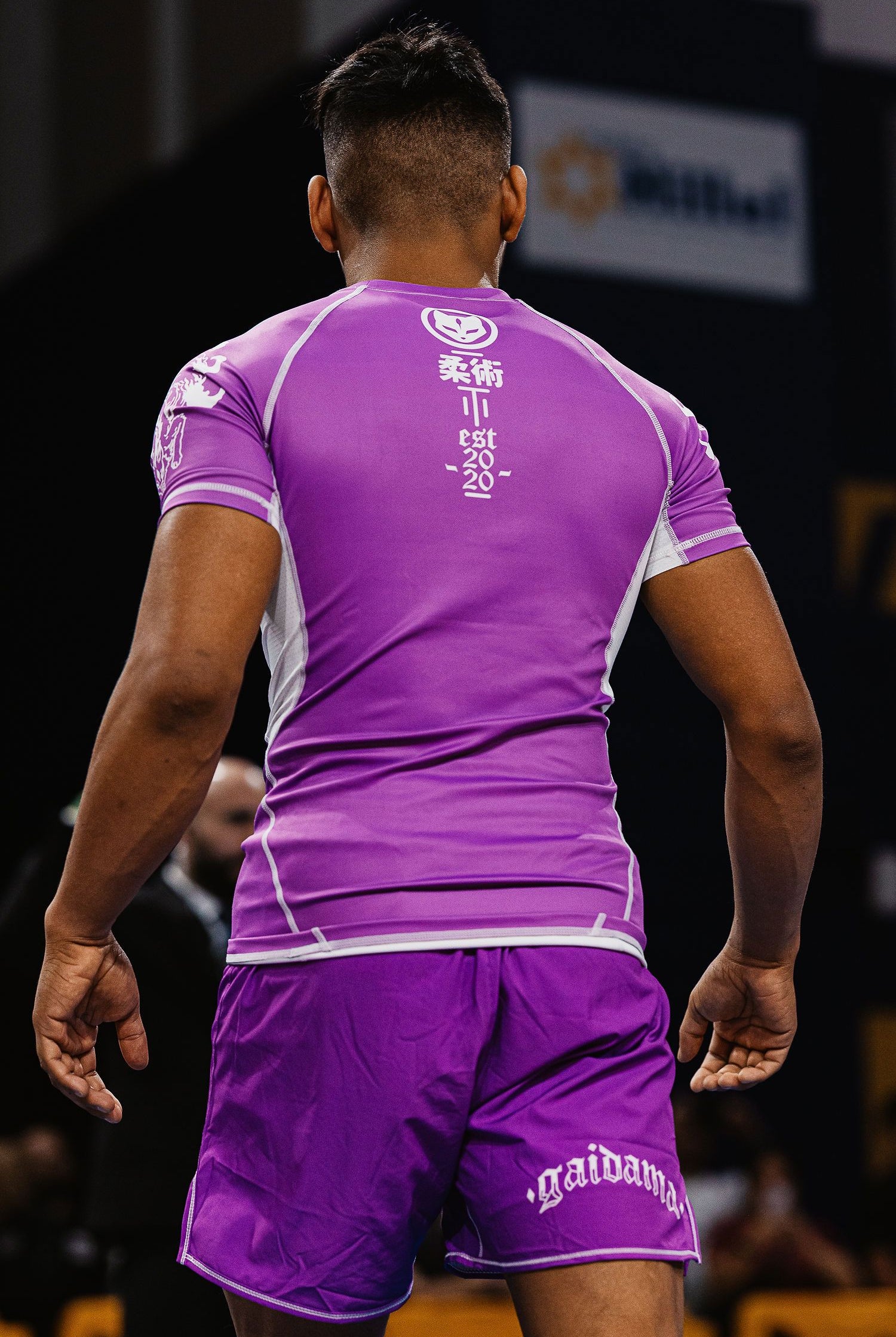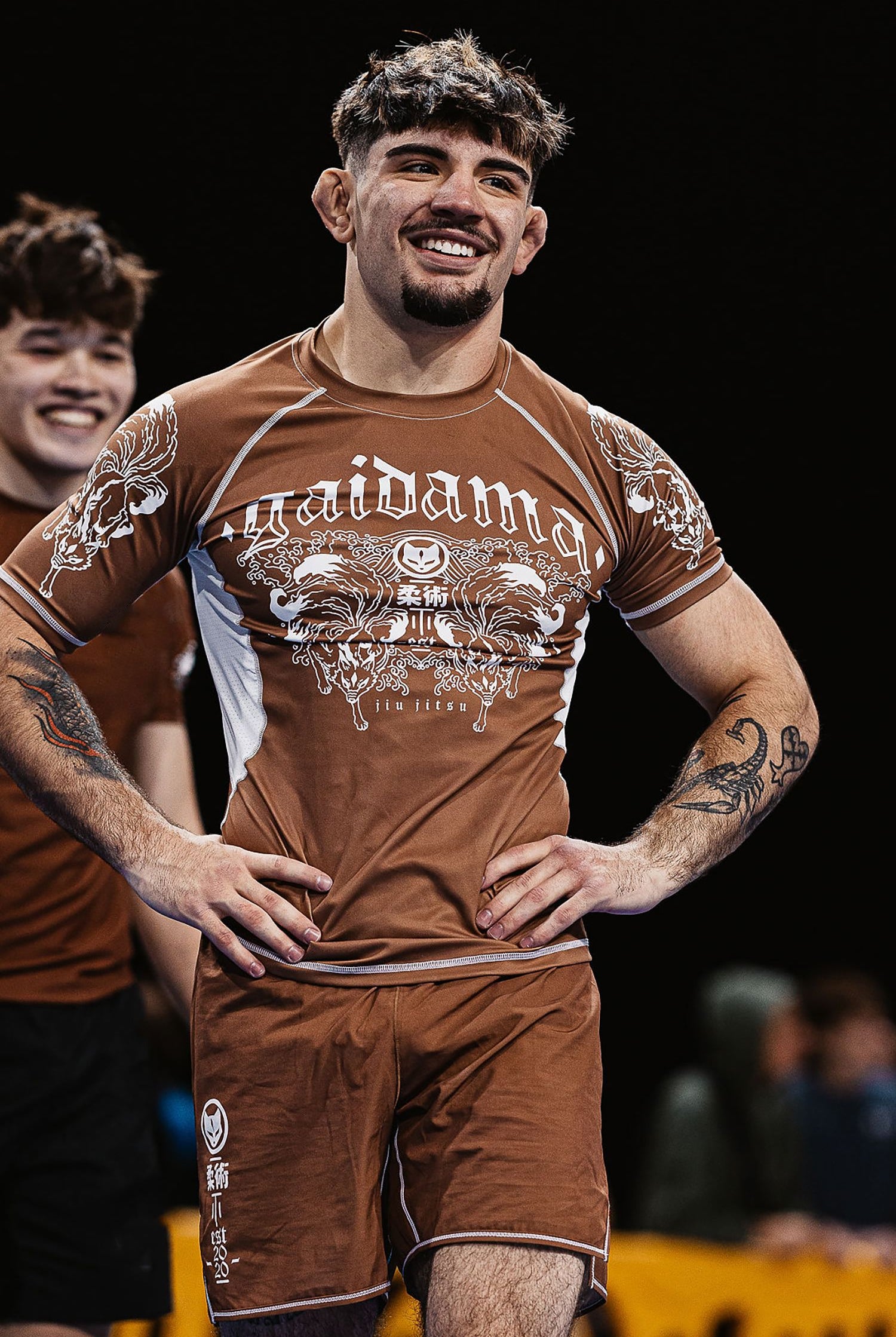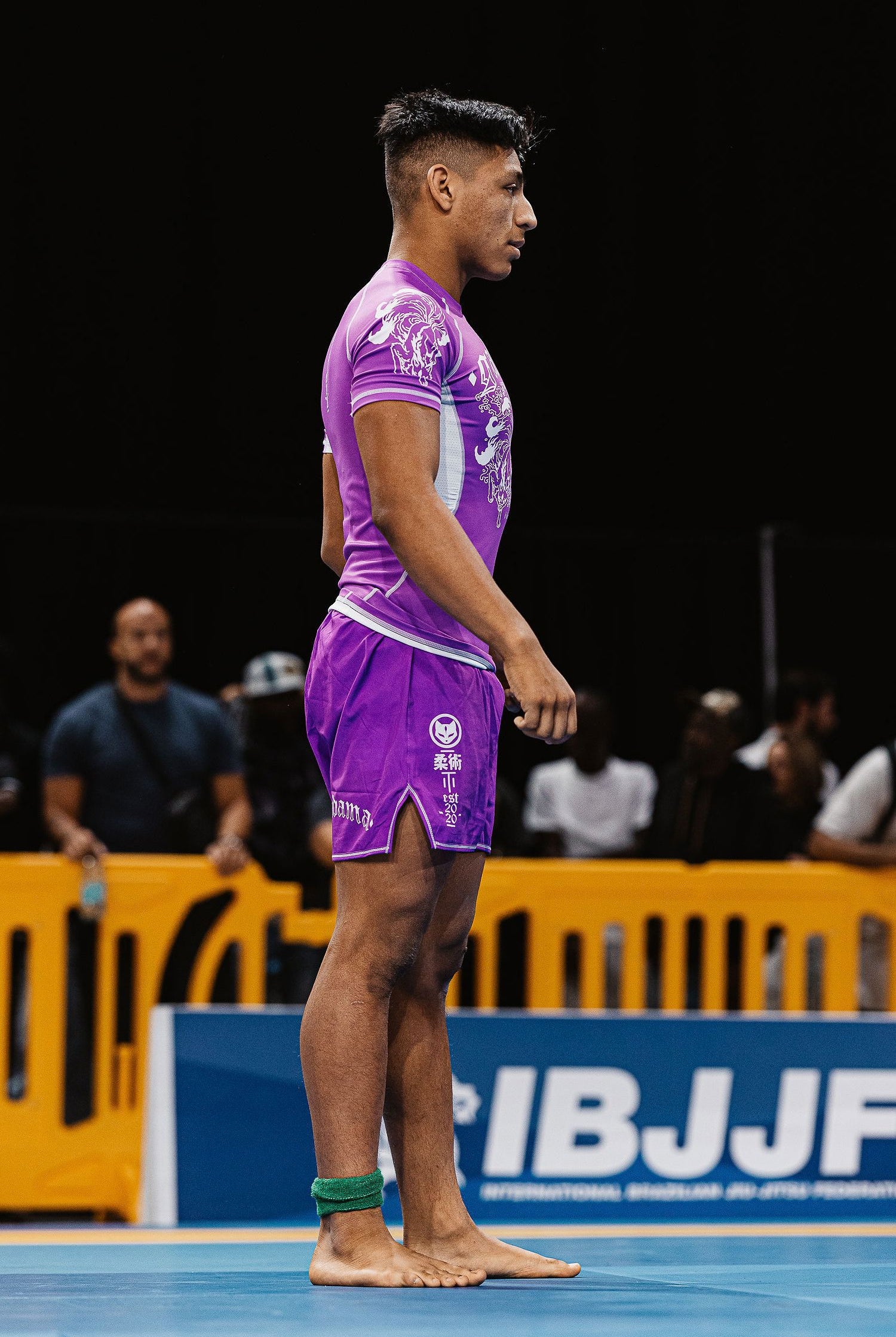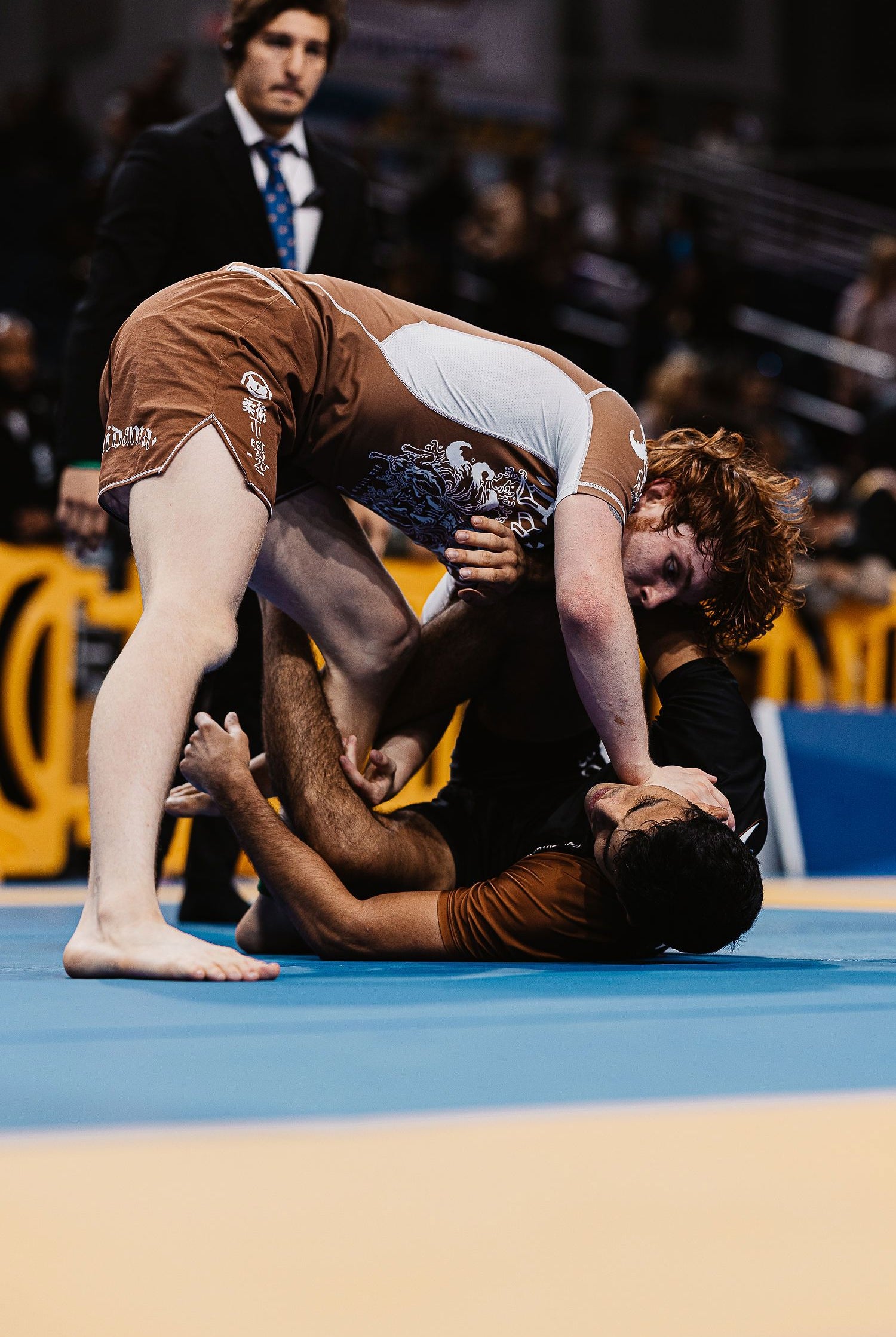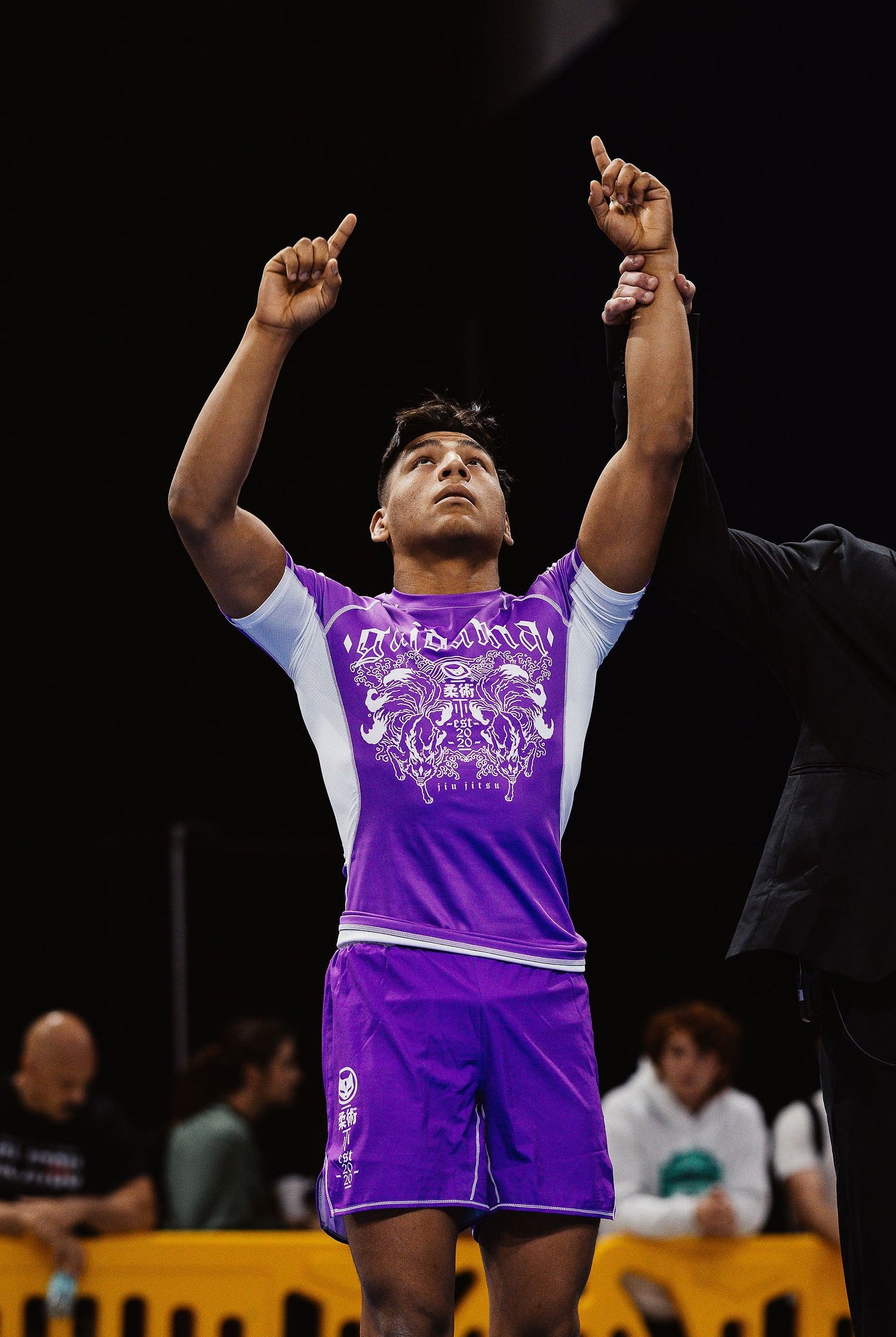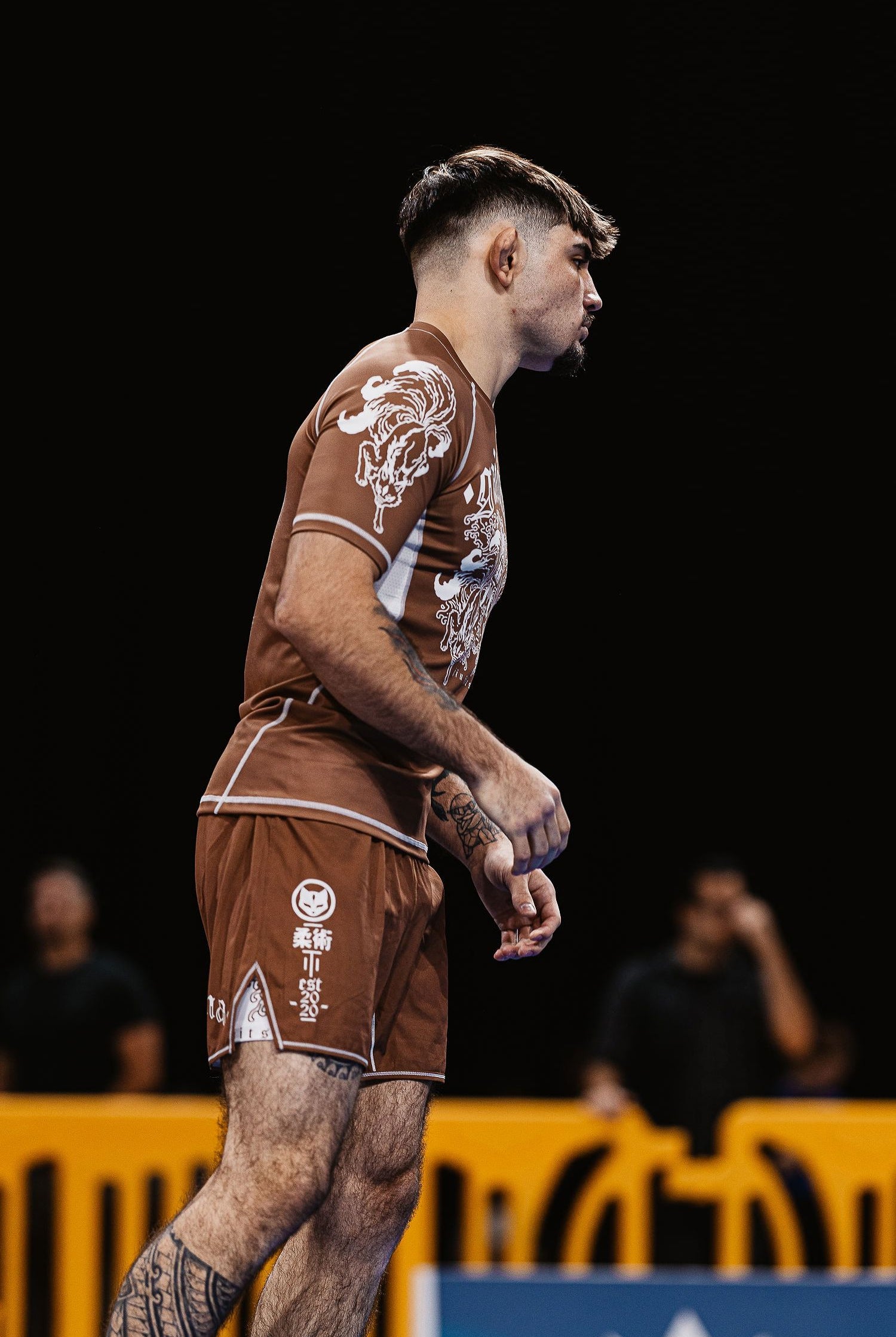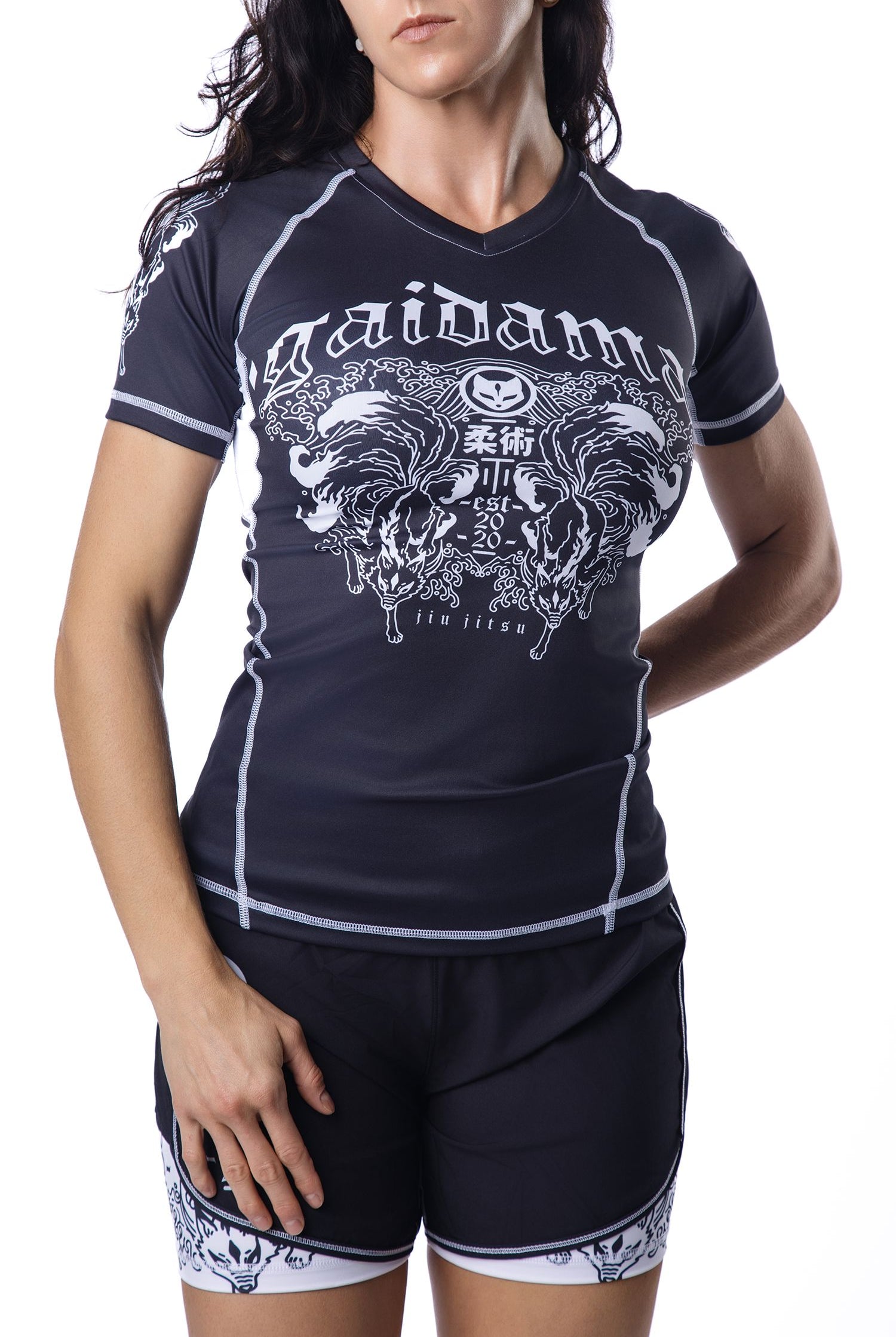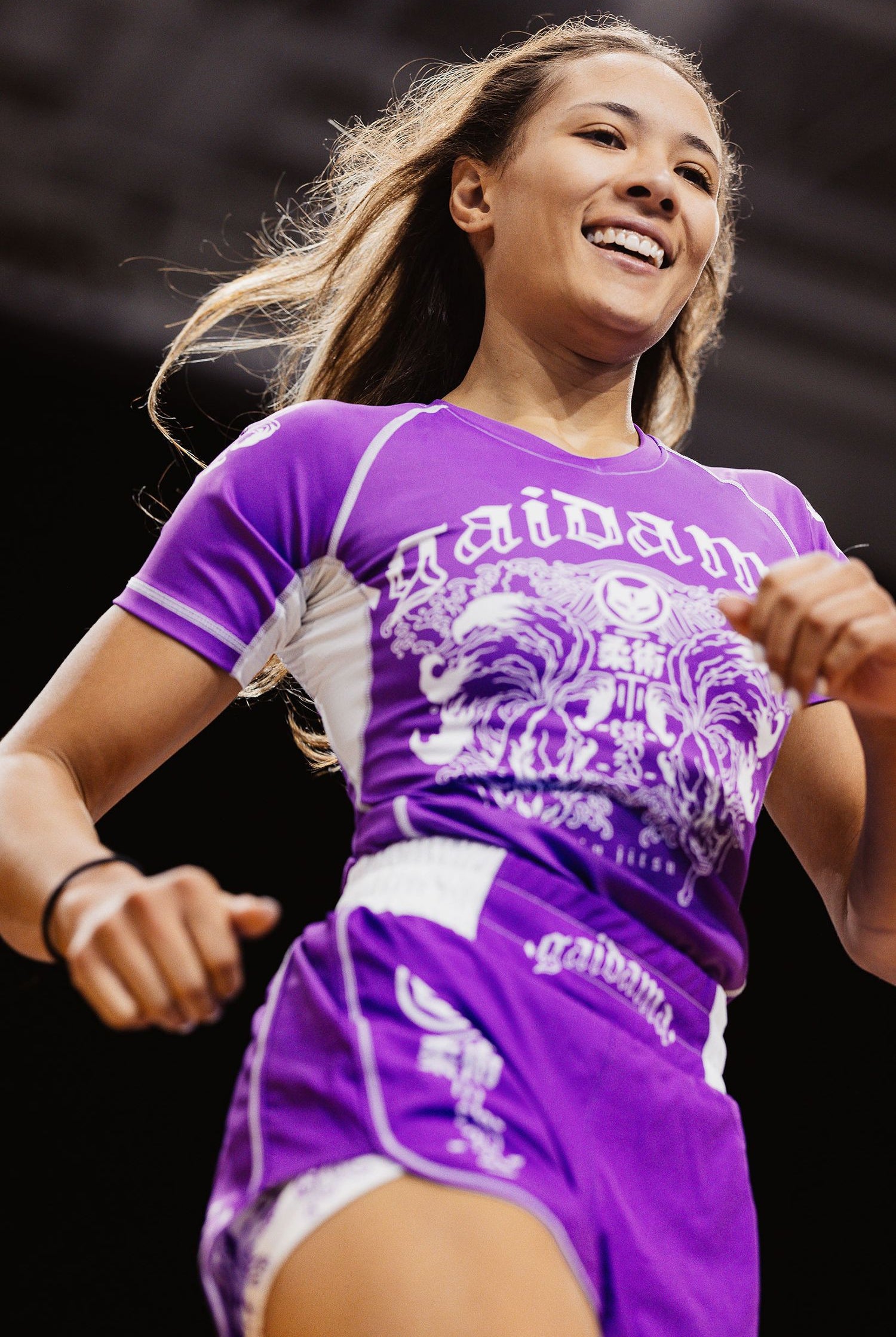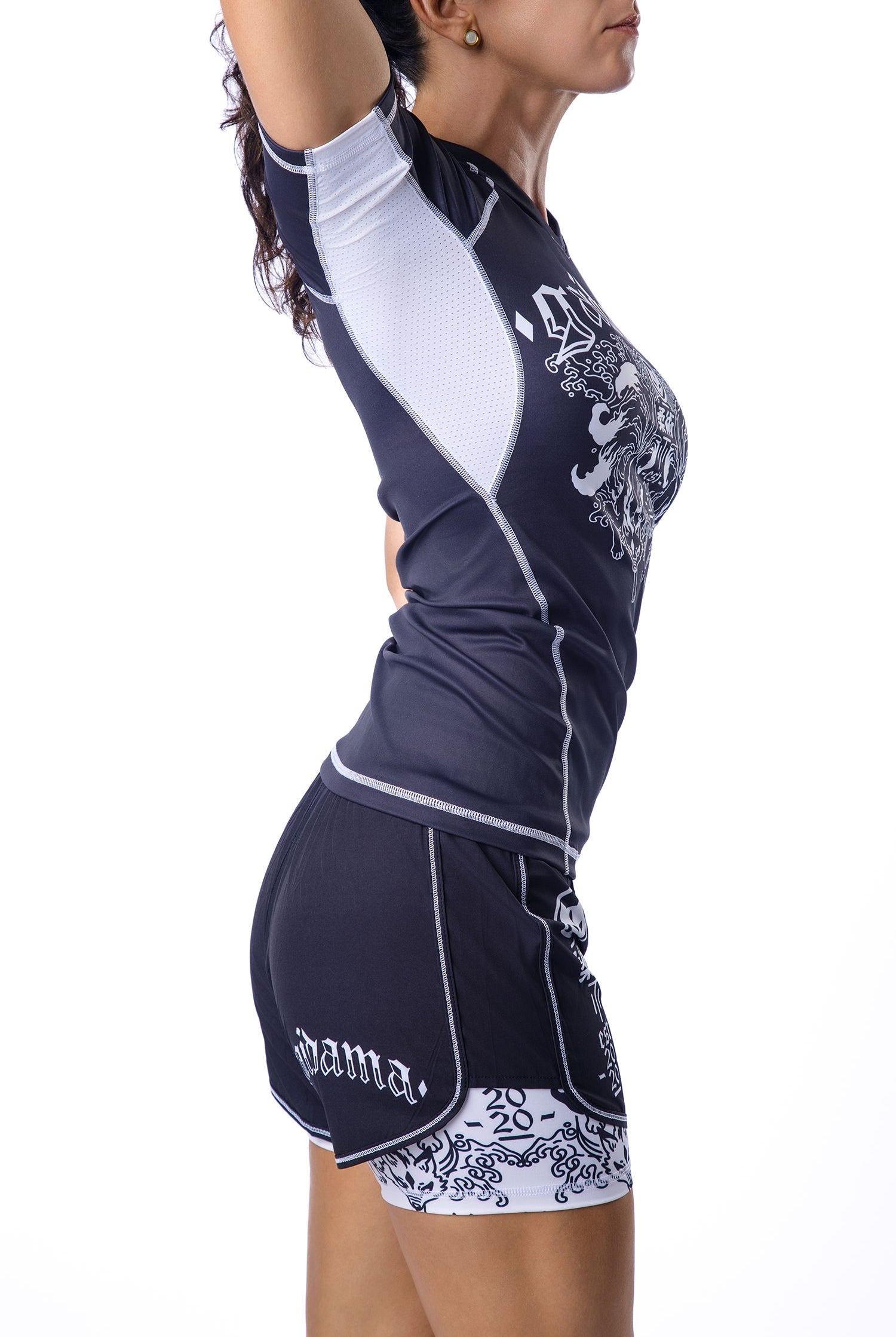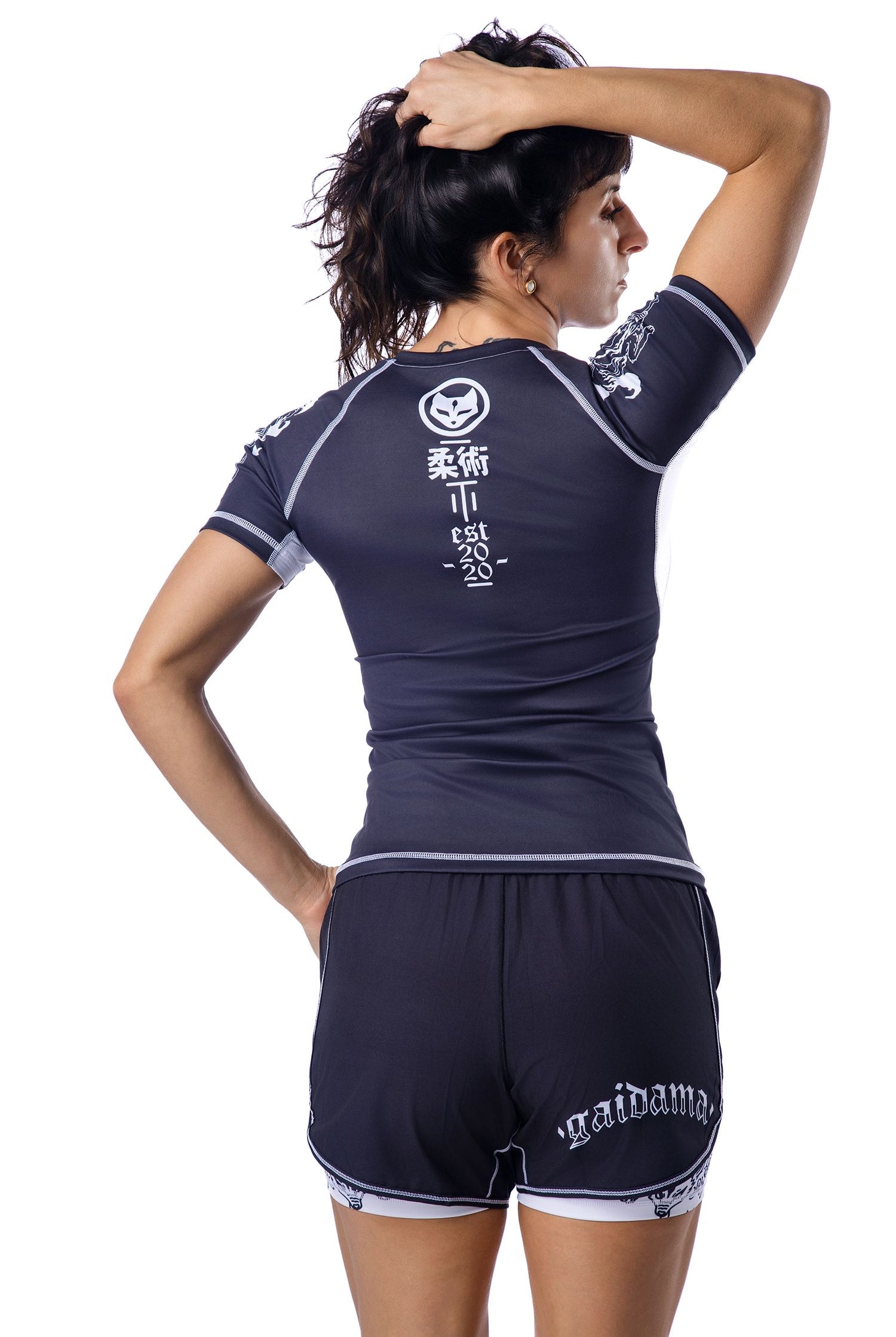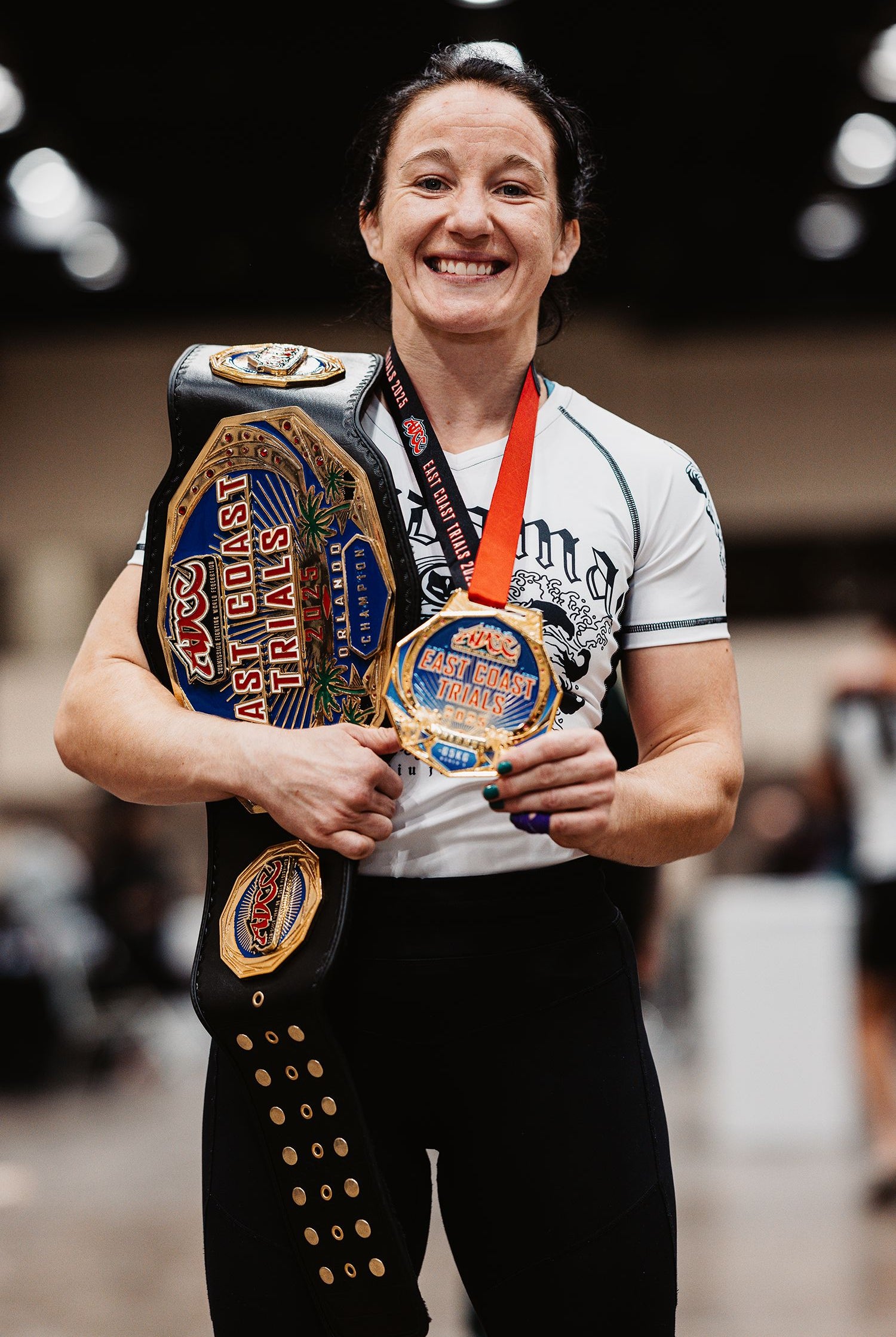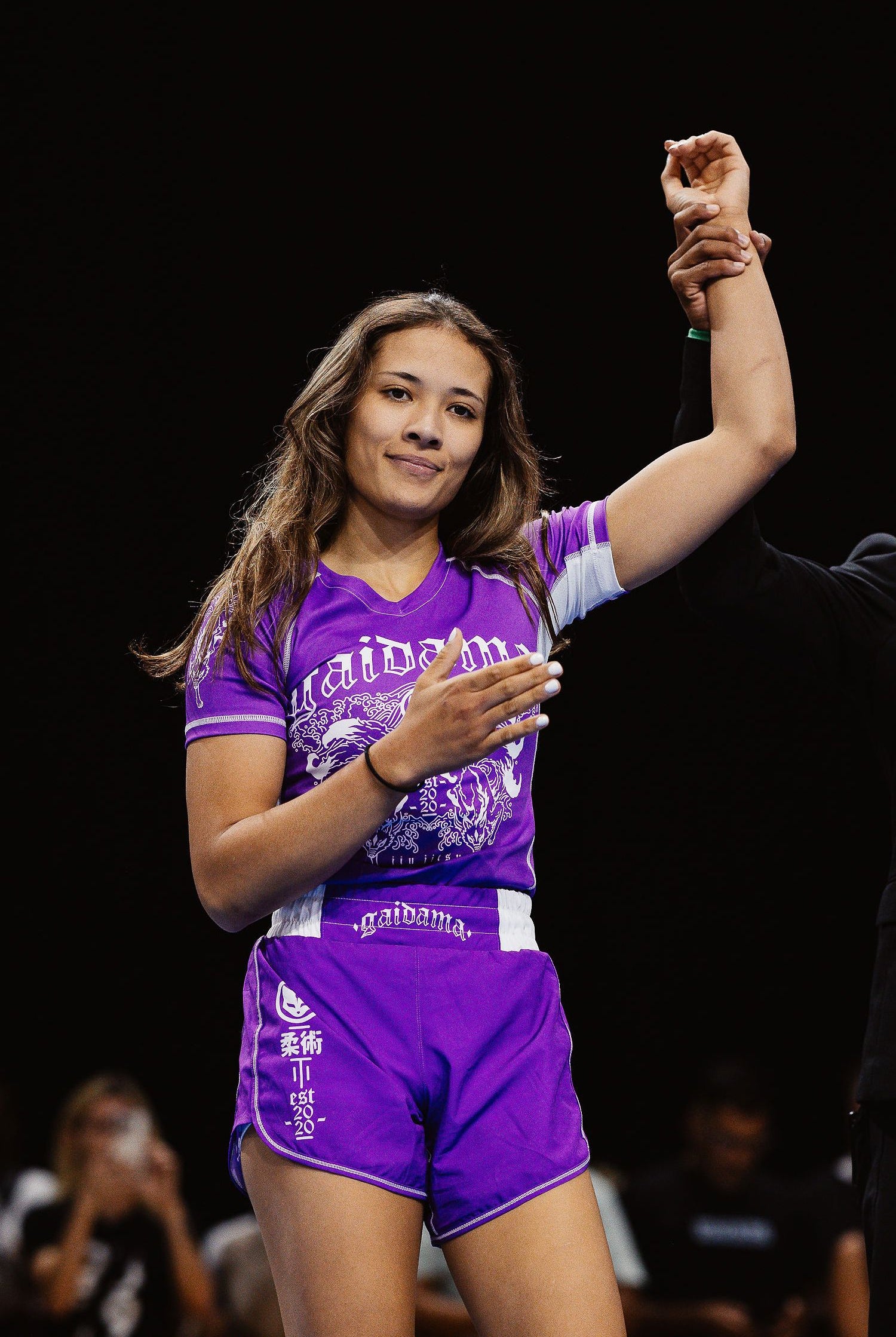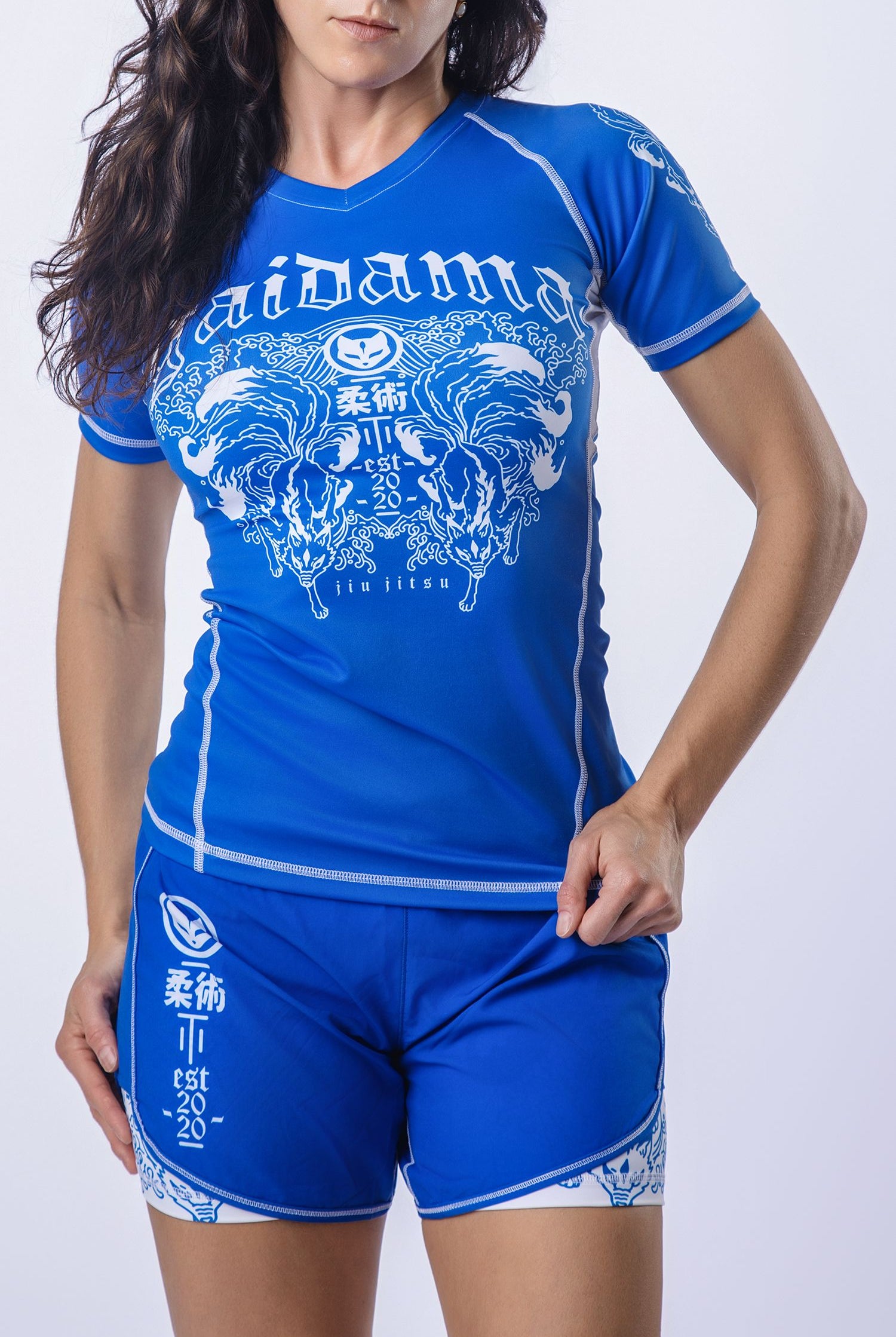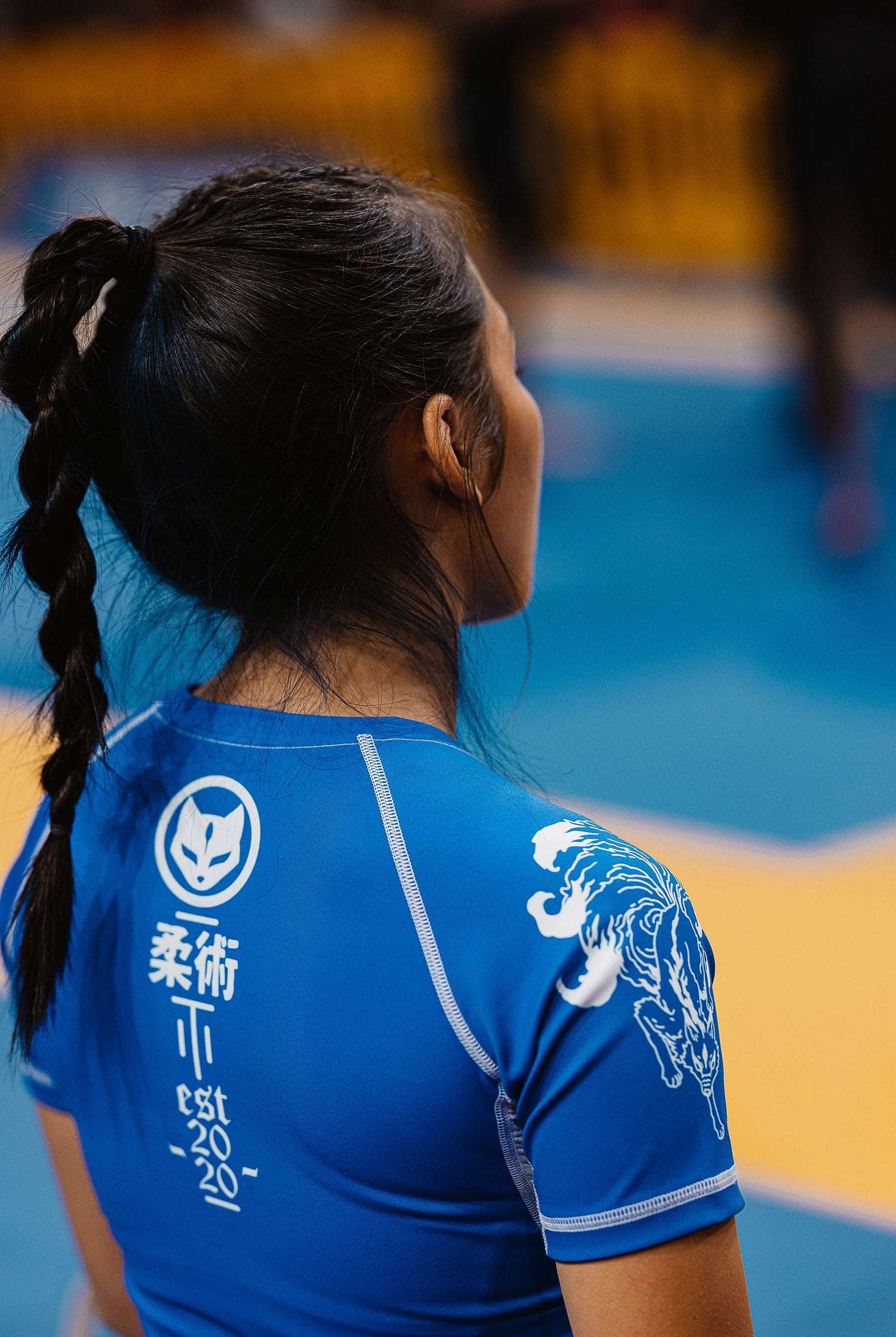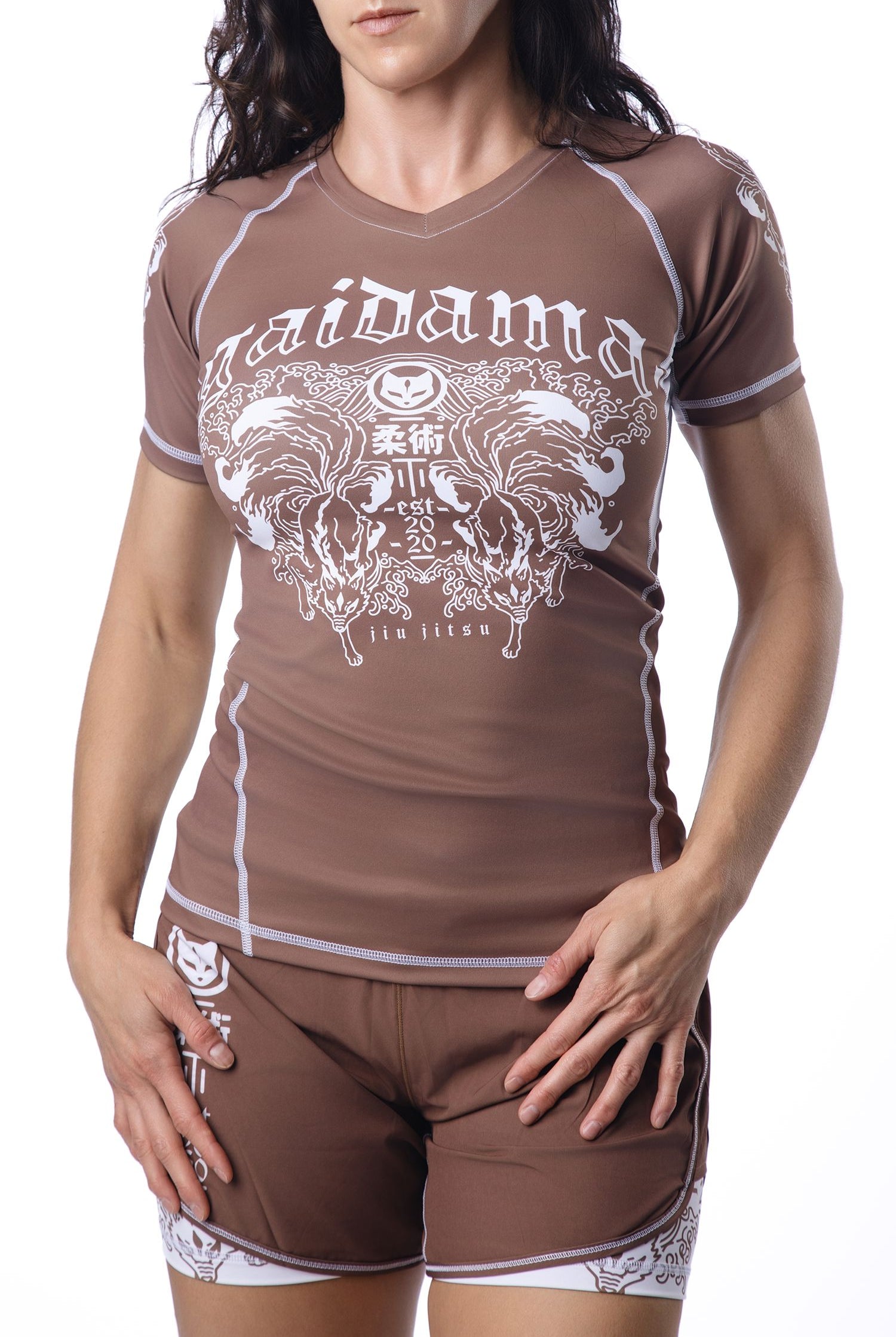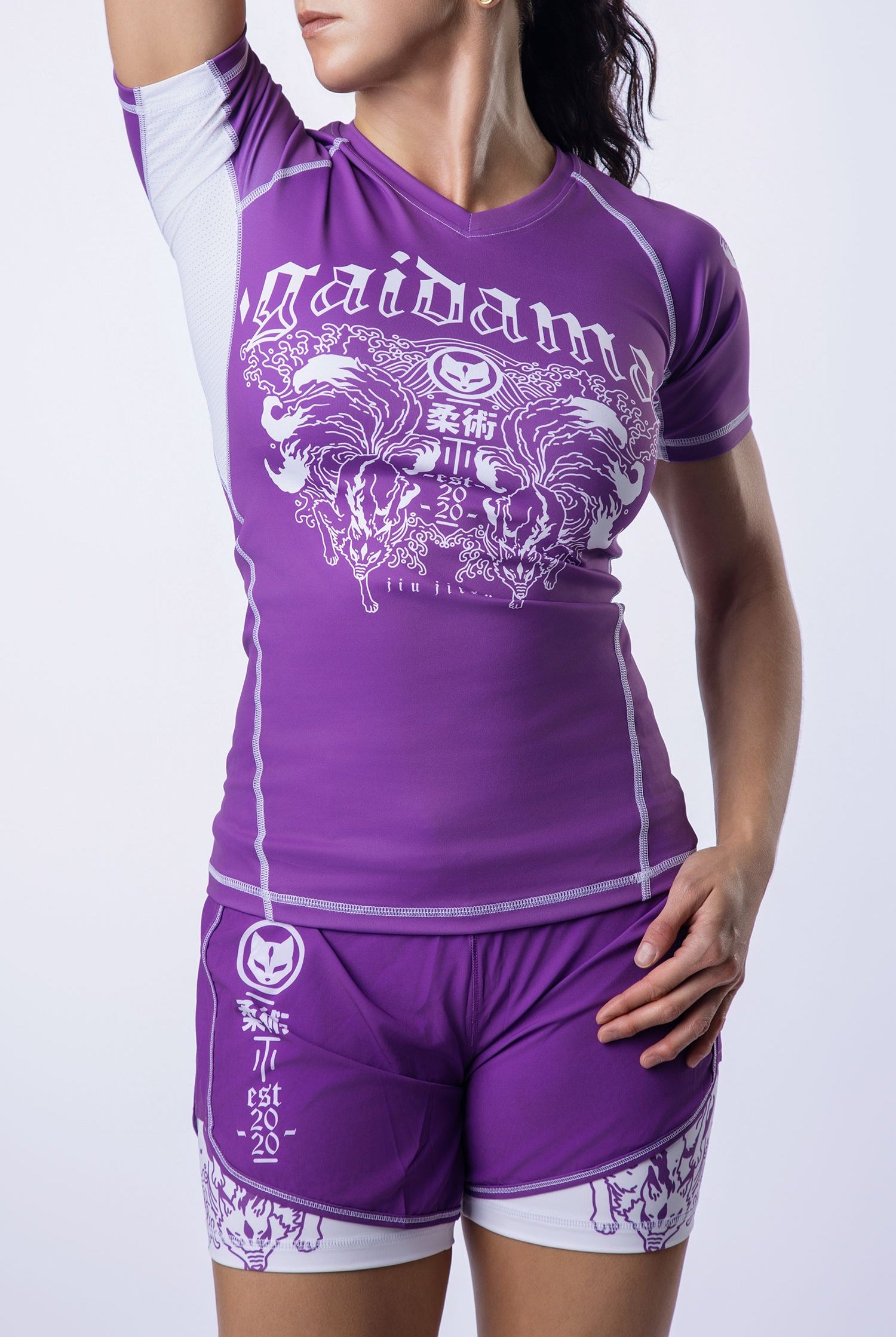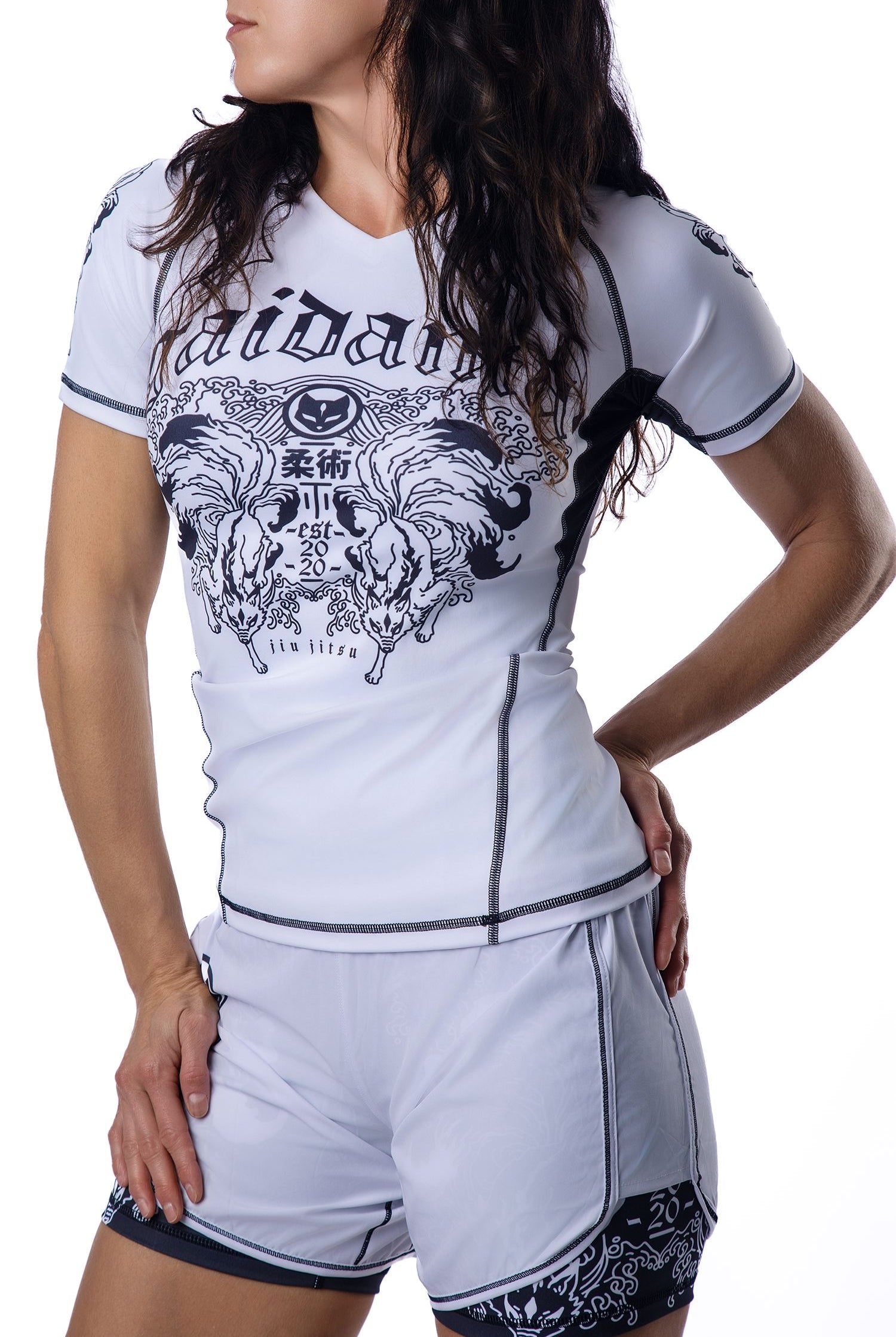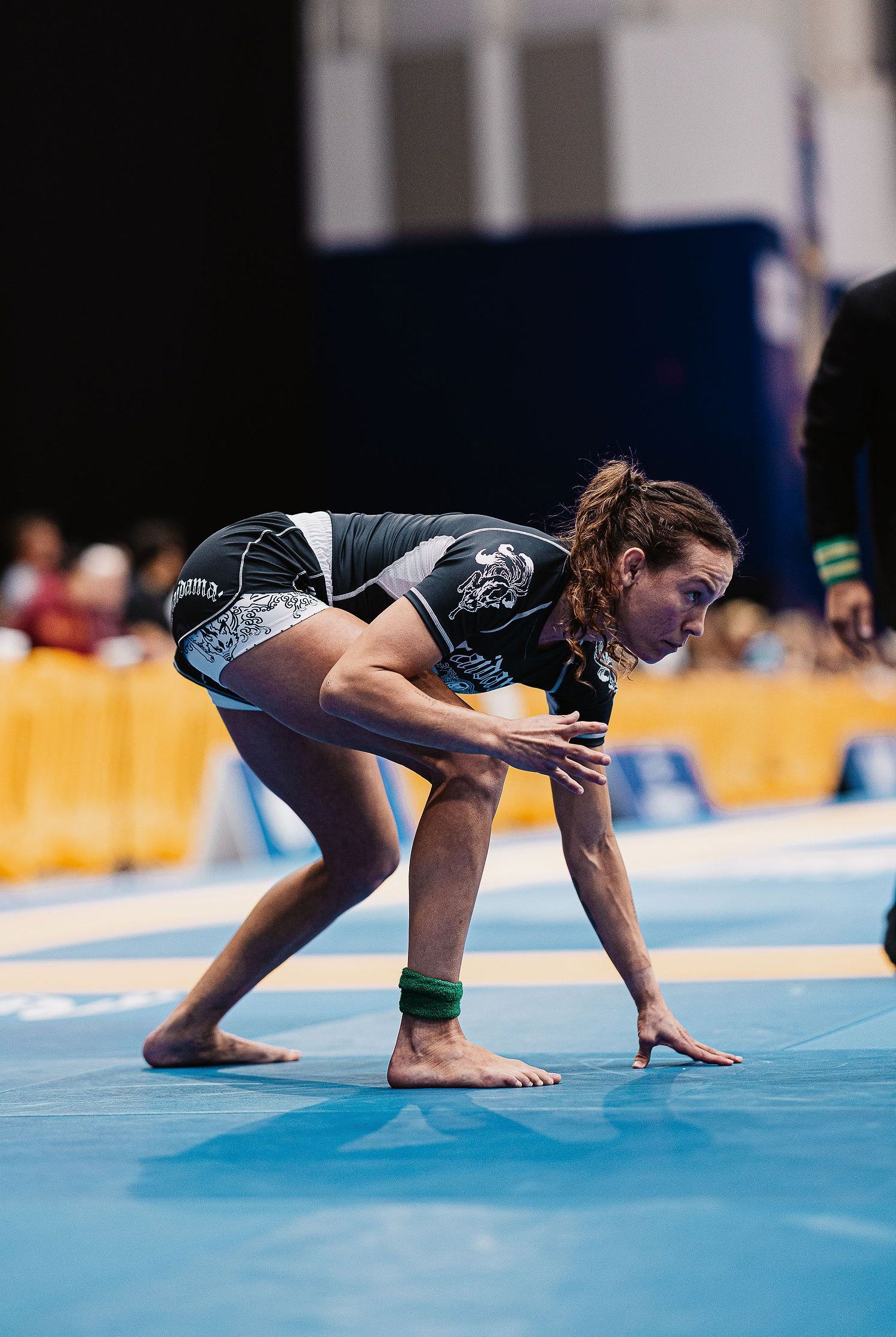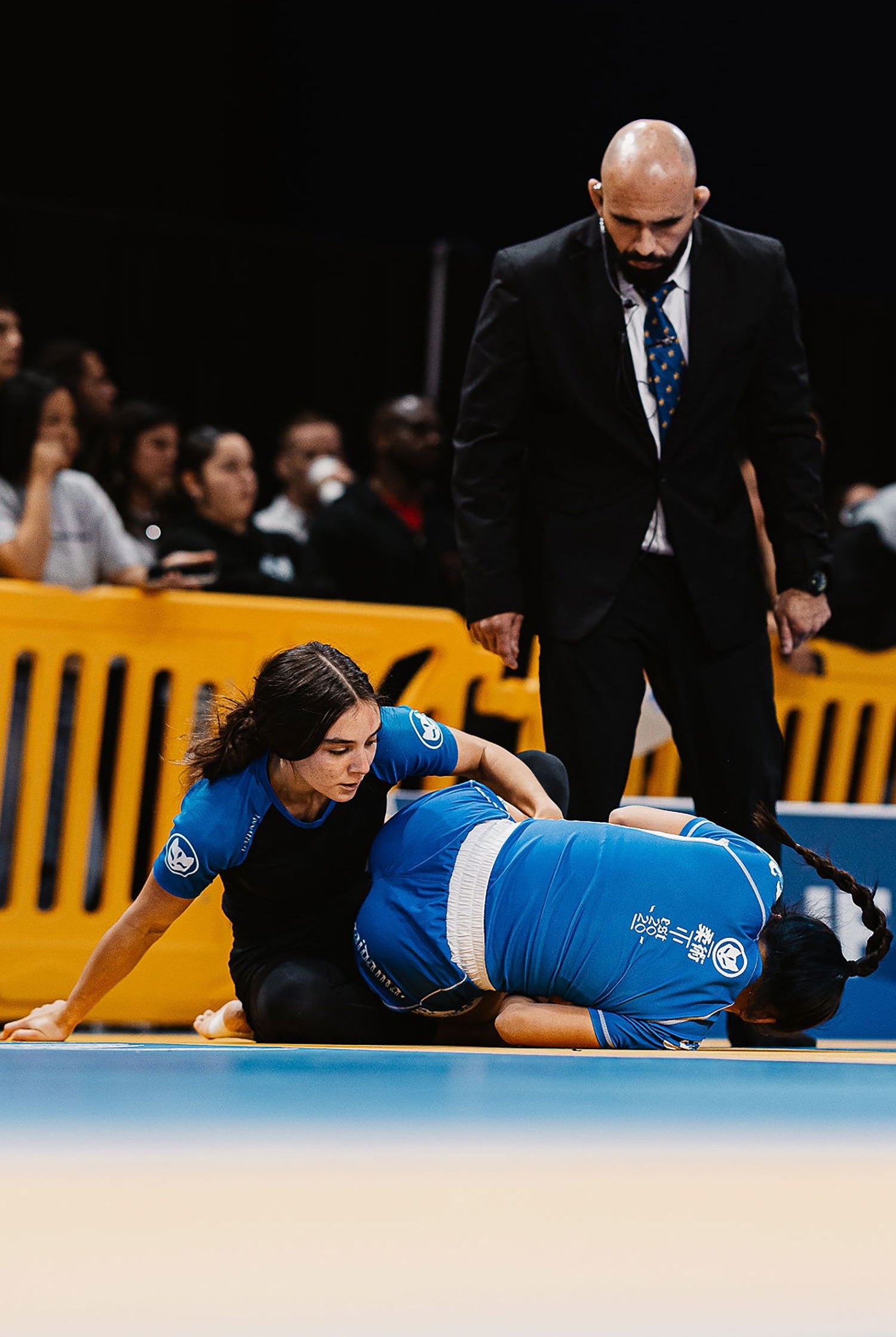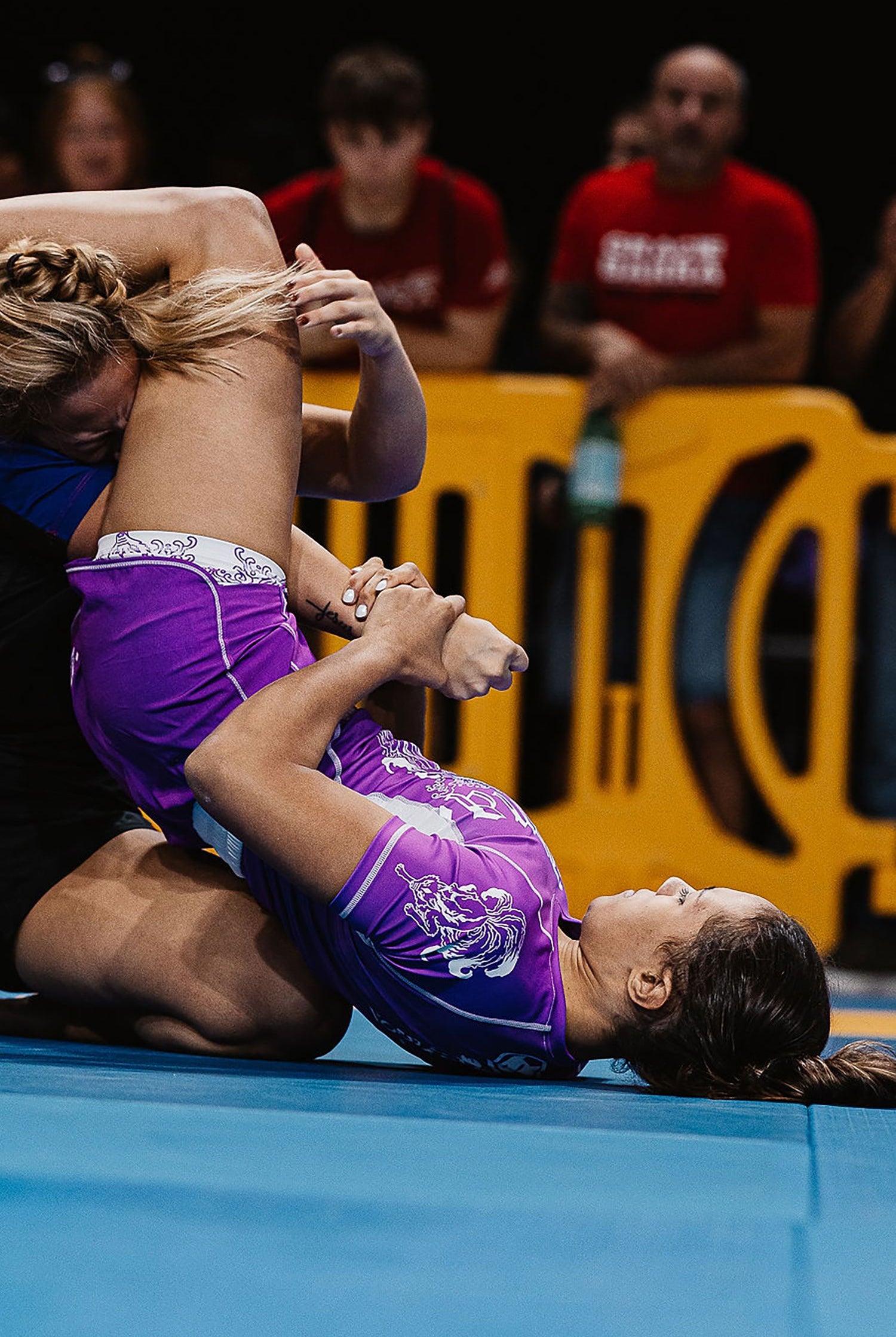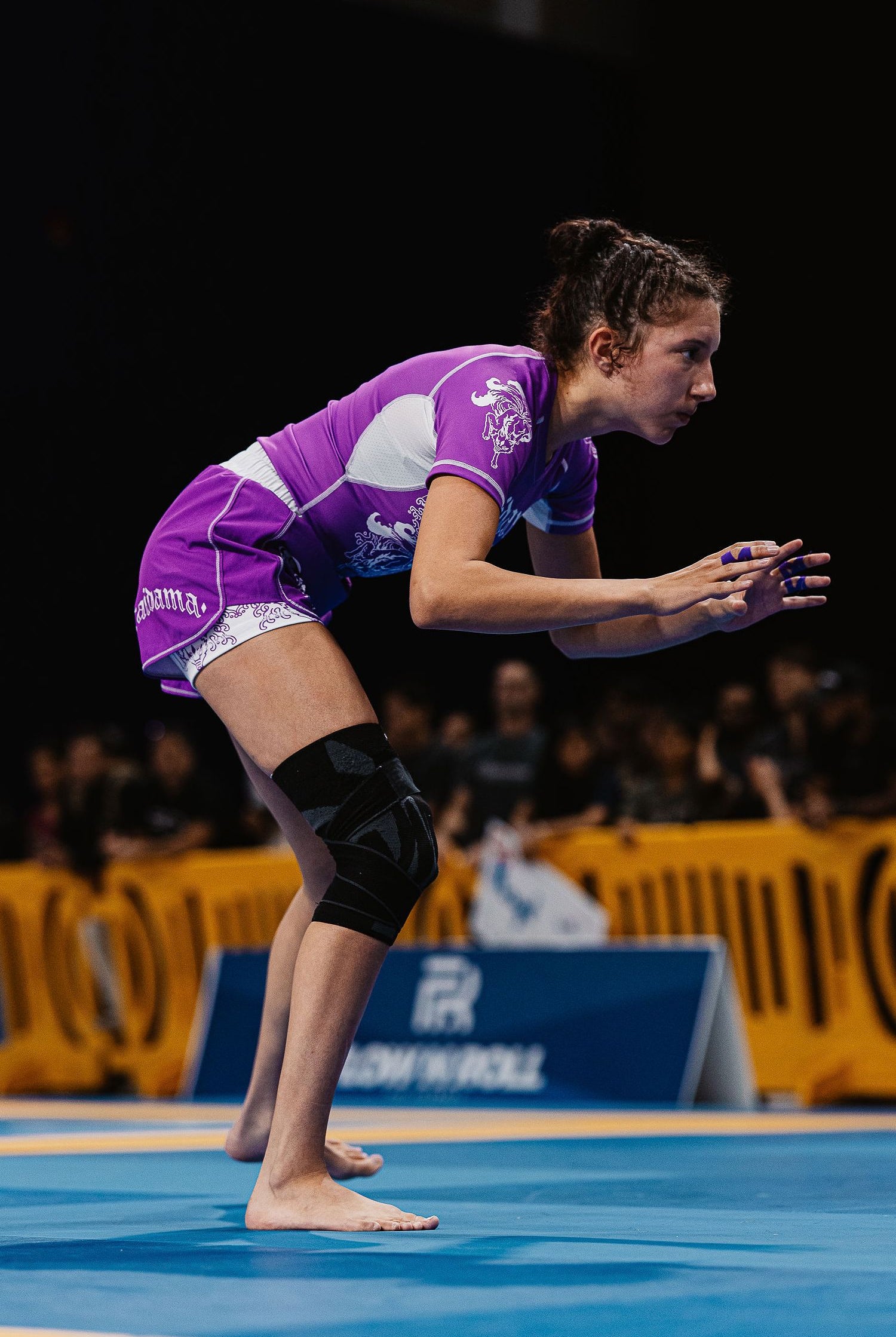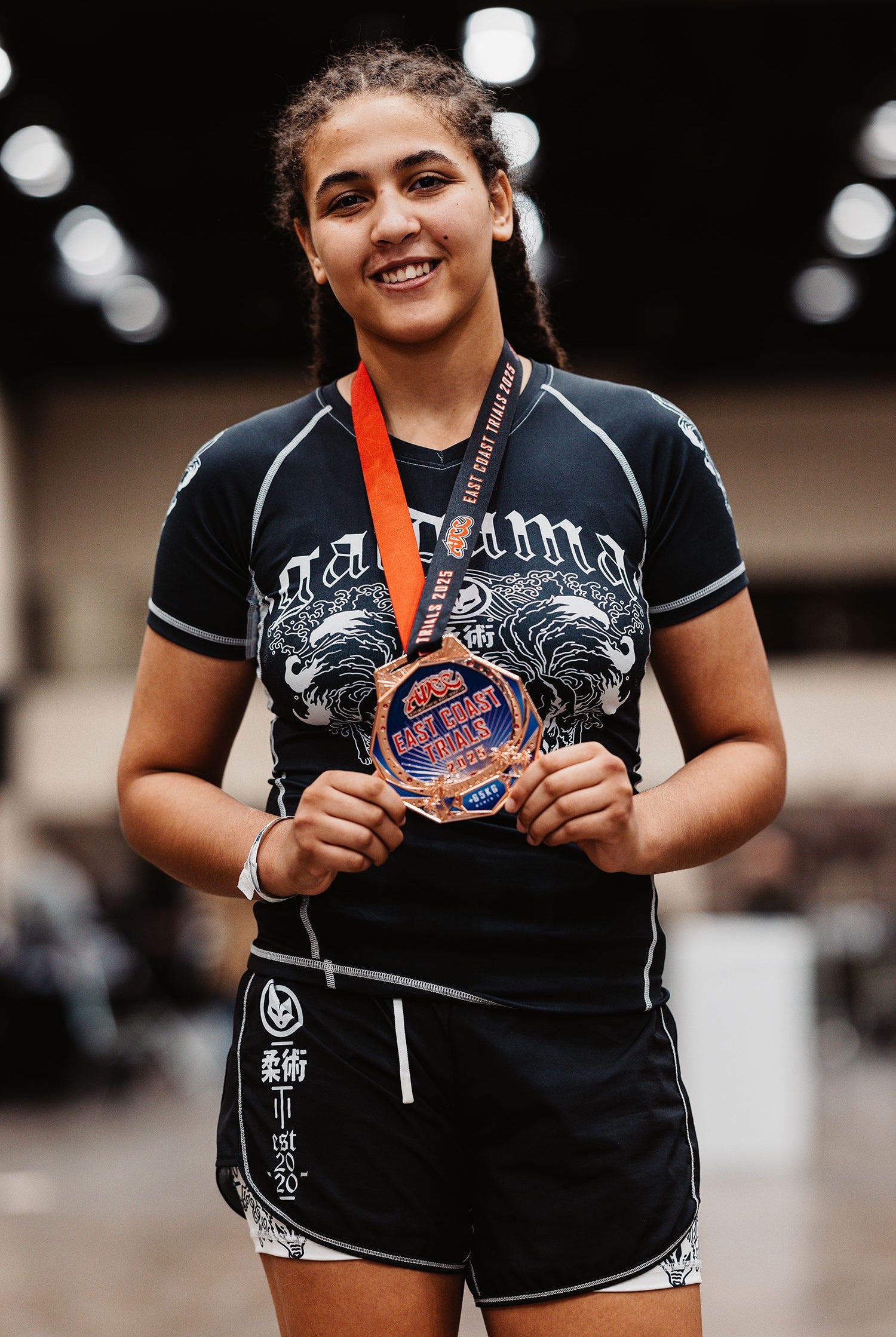Jiu-jitsu competition preparation may seem daunting to the uninitiated, but with the right strategies and mindset in place, you’ll be rolling like a pro on tournament day in no time.
Preparing for Your Inaugural BJJ Competition
If you’re new to the competitive grappling scene, preparing for your inaugural BJJ competition is a great way to learn the ins and outs of developing a game day strategy. This includes not only keeping your jiu-jitsu technique sharp, but also knowing the ruleset – ADCC competition preparation, for example, will look different in meaningful ways from traditional IBJJF competition preparation due to differences in scoring strategies and legal techniques. Your game day strategy will likely be heavily informed by what ruleset you’re competing under – so make sure you study!
Top IBJJF-Compliant Gear Recommendations
You also want to make sure that you’re compliant with simple things within your control, like uniform requirements. The IBJJF, arguably the preeminent organization for competitive jiu-jitsu, is notoriously stringent about dress code for both gi and no-gi athletes, so be sure to read their uniform guidelines. Essential items to pack for a BJJ tournament operating under the IBJJF circuit include both uniform-compliant gear and, if possible, a backup uniform – just in case your first choice doesn’t pass the dress code inspection. (Trust us, it’s happened!)
For peace of mind, when purchasing competition day gear, you can always check product descriptions on retailer sites for keywords like “IBJJF approved gear” or “IBJJF compliant apparel.” Here at Gaidama, we offer several lines of IBJJF approved gear, including both gi and no-gi options.
Check out our buying guide below to choose your uniform!
Your Gaidama IBJJF Compliant Apparel Guide
Competing in the gi? You’ll want to make sure you select a kimono in the correct colors and measurements. The IBJJF currently allows white, black, and royal blue gi in competition – no other colors are permissible. Fortunately, Gaidama BJJ gis are available in all three IBJJF-compliant uniform colors. As a bonus, our fan favorite Perfect Fit gi allows customizable mix-and-match options for tops and bottoms, so you can select the best fit for your own unique proportions!
Are you more of a no-gi athlete? Fear not; Gaidama jiu-jitsu gear has you covered too. Our vast collection of ranked Gaidama competition rashguards can be easily mixed and matched with Gaidama grappling shorts in IBJJF approved gear colors.
For our minimalists, we offer our famous Avant Garde ranked rashguards in both short and long-sleeve options. If you’re looking for a bit more pizzazz, we are proud to offer the beautiful Cyberverse ranked gear line, which debuted this year at IBJJF No-Gi Pans. For a full selection of ranked rashguard options, check out the Ranked Gear section of our apparel site.
As for bottoms, we offer your choice of full coverage in simple, elegant black Avant Garde spats – or several inseam length options for premium board shorts, also in IBJJF-approved black. As a bonus, if you want a full matching Cyberverse set, we offer the same board shorts in a beautiful – and more importantly, IBJJF compliant – Cyberverse print to match your Cyberverse ranked rashguard.
Balancing Your Jiu-Jitsu Training With Strength & Conditioning
Outside of purchasing the correct uniform – and locking down your jiu-jitsu, on both a technical and gamesmanship-based level – you’ll also want to keep nutrition, strength, and conditioning on point. If we liken pure jiu-jitsu ability to say, skill with a particular weapon, we can liken the human body to the weapon itself. You might be the best swordsman in the world, but if your blade is dull, you won’t get very far. When you’re working out in the weight room or doing mobility exercises, you’re sharpening that blade.
Conversely, if you have the most well-crafted sword in the world, but terrible sword skills, you also probably won’t get far. You’ll need mat time that includes both repetitive drilling sessions and tough live rounds against skillful training partners to make sure that you know how to intelligently implement all that strength and agility you’re developing!
Weight Cutting for Jiu-Jitsu and the Importance of Nutrition
Picking the correct weight class for competition can be tricky. Being big and strong for your division is a good thing – but not at the cost of your long term health. As such, it’s important to understand the advantages and disadvantages of cutting weight.
What Does Weight Cutting for Jiu-Jitsu Involve?
According to Gaidama’s very own kinesiology and nutrition specialist Jordan Patrick, when cutting weight to compete in jiu-jitsu, it’s important to understand that there are two different types of weight loss: dieting down, which entails losing body fat, and a water cut, which entails losing water weight.
“Usually, the goal with body fat loss is getting the weight loss and keeping it off,” explains Patrick. “With the water cut, you will be re-gaining the weight back after you rehydrate.”
Effective Weight-Cutting Techniques for Jiu-Jitsu Competitors
The window of time for recovering from a water cut will vary depending on your ruleset. In the IBJJF, you’ll only have about ten to fifteen minutes, since you weigh in right before you enter the bullpen – which means a water cut should be minimal.
“The best strategy is diet-ing down and focusing on body fat loss several weeks out instead of a water cut,” advises Patrick. “With what water you do have to cut, try to keep it as minimal as possible due to the fact that you will have only twenty-ish minutes to rehydrate before you compete!”
In the ADCC – the other big tournament circuit in competitive jiu-jitsu – you’ll typically have the option to weigh in the night before you compete.
“For the ADCC or other night-before weigh-ins, I still recommend dieting down and losing as much body fat as possible before starting the water cut,” Patrick is quick to emphasize.
“The water cut process starts ten days out. It begins with a water load, then five days out, you will keep water intake the same, but reduce overall calorie intake by about twenty percent, while keeping protein intake the same. Then, three days out, you will cut out complex/starchy carbs and added salts, add diuretic teas [which are legal in USADA], then one day out, you begin the rest of the cut using bath, sauna, wrap method, while monitoring your blood pressure to make sure you aren’t putting your health at risk.”
Patrick is careful to remind us here that water cutting should not be attempted without consultation with a trusted professional. “Water cutting is dangerous,” she points out, and further advises, “You should hire a certified coach to help you and understand the risks involved before you start.”
Remember: bad water cuts have previously led to poor health outcomes – or even death, in extreme cases – for athletes. No gold medal is worth risking your life or well-being.
Long Term Health Concerns and Post-Competition Recovery for Jiu-Jitsu Athletes
While as athletes, we tend to focus on pre-tournament preparation, it’s equally important to understand your body’s recovery needs after exerting yourself in a tournament, especially if you intend to compete – and cut weight – frequently. You’ll want to refuel and replenish your body with appropriate nutrients and plenty of water, especially if you’ve undergone the dehydration involved in a water cut specifically.
It’s worth noting that women, in particular, may experience higher levels of sensitivity to the weight cut process, and may experience more difficulty recovering. “In my coaching practice for weight cutting specifically, it is much harder on the female body and hormones to cut weight,” observes Jordan Patrick. “In my opinion, I believe it is more dangerous for women, long term, to do hard cuts over and over again. Cutting ten pounds for a man might be relatively easy, but for a woman it will be much harder. Because of this, I always encourage my female clients to diet down as much as possible before cutting the rest of the weight with water.”
At the end of the day, regardless of gender, Patrick believes that data-driven practices for managing body composition and weight cuts should be paramount. “If I could eliminate one major misconception about body [recomposition and weight cutting] from the public imagination it would be this: [the importance of using] data,” she emphasizes.
“You need to find what your maintenance calories are, so that you can find what a deficit [intake for fat loss] would be. Stop winging it, and don’t ignorantly assume it will be easy. You need to plan. Use data to drive your decisions instead of feelings.”
Intelligent use of data, ultimately, will both maximize the ease of cuts throughout a long competition season, and correspondingly, the safety and health of the athlete.
Mental Strategies for Jiu-Jitsu Tournaments
One of the most important – and frequently overlooked – aspects of preparing for your inaugural BJJ competition (and every competition after that!) is developing strategies to remain calm during jiu-jitsu matches. Managing competition anxiety in BJJ can be challenging even for the most seasoned of competitors. Here are a few basic tips and tricks to make sure your own nerves don’t spoil the experience for you:
-
Lock down a tried-and-true competition day routine for BJJ. This should include a light but energizing meal, and a good warmup. Make sure you arrive at the venue with plenty of time to weigh in and get warmed up, so you’re not stressed about making your match on time!
-
Get in plenty of training before the big day. While you don’t want to overtrain, dialing in on the aspects of your game that work well against heavy resistance will train your muscle memory and provide you with the confidence you need for managing competition anxiety in BJJ.
-
Compete as often as you can. The more you normalize competition, the less scary it’ll seem, and the better your body will adapt to the adrenaline dump before a tournament.
Most importantly, remember to have fun. Anxiety and excitement are often two sides of the same coin. If you’re feeling nervous, try telling yourself that you’re actually just excited to be putting yourself out there, and remember how lucky you are to be doing what you love.

